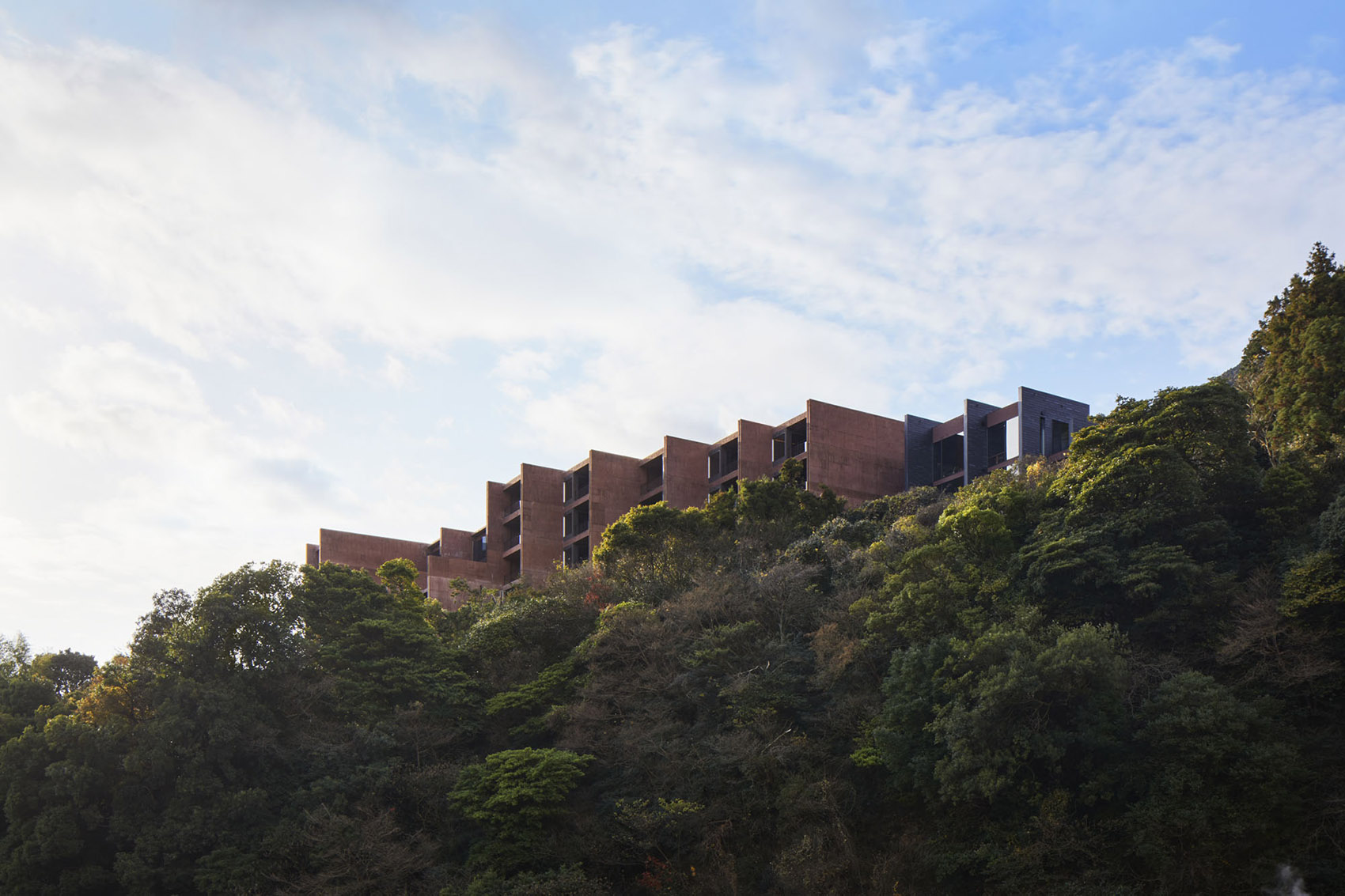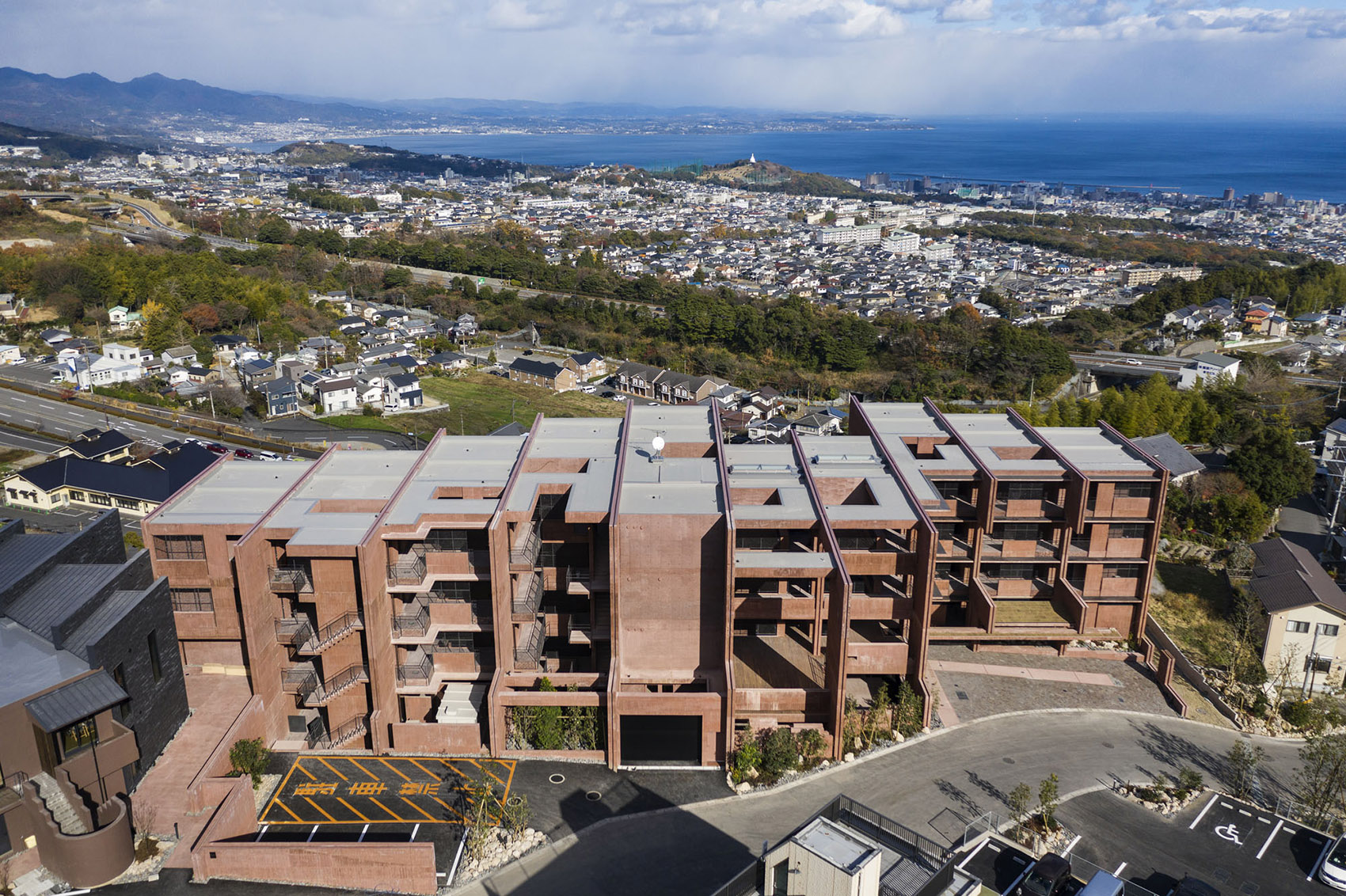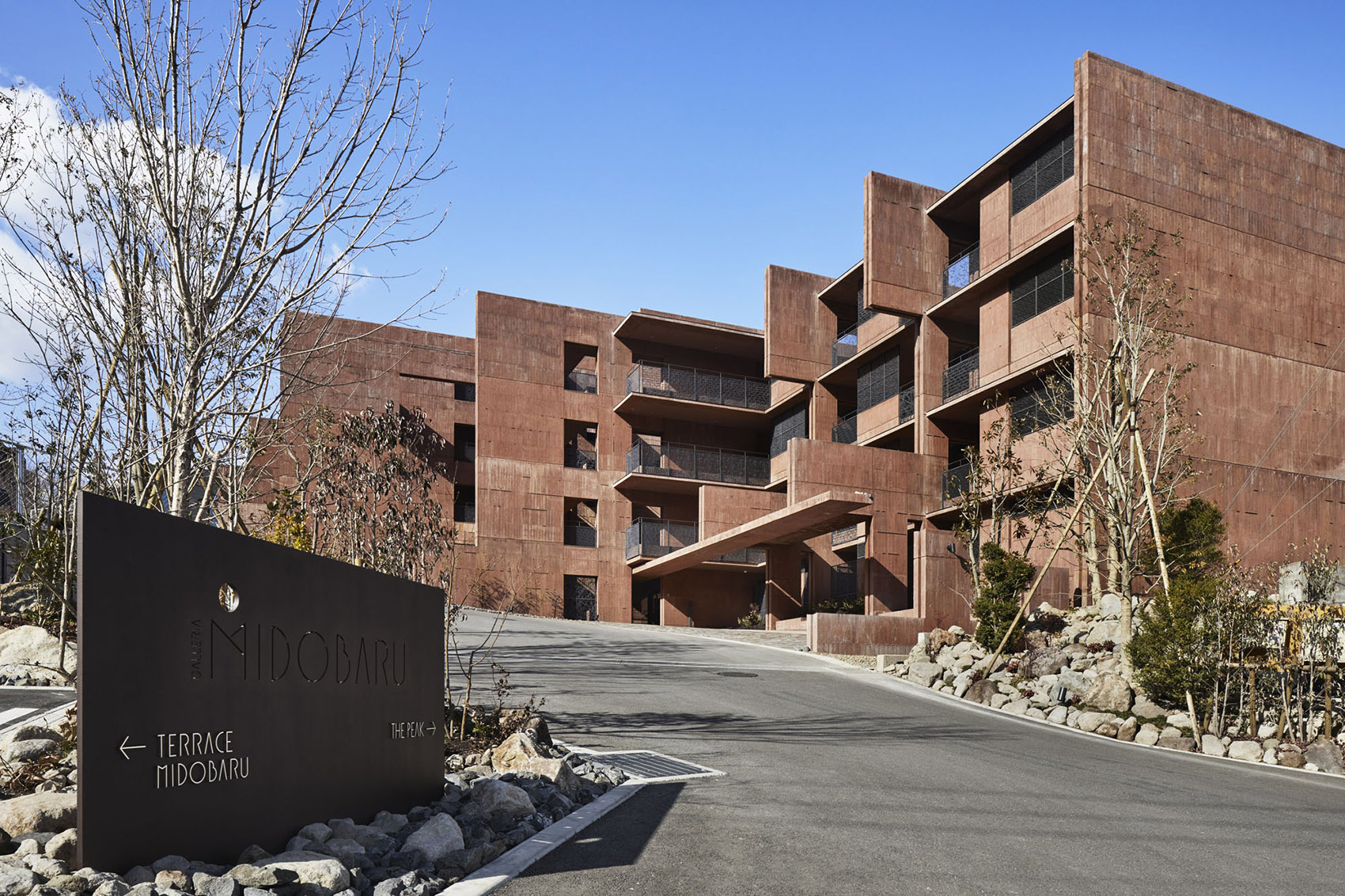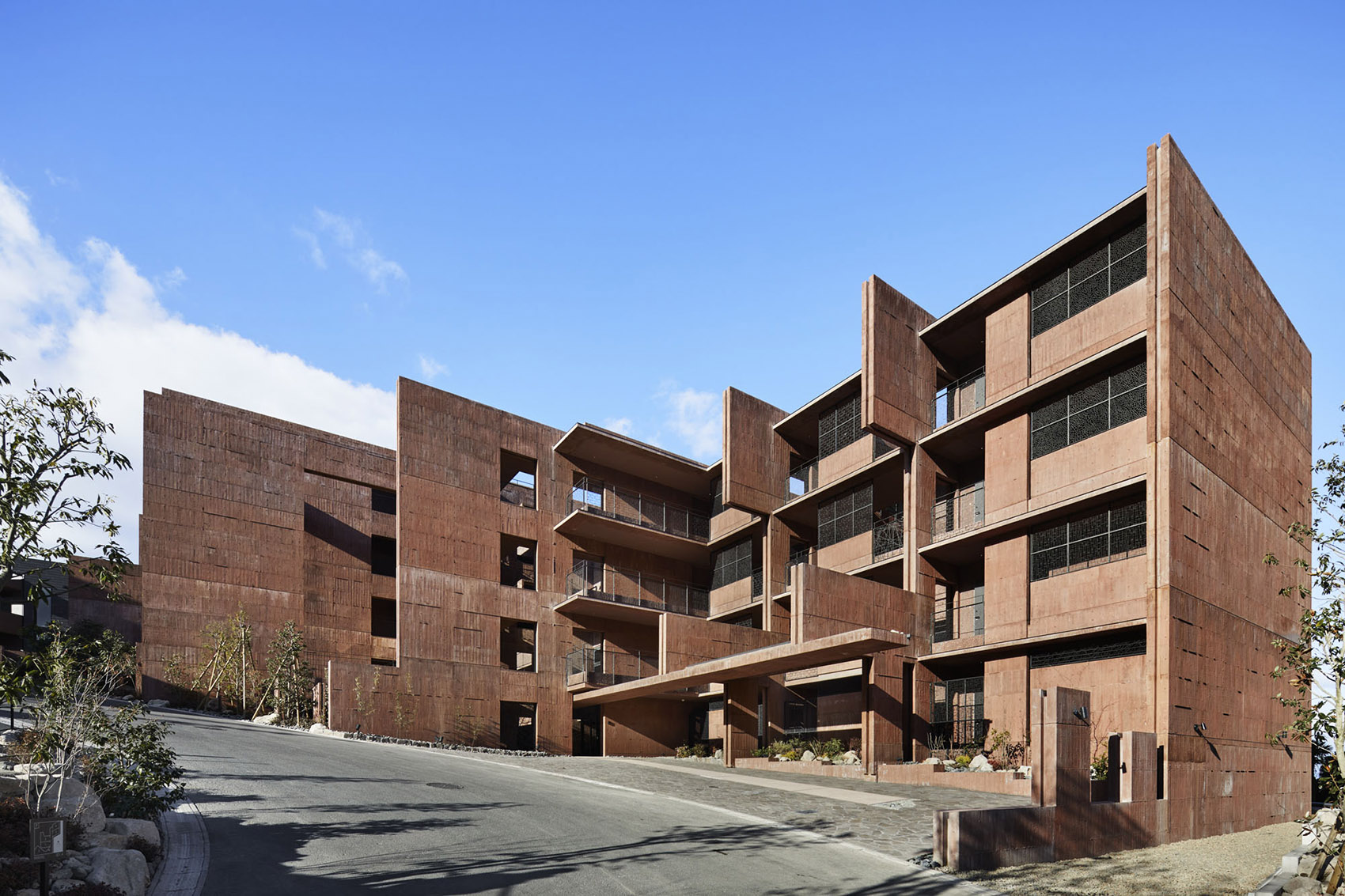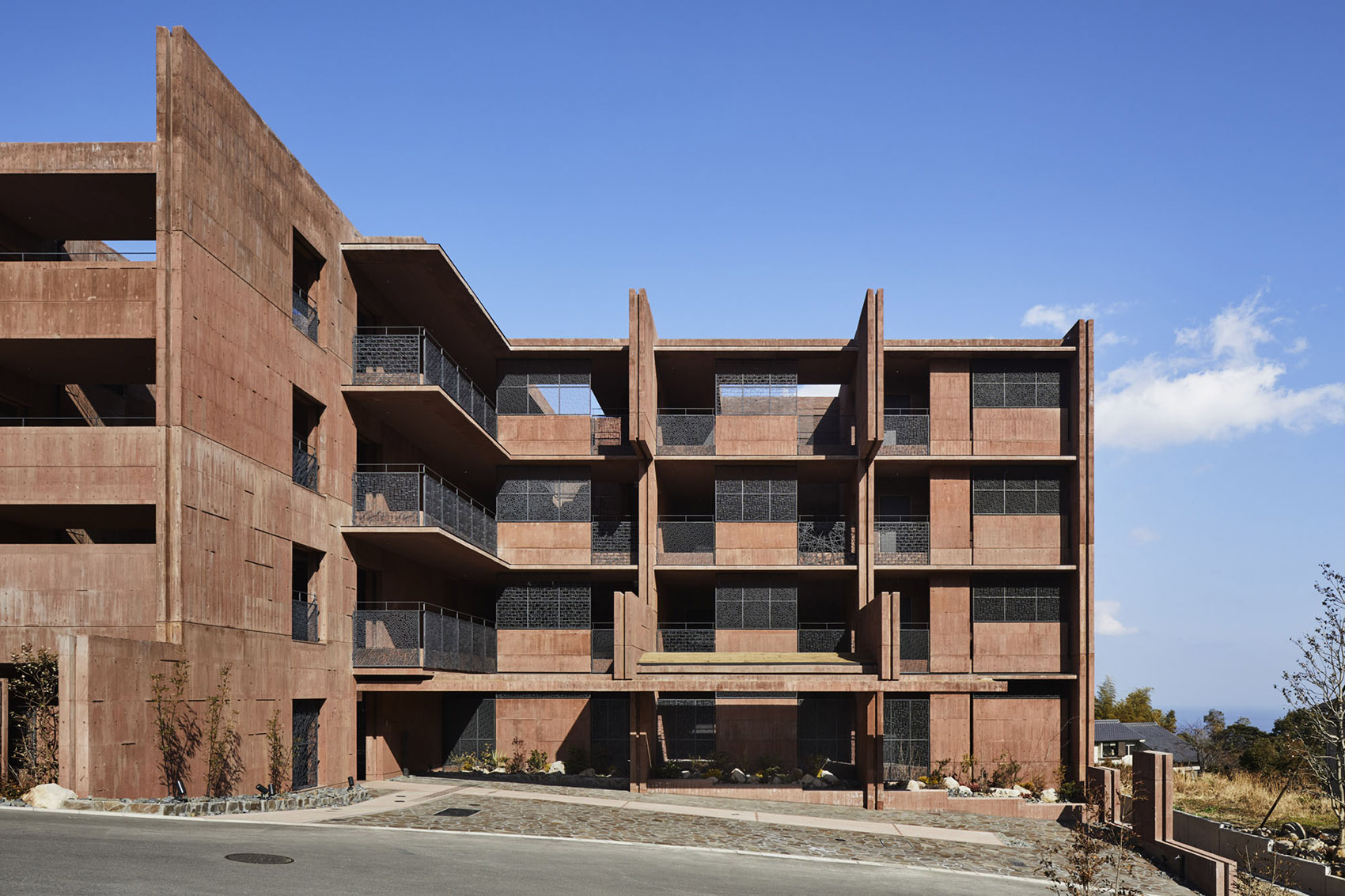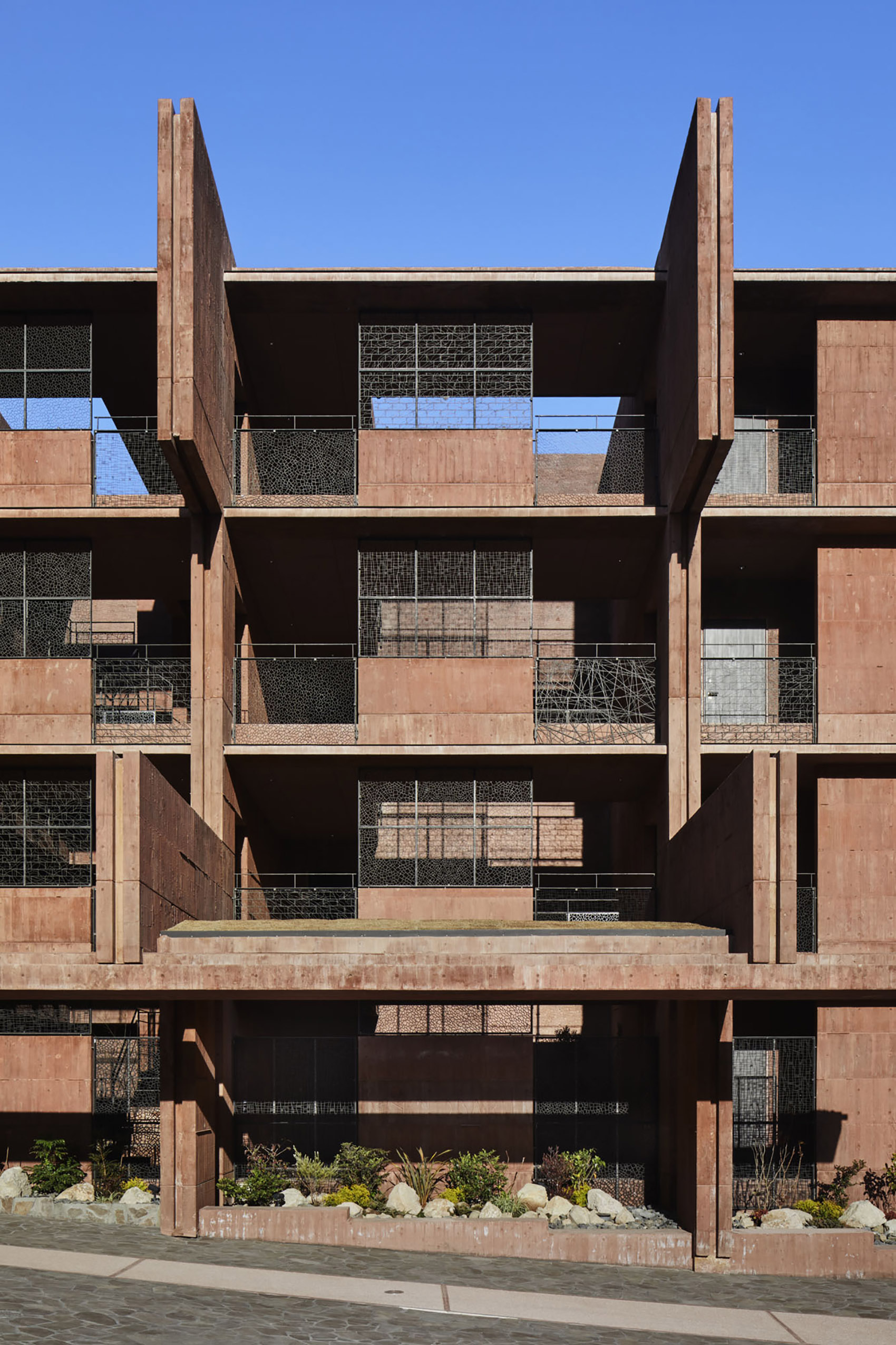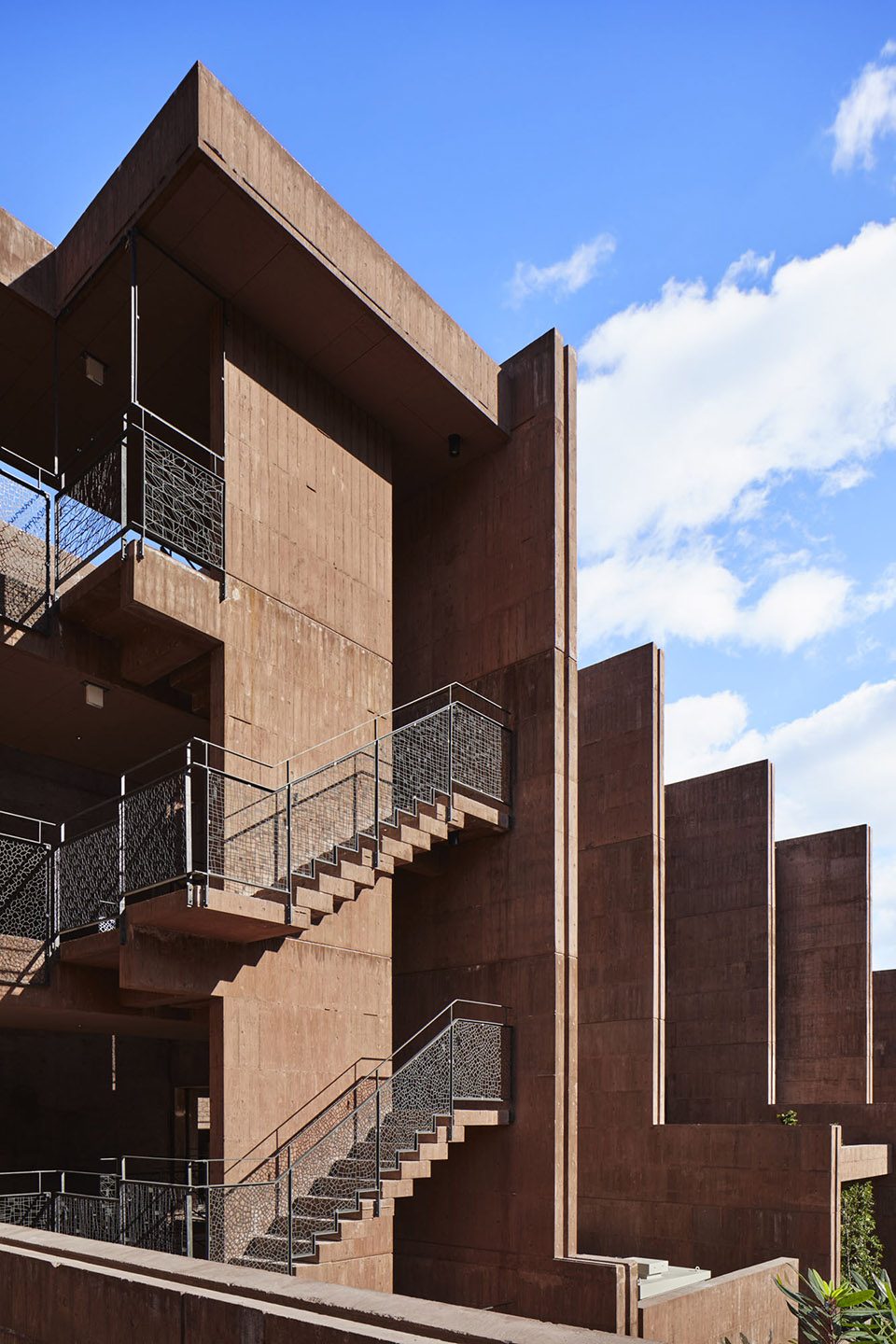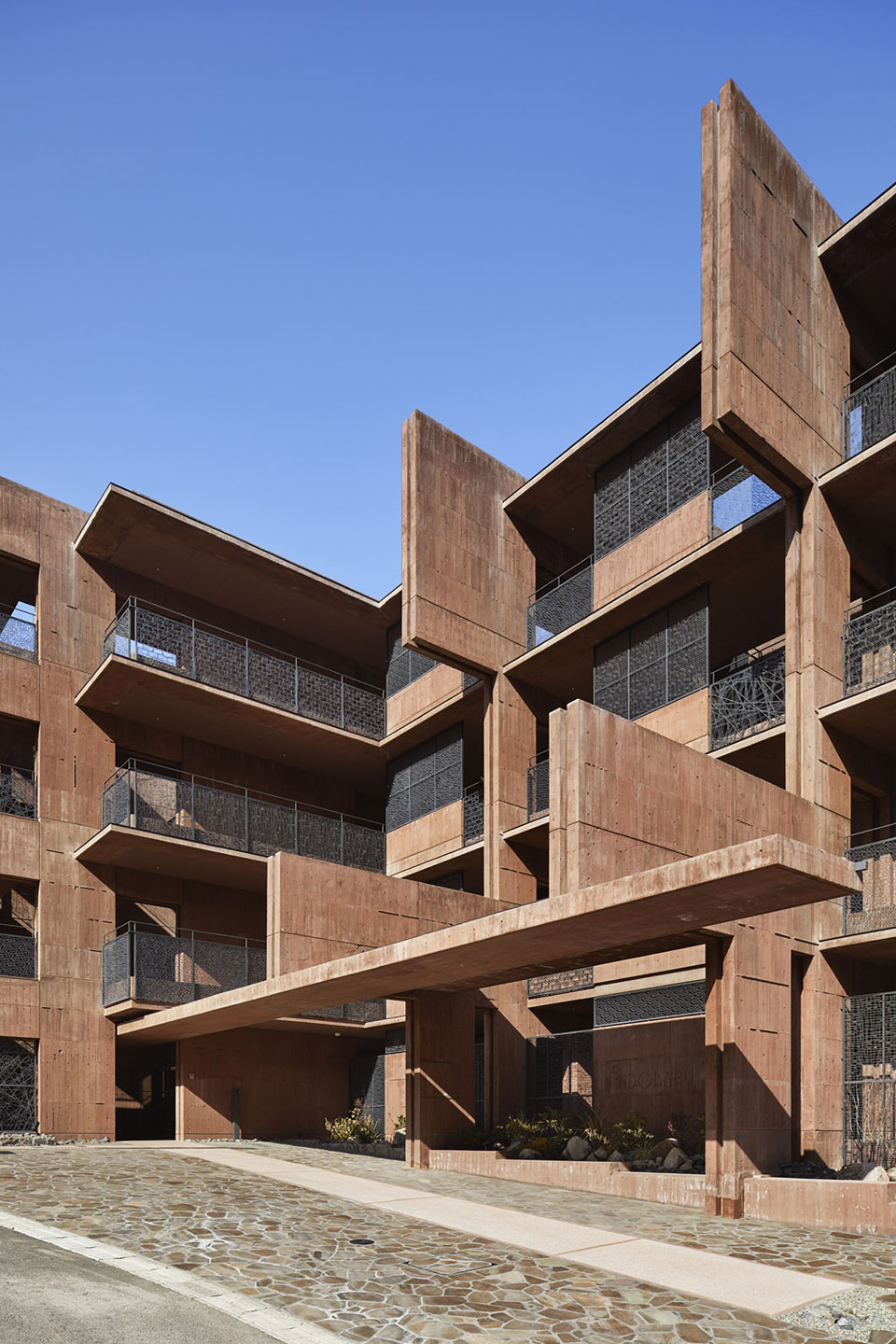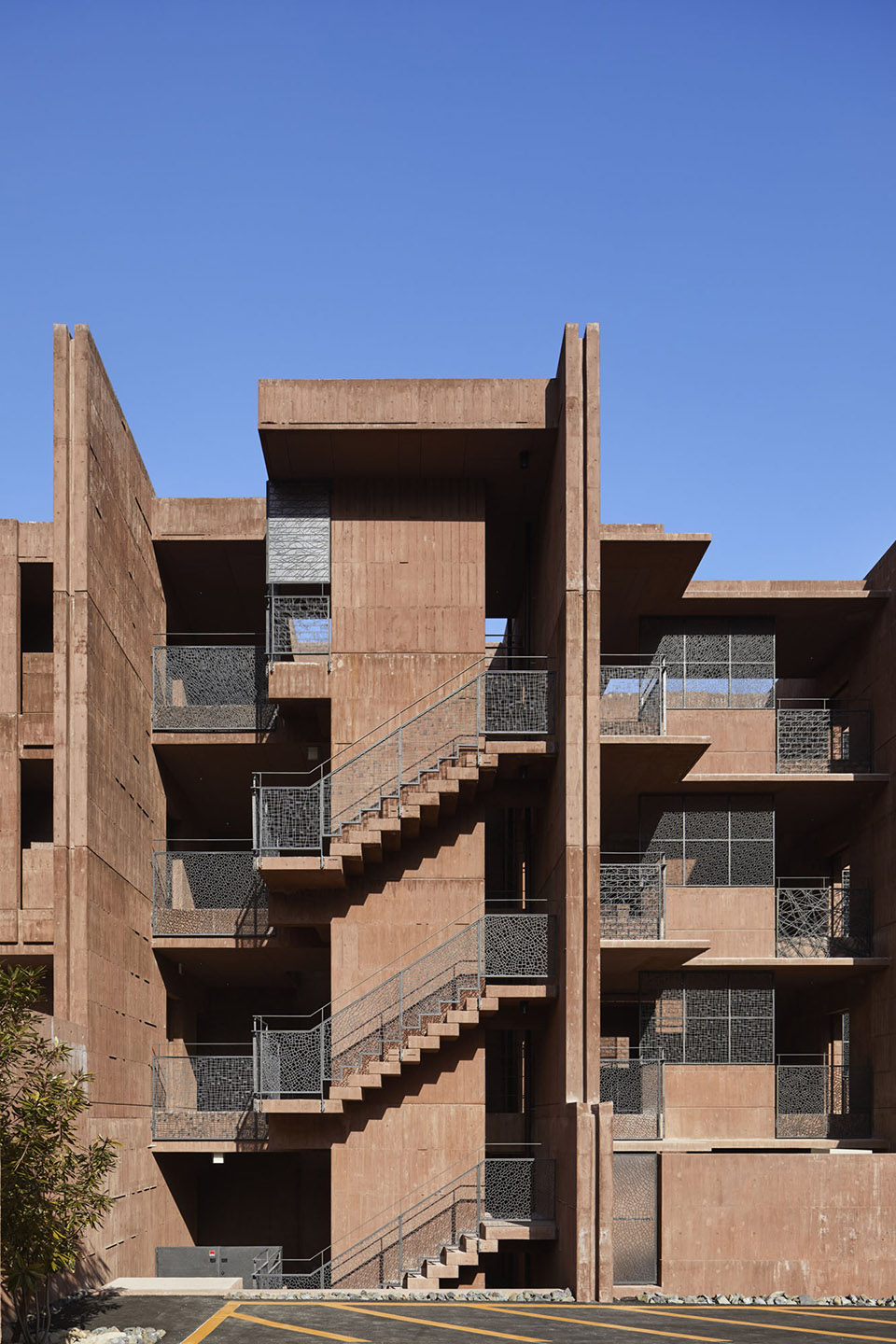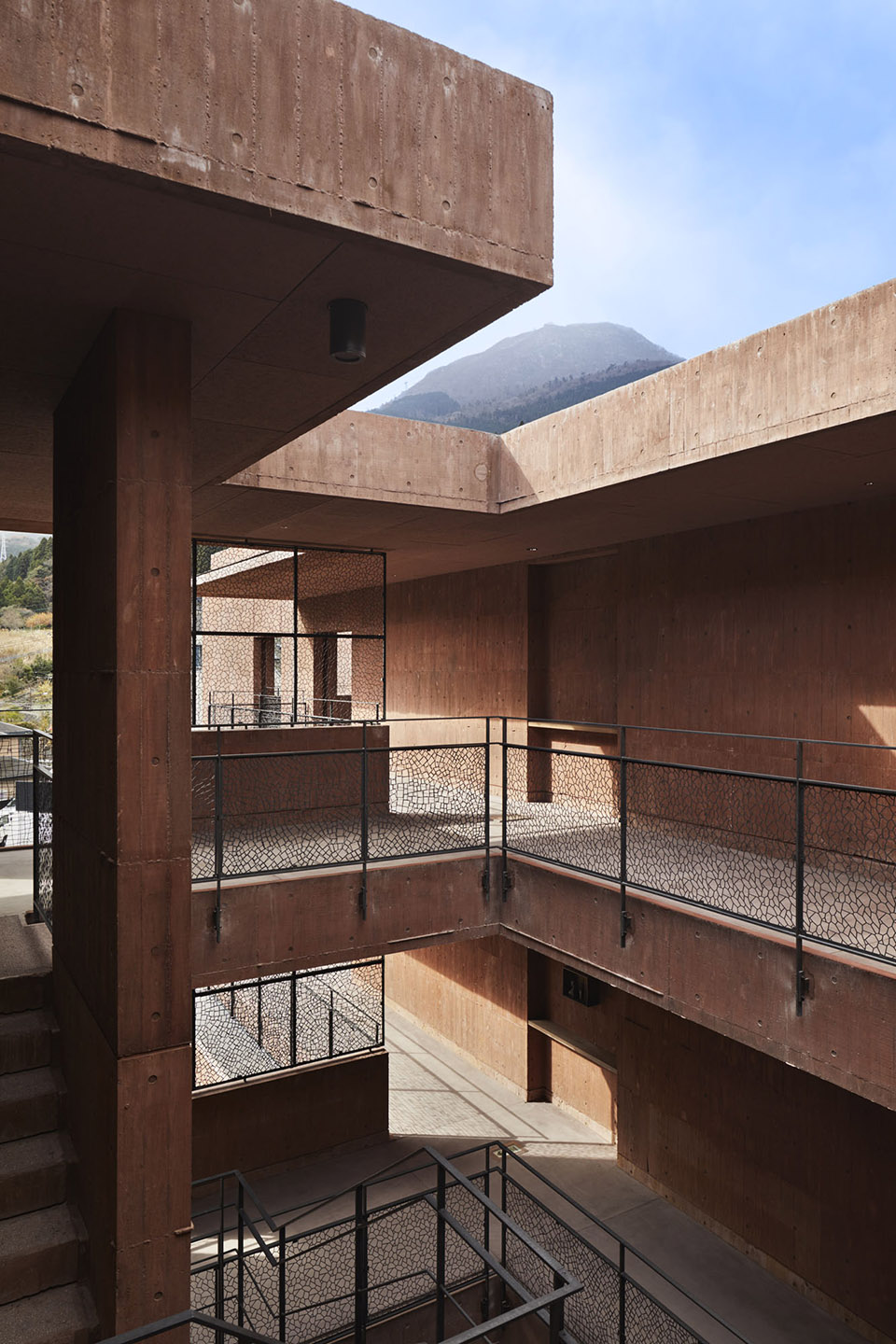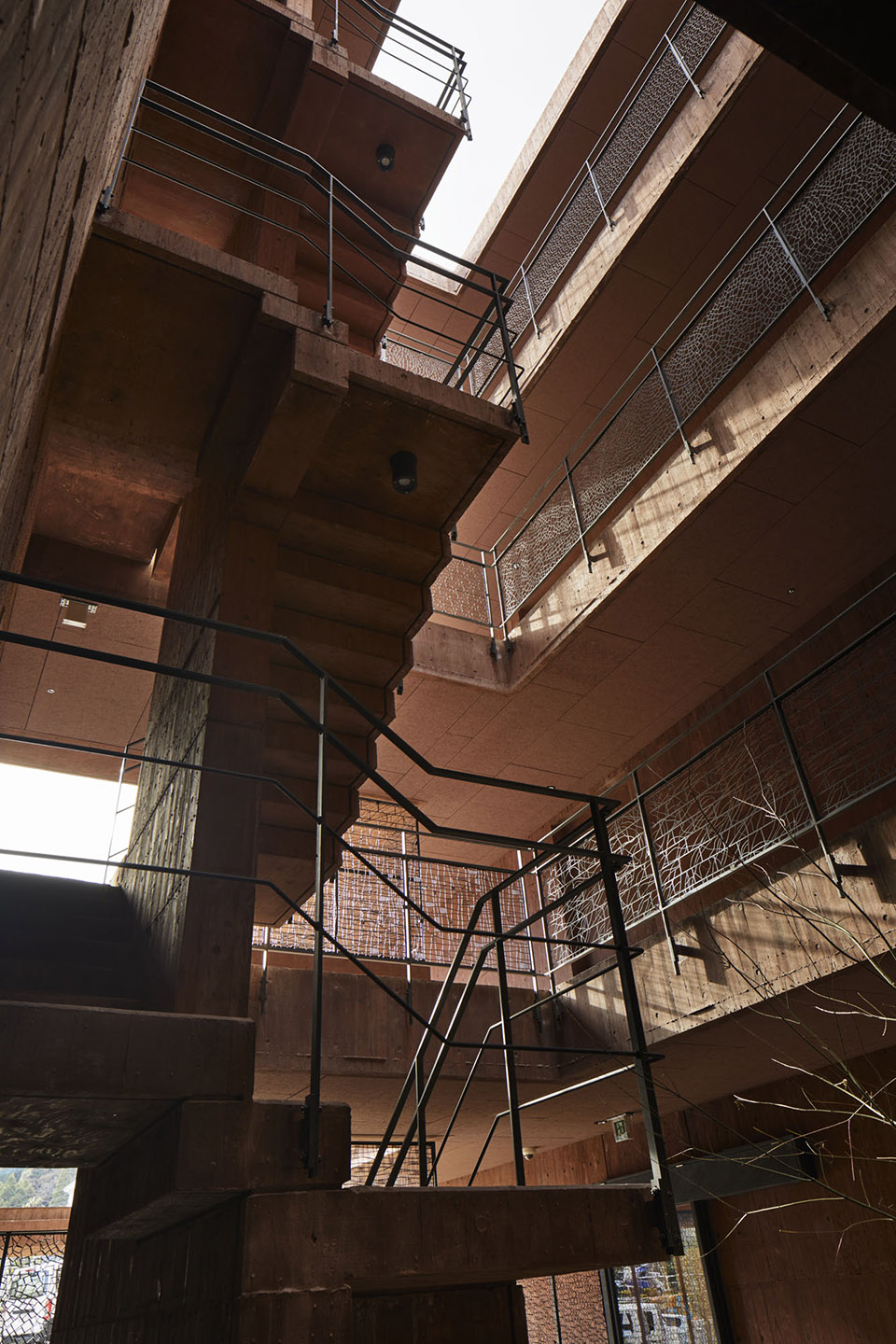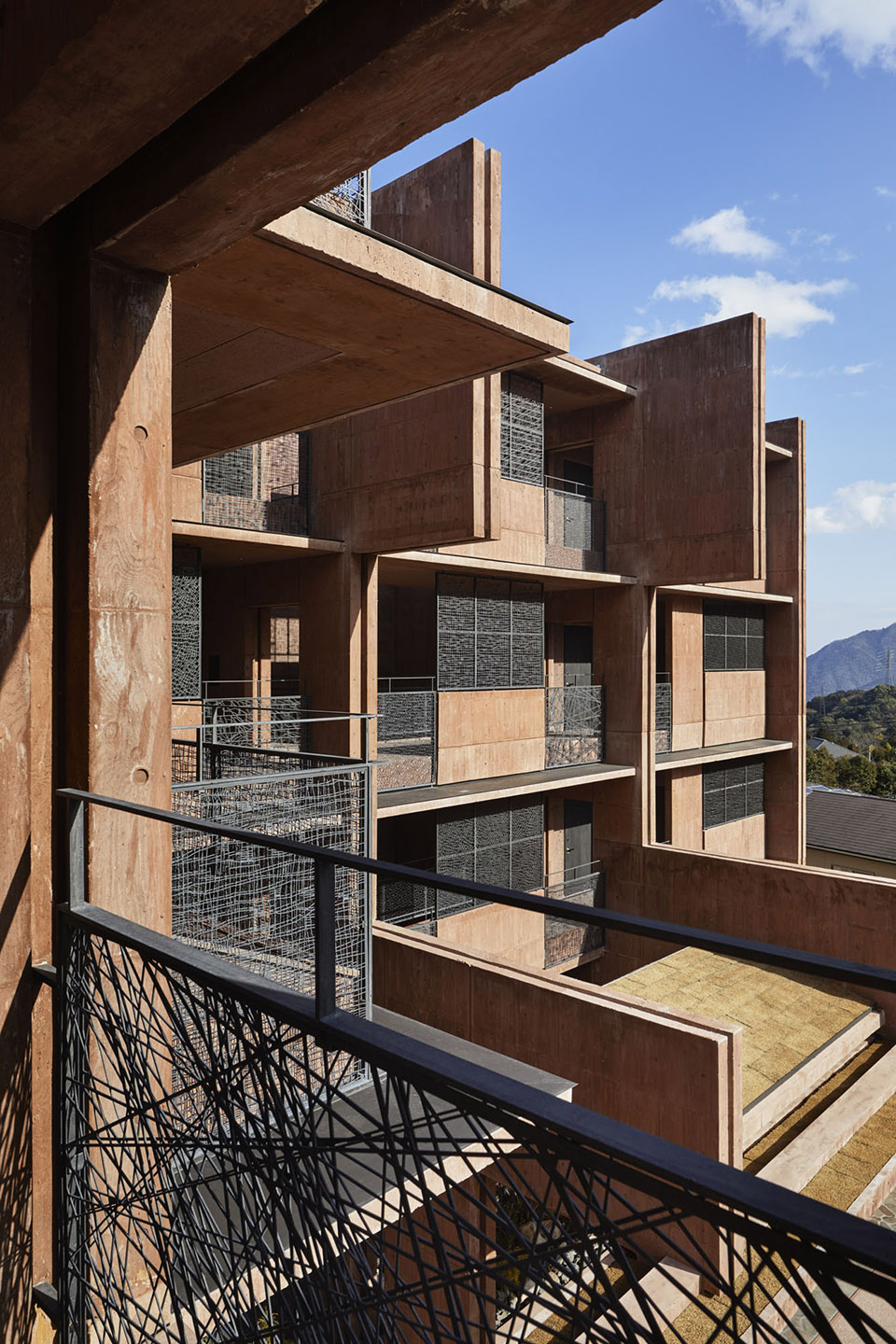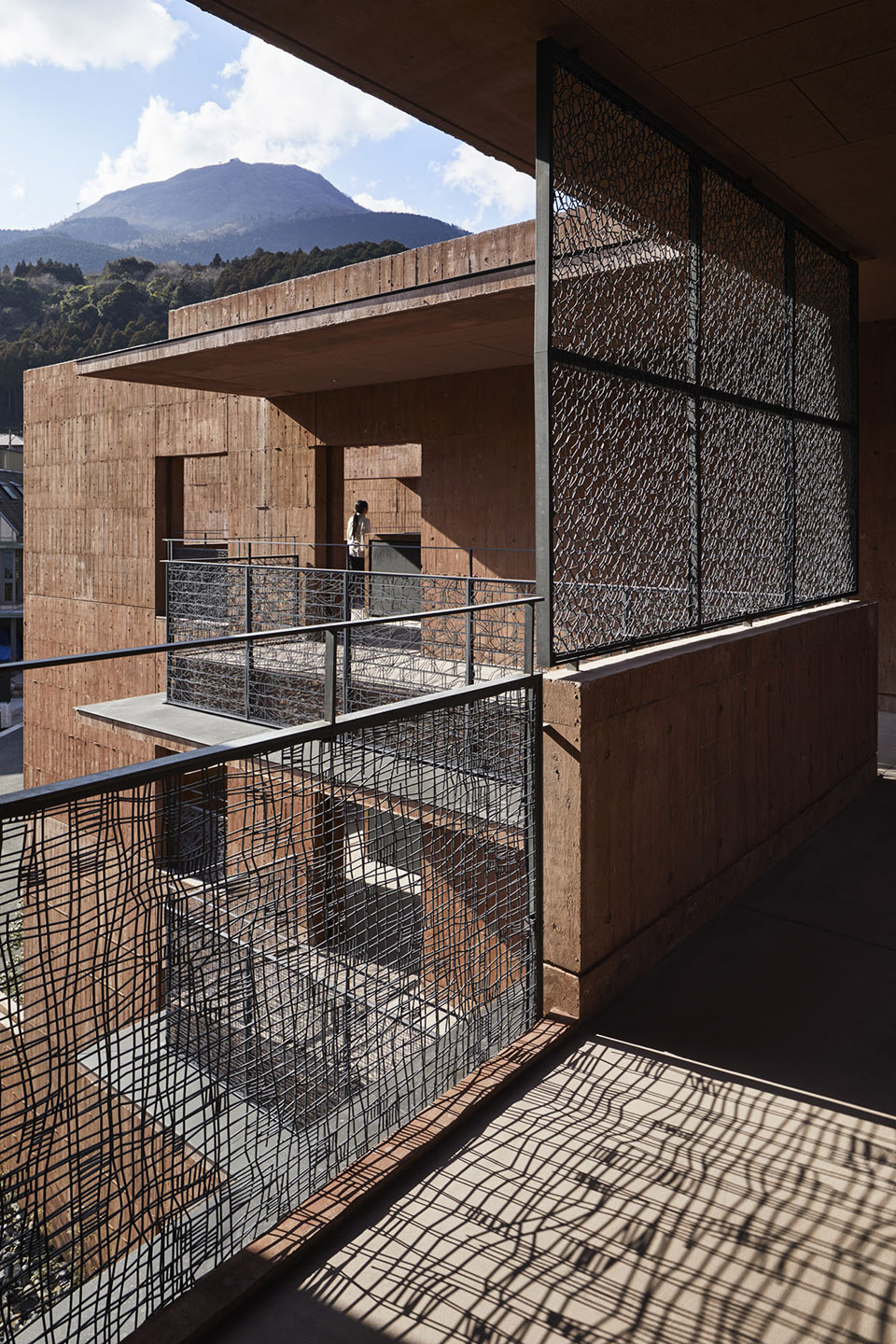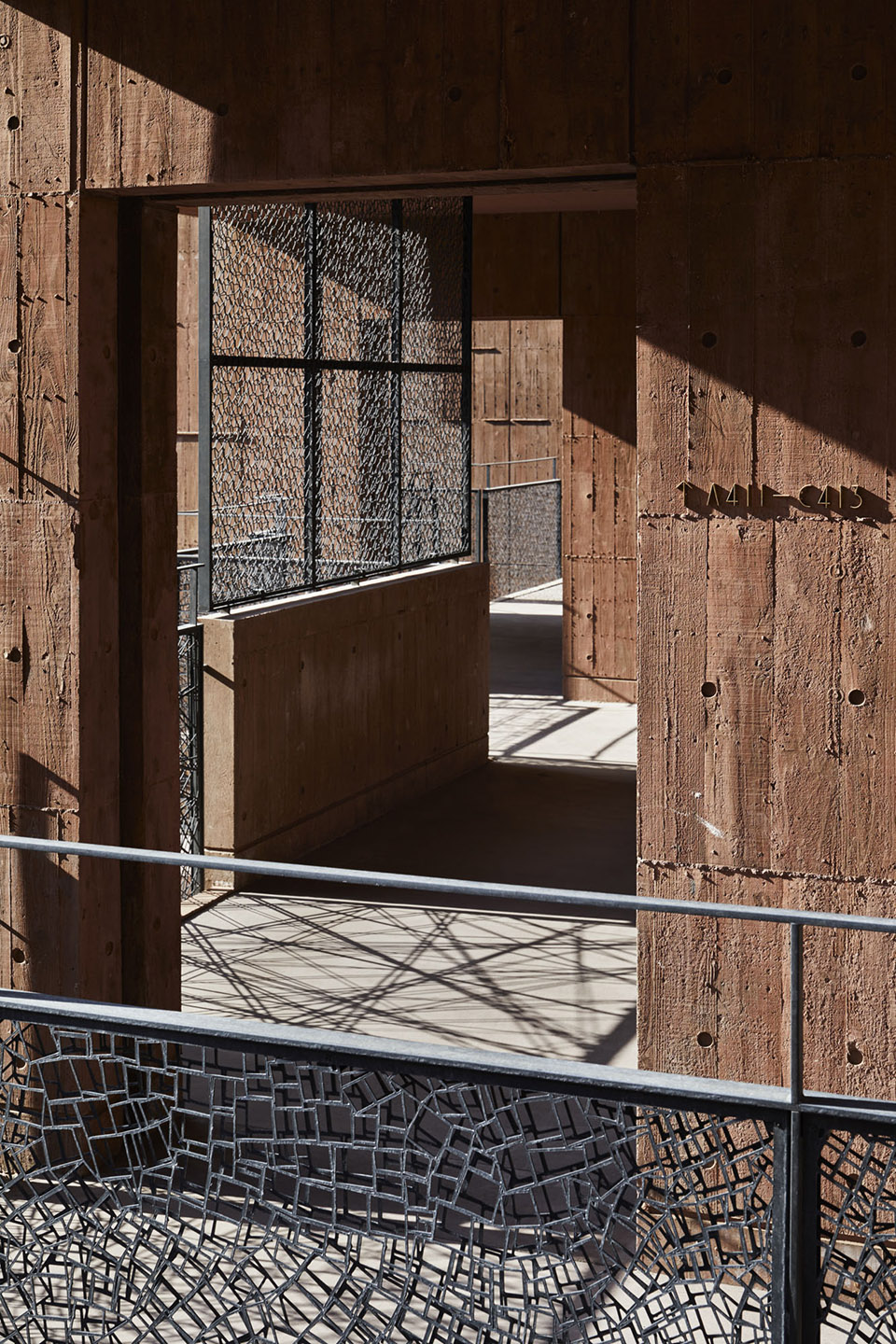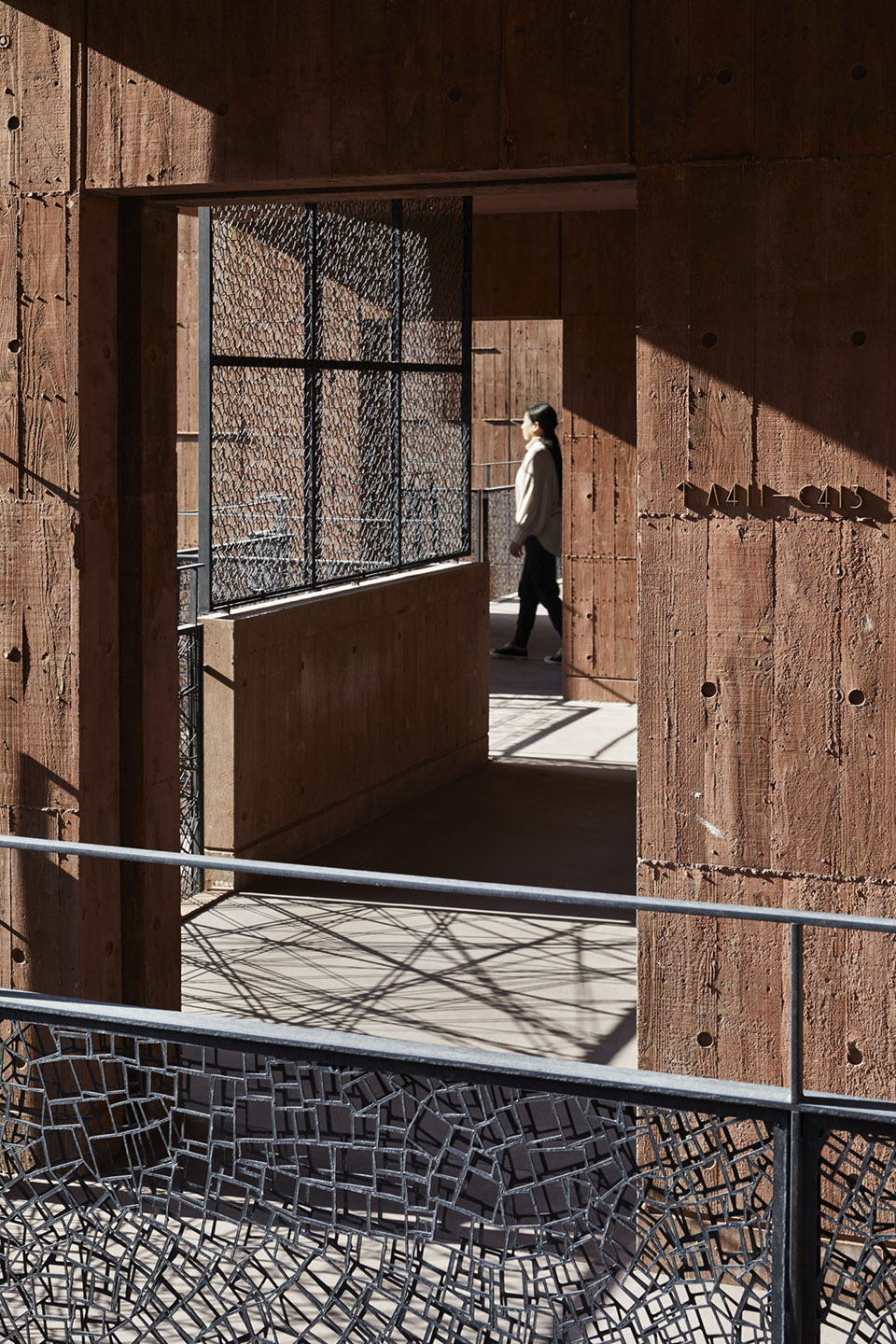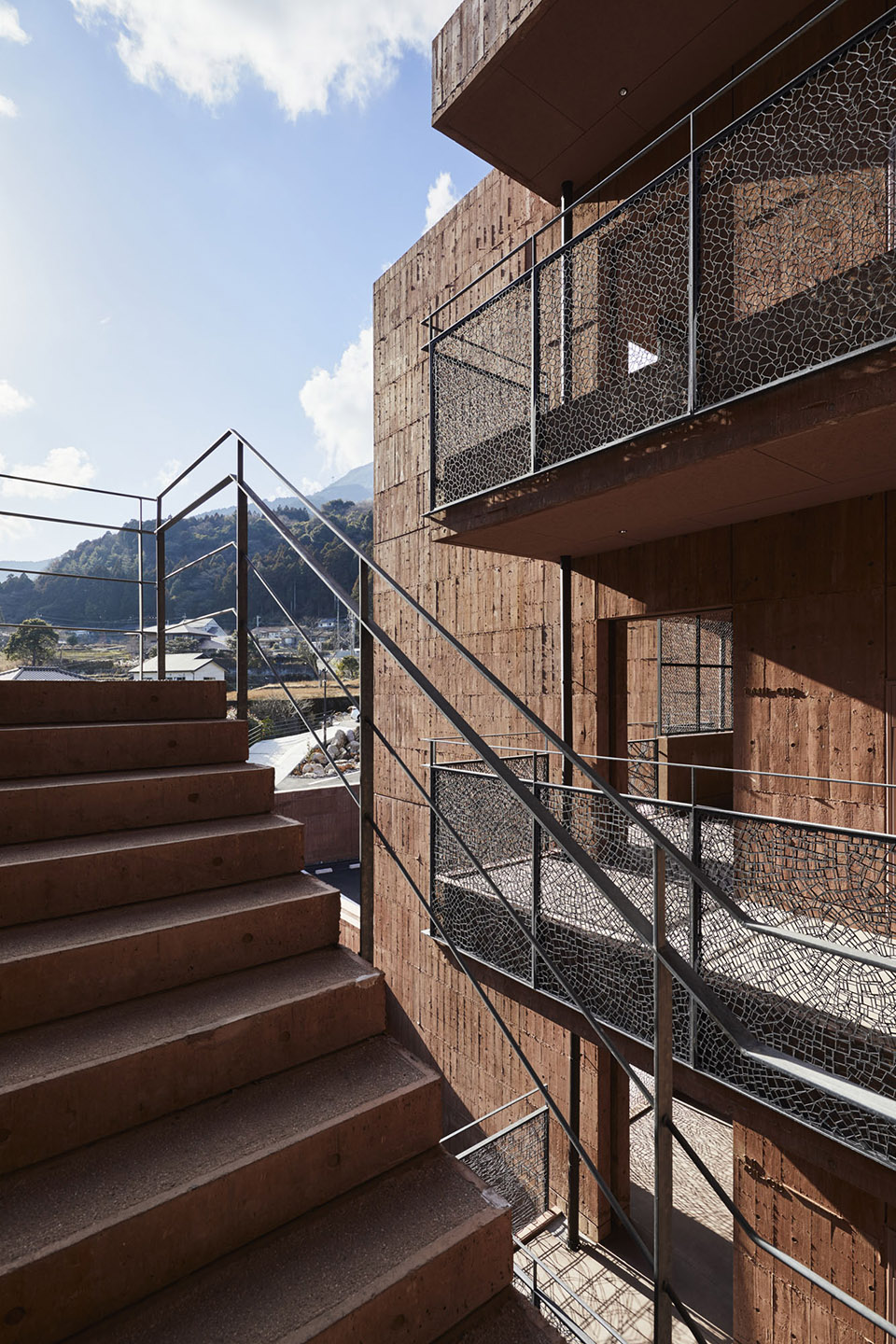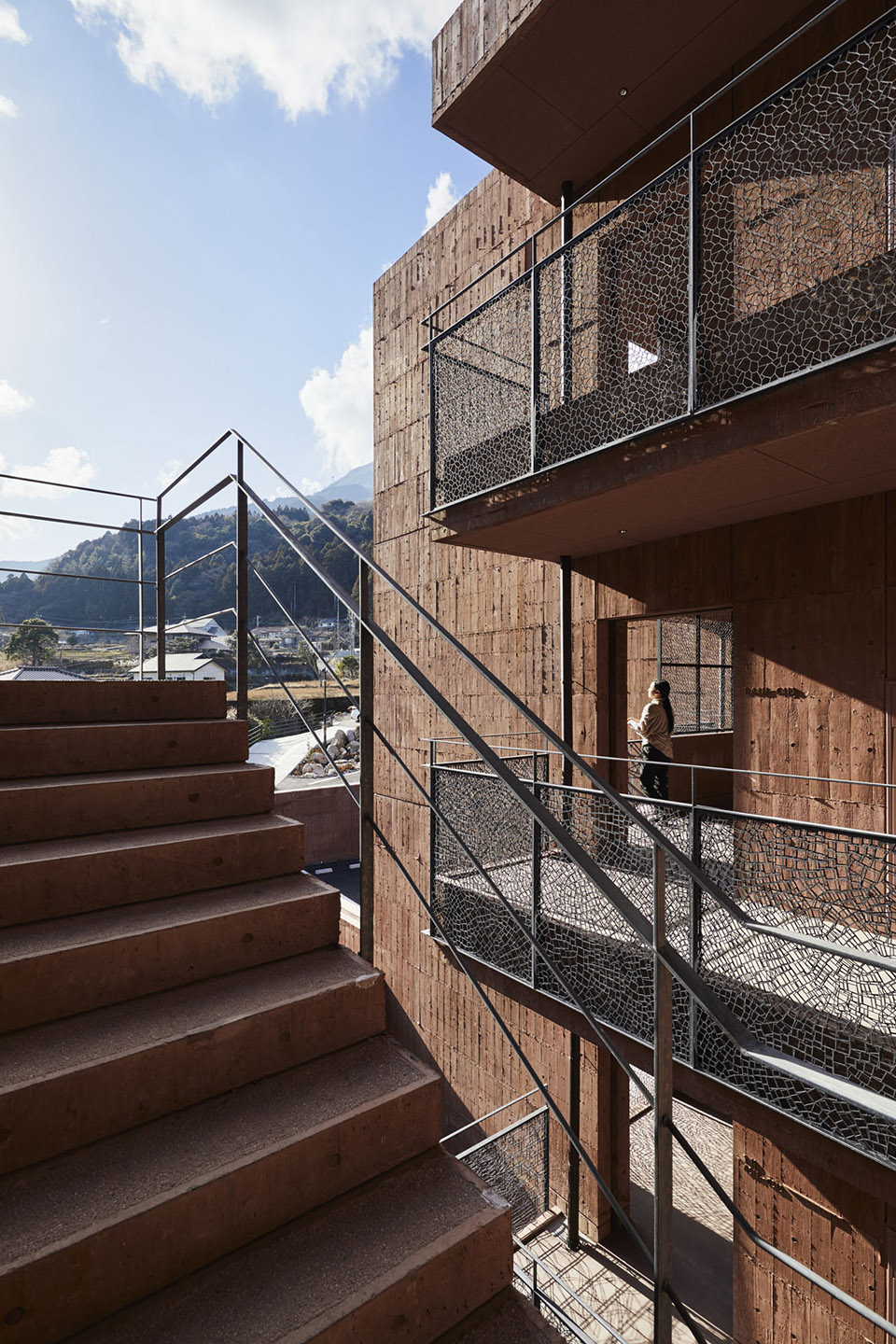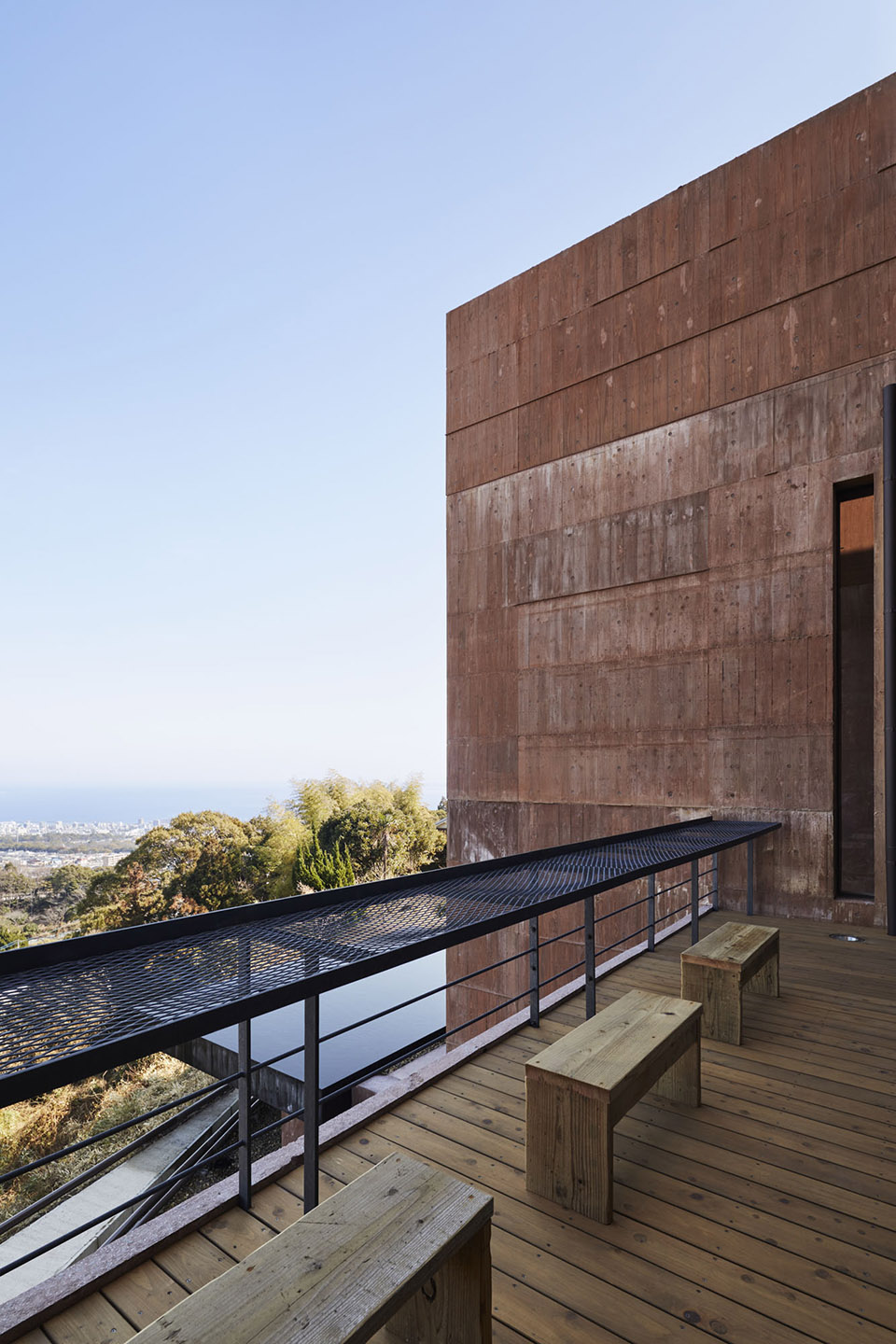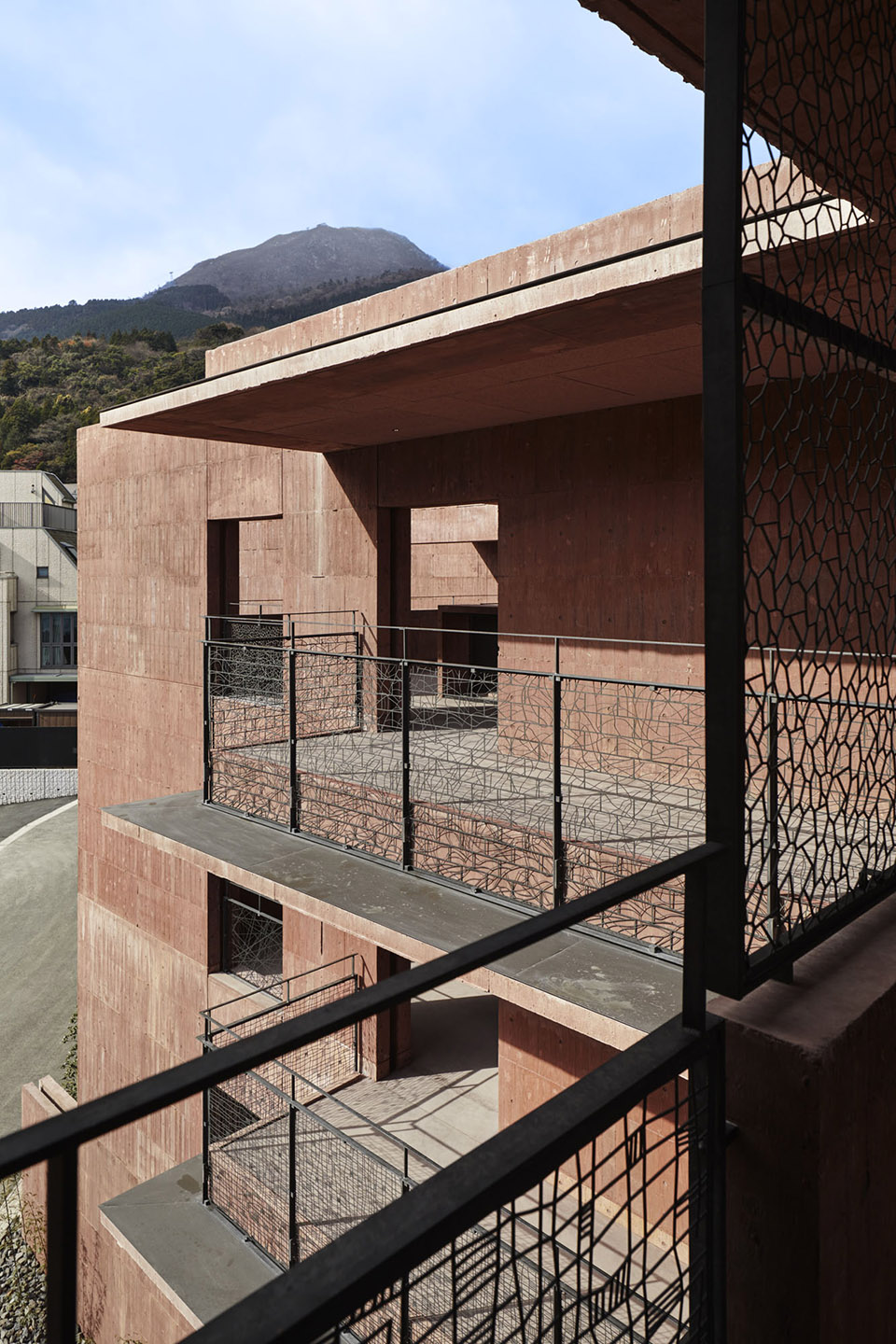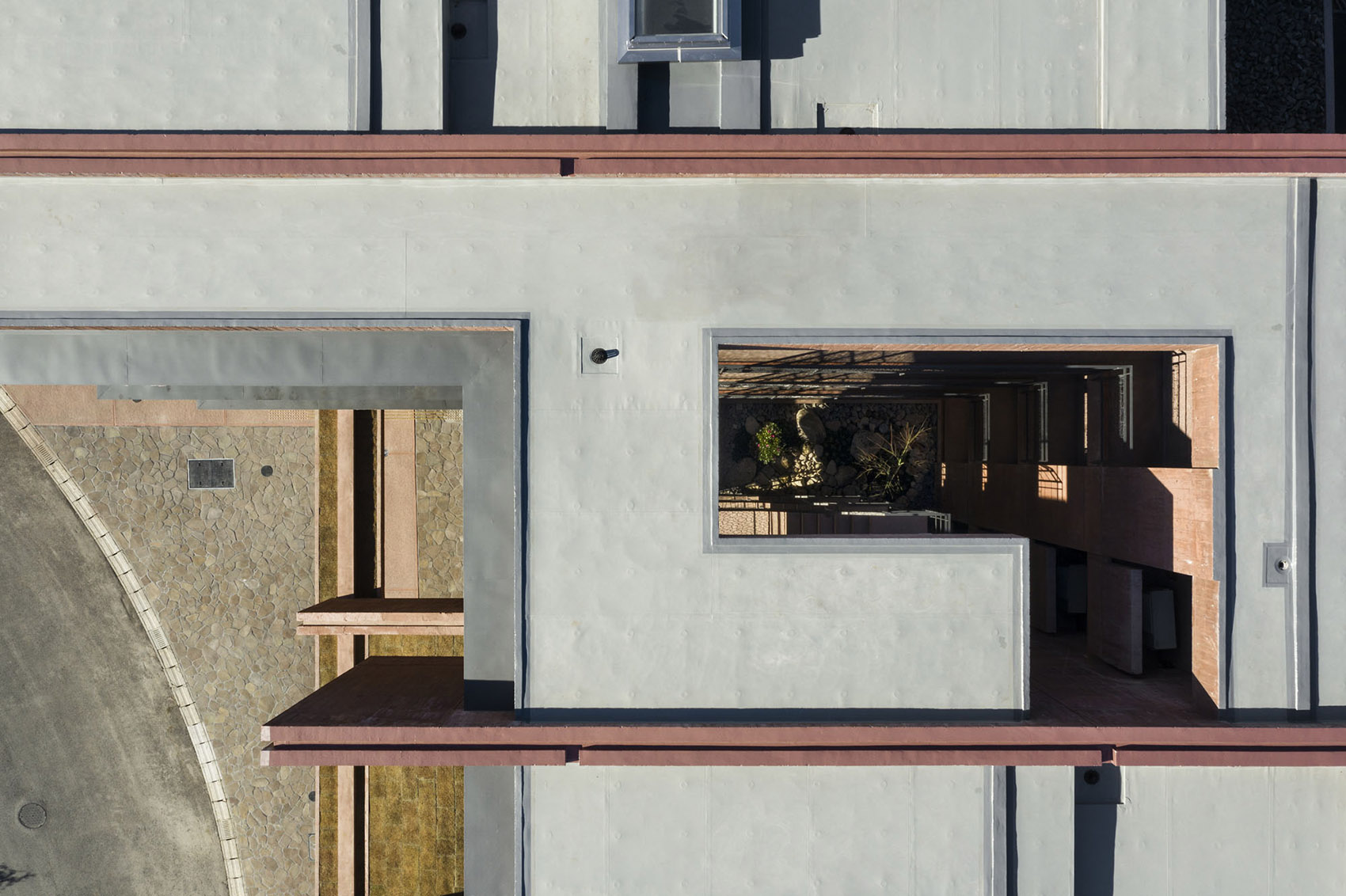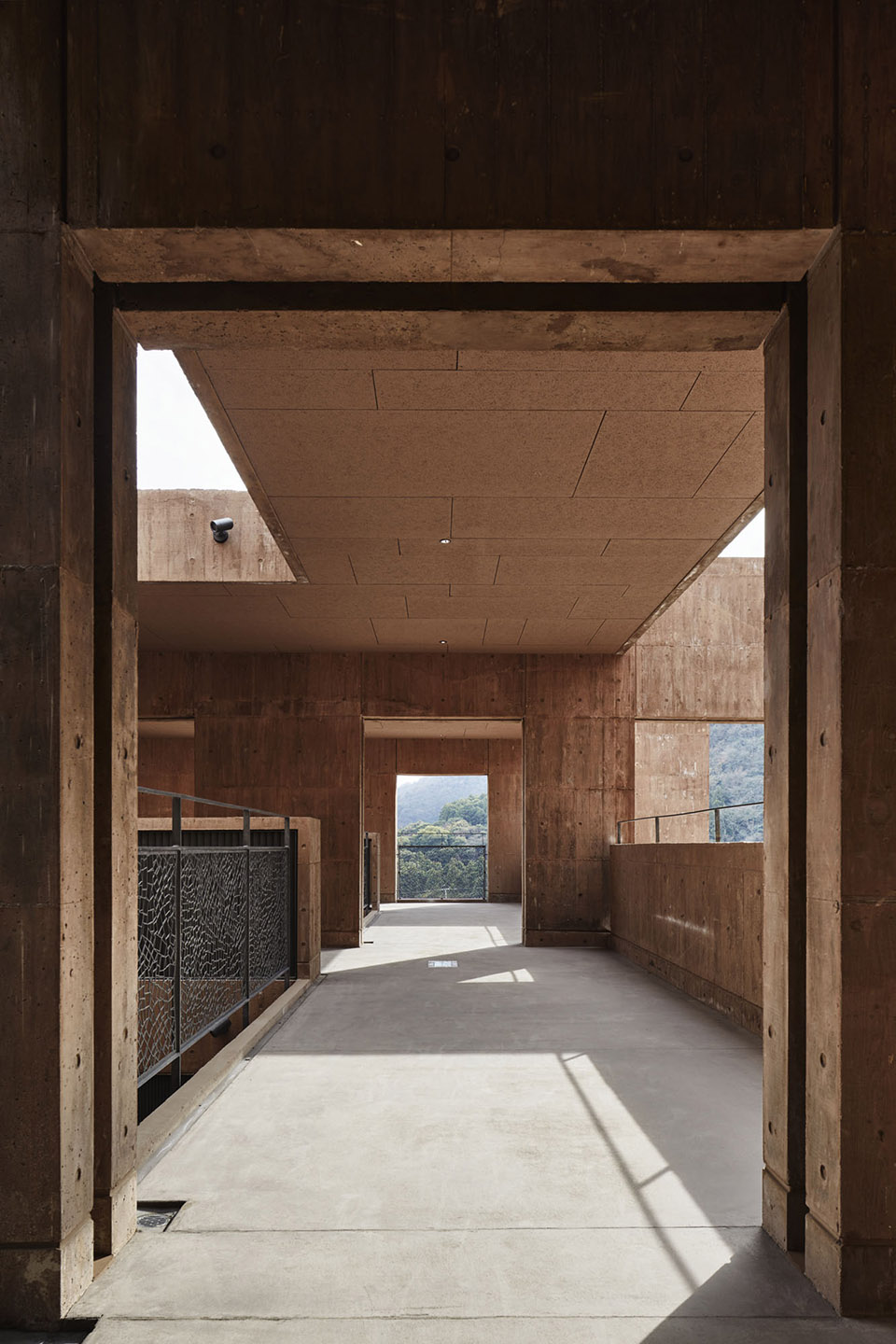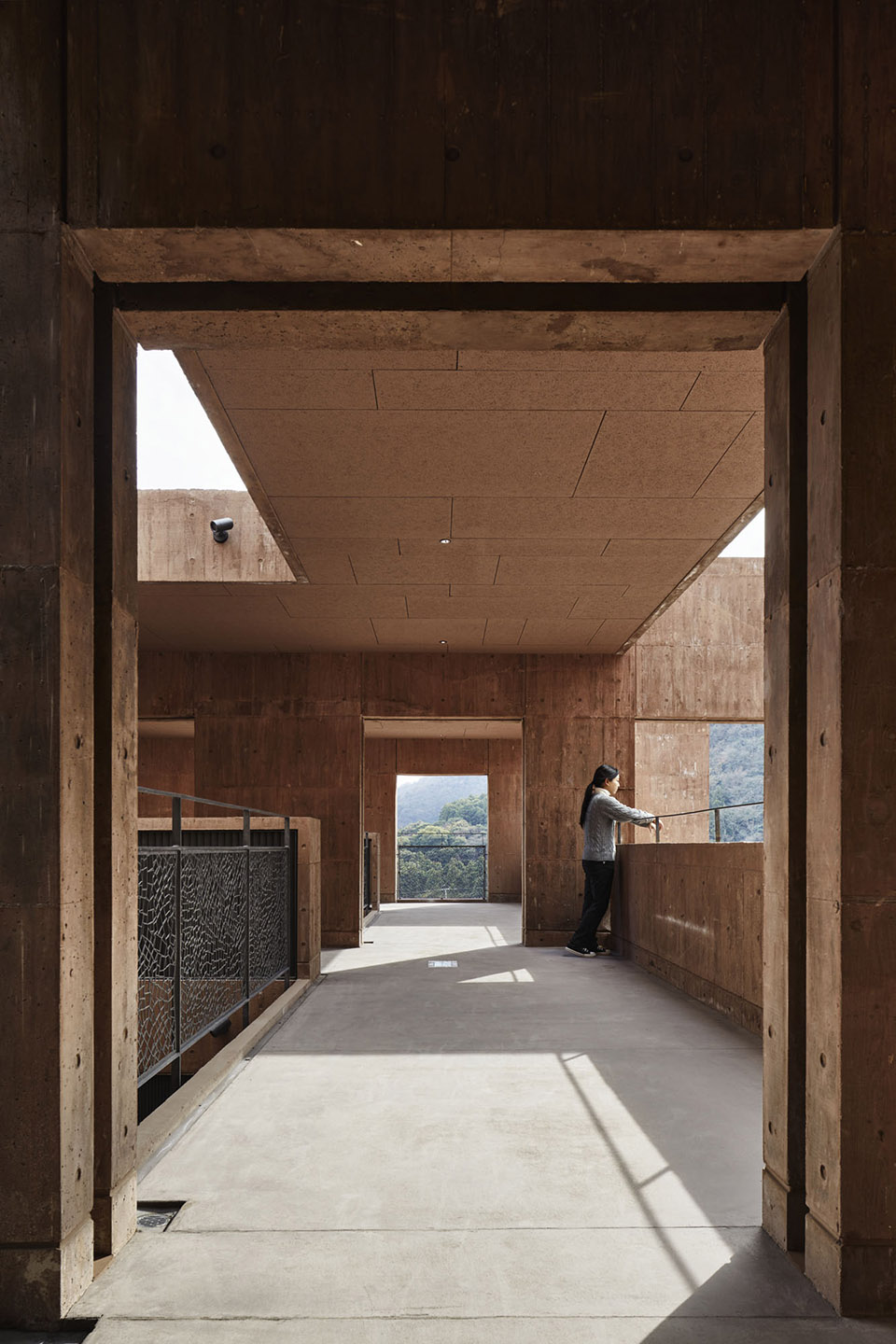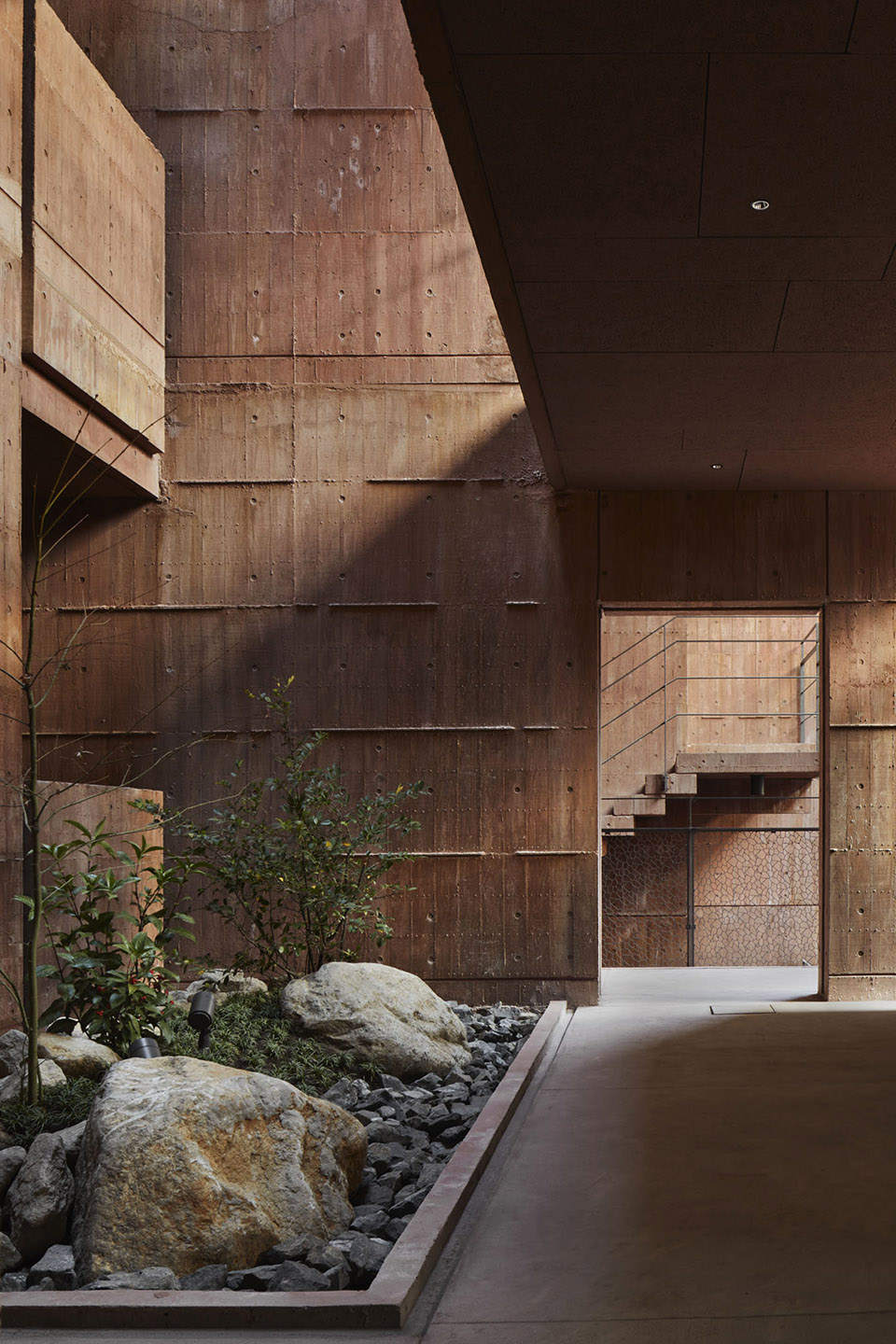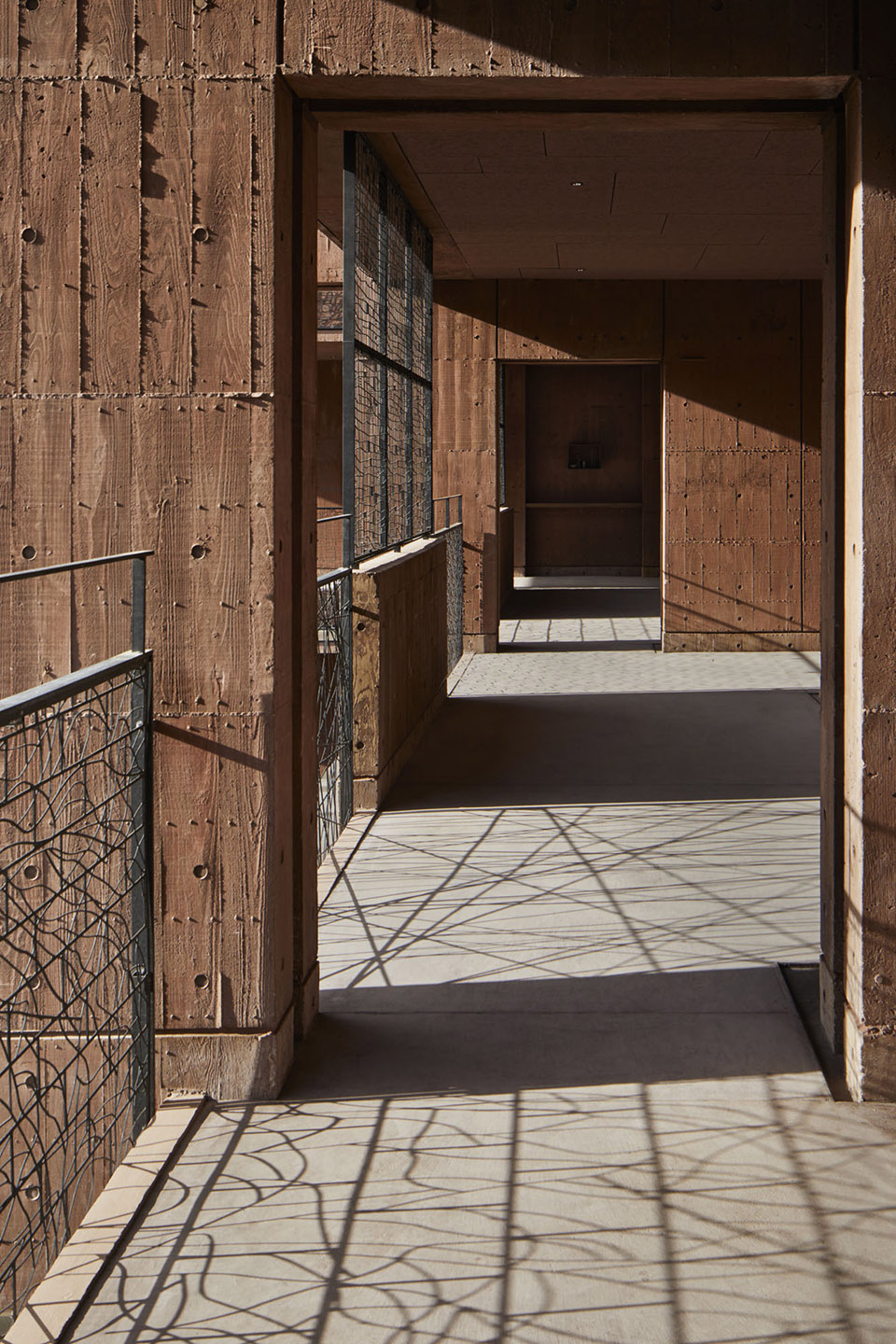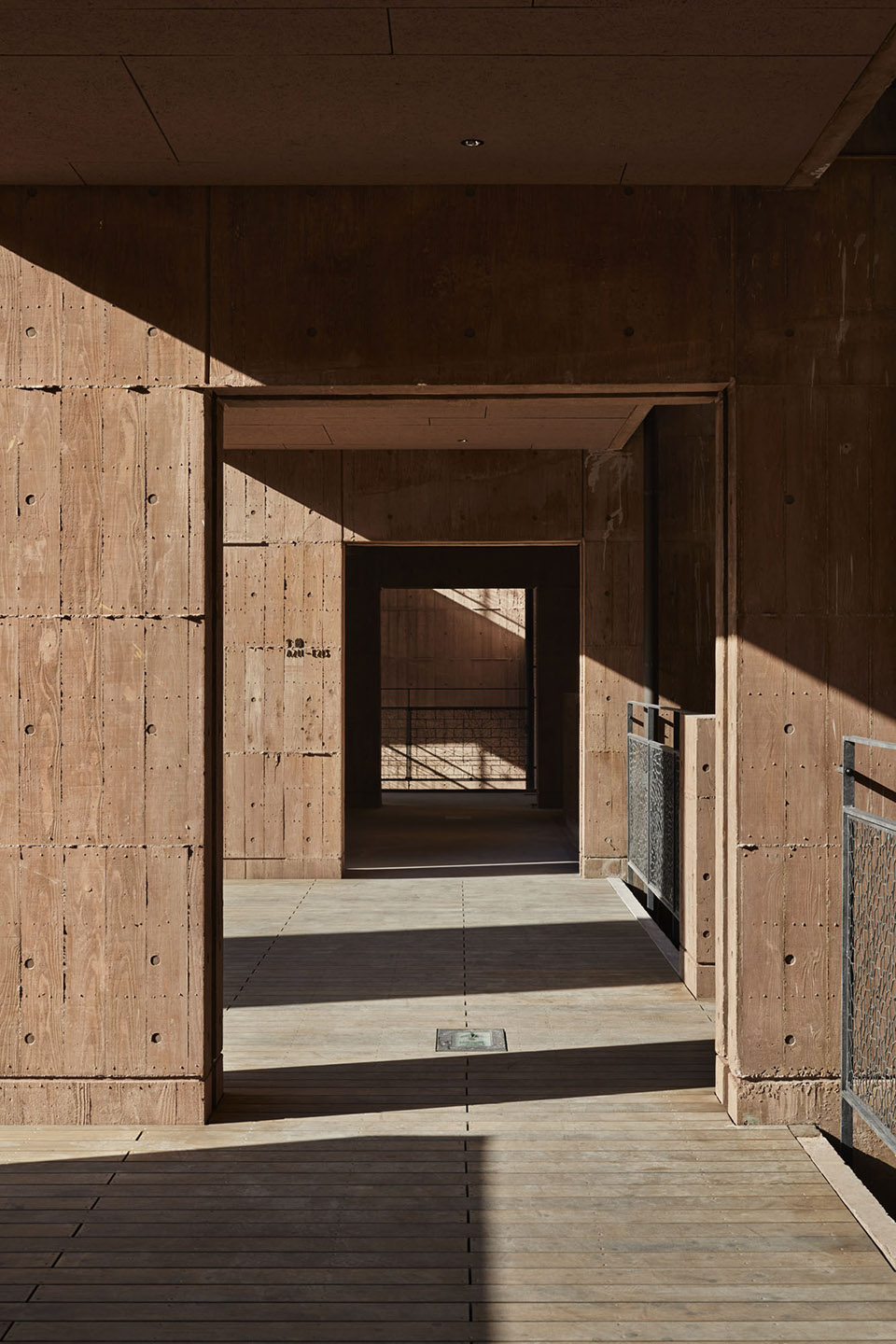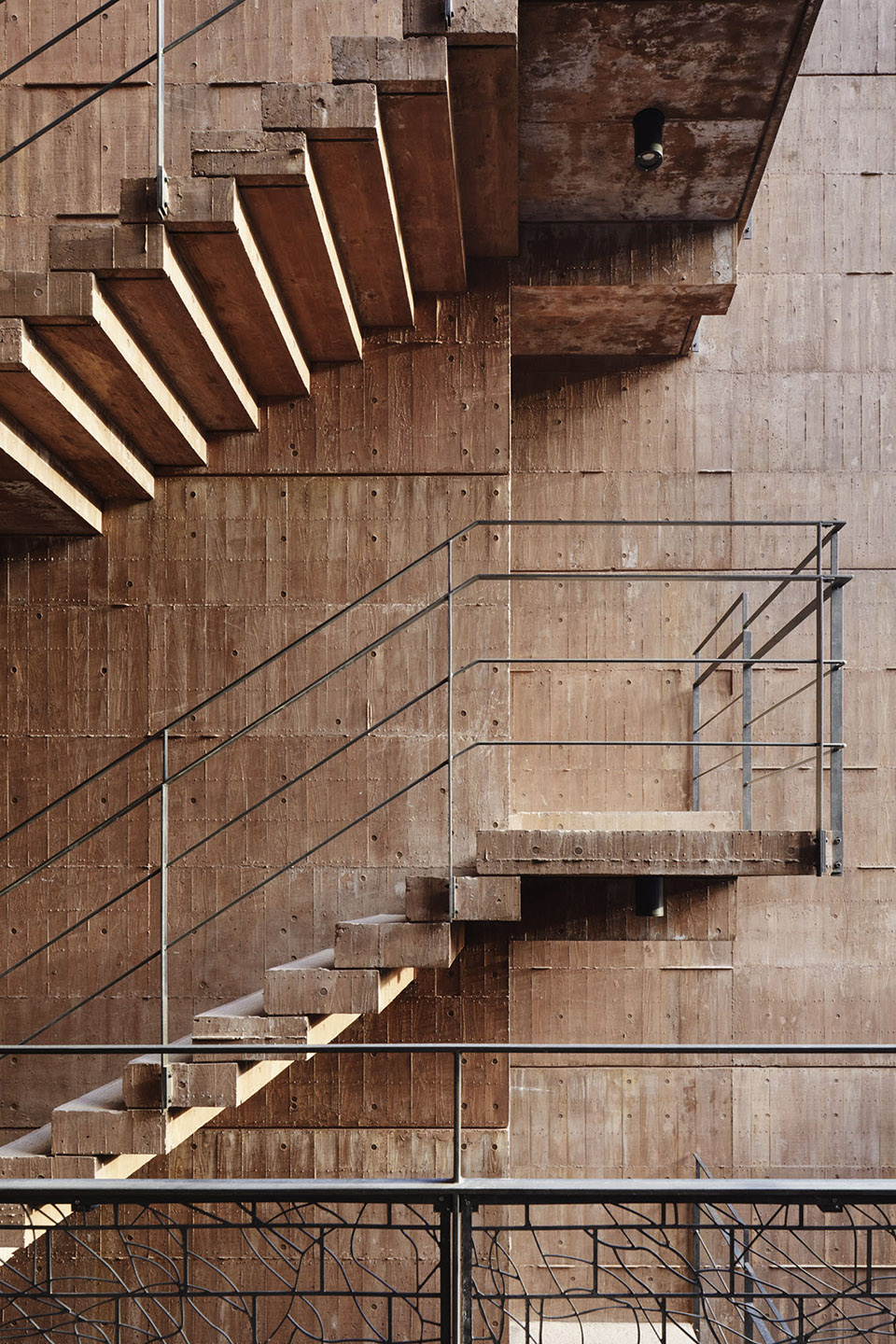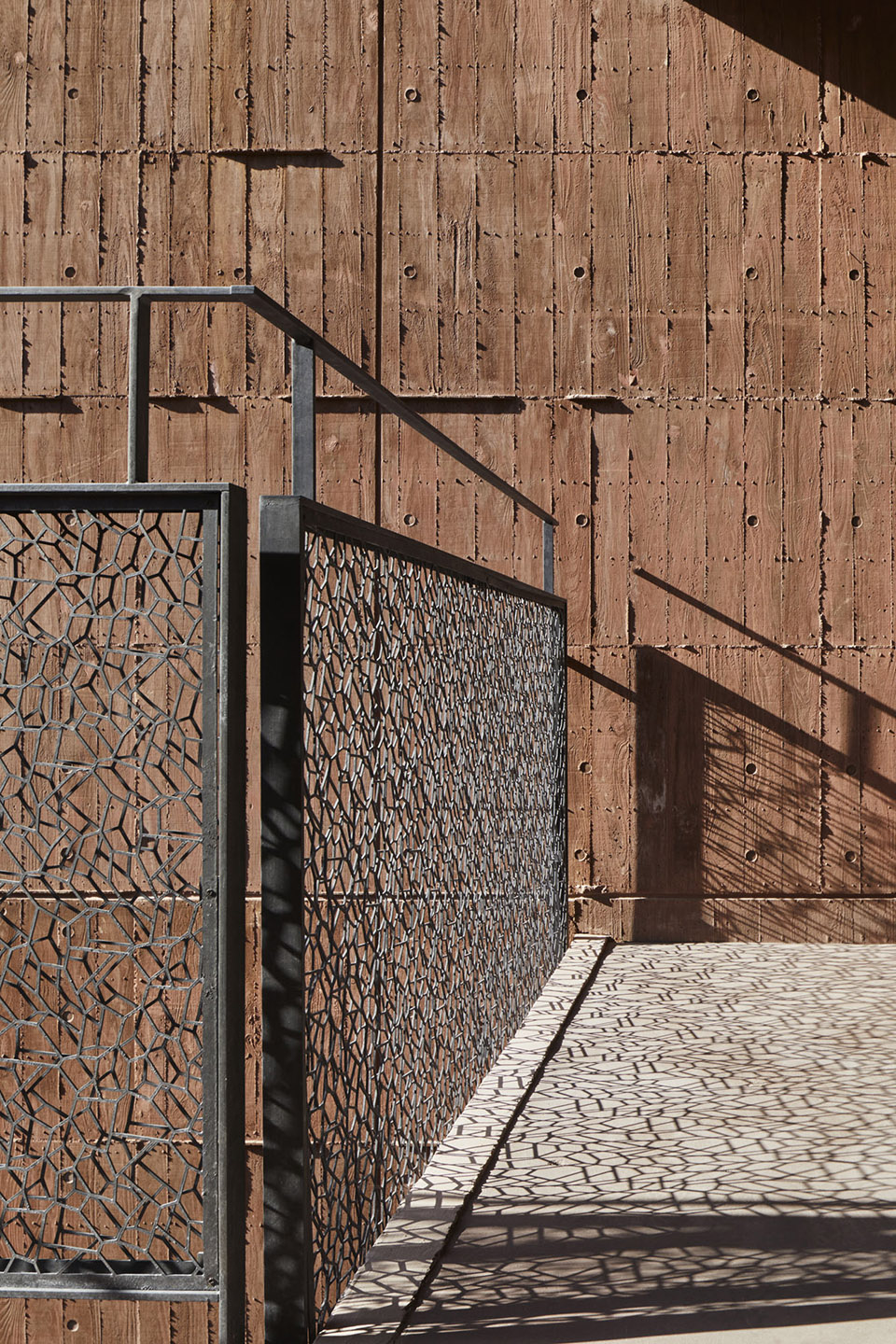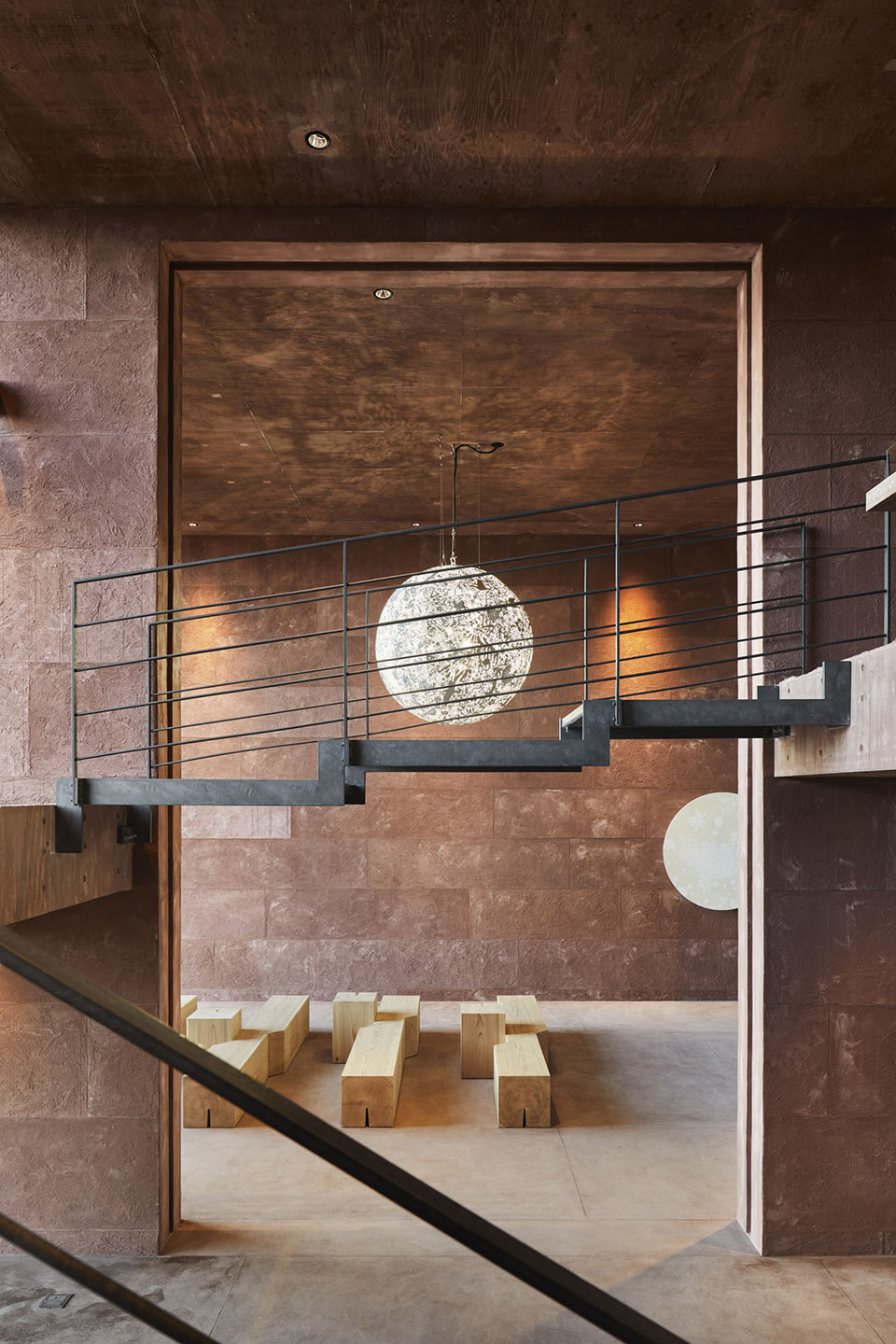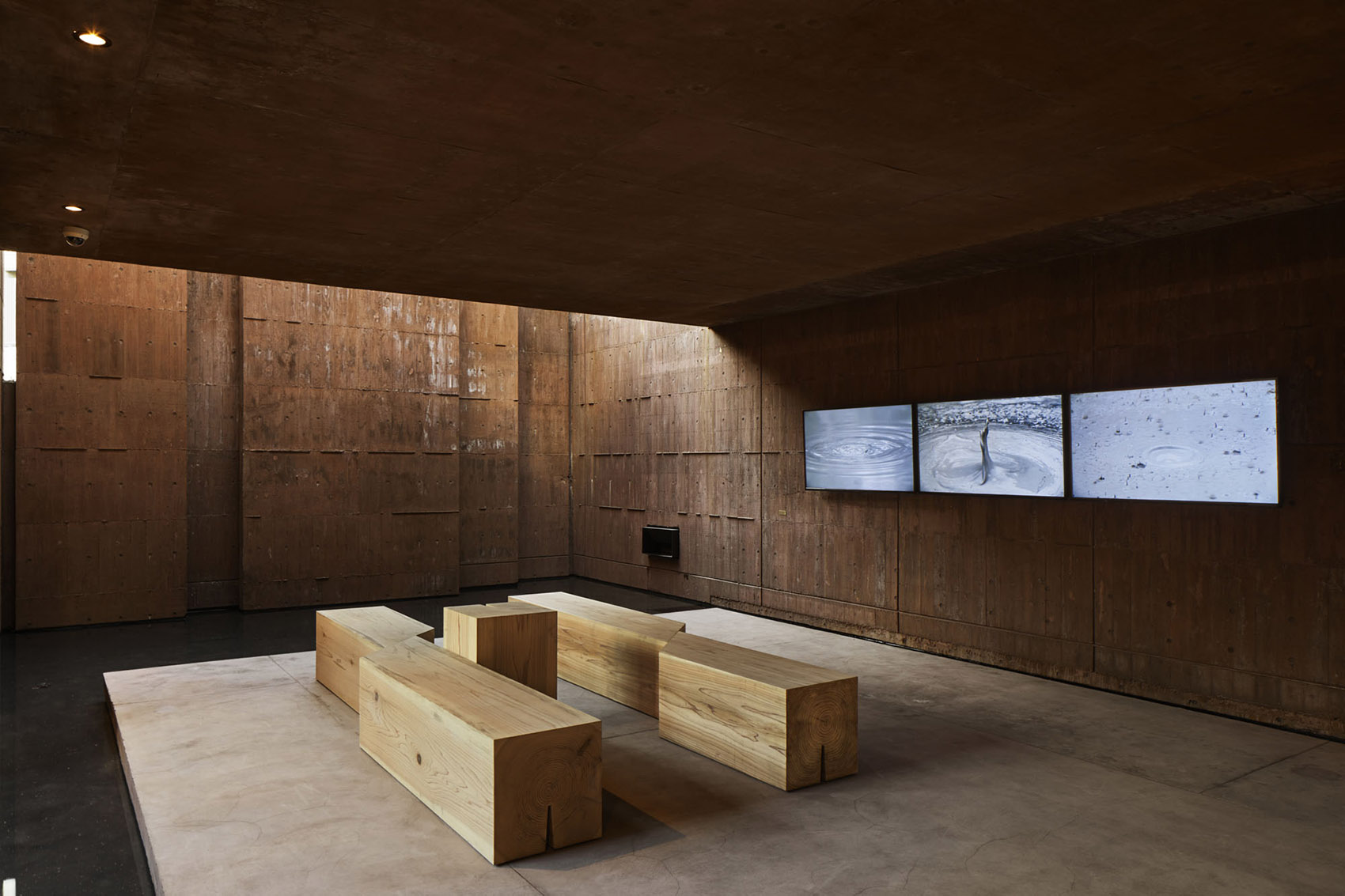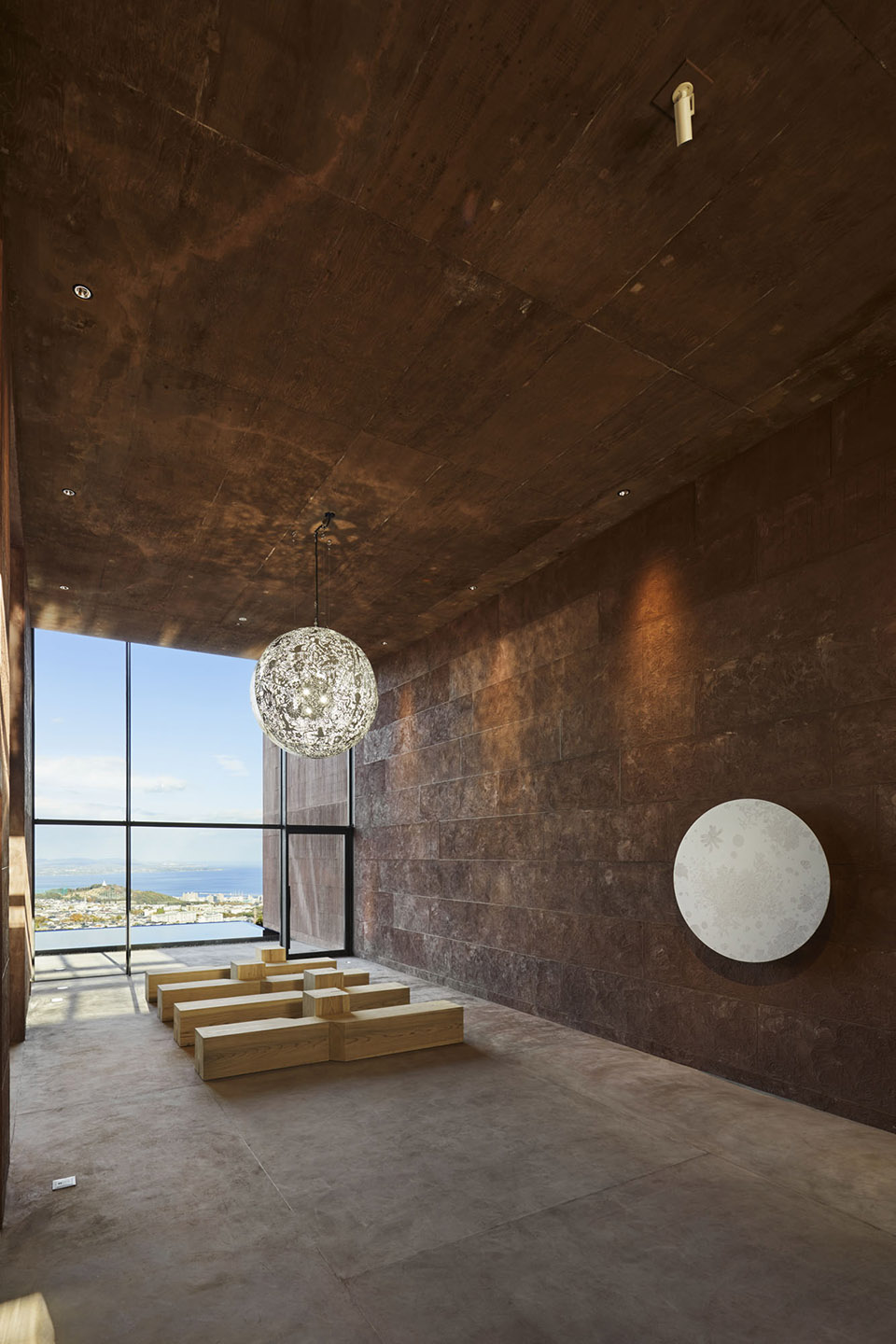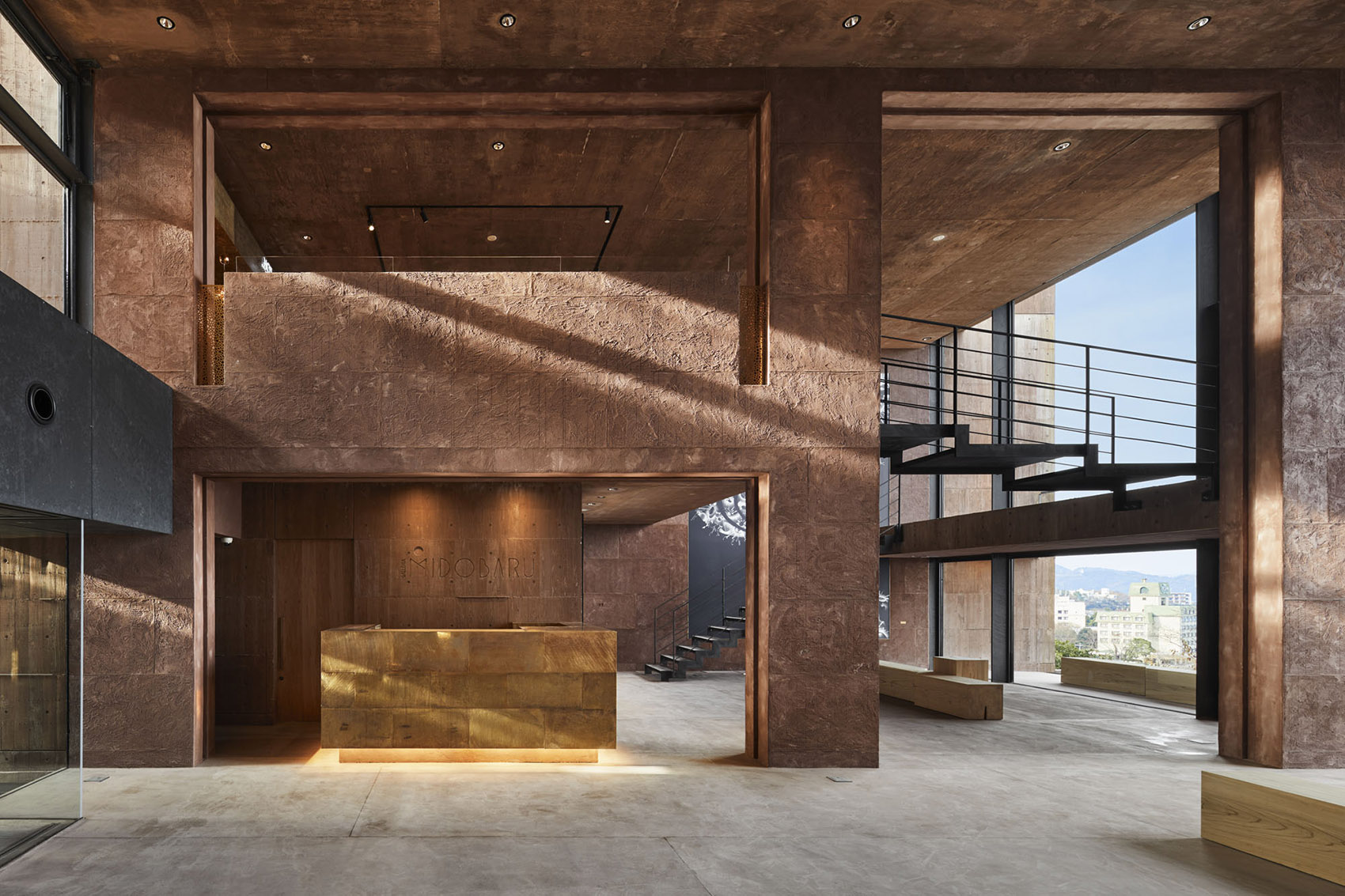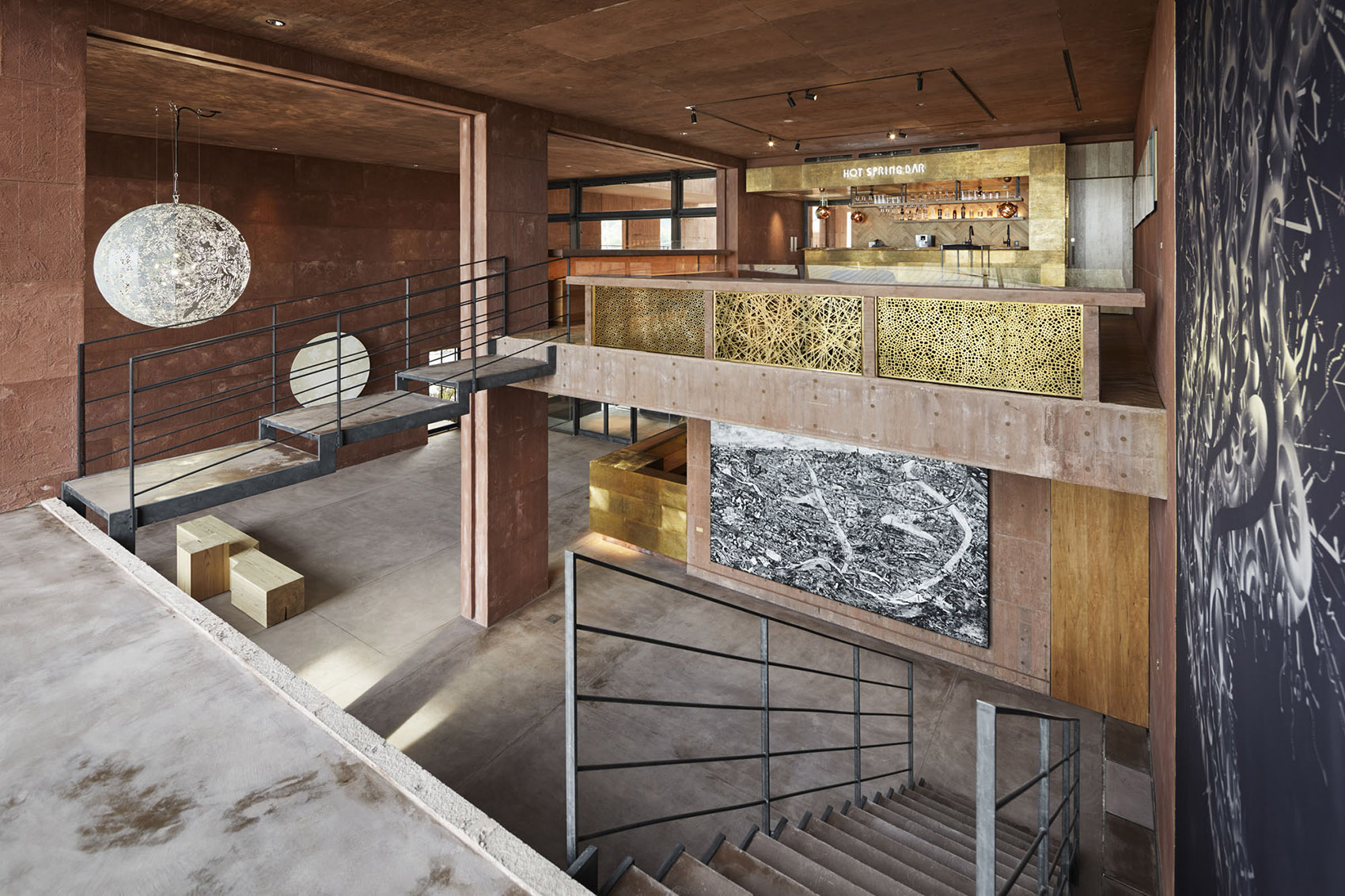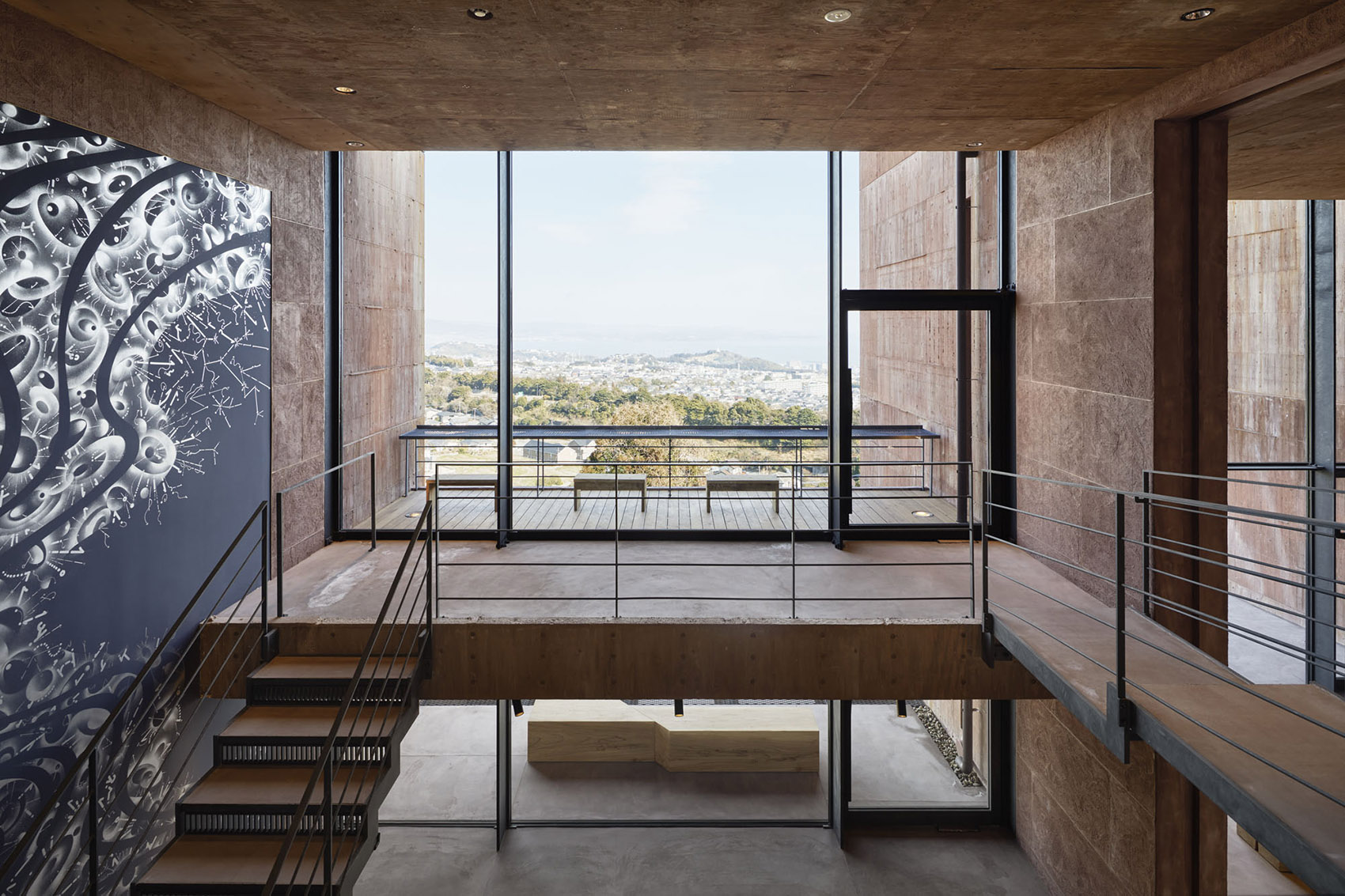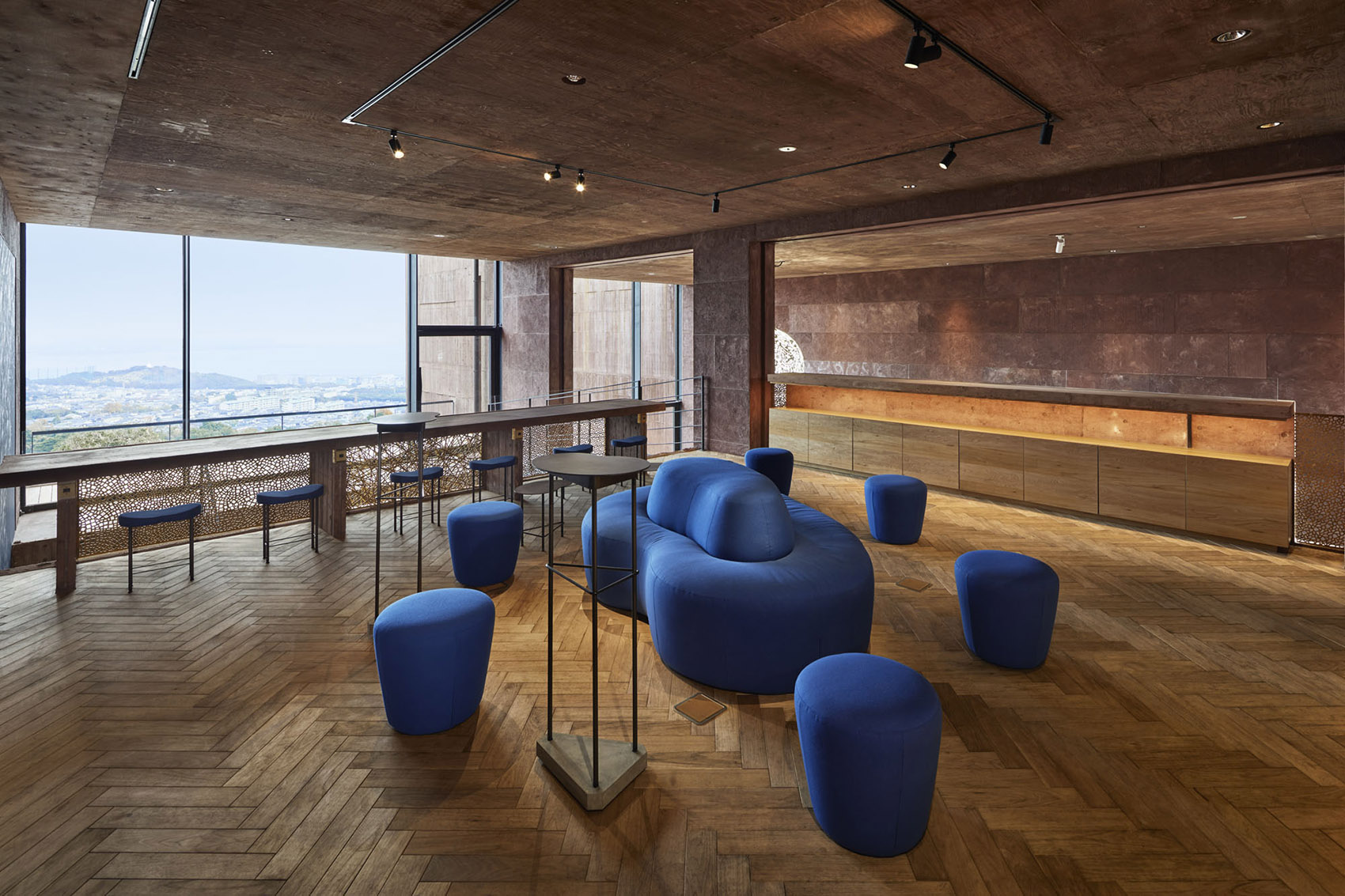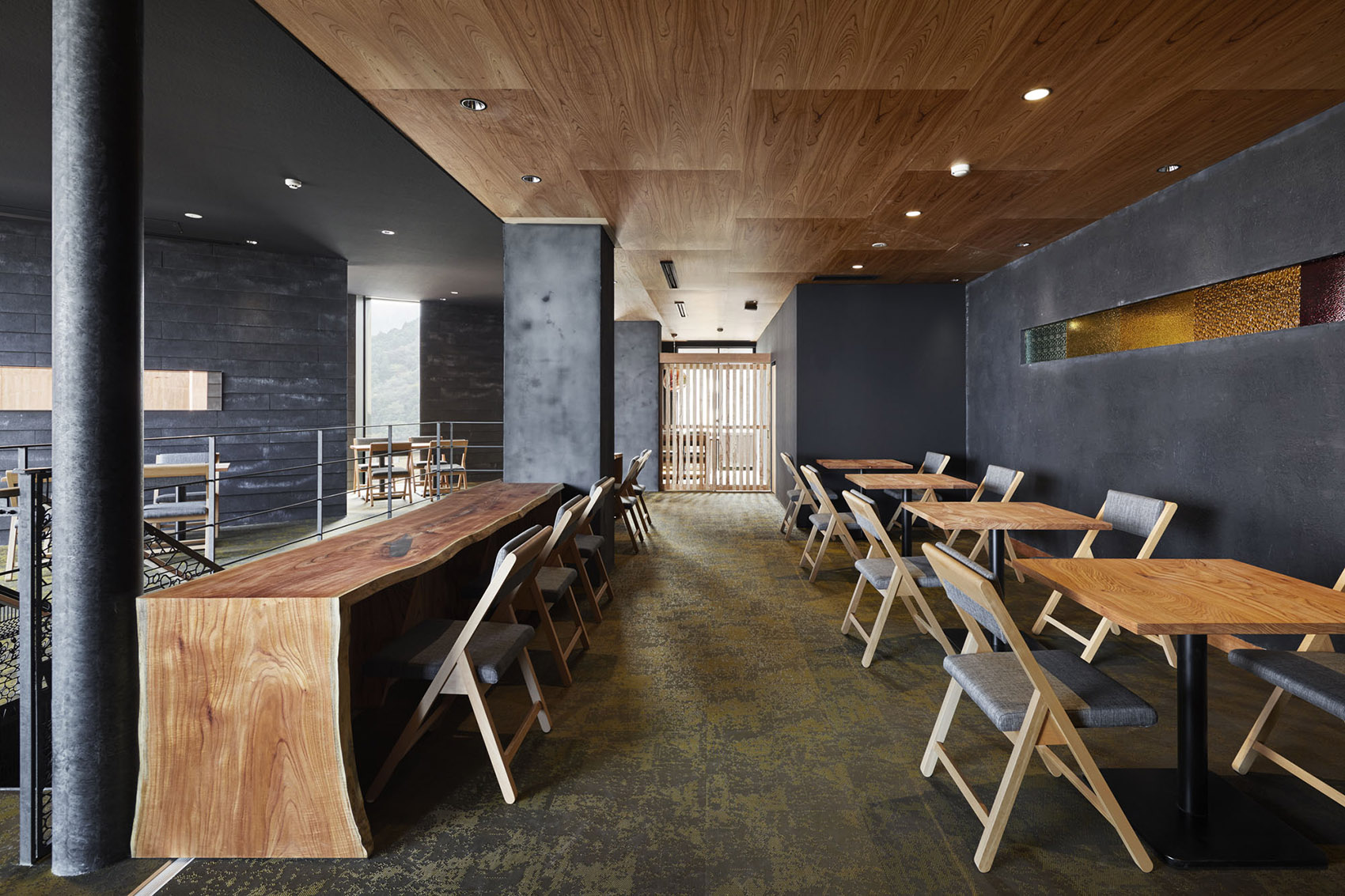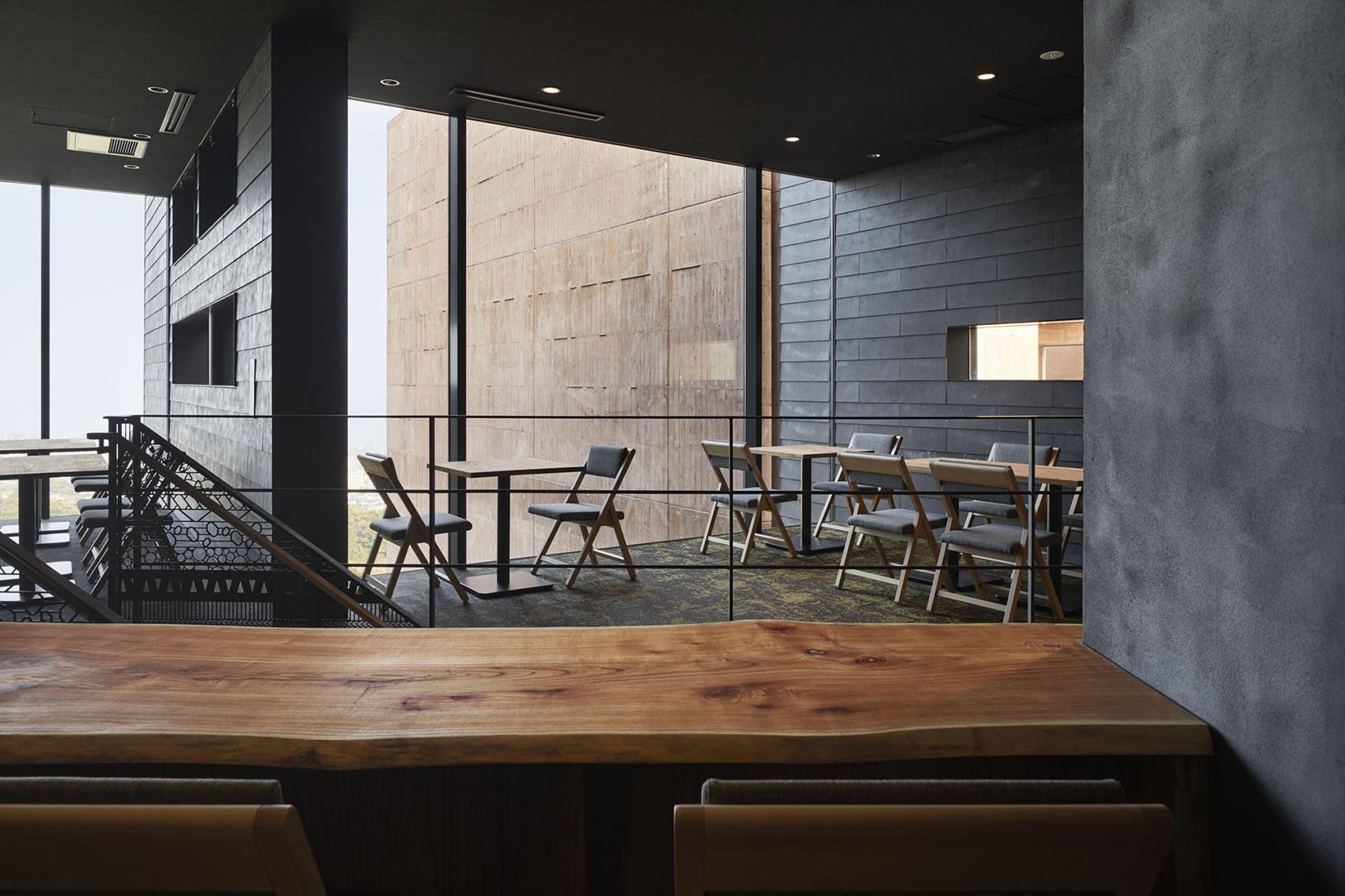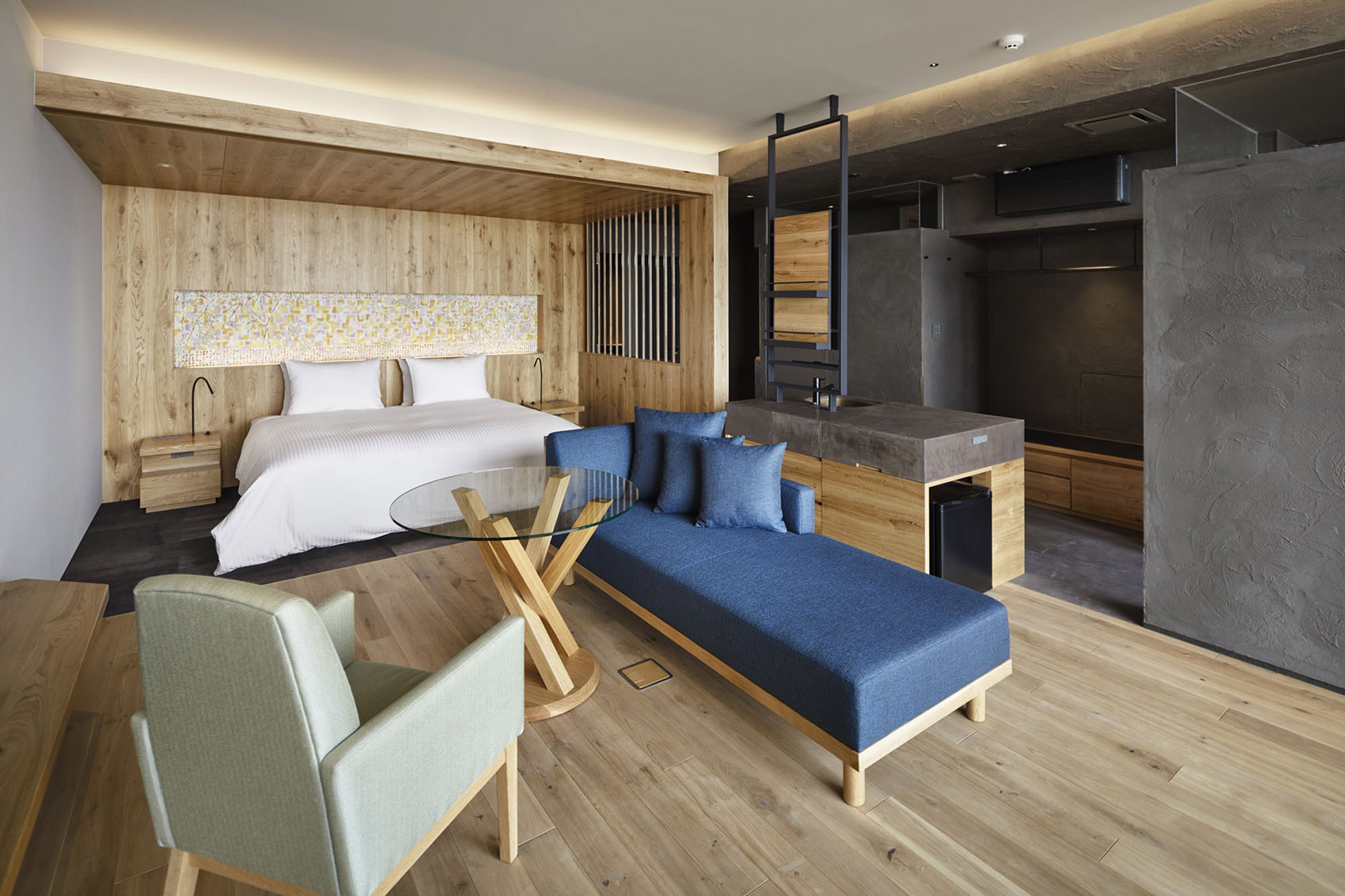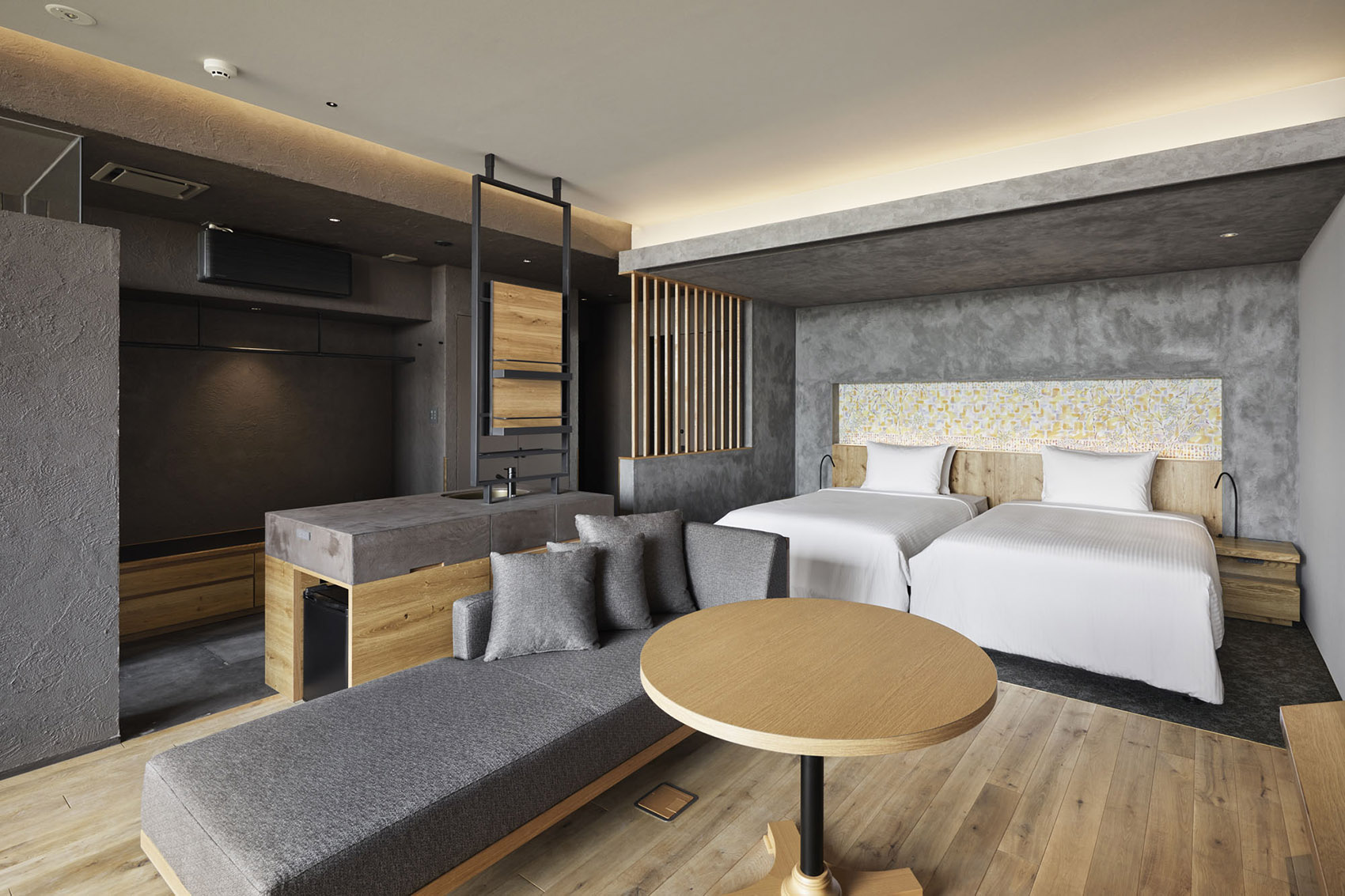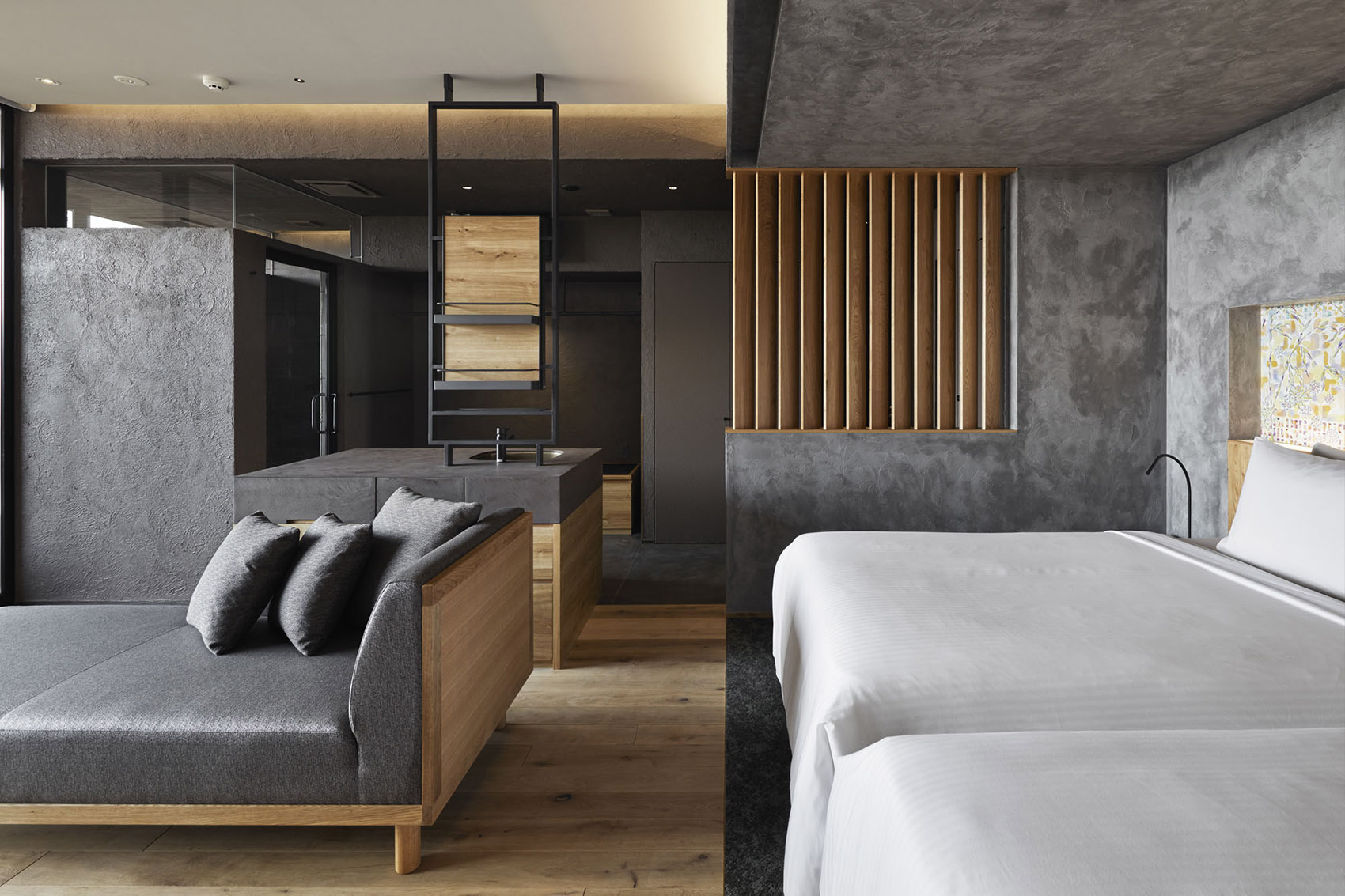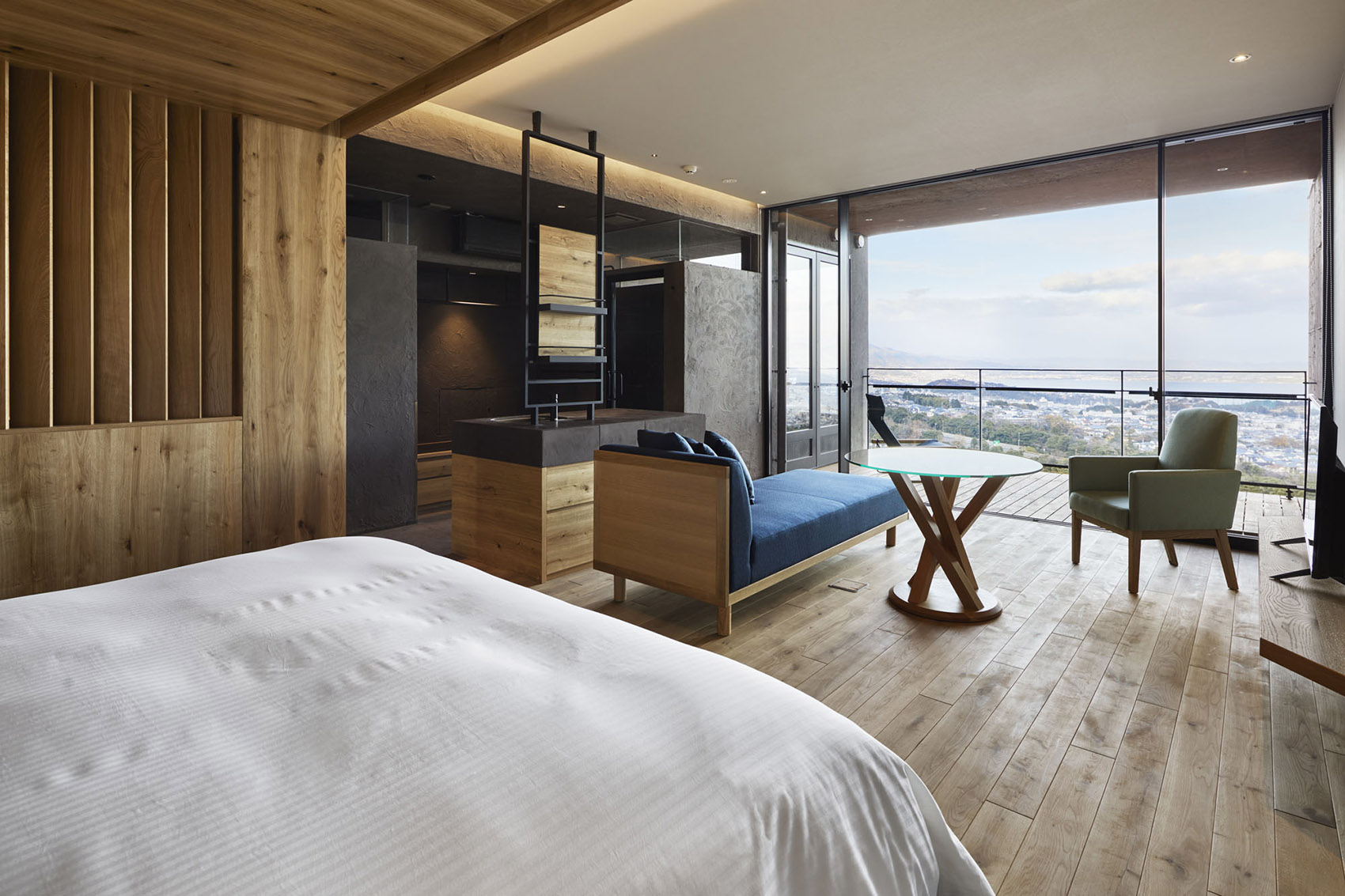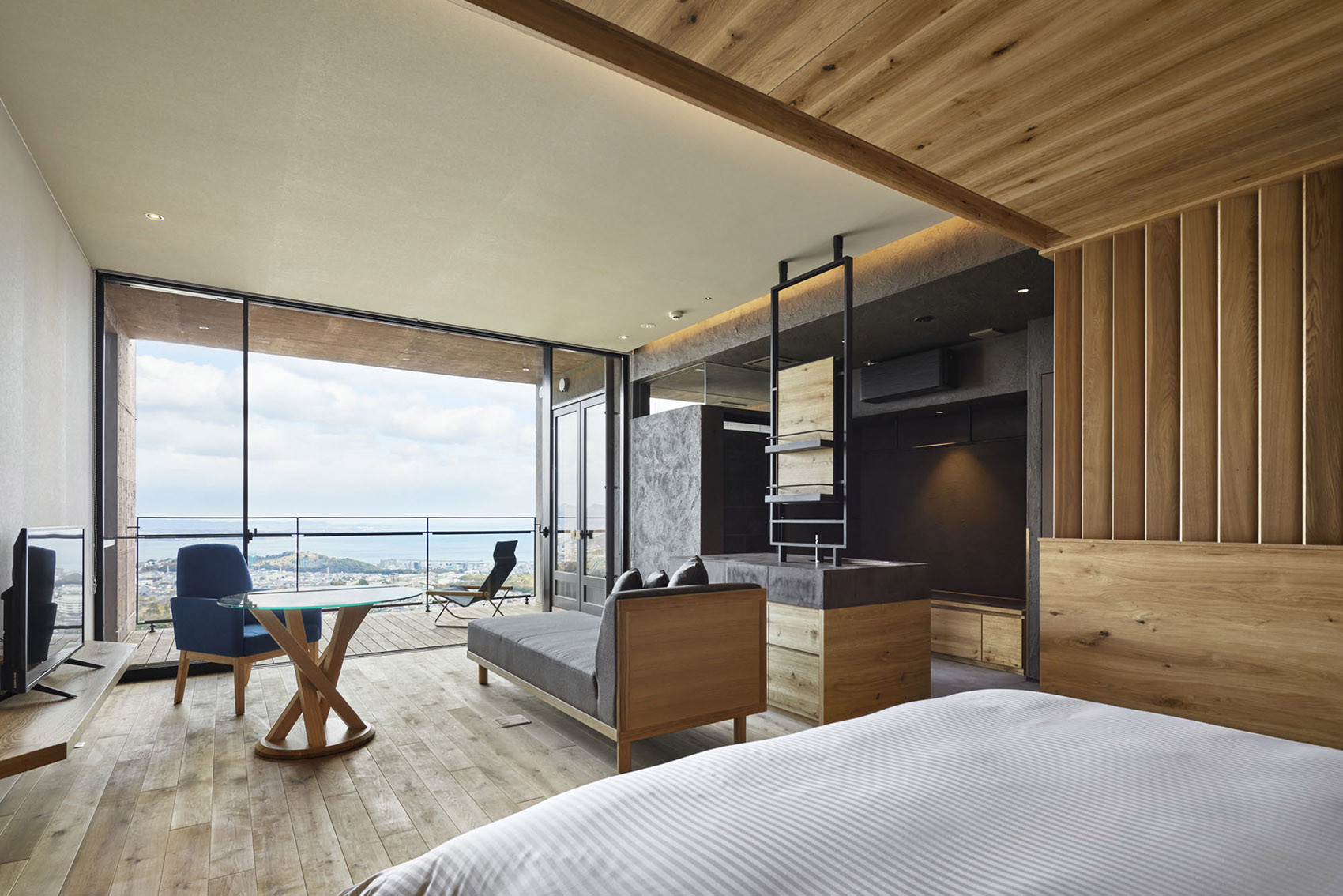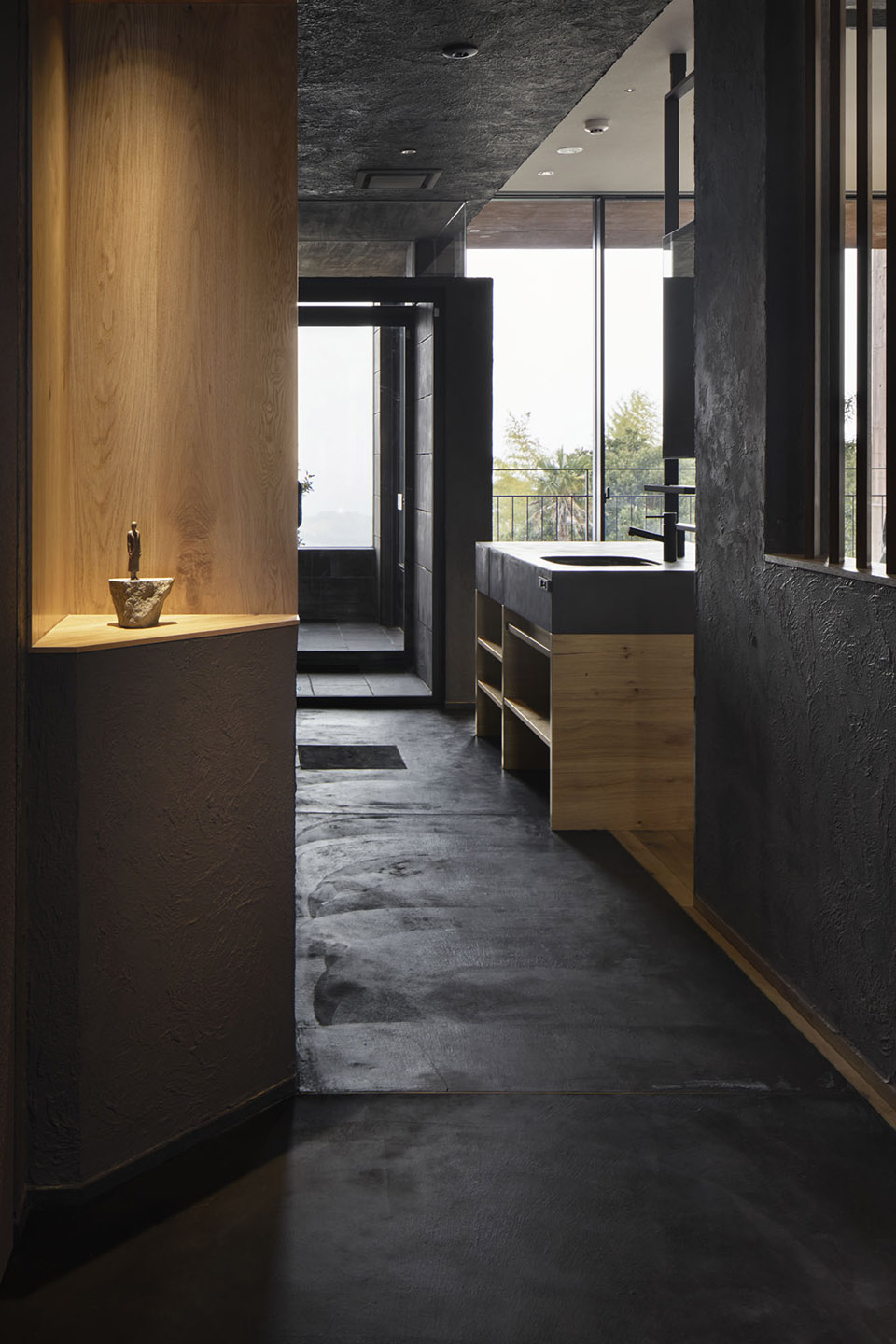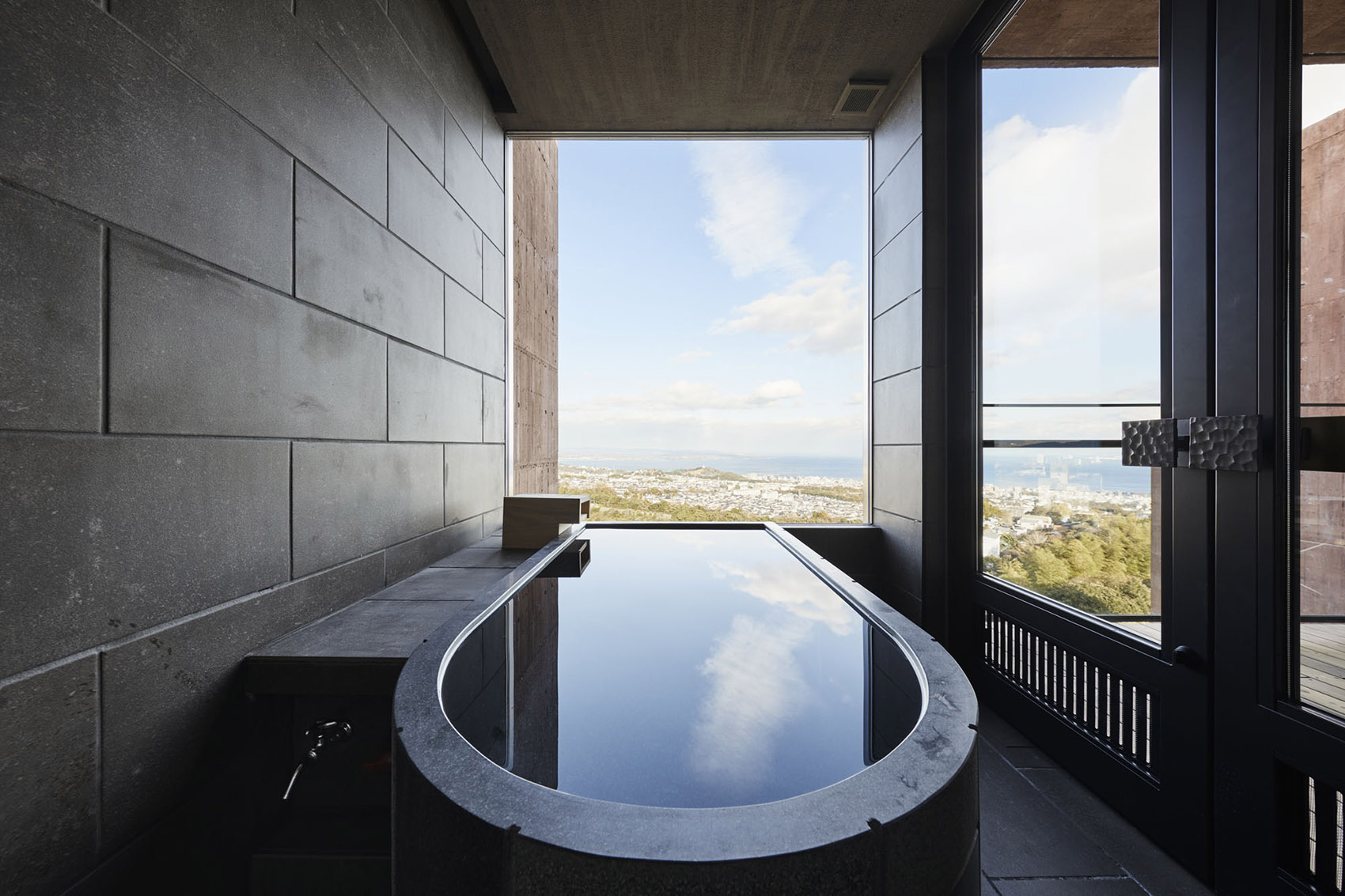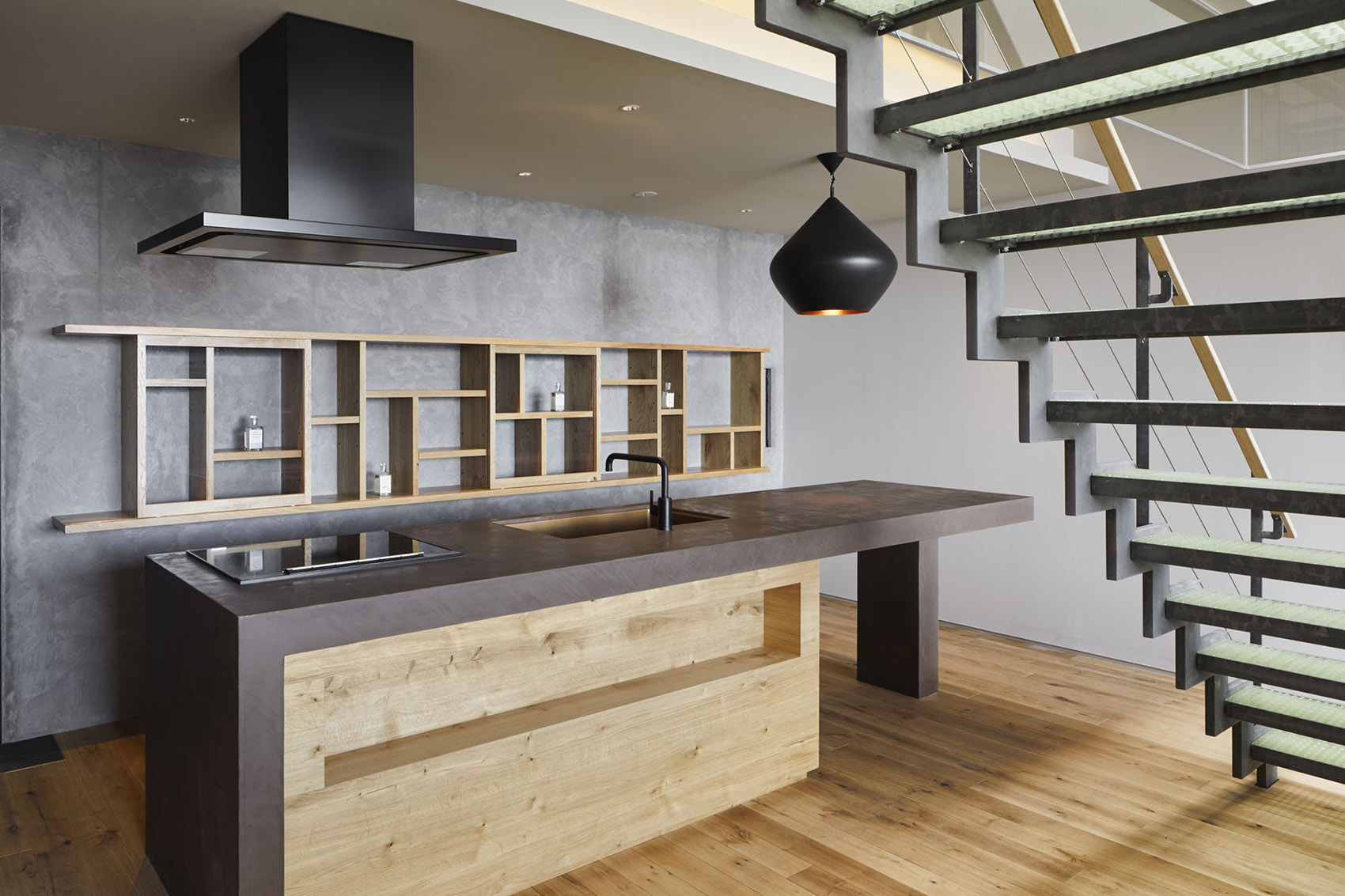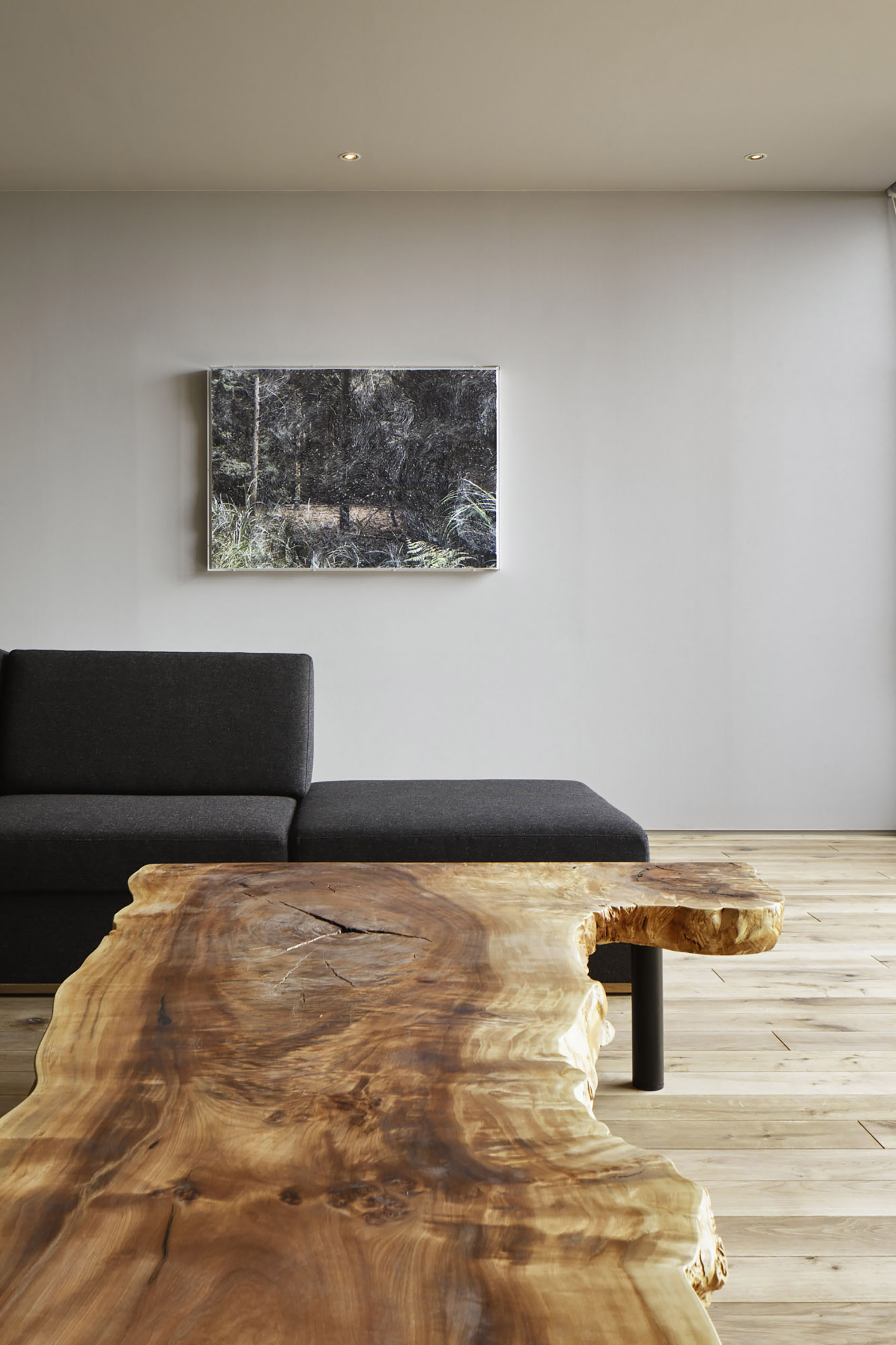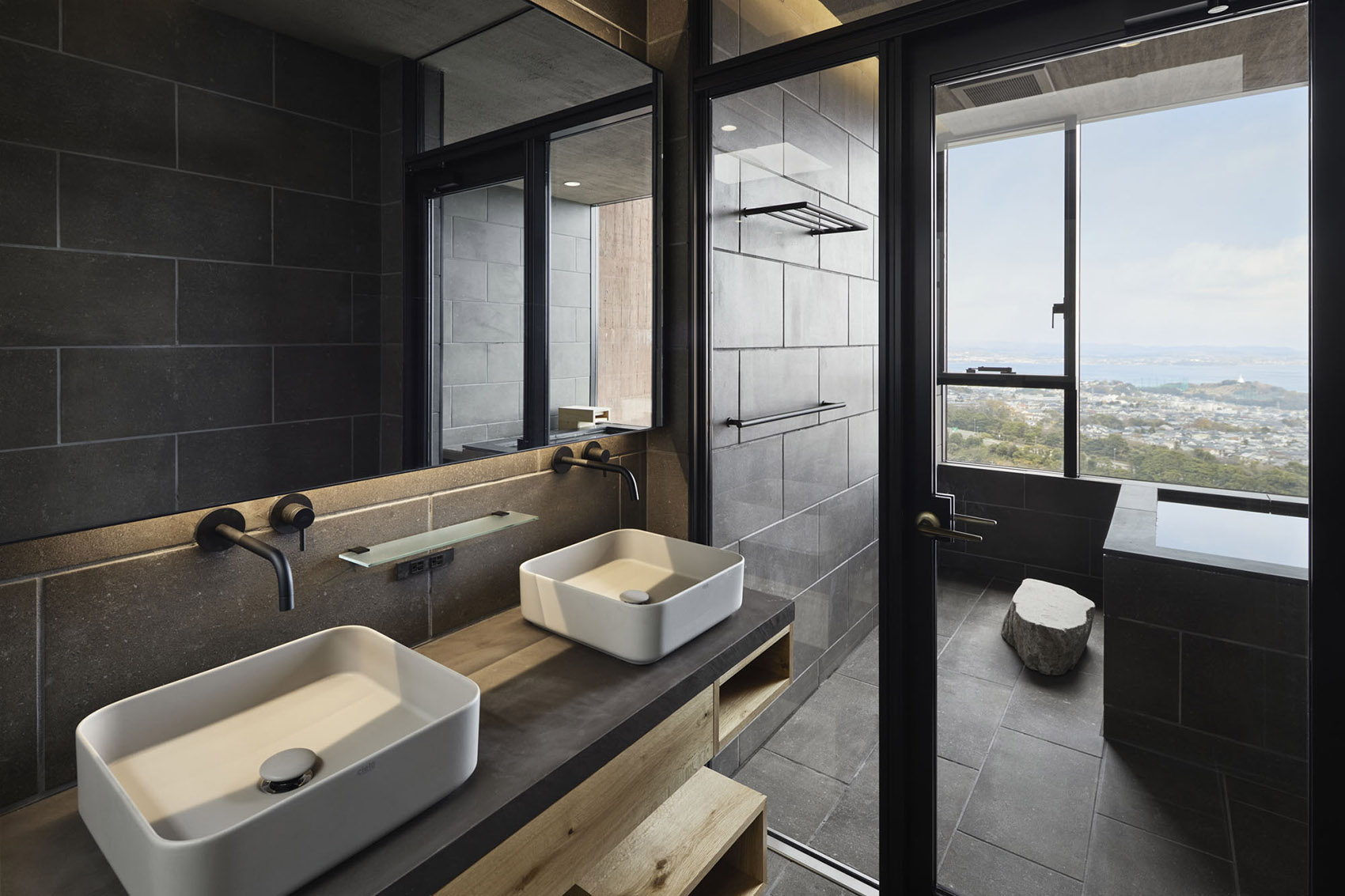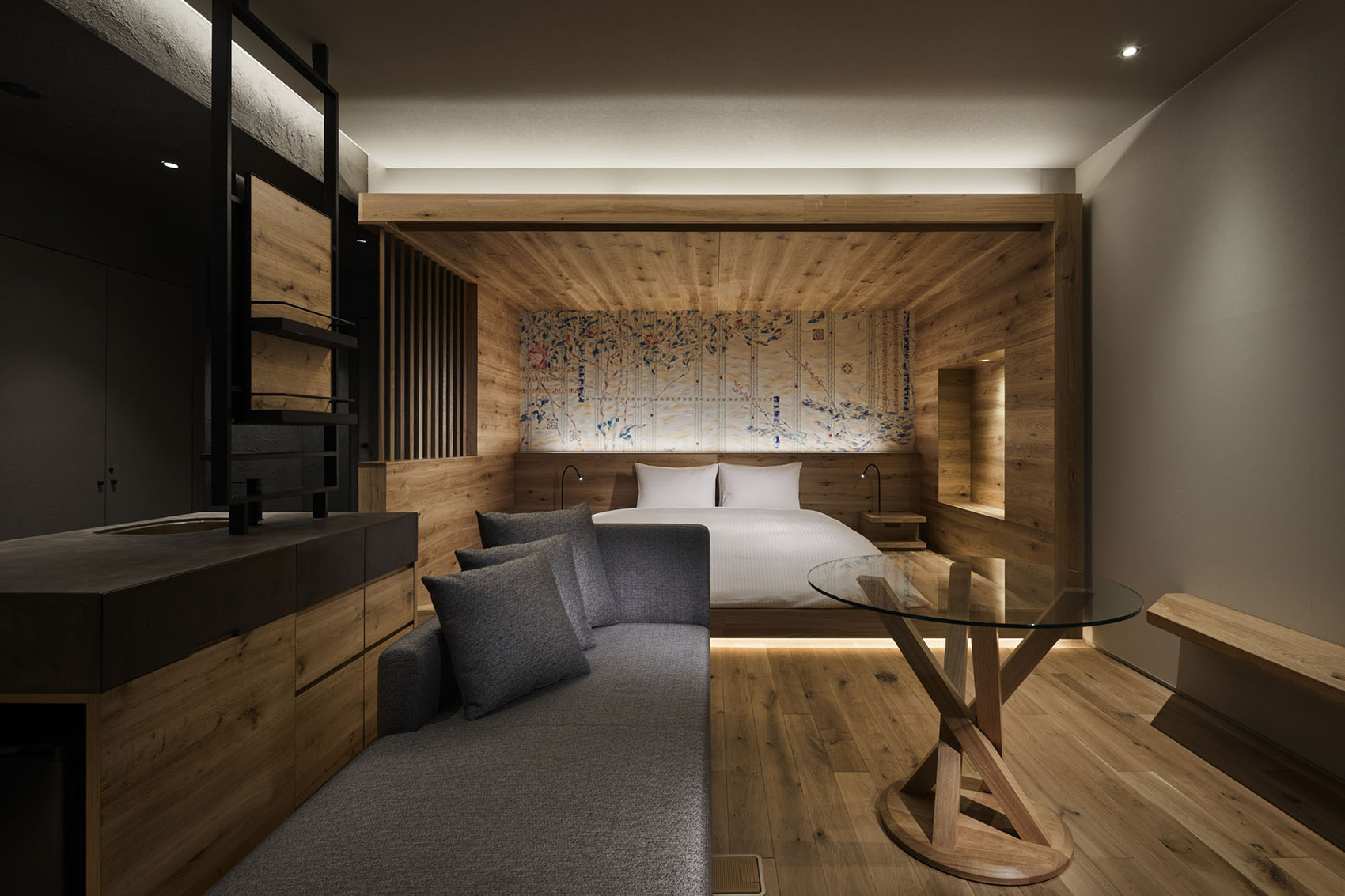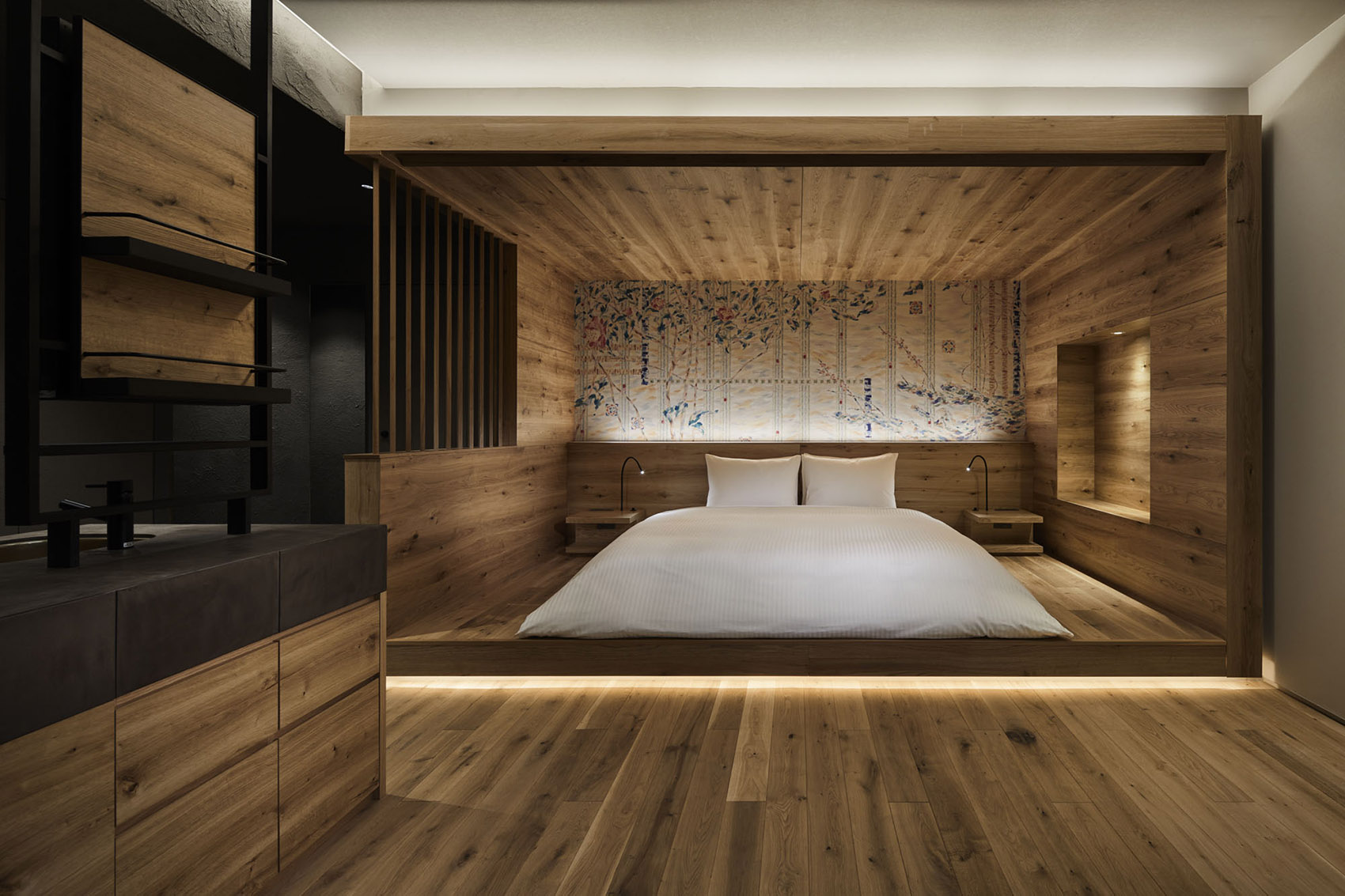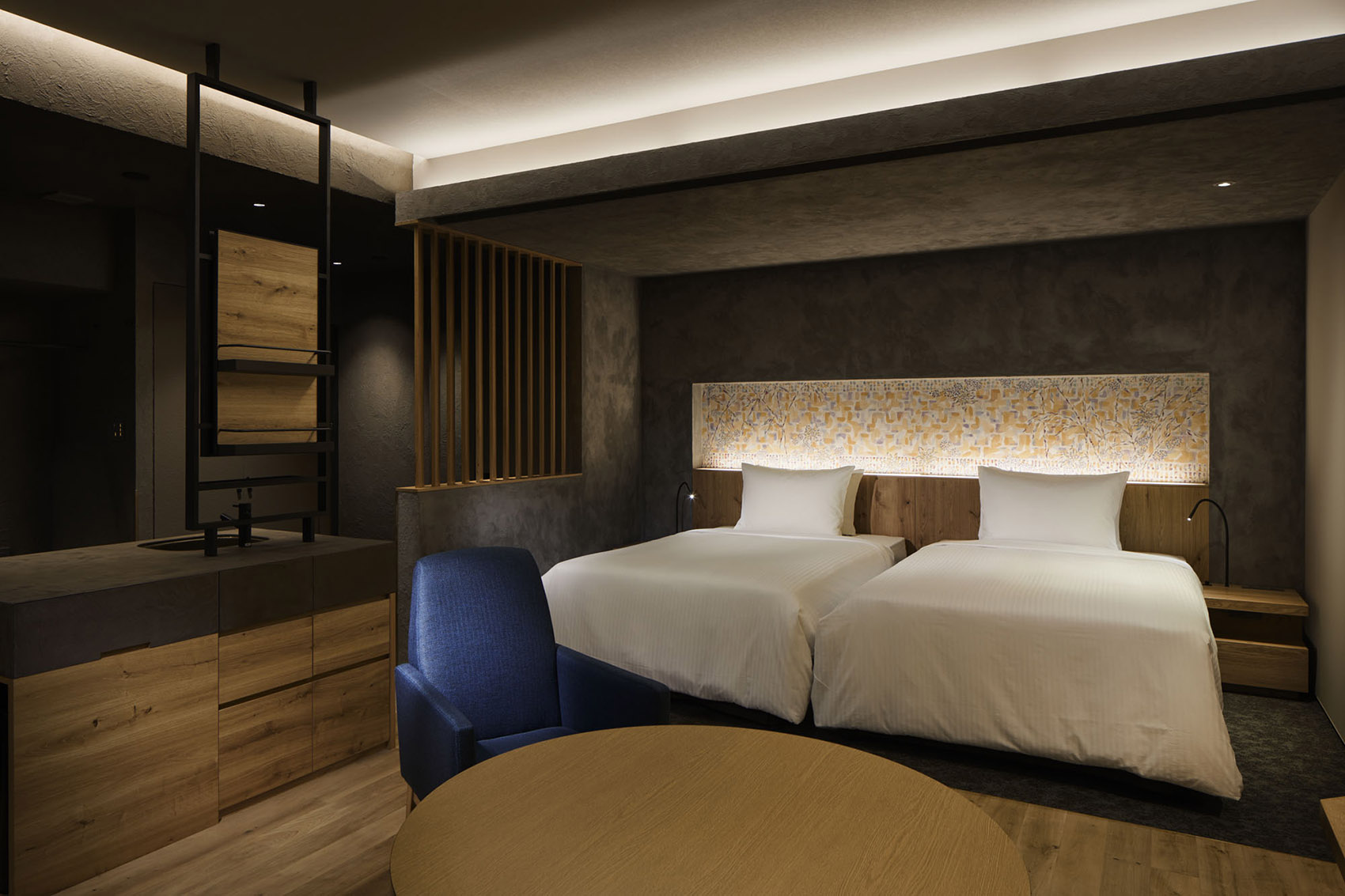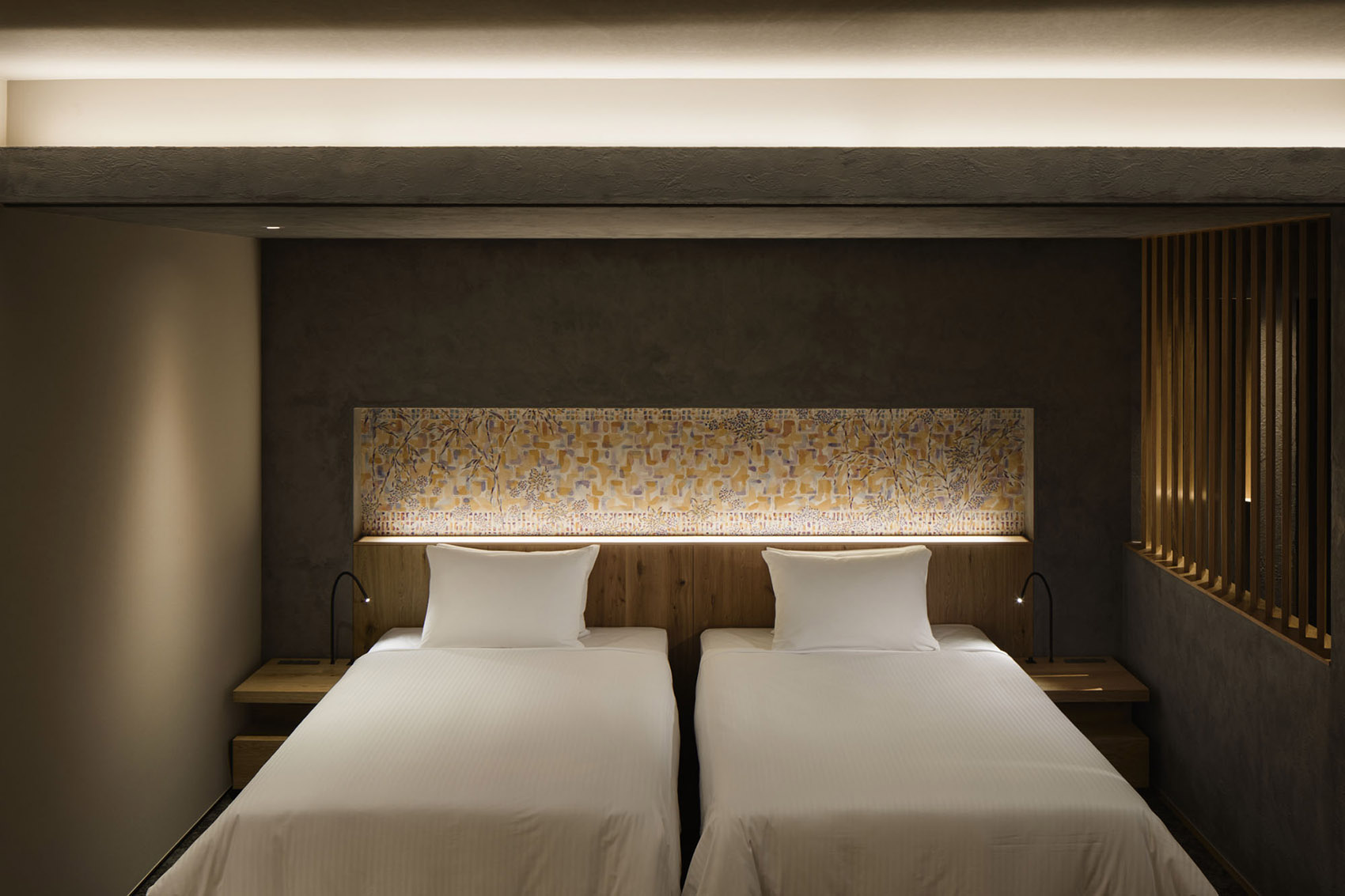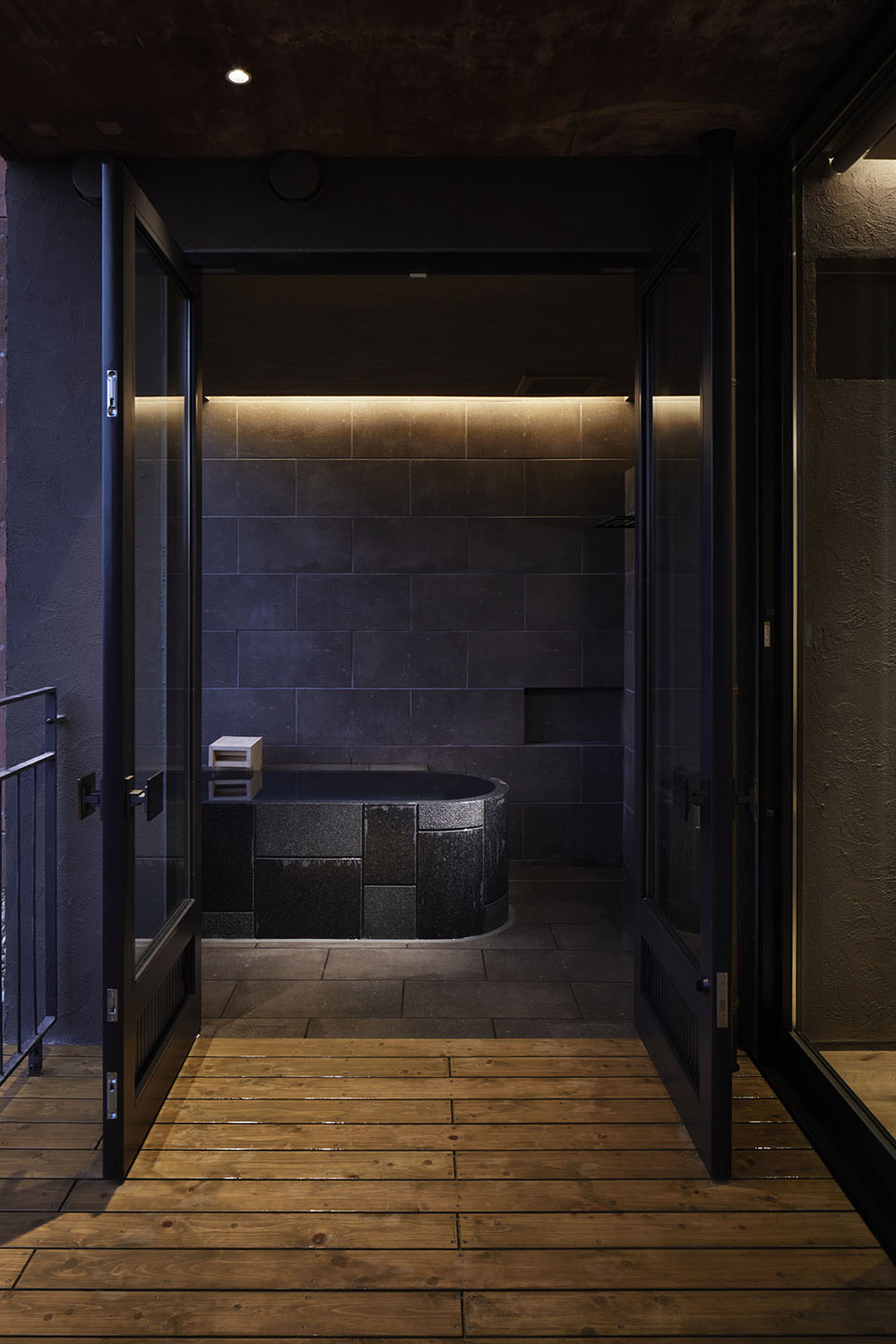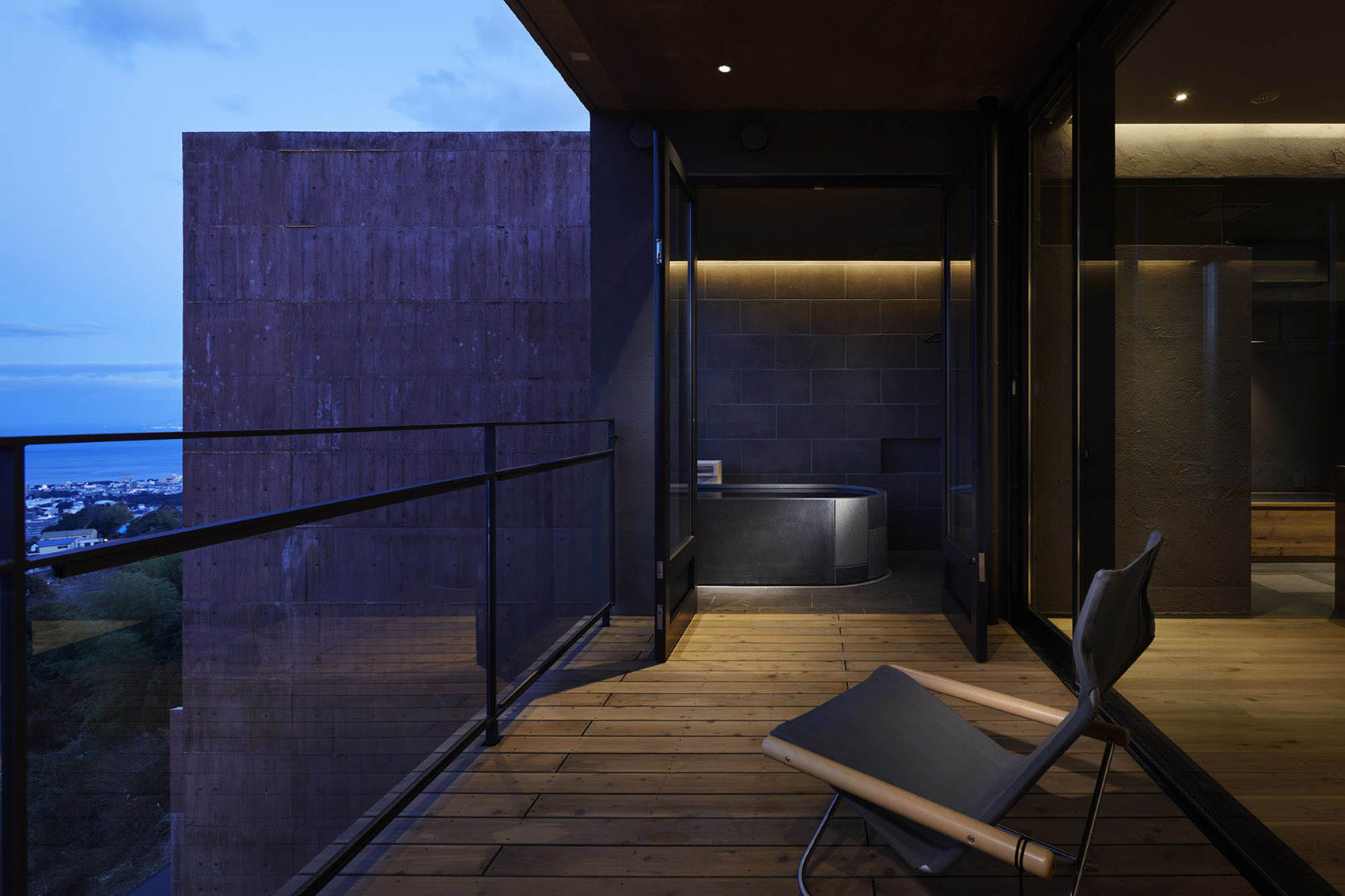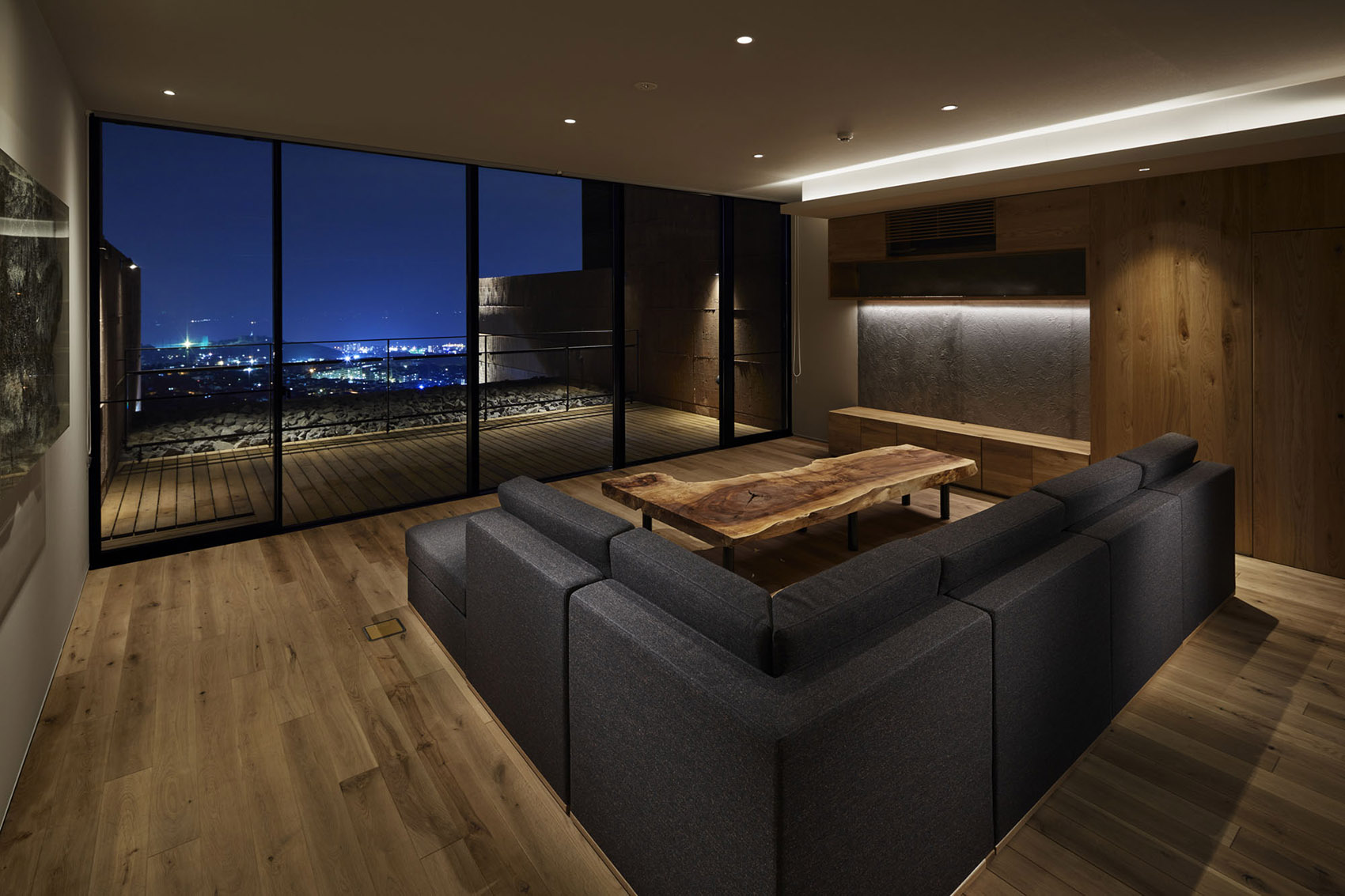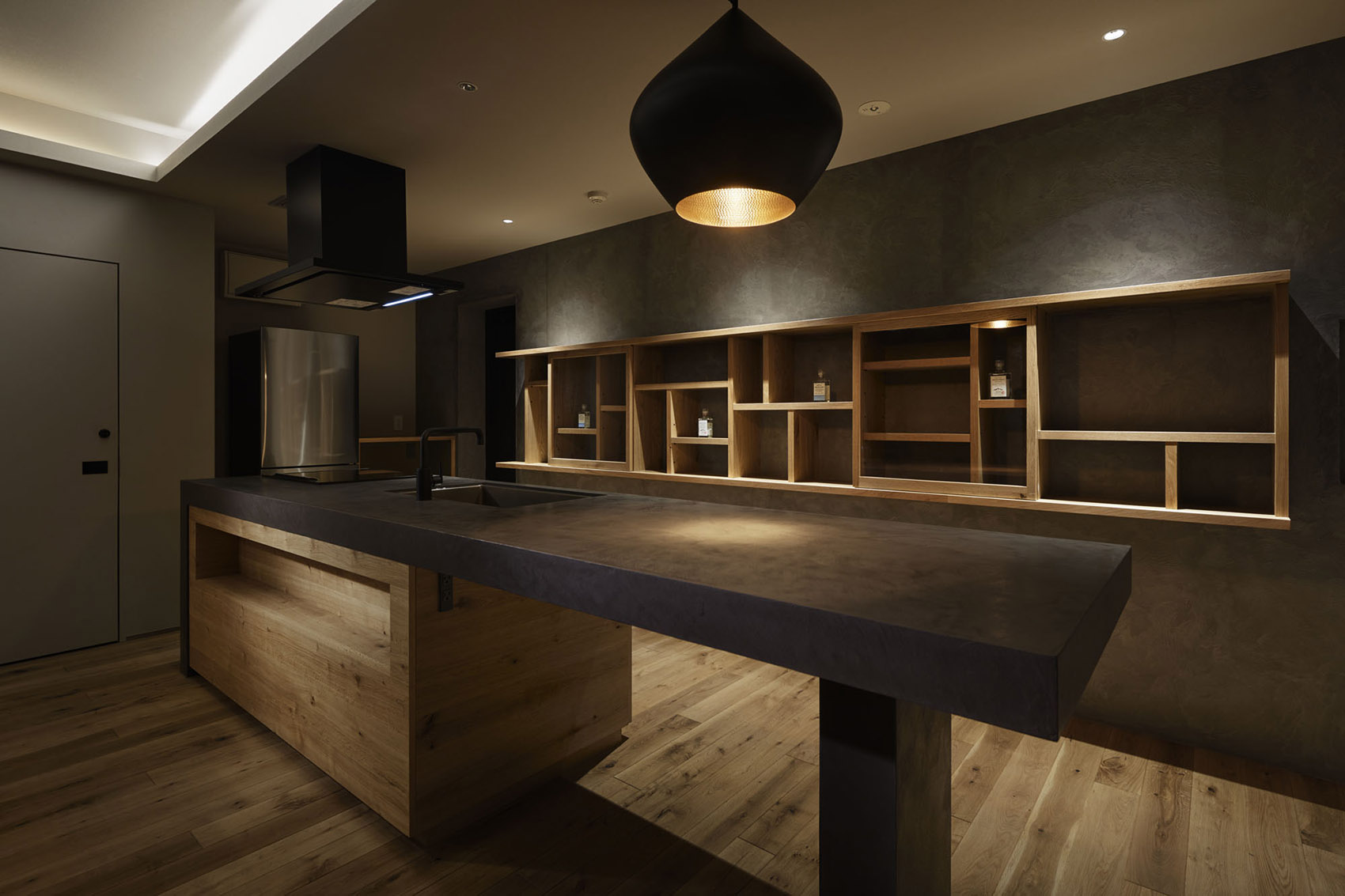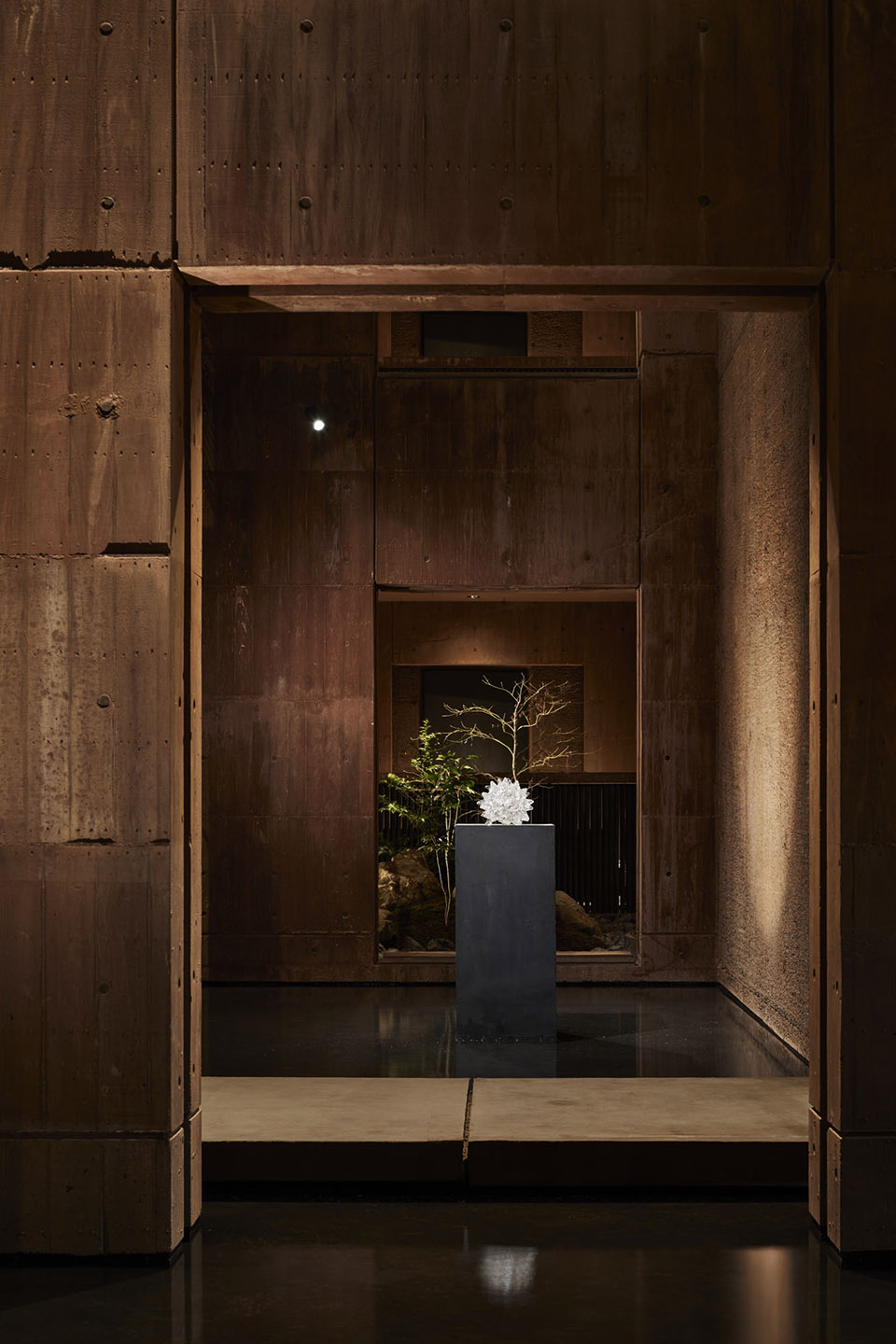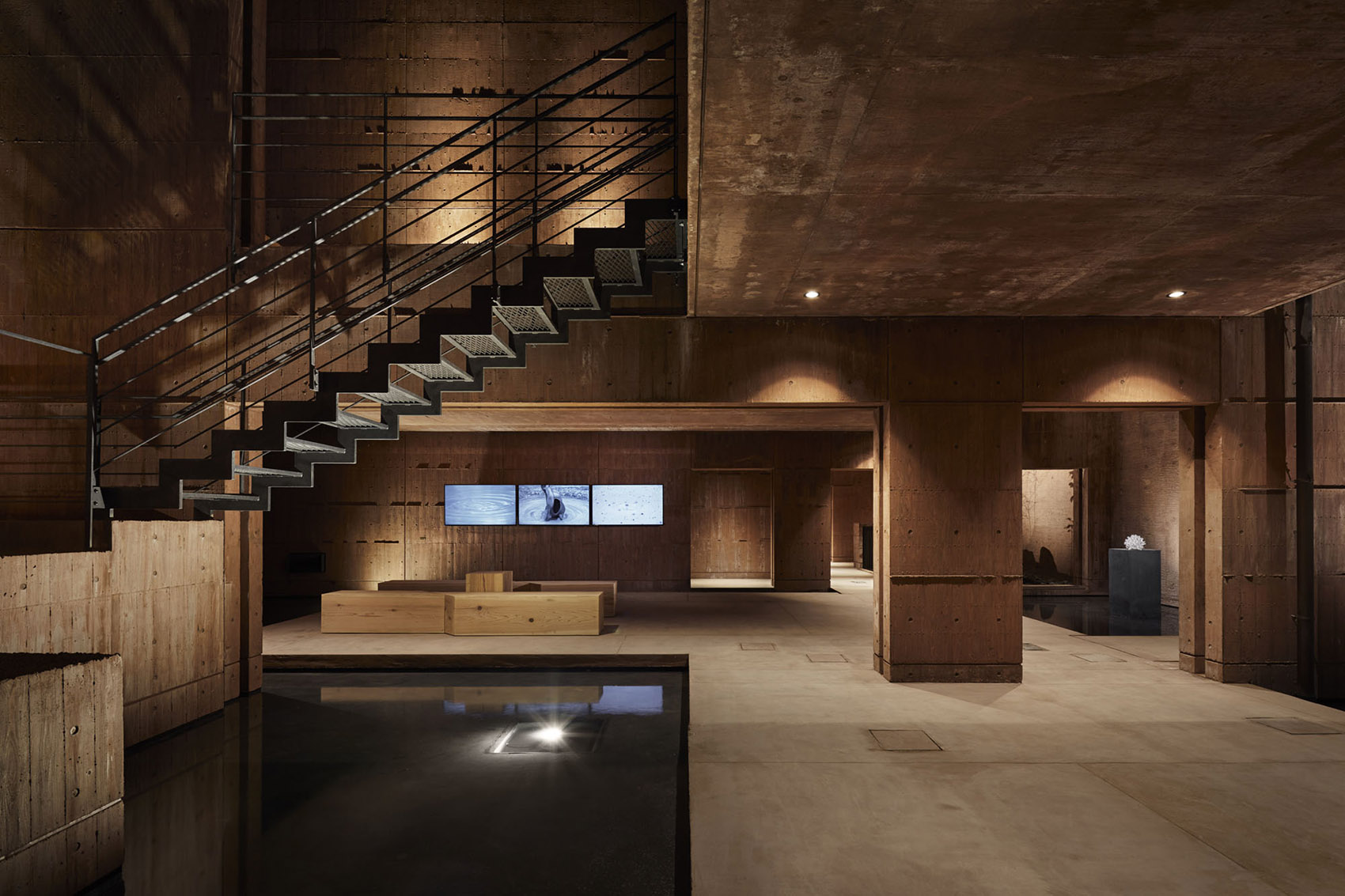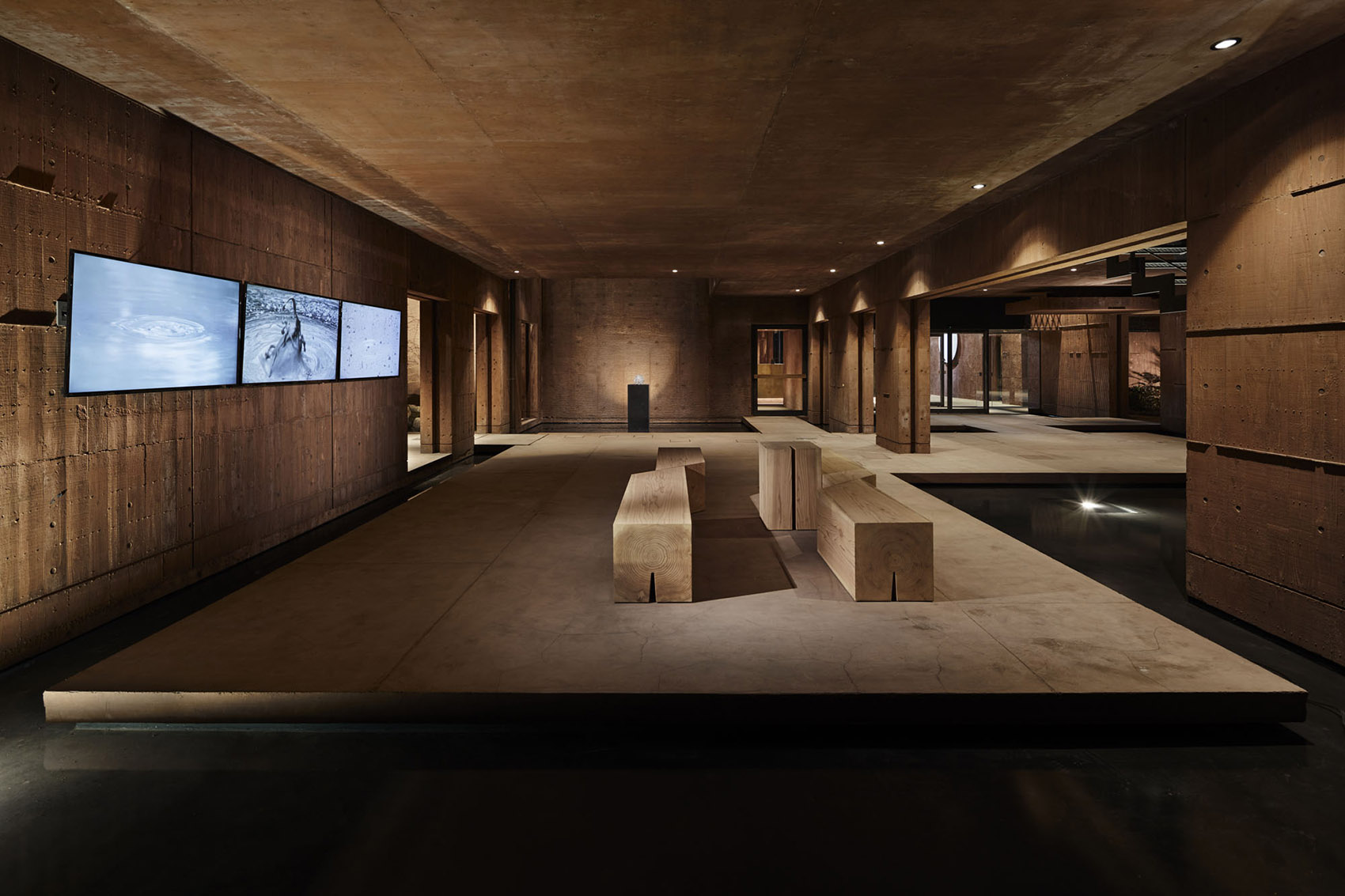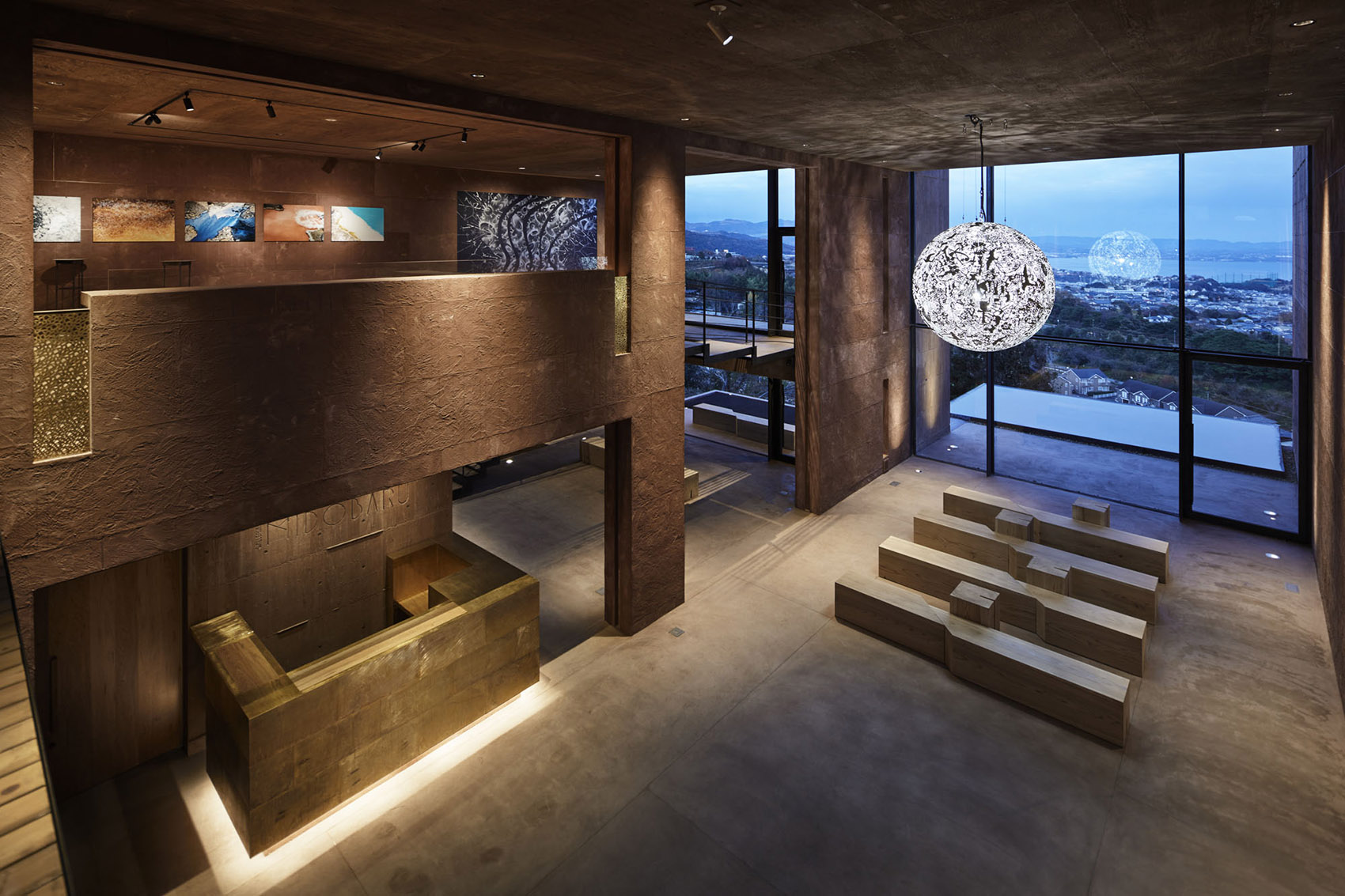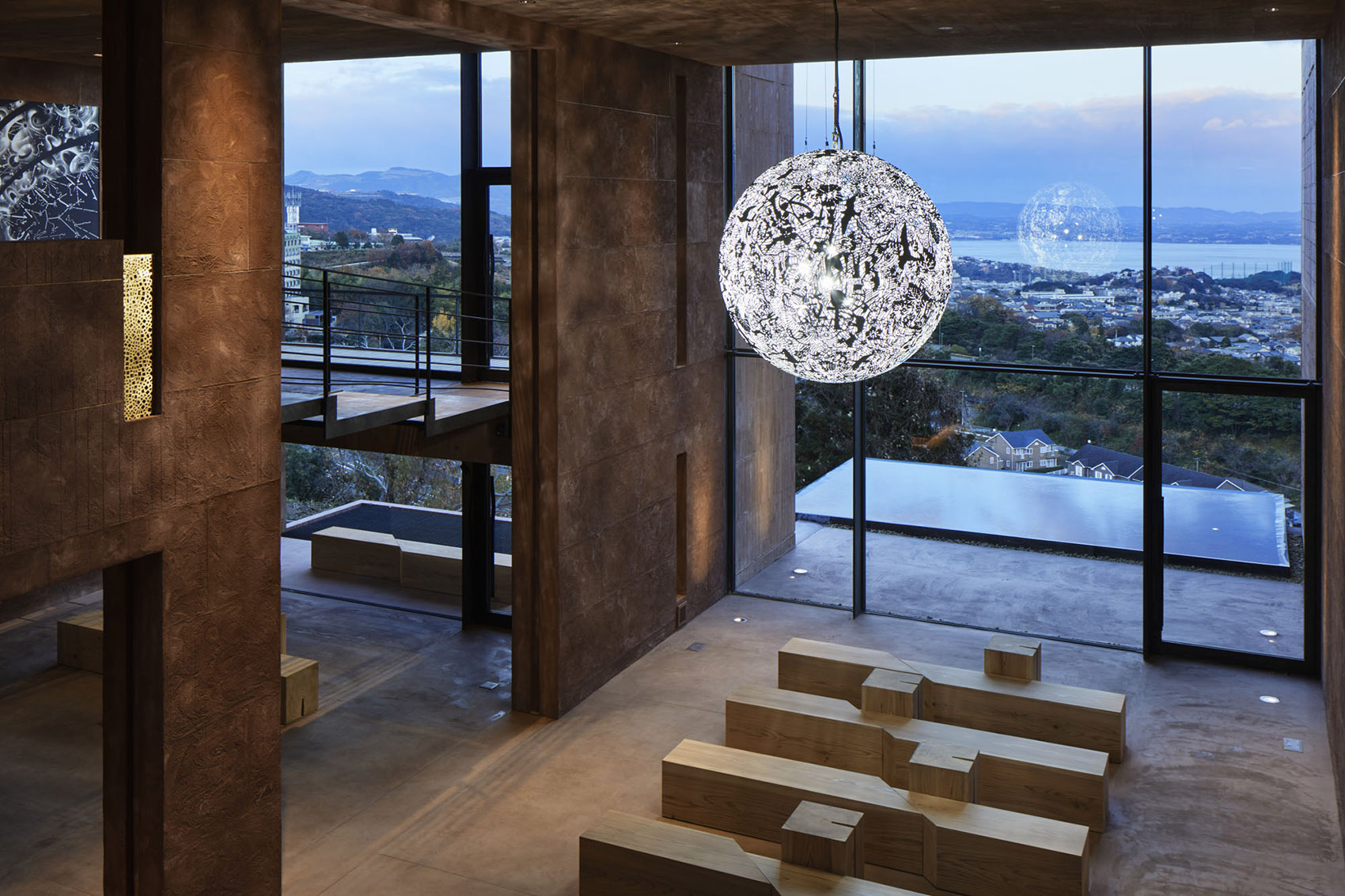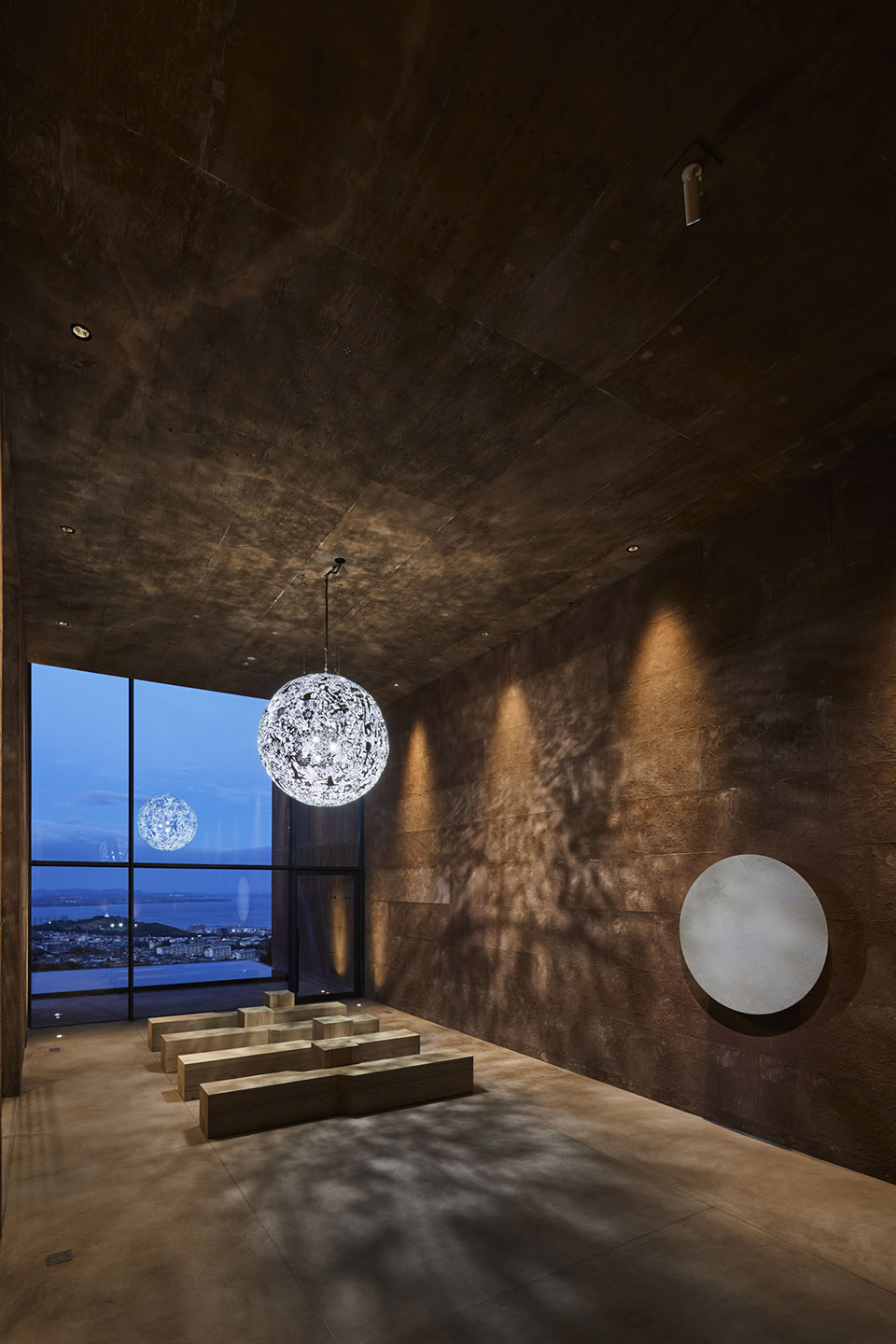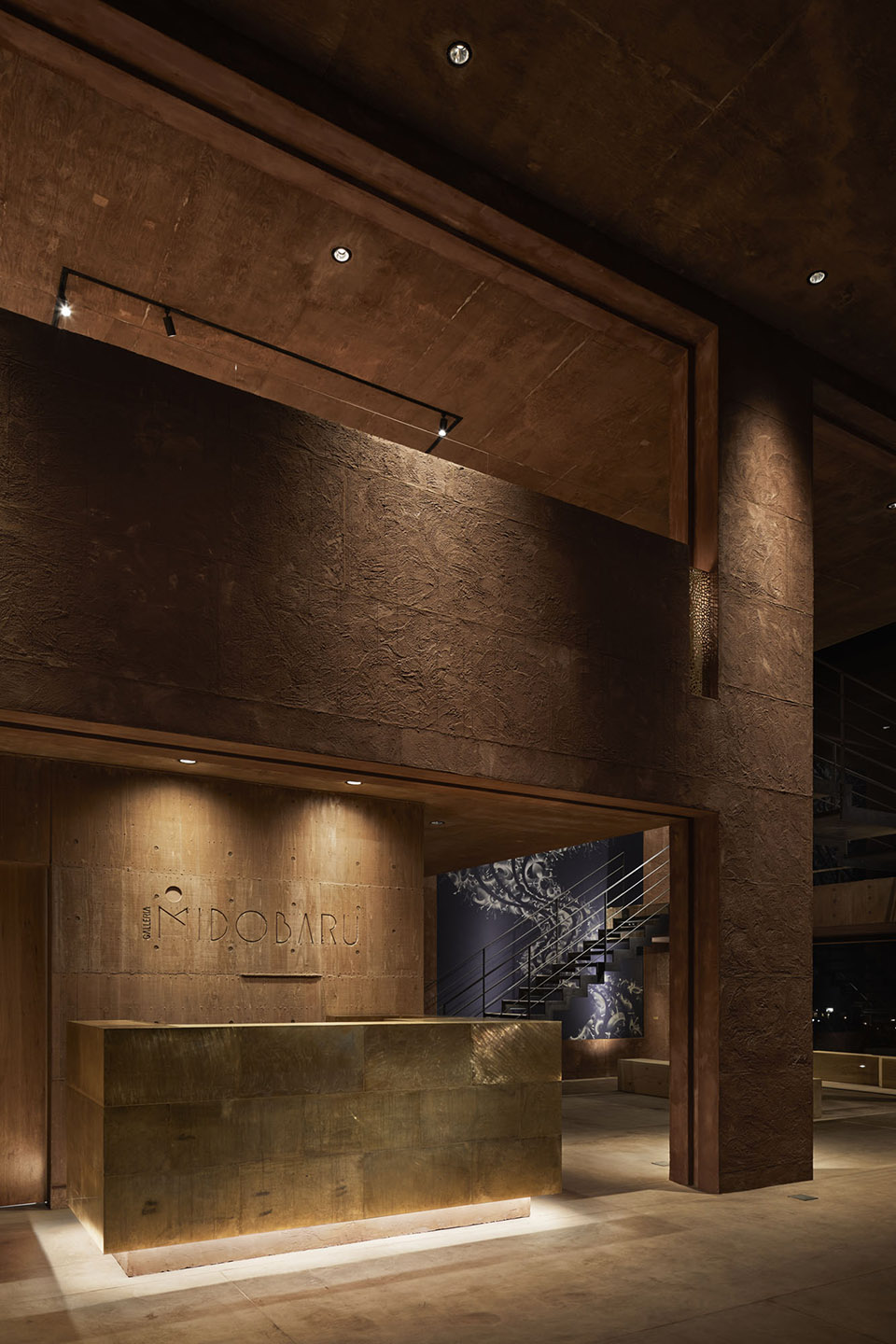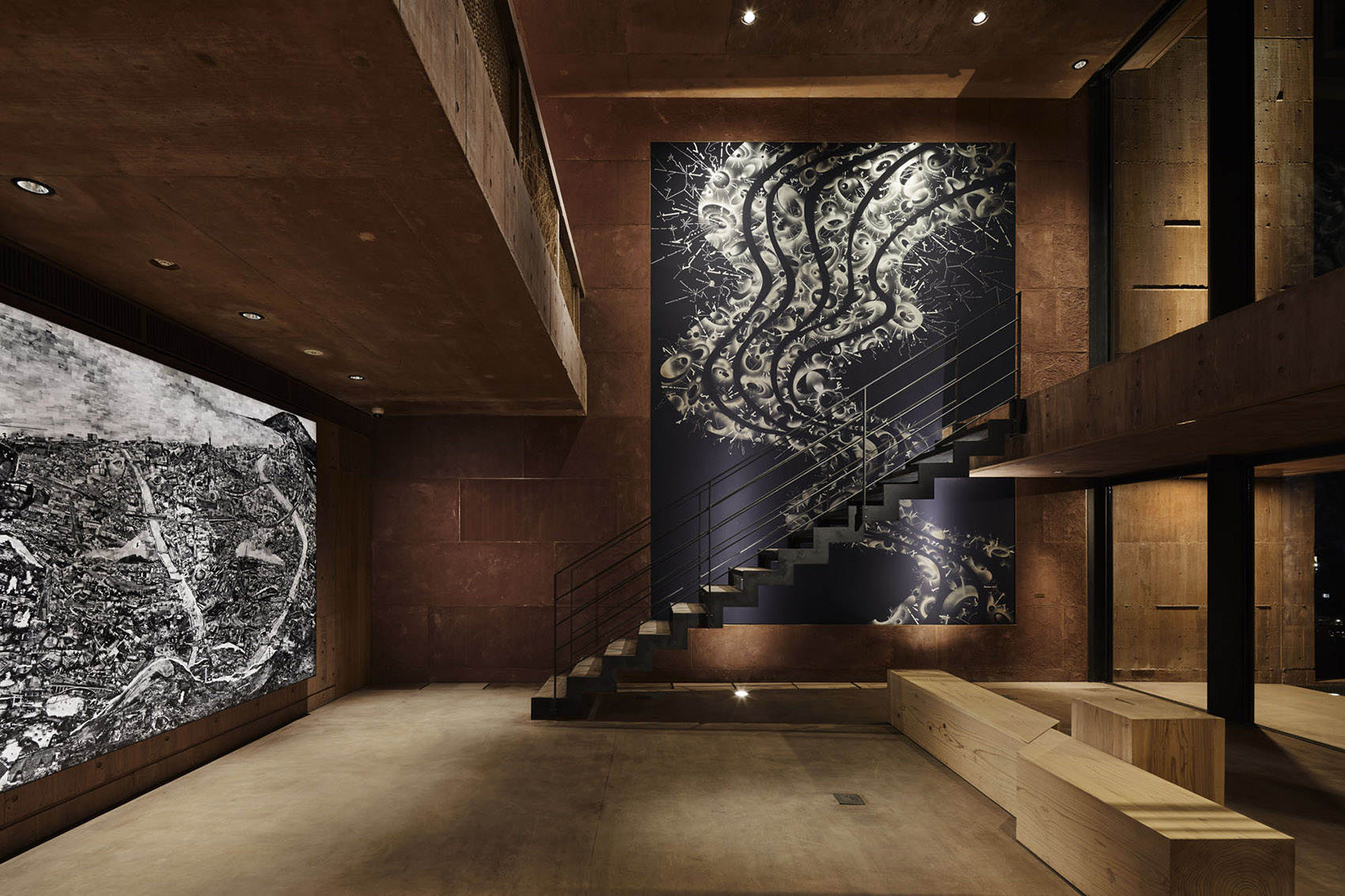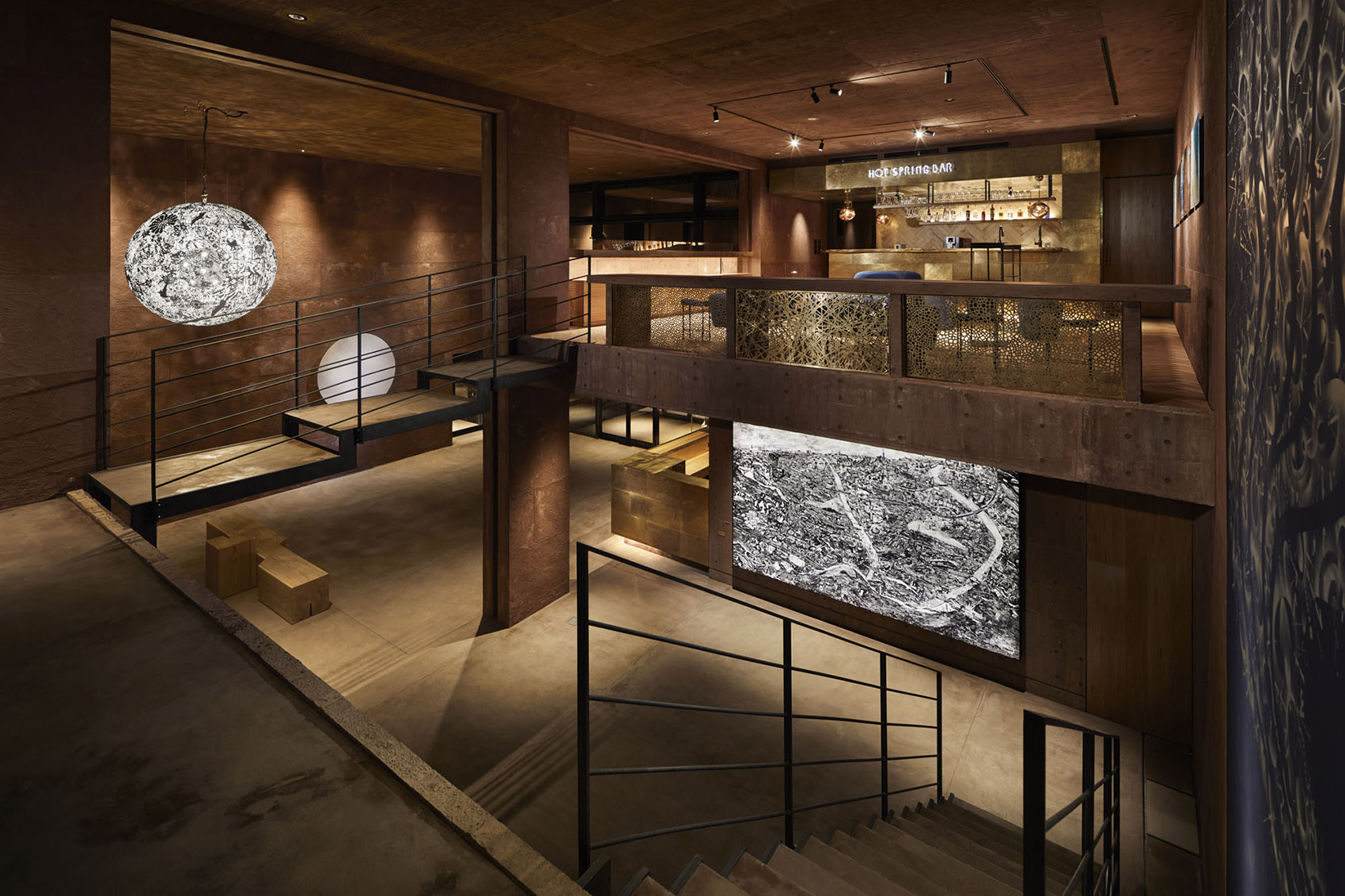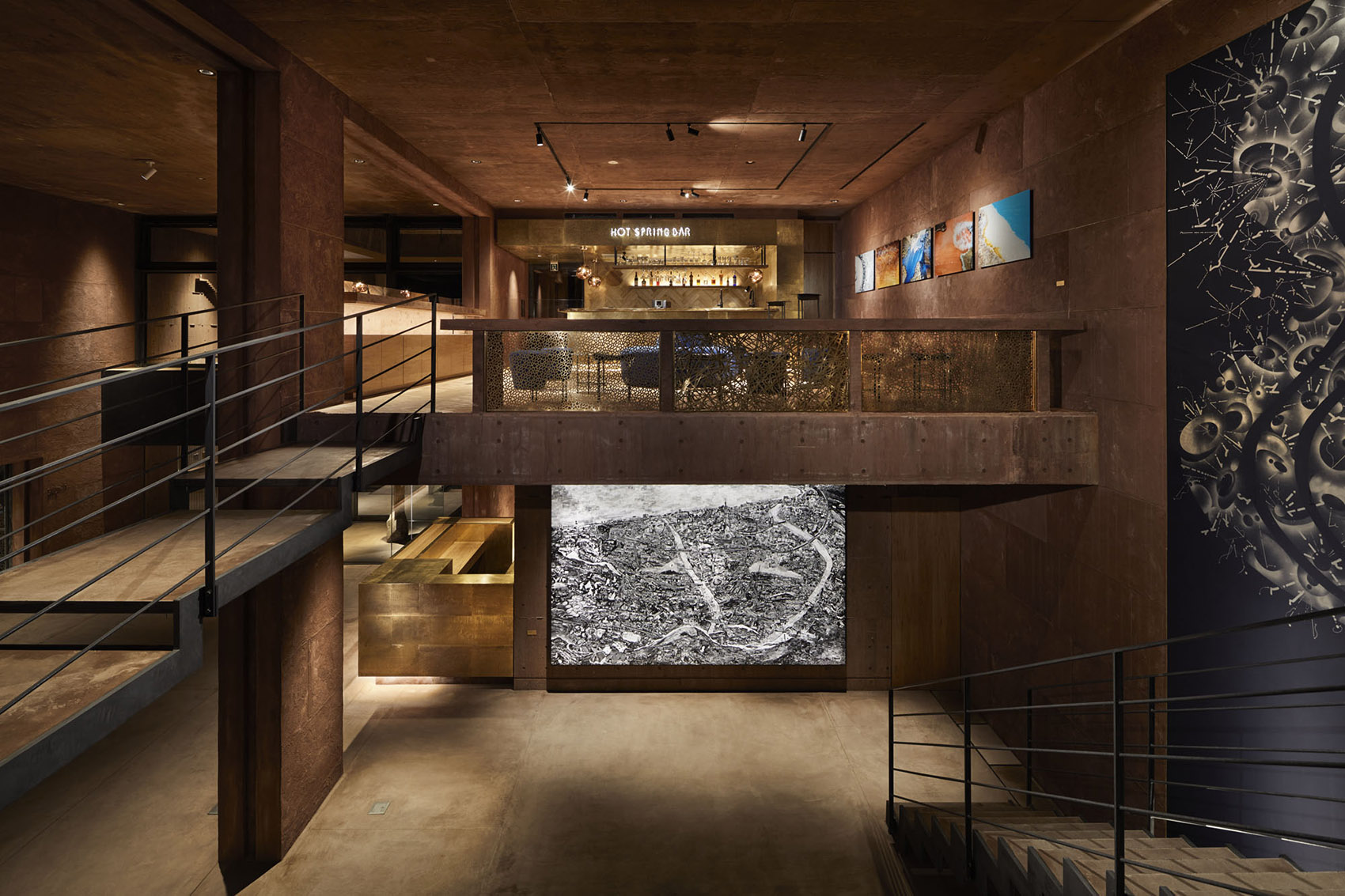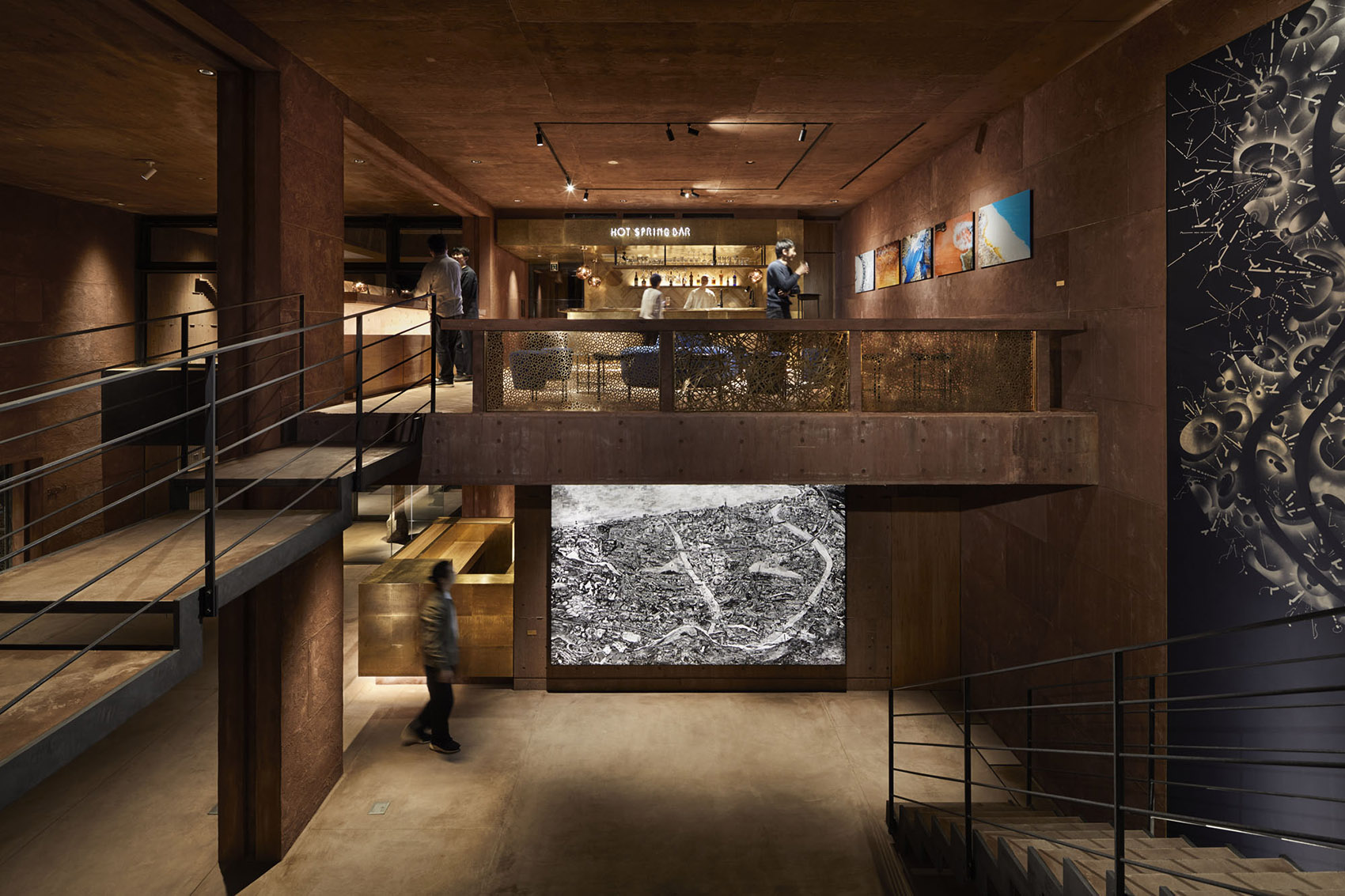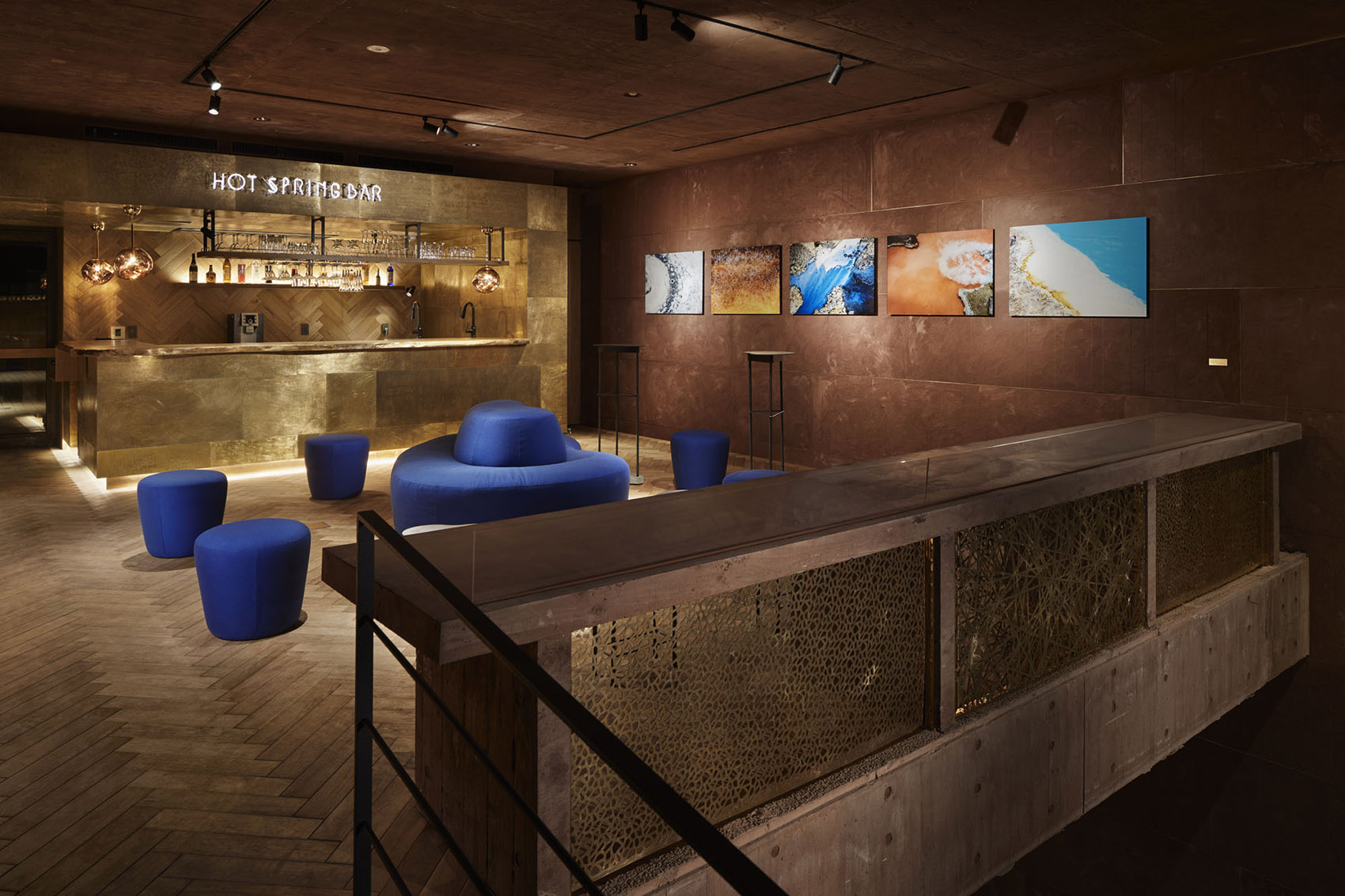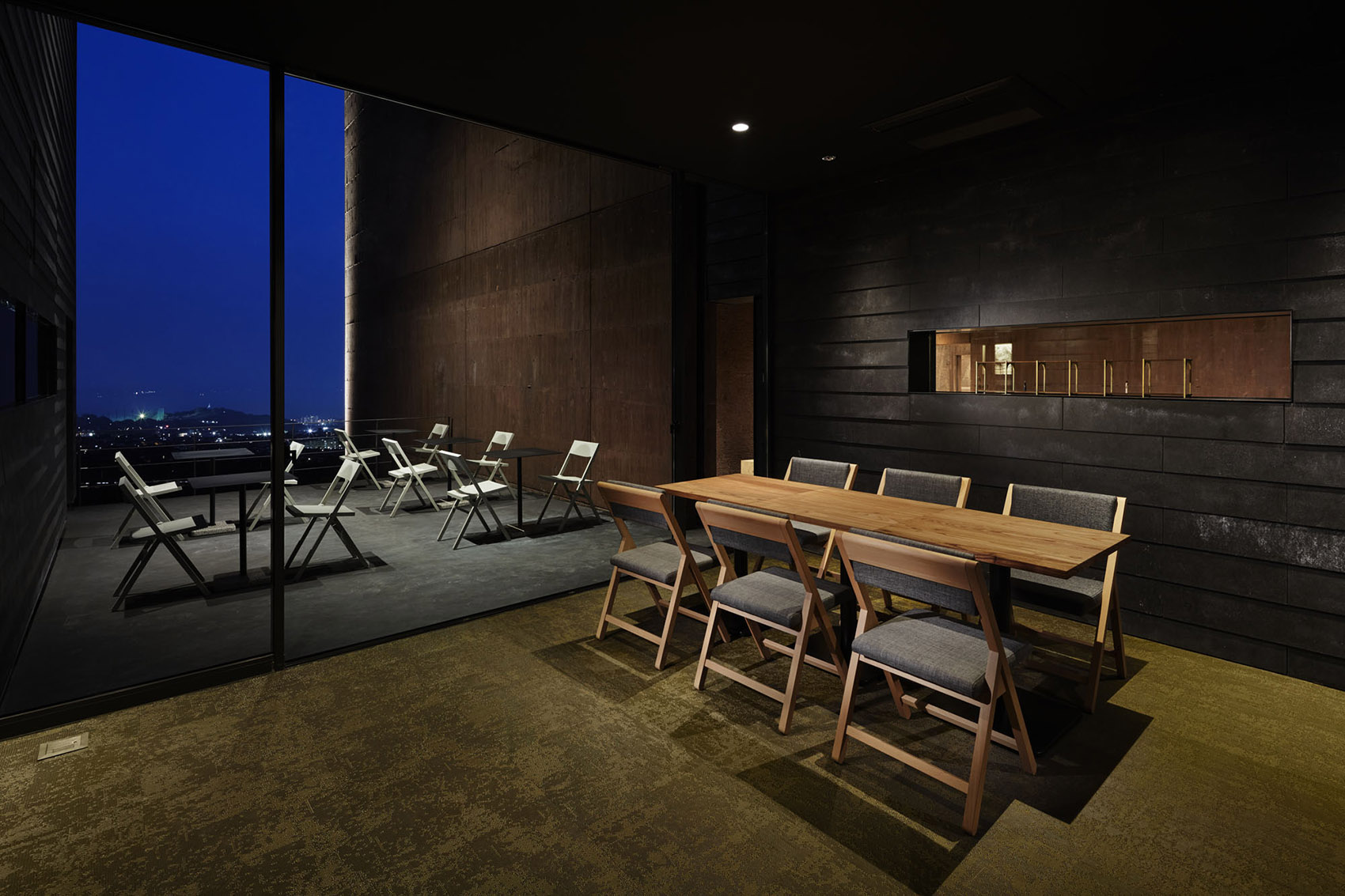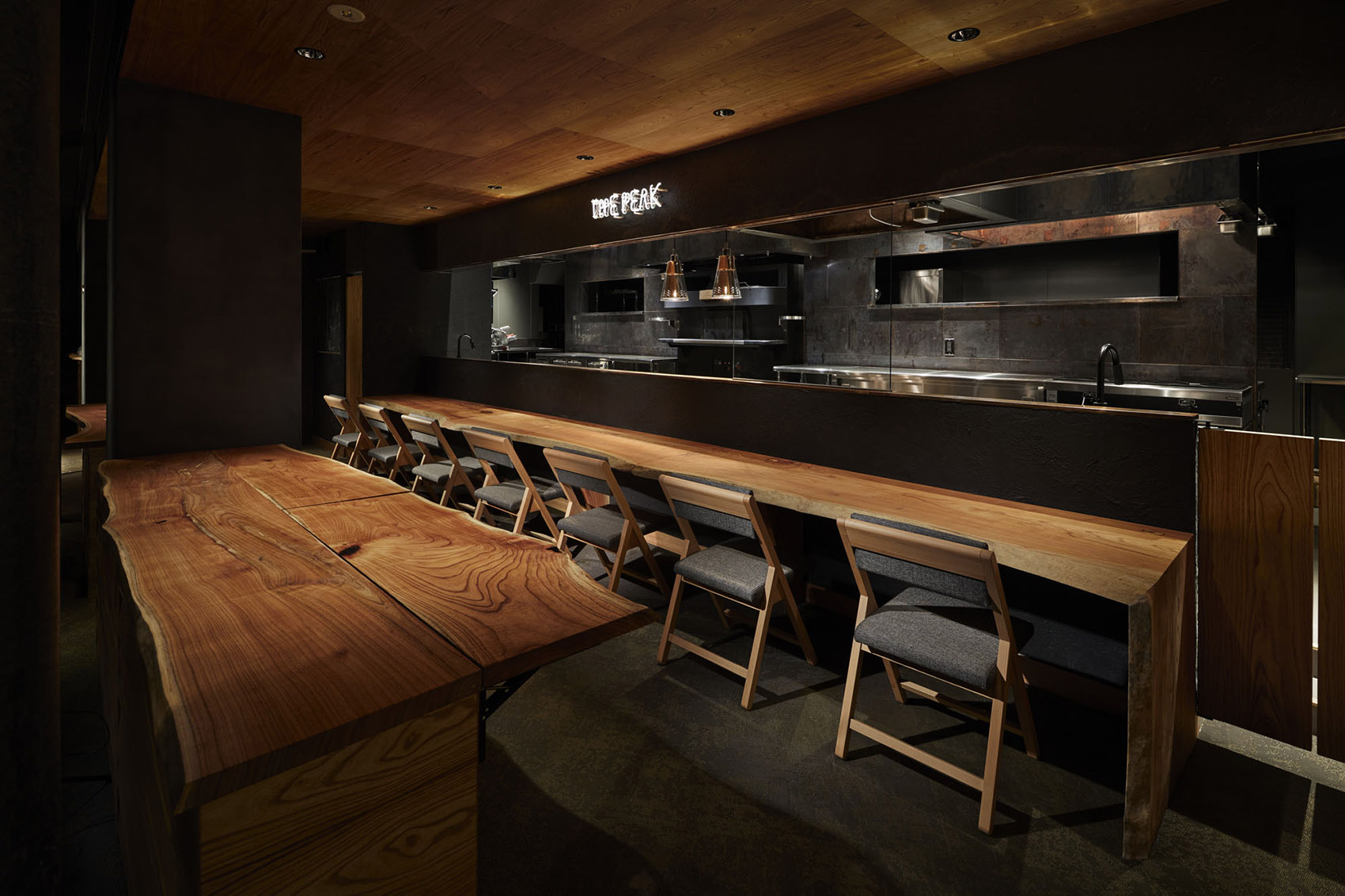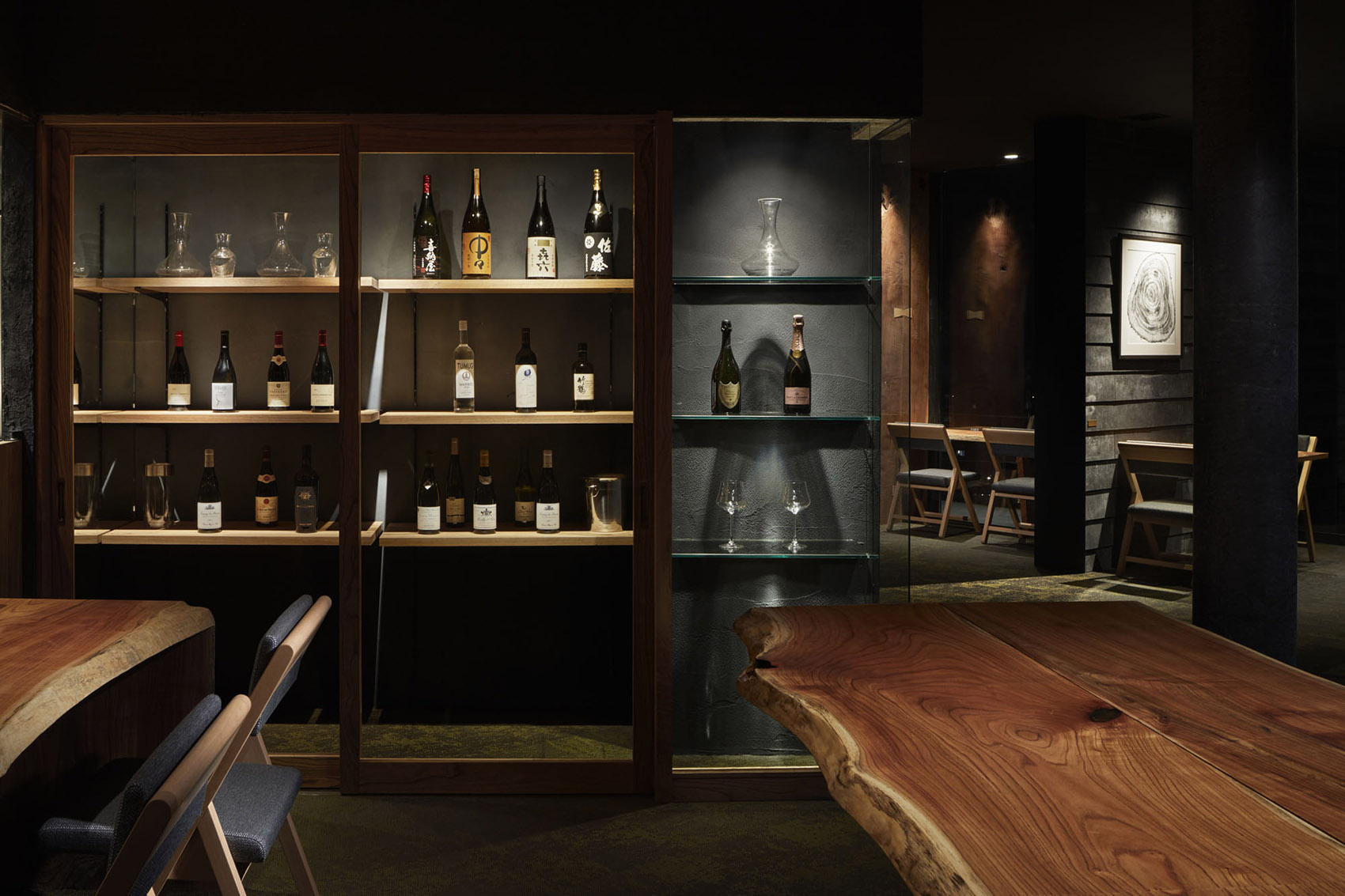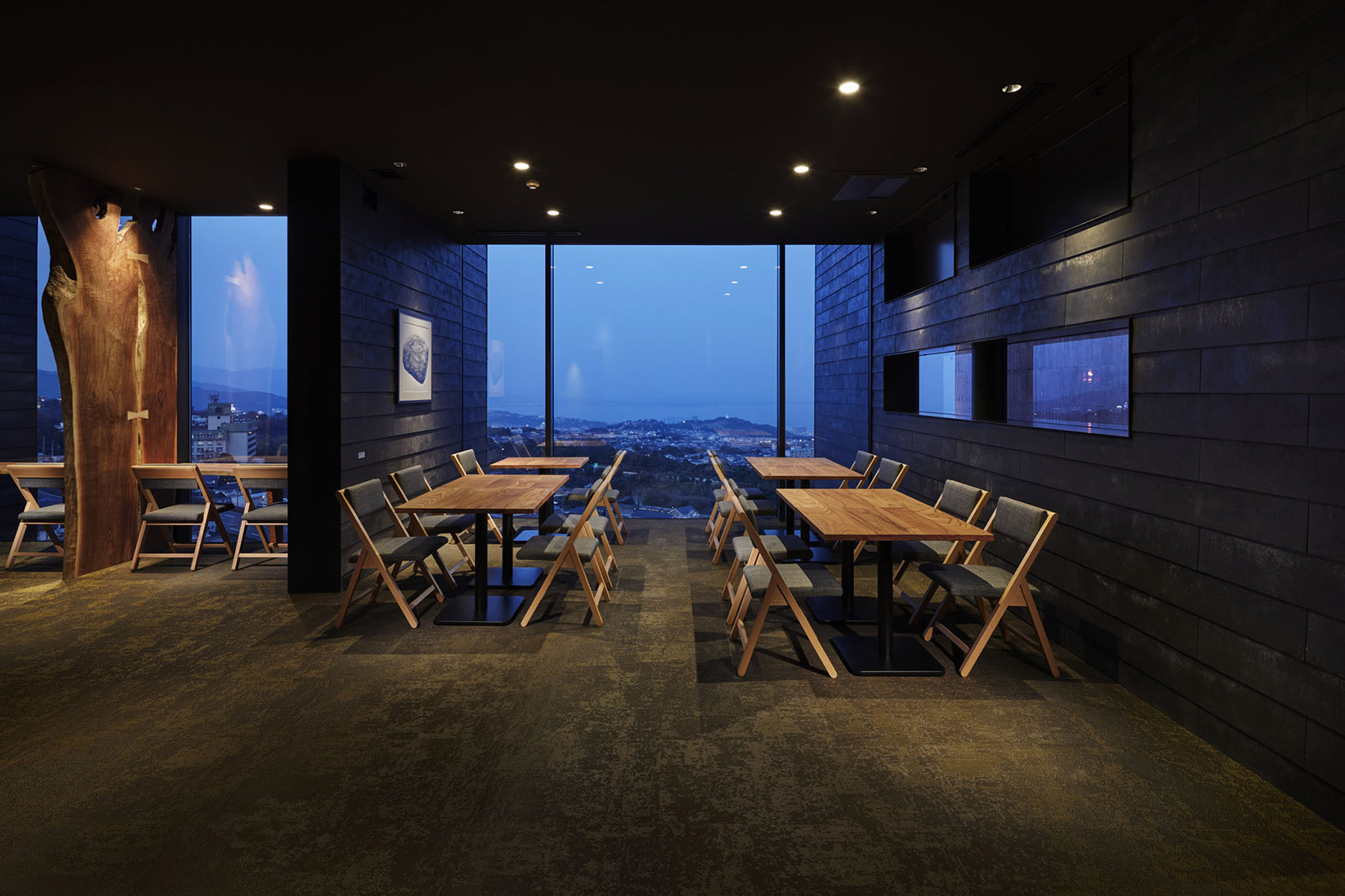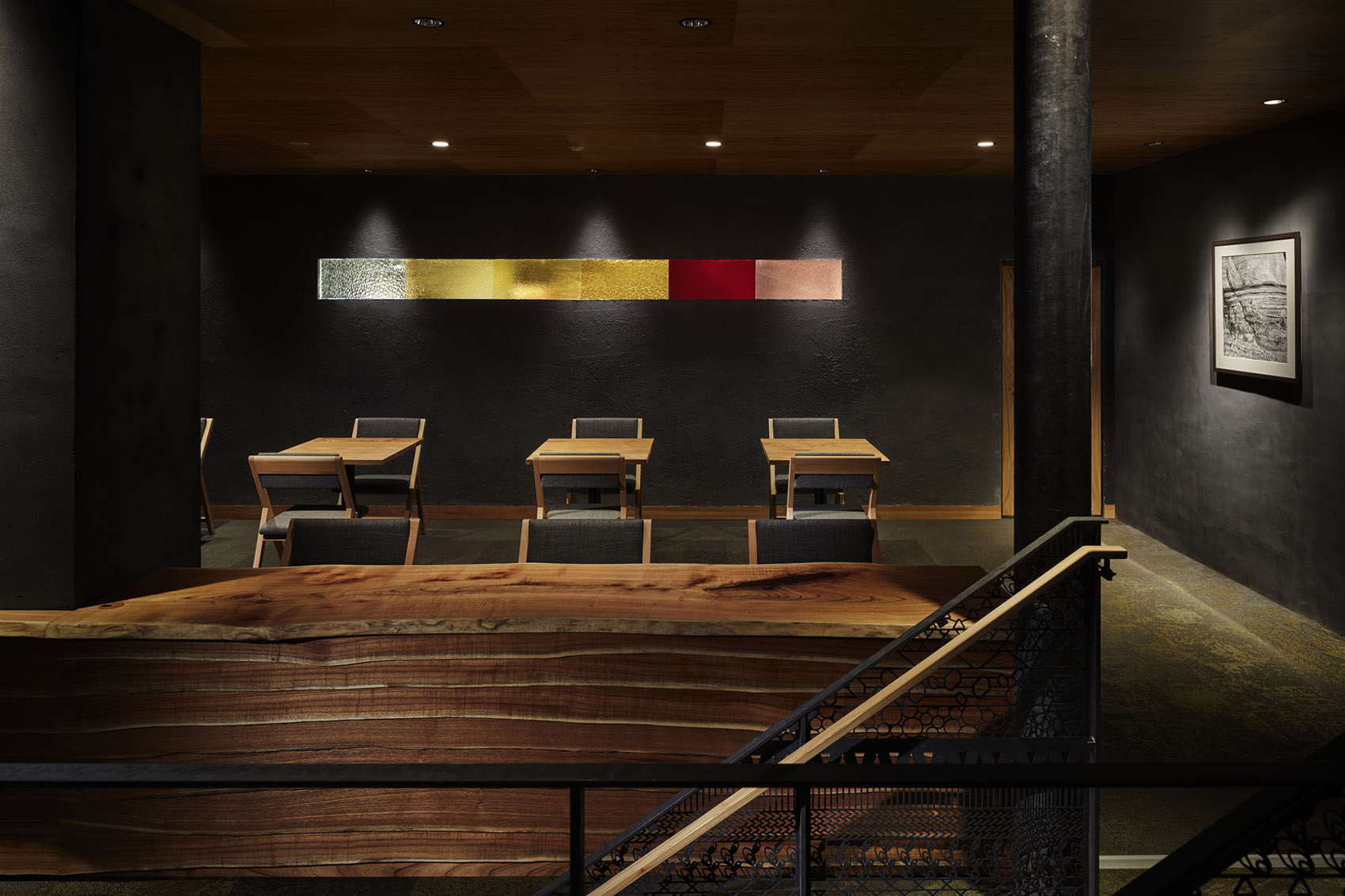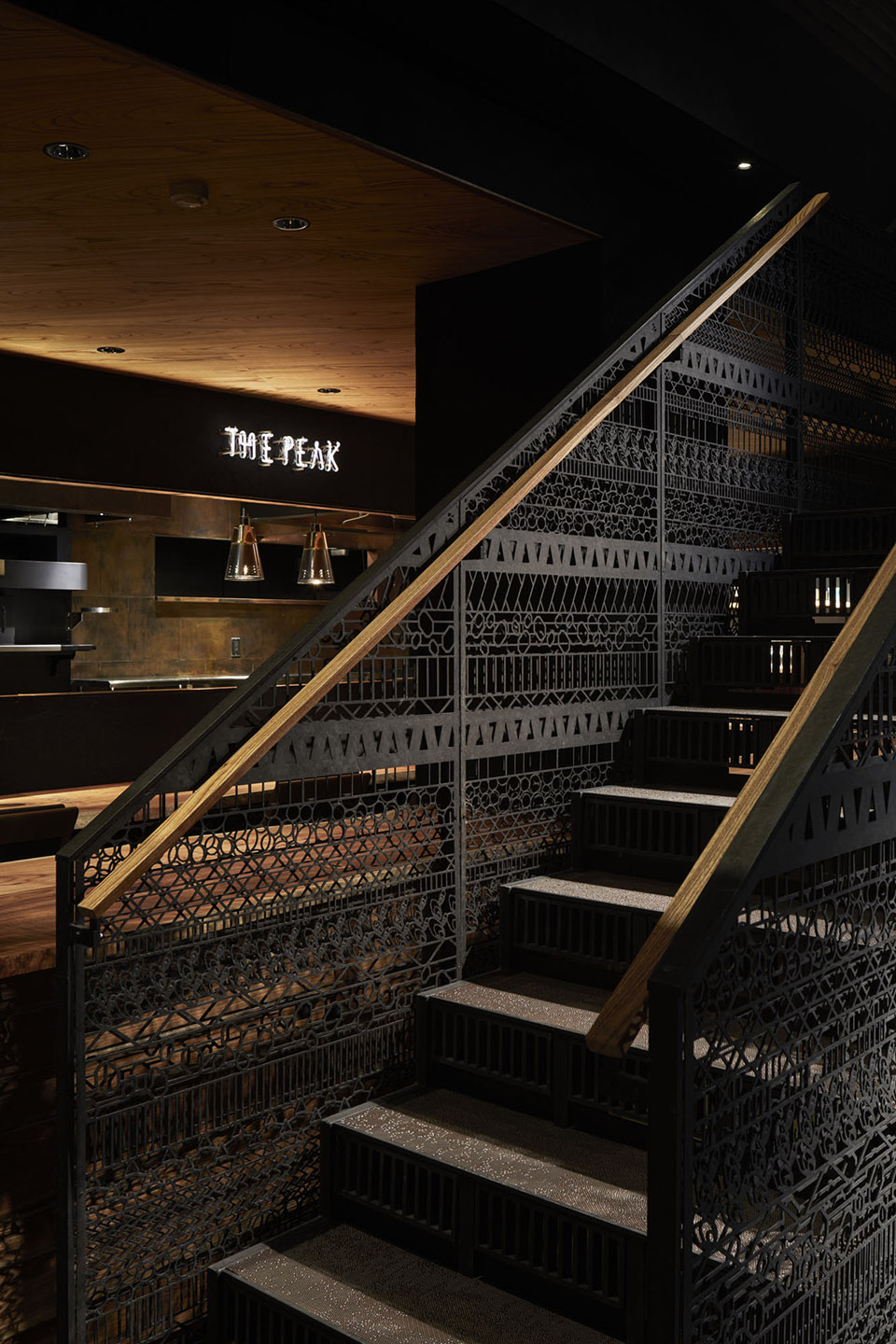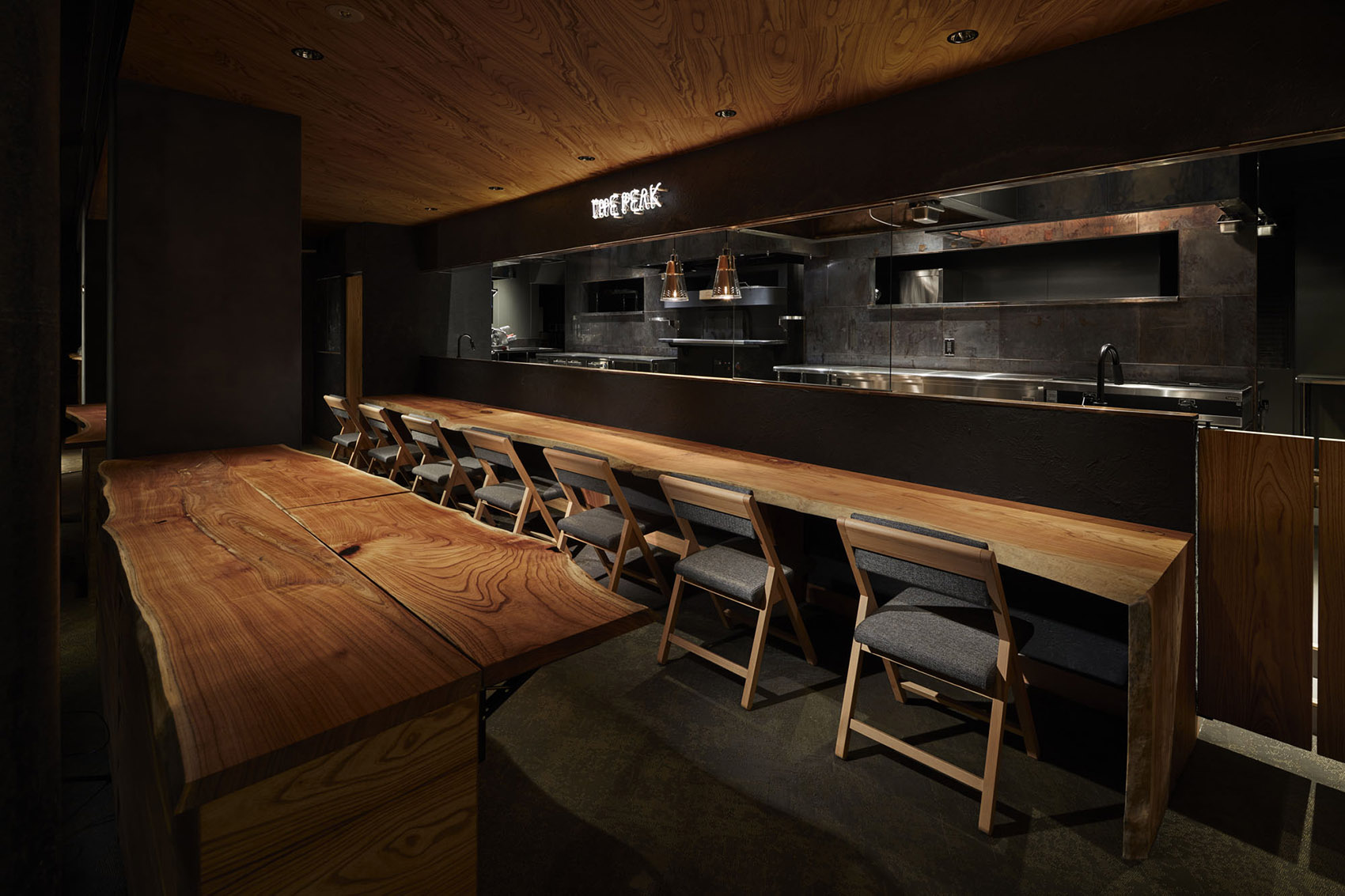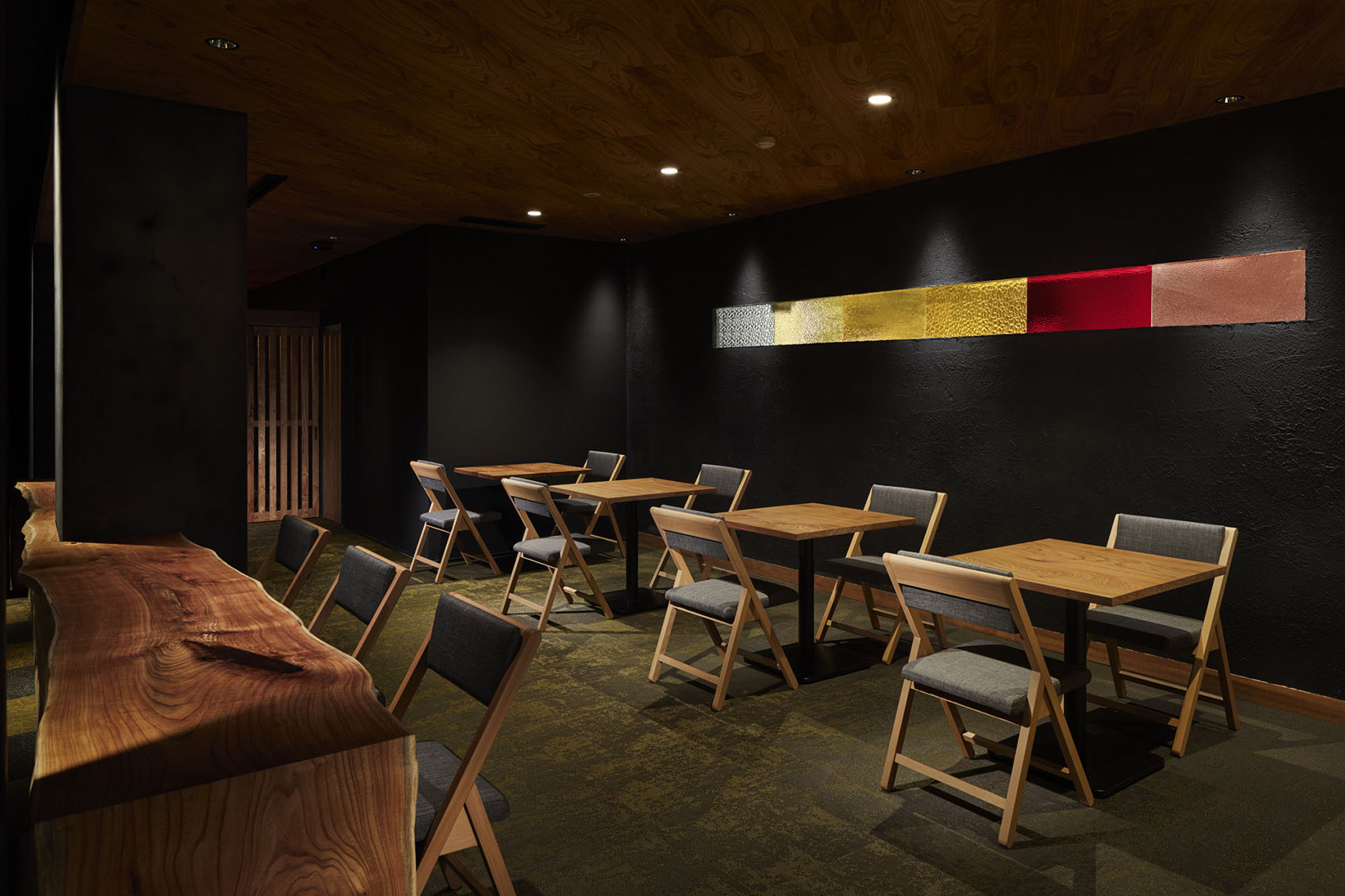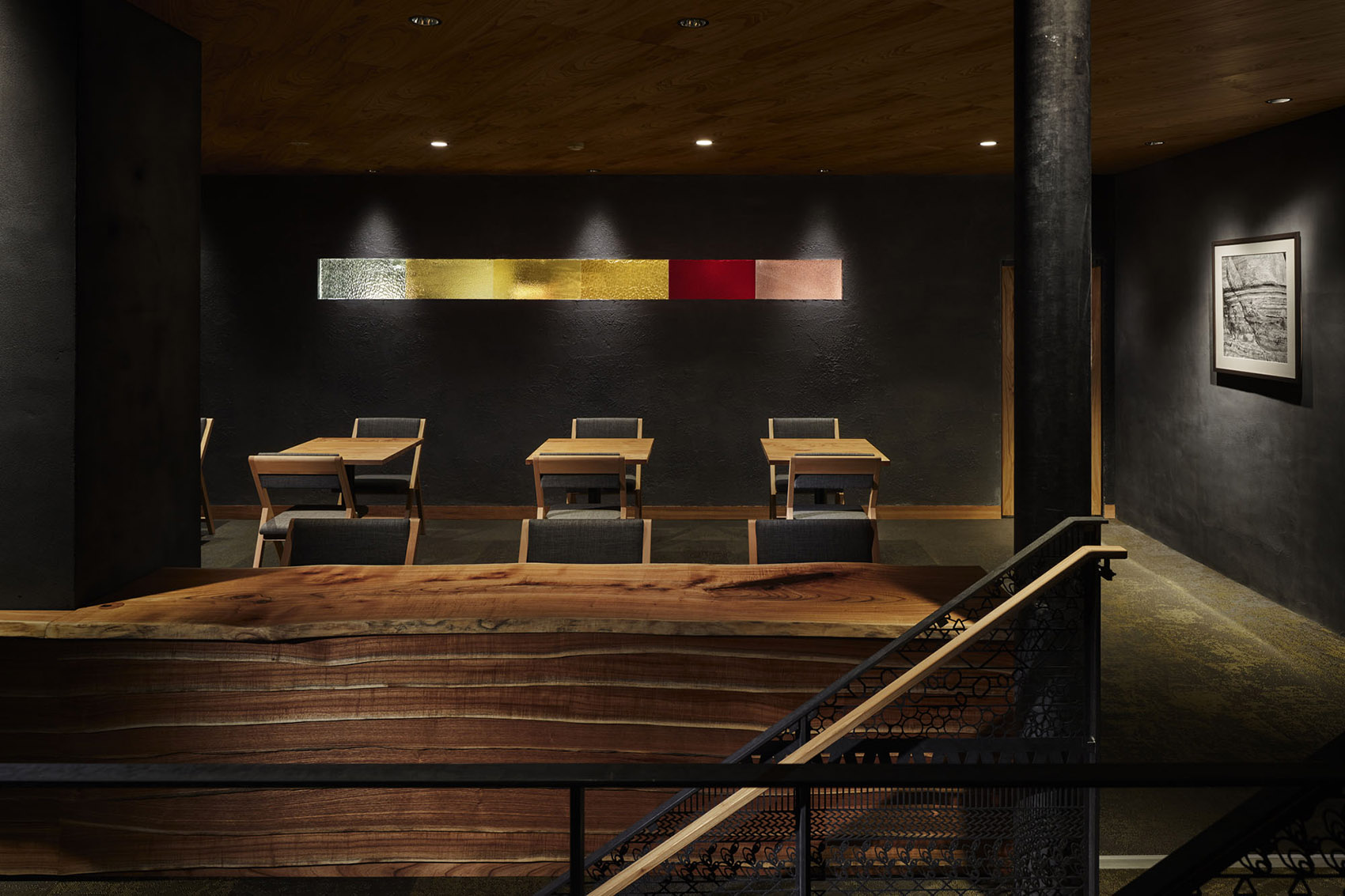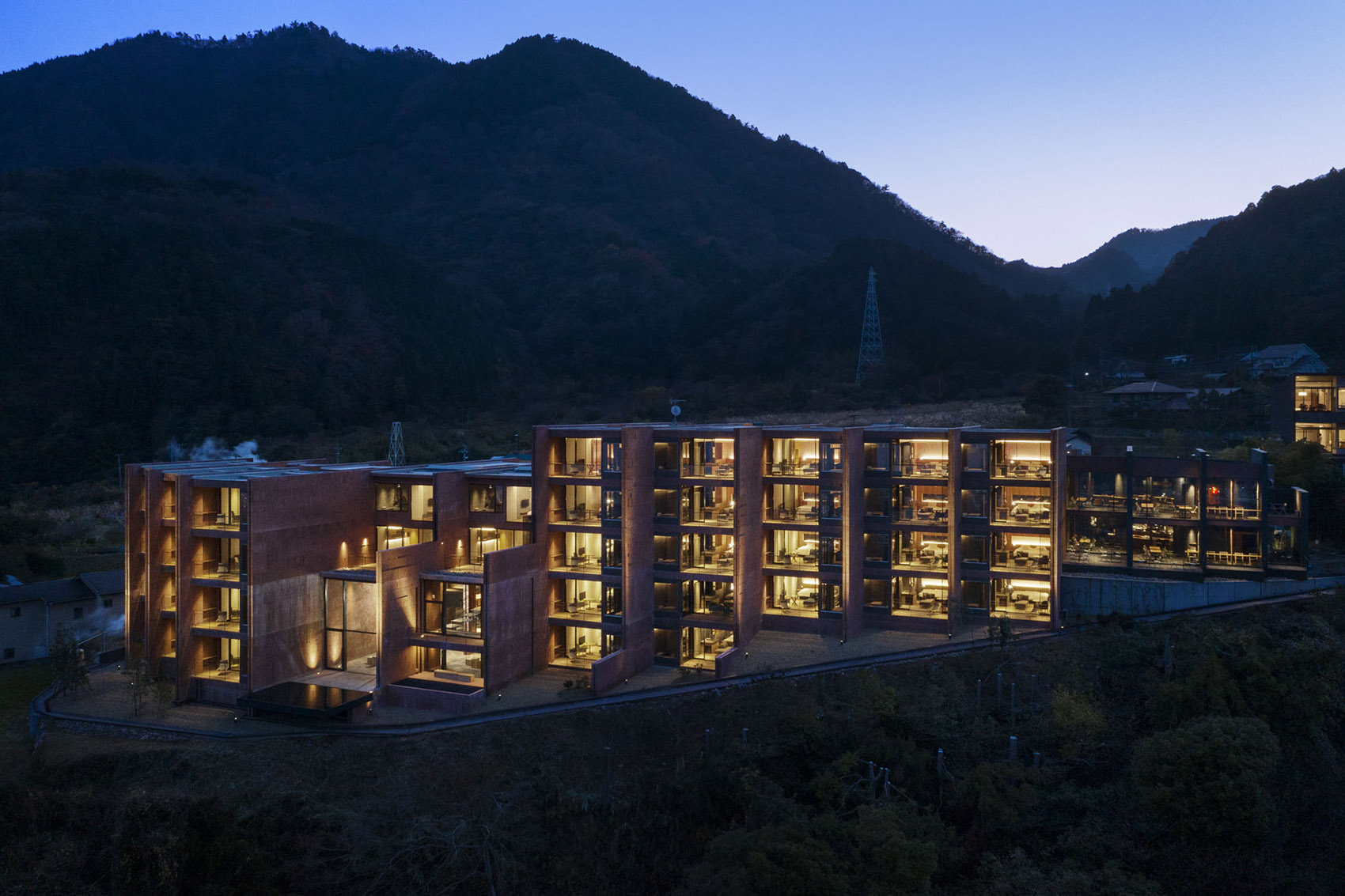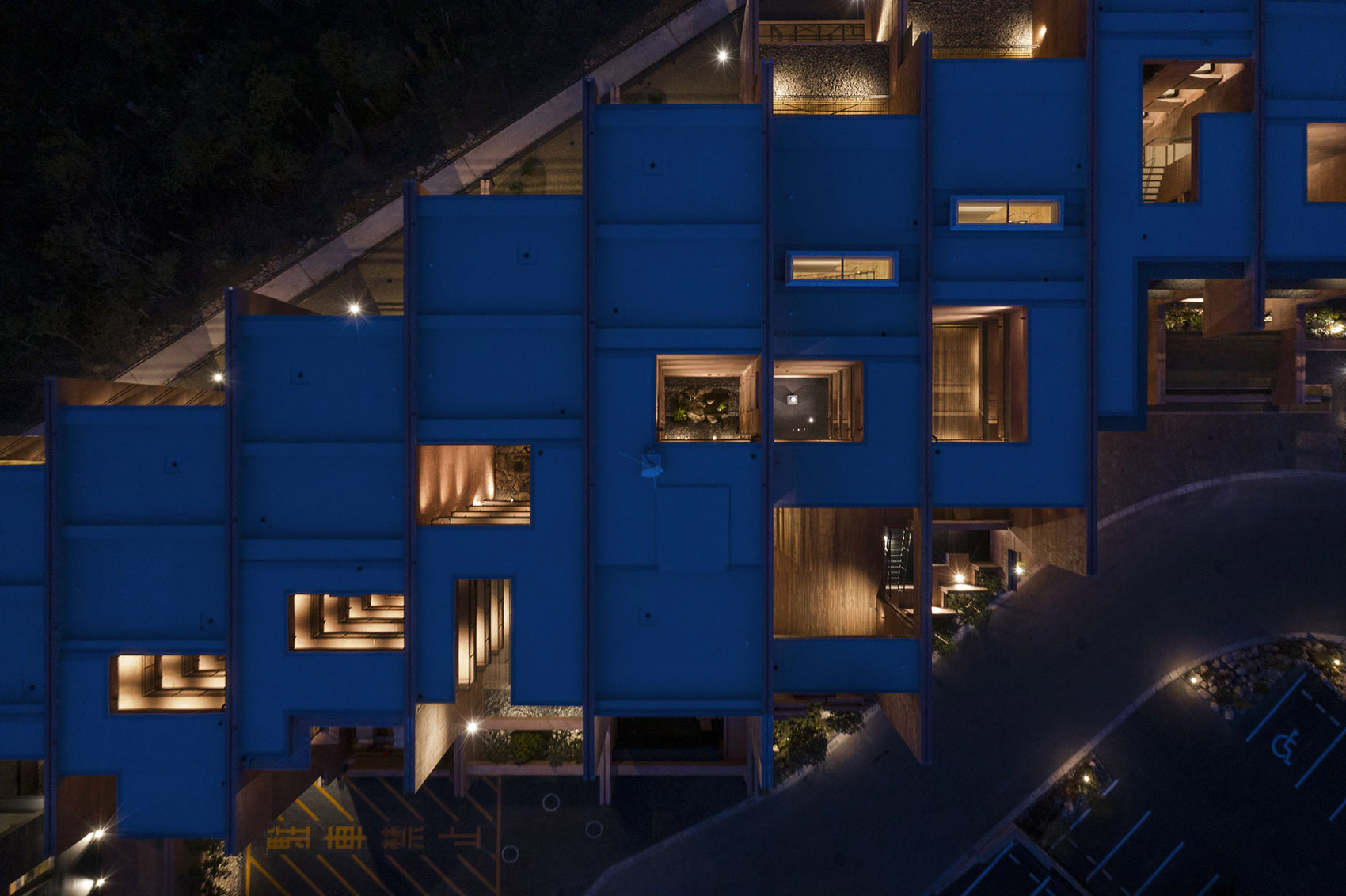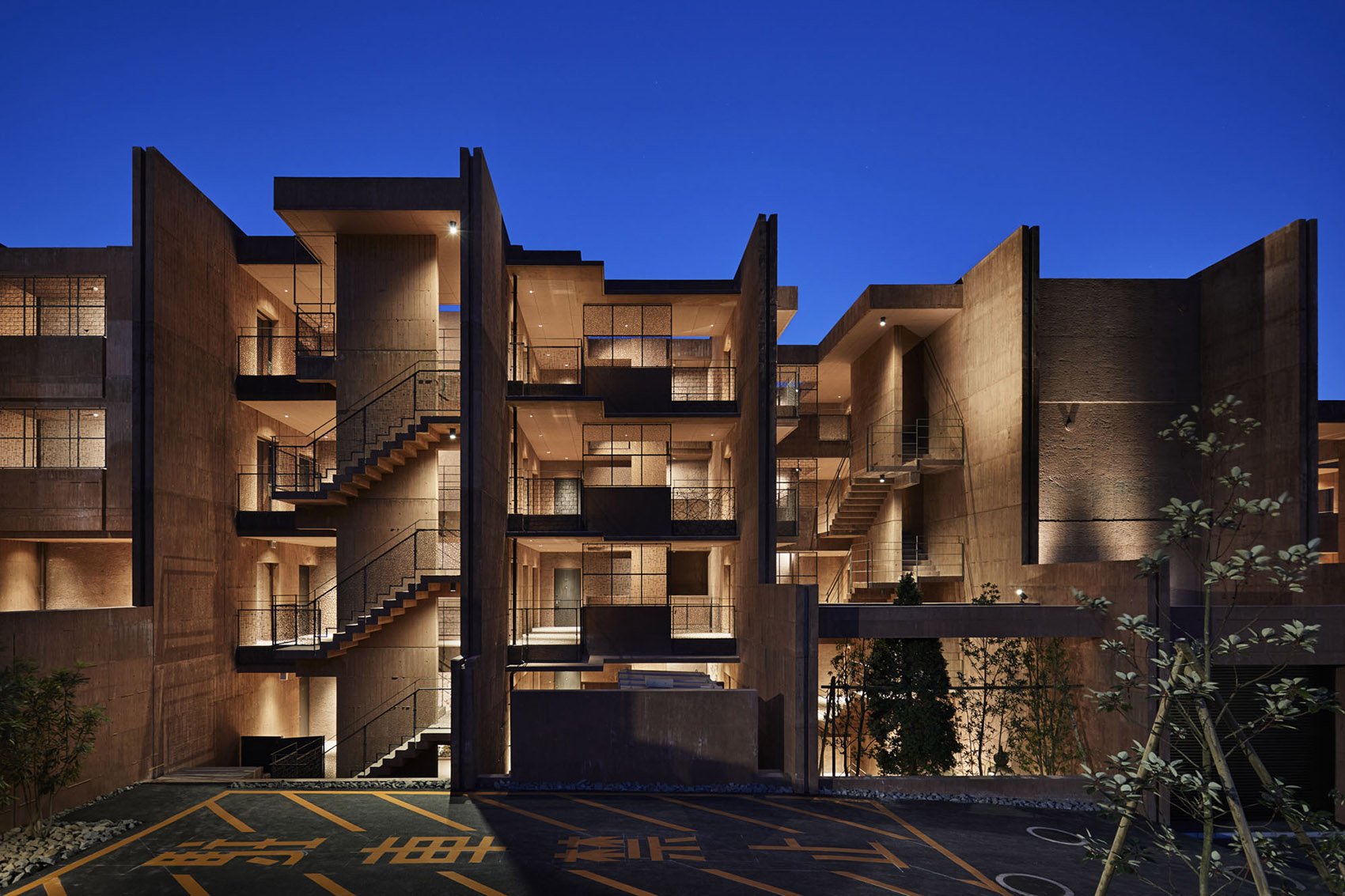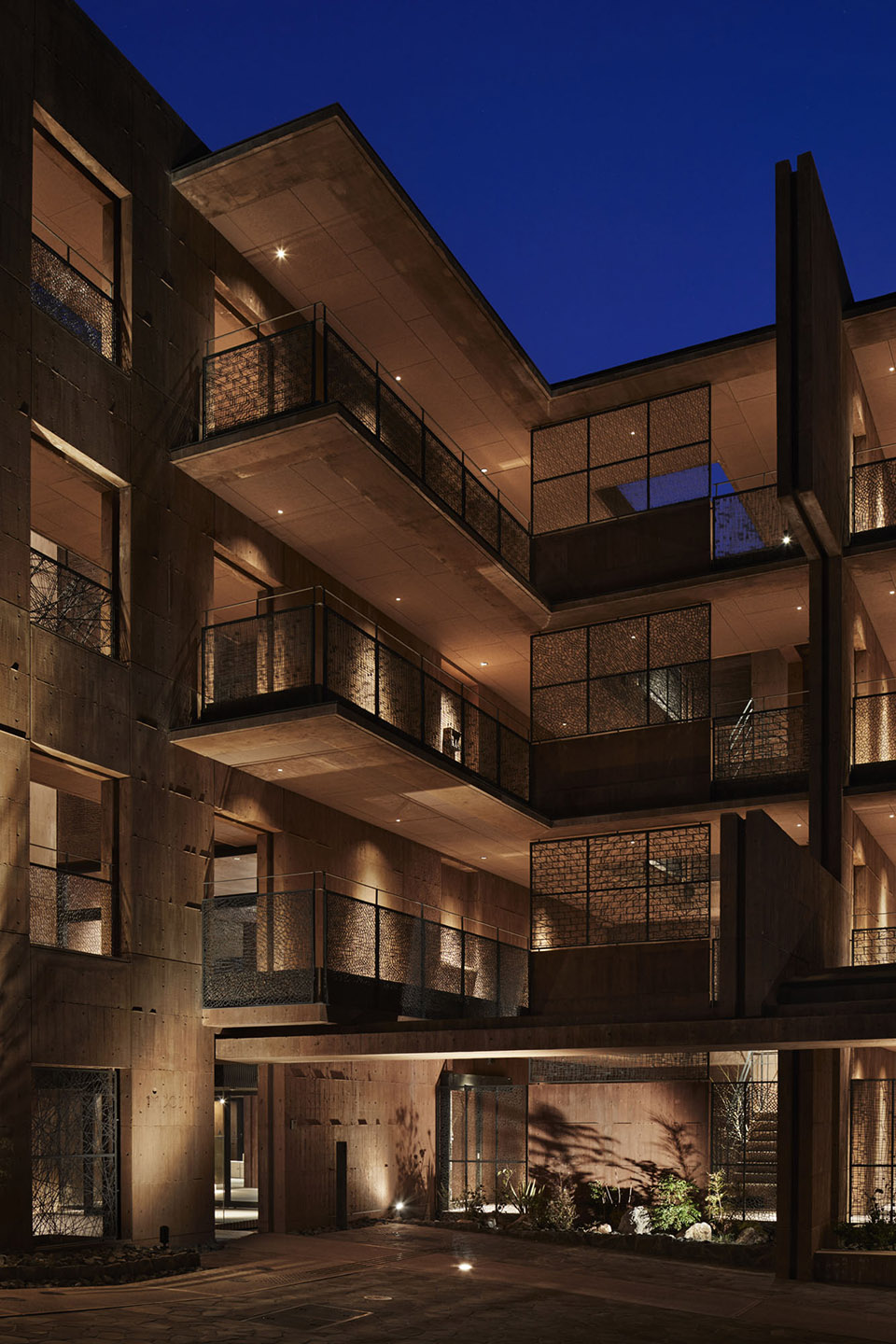Galleria Midobaru酒店位于日本别府,其业主Sekiya Resort Group自1900年起就开始在当地经营日式传统客栈。项目坐落在悬崖山坡上,俯瞰着整座笼罩在温泉雾气中的城市与著名的别府湾。酒店内所有的套房都设有天然温泉浴室。设计旨在将当地的历史文化、自然环境,与新兴的文化相结合。因地制宜的建筑与特别设计的空间是本项目的最大亮点,这些空间促进了人与人之间的互动,使Galleria Midobaru酒店成为别府新地标。
This is a hotel in Beppu, Japan. The owner is a traditional inn company founded in this city in 1900. It stands on a cliff overlooking the hot spring steam cityscape and Beppu Bay. All guest rooms have free-flowing hot spring bath. We designed it for those who want the emergence of a new culture connecting to local history, culture and nature. Its greatest feature is “site-specific” architecture and spaces. Those promote people to interact, and the hotel acts as a new community base.
▼项目与周边环境整体概览,overview of the project and surrounding environment © Nacasa & Partners Inc.
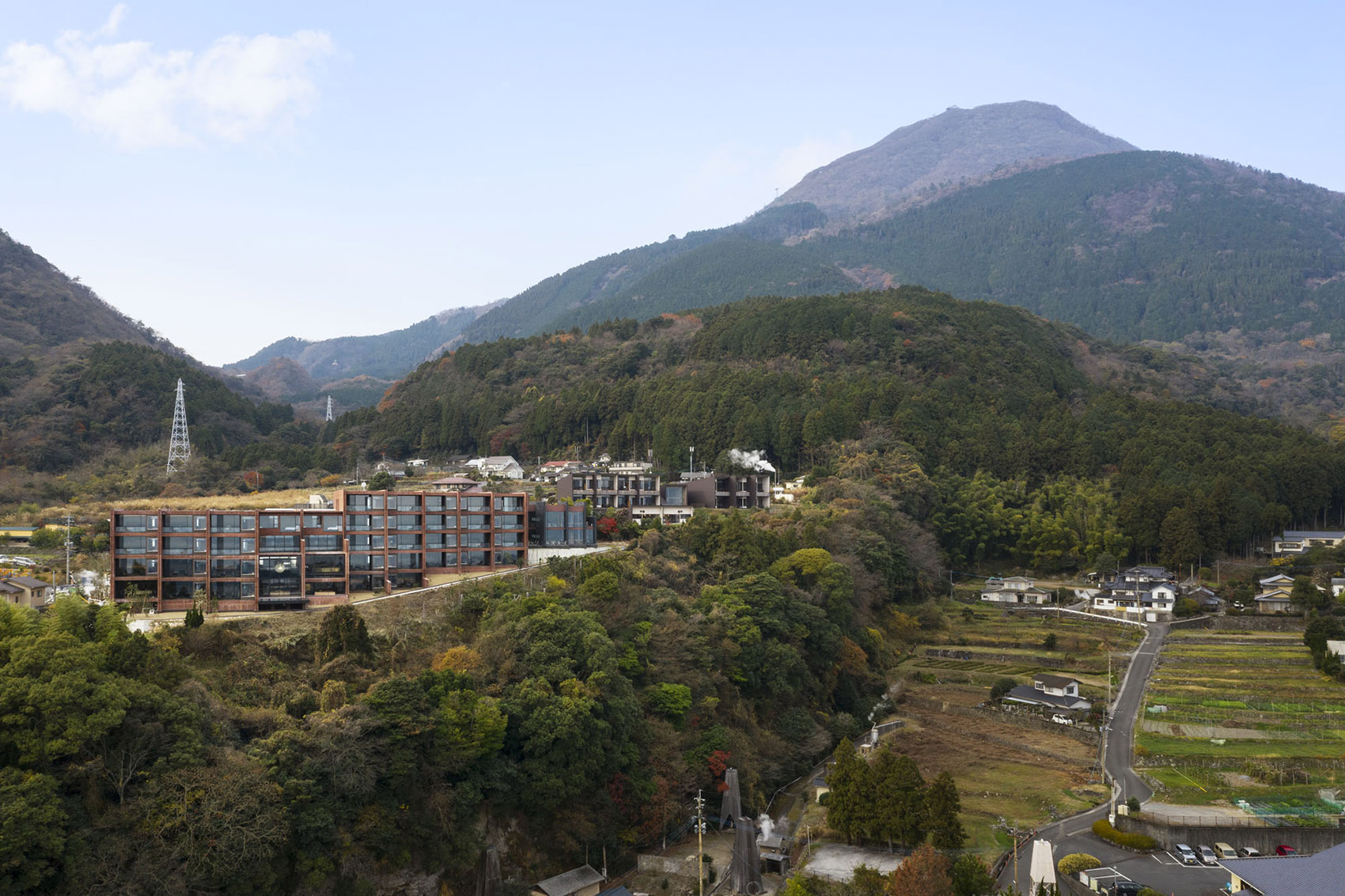
▼远观山坡上的酒店,viewing the hotel at distance © Nacasa & Partners Inc.

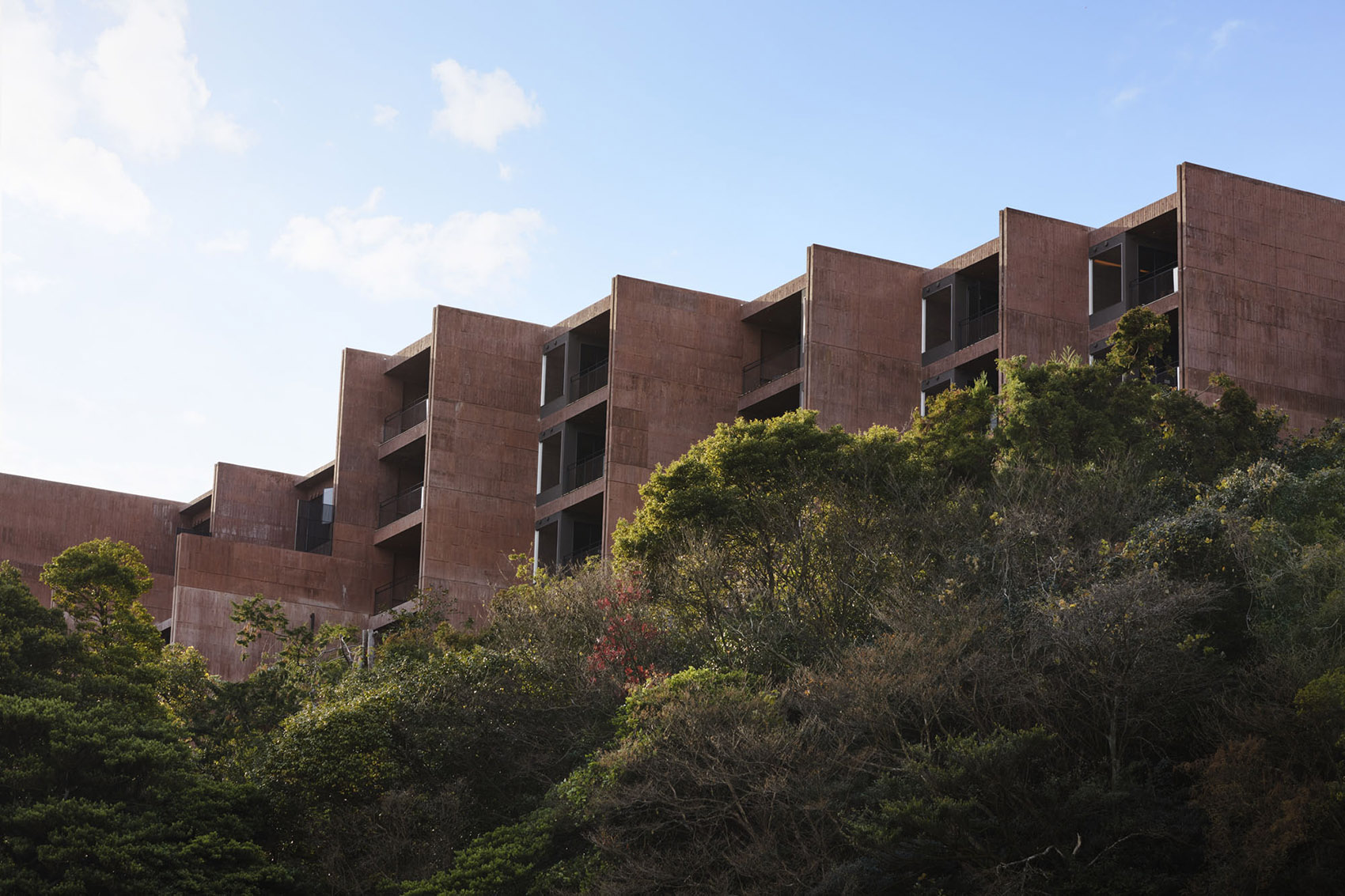
好的酒店建筑能够体现出当地独特的区位特点、融入当地环境,引领设计风潮。Galleria Midobaru酒店坐落于别府市西南堀田温泉断层崖上的“御冢”区。别府市以温泉闻名,而堀田温泉则是别府八大温泉之一。当地温泉的起源可以追溯到史前地壳运动时期。从大分县别府市到长崎县岛原市拥有丰富的东西走向和东北-西南走向的正断裂和走滑断裂。这块区域被提议为别府-岛原地堑(Beppu-Shimabara Graben)。据说九州岛每年还在以一厘米的距离不断远离着“别府岛原地堑”。地质时期,地壳运动形成的裂谷导致了频繁的火山活动,最终形成了山,山上的泥土和沙子不断滑落堆积形成了冲积扇。地下水、地热与各种矿物质碰撞在一起便形成了别府市最宝贵的自然资源 —— 温泉。也正因为地壳的运动,别府市的北部和南部都有因断层而形成的悬崖陡坡,这种陡峭的地形时刻提醒着人们当地的起源。堀田温泉开设于江户时代,堪称一处历史悠久的温泉胜地,如今也逐渐发展成为当地的交通枢纽。然而,目前还没有任何一座建筑能够让人们感觉到这些独特的当地元素。
▼项目鸟瞰,aerial view of the hotel building © Nacasa & Partners Inc.


Hotel architecture that will be a new uniqueness of the region Location environment / Design clues. The place where this architecture is built is the “Midobaru” district on the fault scarp in the “Horita Onsen” hot spring area, which is one of the typical eight hot spring-areas in the southwestern part of Beppu City. Beppu is well known as a hot spring area. This origin goes back to the earth’s crust and orogeny. It is said that Kyushu Island is still about 1 centimeter a year apart from the “Beppu-Shimabara Graben” that runs from Beppu City in Oita Prefecture to Shimabara City in Nagasaki Prefecture. During the geological time, a rift was created in the earth, and active volcanicity occurred, and a mountain was formed. The alluvial fan was created by the earth and sand from the mountain. The blessings of hot springs were occurred from the encounter of groundwater, geothermal heat, and various components that permeated there. Therefore, there are edges due to fault scarps in the north and south of Beppu City, and the existence of the topography of these fault scarps is reminiscent of the origin of Beppu. “Horita Onsen” is a historic hot spring resort that was opened in the Edo period and developed into a transportation hub. However, there are no buildings that can be feel such elements at present.
▼项目航拍顶视图,aerial top view of the project © Nacasa & Partners Inc.

如今,在全球化的世界中,人们几乎可以在任何地方获得同样的舒适感,城市空间开始“同质化”,酒店建筑也因此变得模式化了。在很多地方,地域的独特性正在减弱,旅游价值也随之下降。悠久的历史与独特的地形为别府赋予了独一无二的价值,但是这种独特性正在社会现代化的进程中逐渐消失。这种现状必须得到改变。此外,业主对该项目的愿景是:在别府打造一座前所未有、并将在此长期存在的建筑。因此,DABURA.m Inc.事务所希望以建筑和空间体验的方式展现出当地的独特性,以当地起源与地貌特点为起点,营造出一种既统一又不失互动性的酒店建筑。
▼项目外观概览,overall of the exterior © Nacasa & Partners Inc.

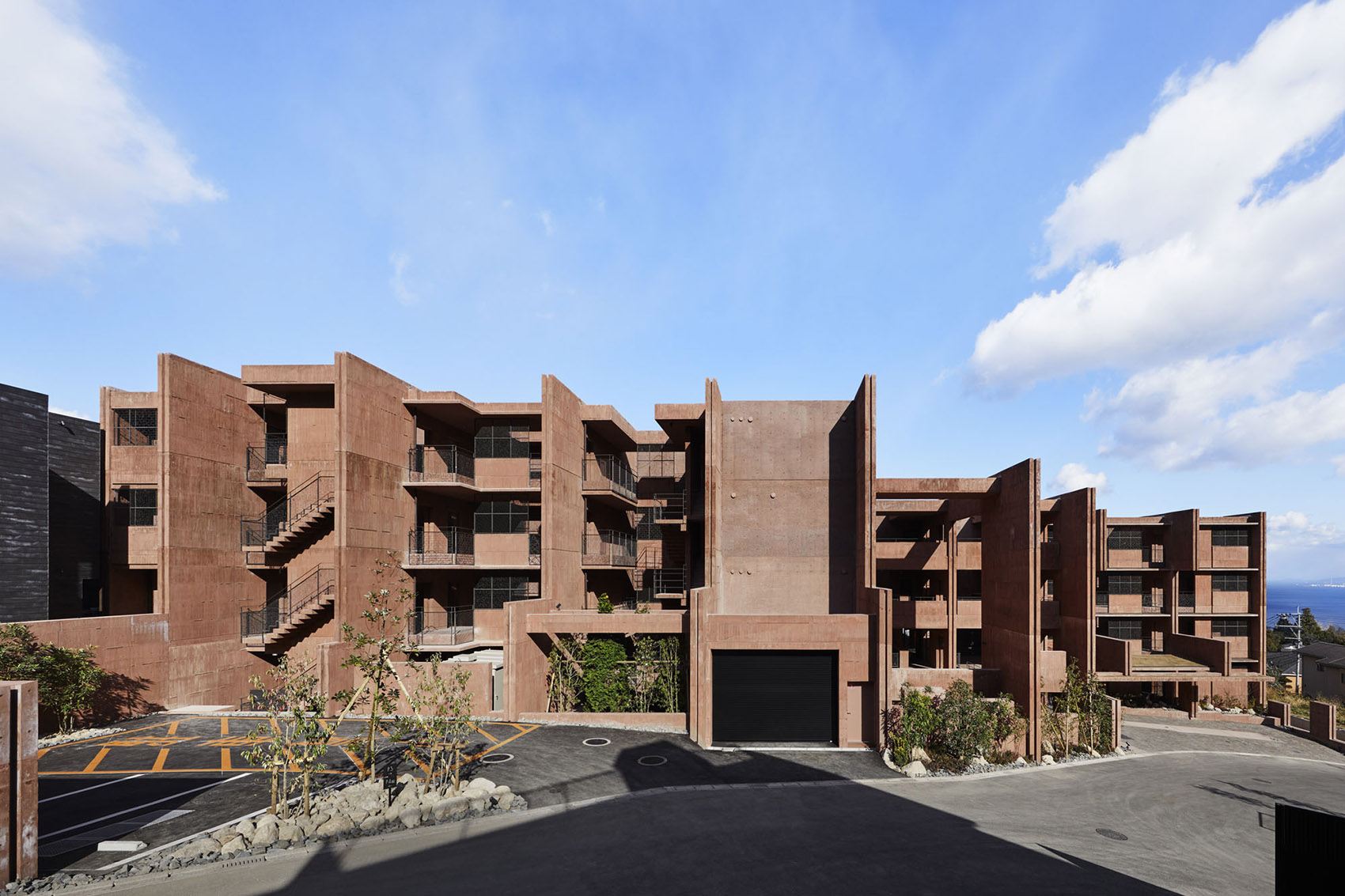
▼酒店场地入口,entrance of the site © Nacasa & Partners Inc.

Nowadays, we can get almost the same comfort anywhere in the globalized world, while the space of hotels has become stereotyped and “homogenization” is progressing in local cities. In many places, the uniqueness of region is weakening and the value of travel is diminishing. The elements that make the city feel its uniqueness are historic monuments and topography, and there is also an aspect that the unique location is being lost from modern times. We wanted to change this situation through realizing this hotel. In addition, the client requested “an architecture that has never existed in Beppu, and that will remain in this place for a long time.” We wanted to create an architectural and spatial experience that would become a new uniqueness of the region, with a sense of unity and interaction. Therefore, we started the design from facing the topography of this place, which can be said to be the origin of Beppu.
▼雕塑般的墙体从断层崖上拔地而起,Assuming walls carved from the ground of a fault scarp © Nacasa & Partners Inc.

▼有序而富有节奏感的建筑形式,An orderly and rhythmic architectural form © Nacasa & Partners Inc.
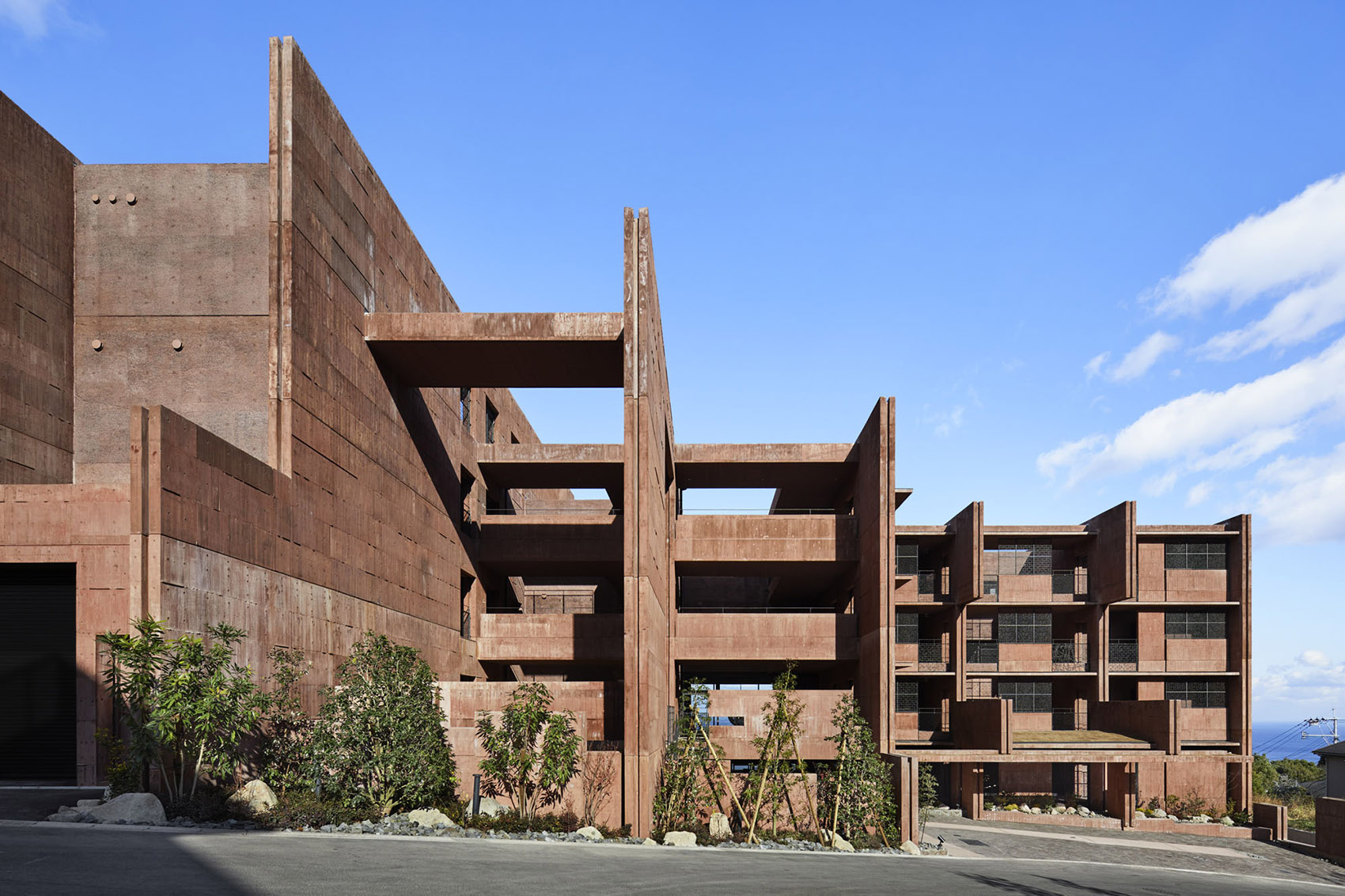
▼后侧立面与交通空间,Rear facade and circulation space © Nacasa & Partners Inc.
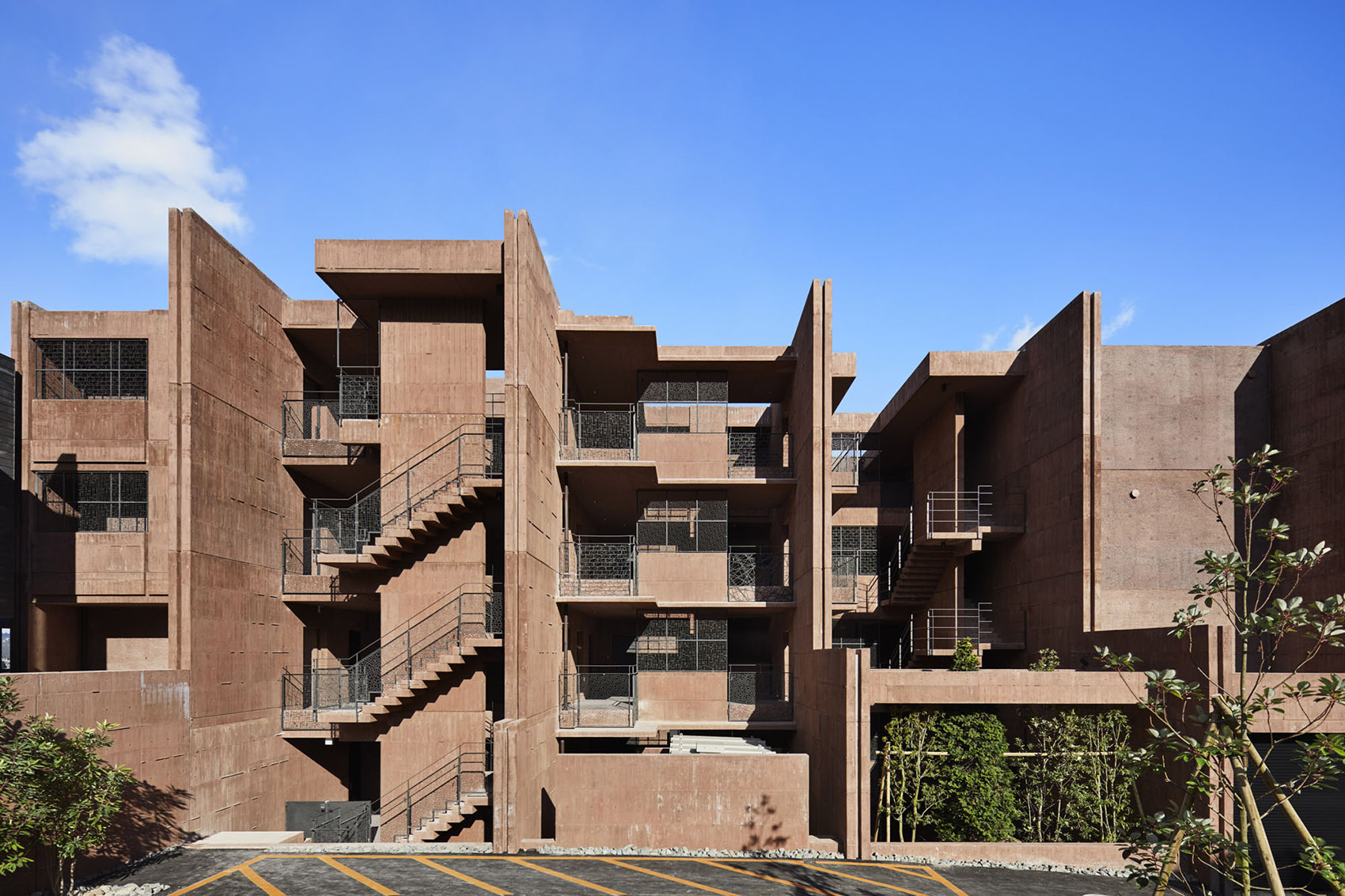
▼酒店外部入口,entrance of the hotel © Nacasa & Partners Inc.

▼建筑细部,details of the building © Nacasa & Partners Inc.
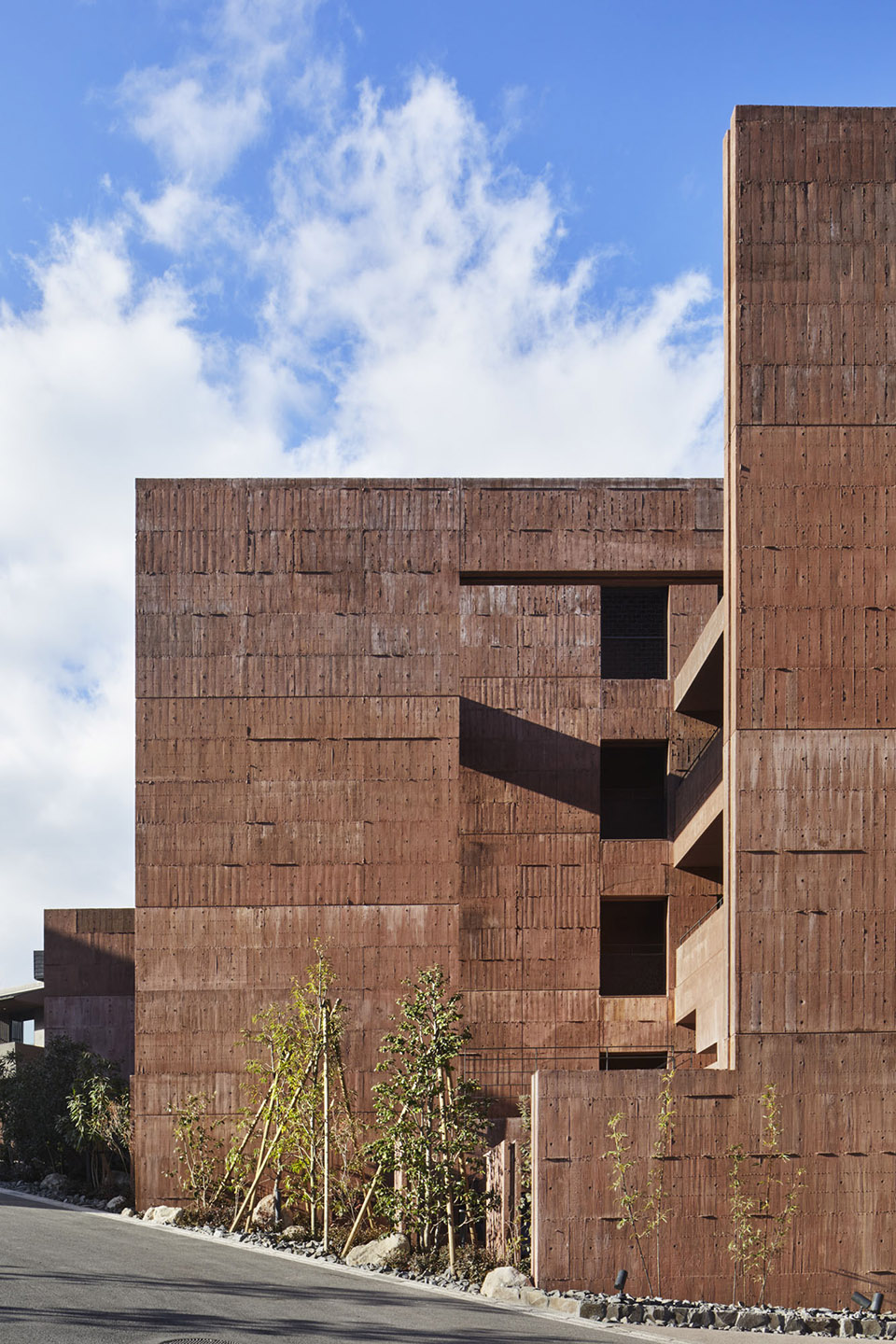
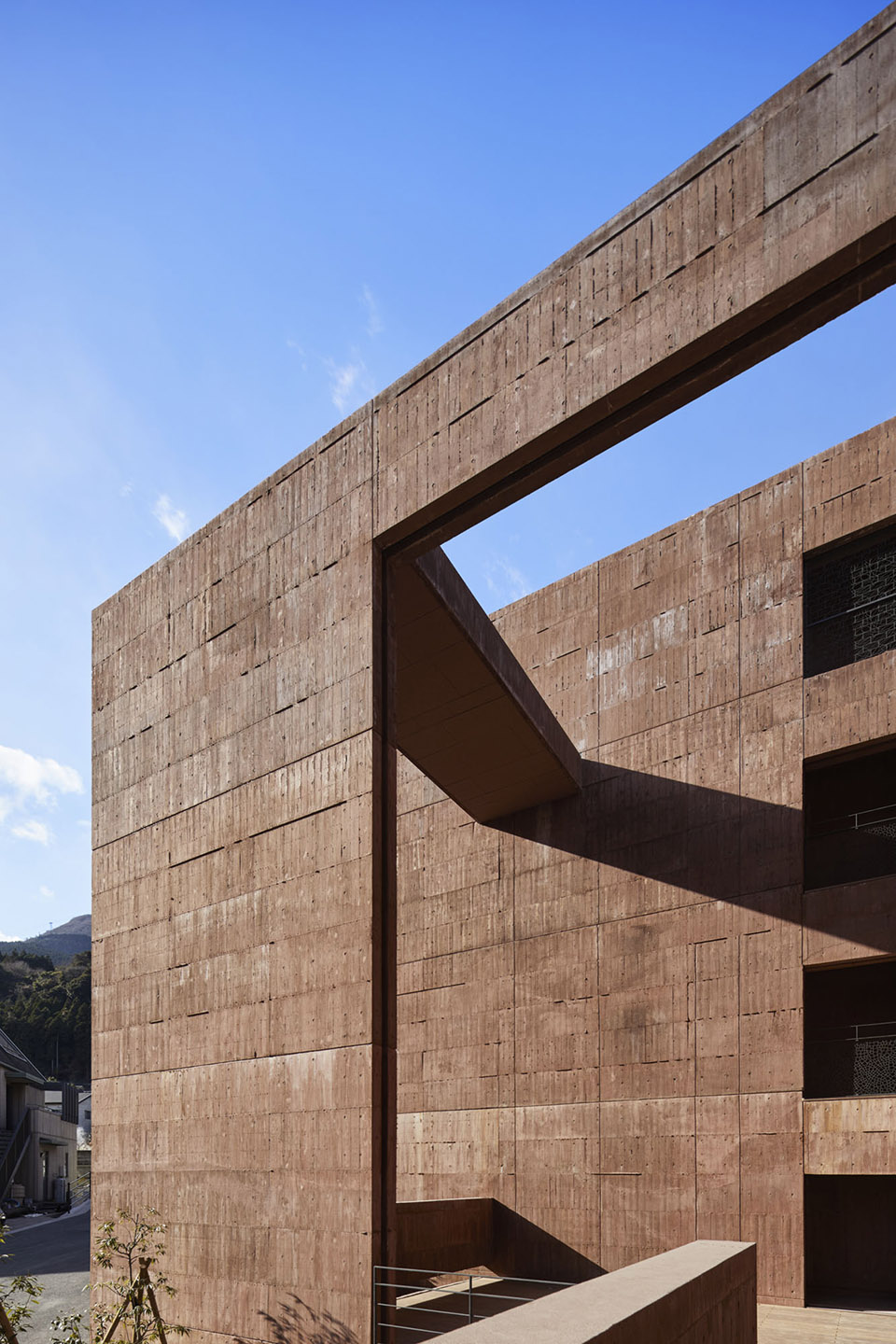
如上文所述,温泉是别府最宝贵的自然资源,其起源可以追溯到地壳运动时期。DABURA.m Inc.事务所希望将当地在地质时代产生的独特地形反映在建筑的设计上,从而实现富有地区特色与当代风格的建筑形式。雕塑般的墙体从断层崖上拔地而起,墙壁上的洞口宛如洞穴一般创造出一系列不同的空间,将室内与室外联系在一起。
▼天井,patio © Nacasa & Partners Inc.
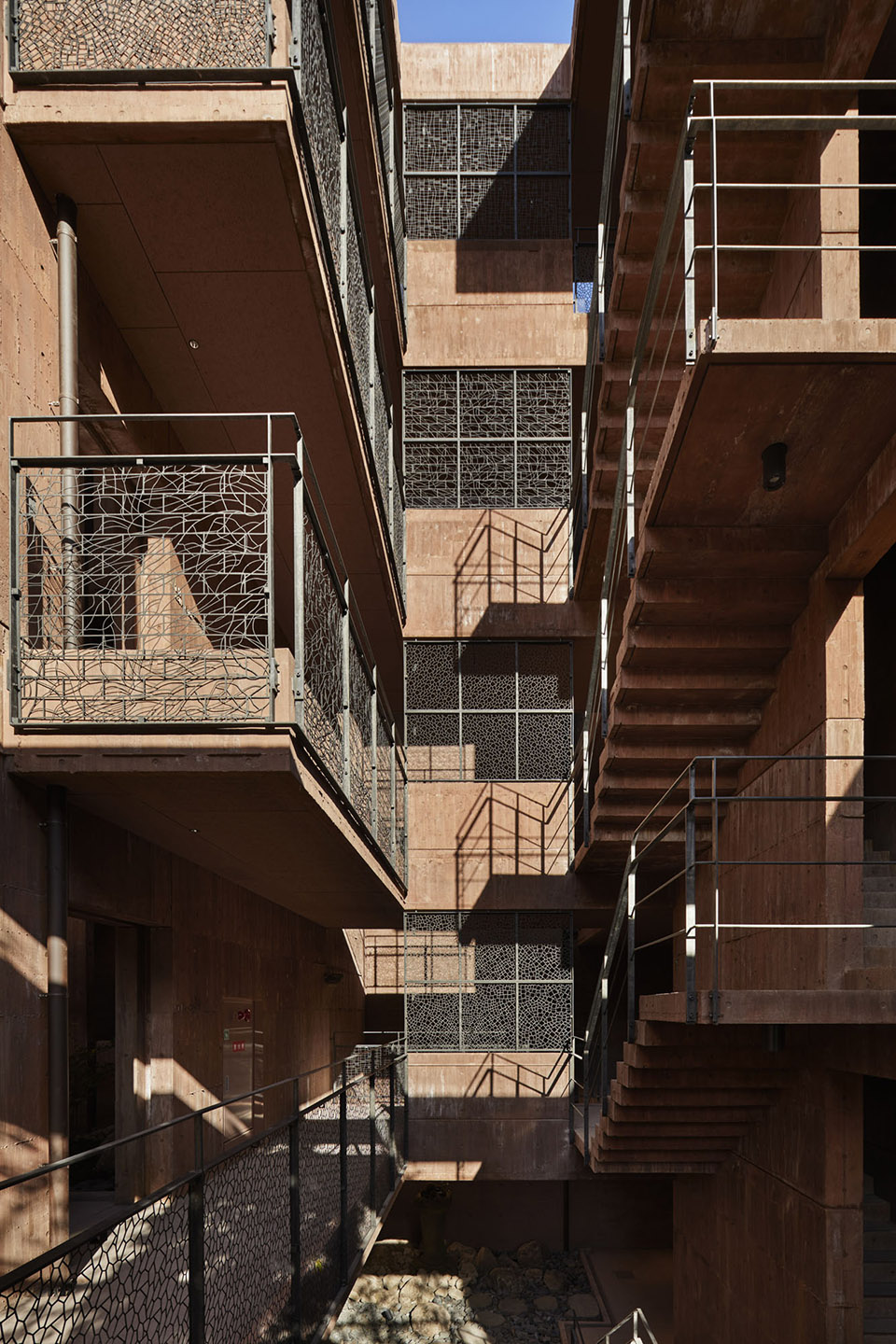
▼由窗口看建筑,viewing the building from the opening © Nacasa & Partners Inc.

▼通高的空间营造神圣的光影效果,sacred light and shadow effect of the patio © Nacasa & Partners Inc.
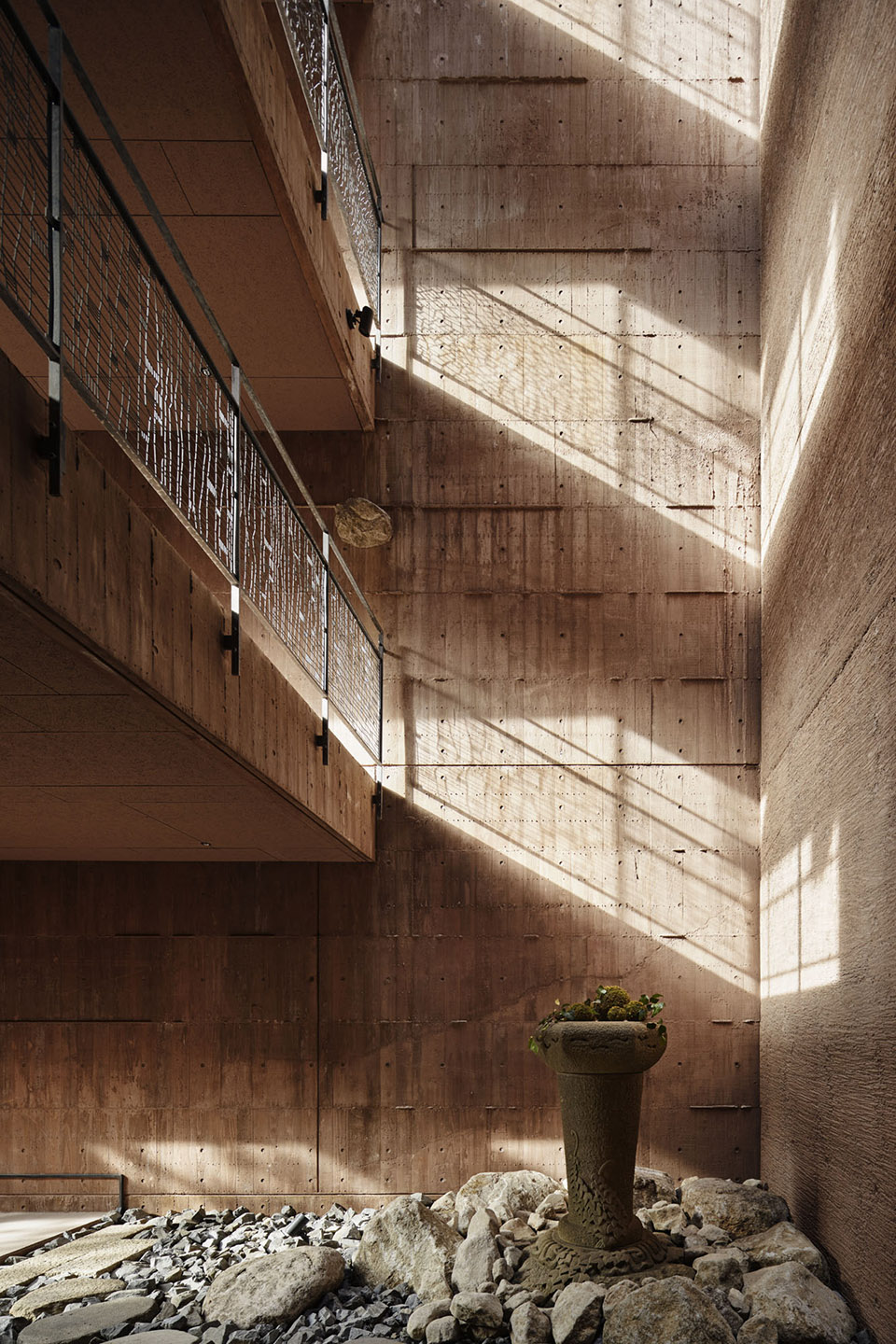
▼俯瞰天井,aerial top view of the patio © Nacasa & Partners Inc.
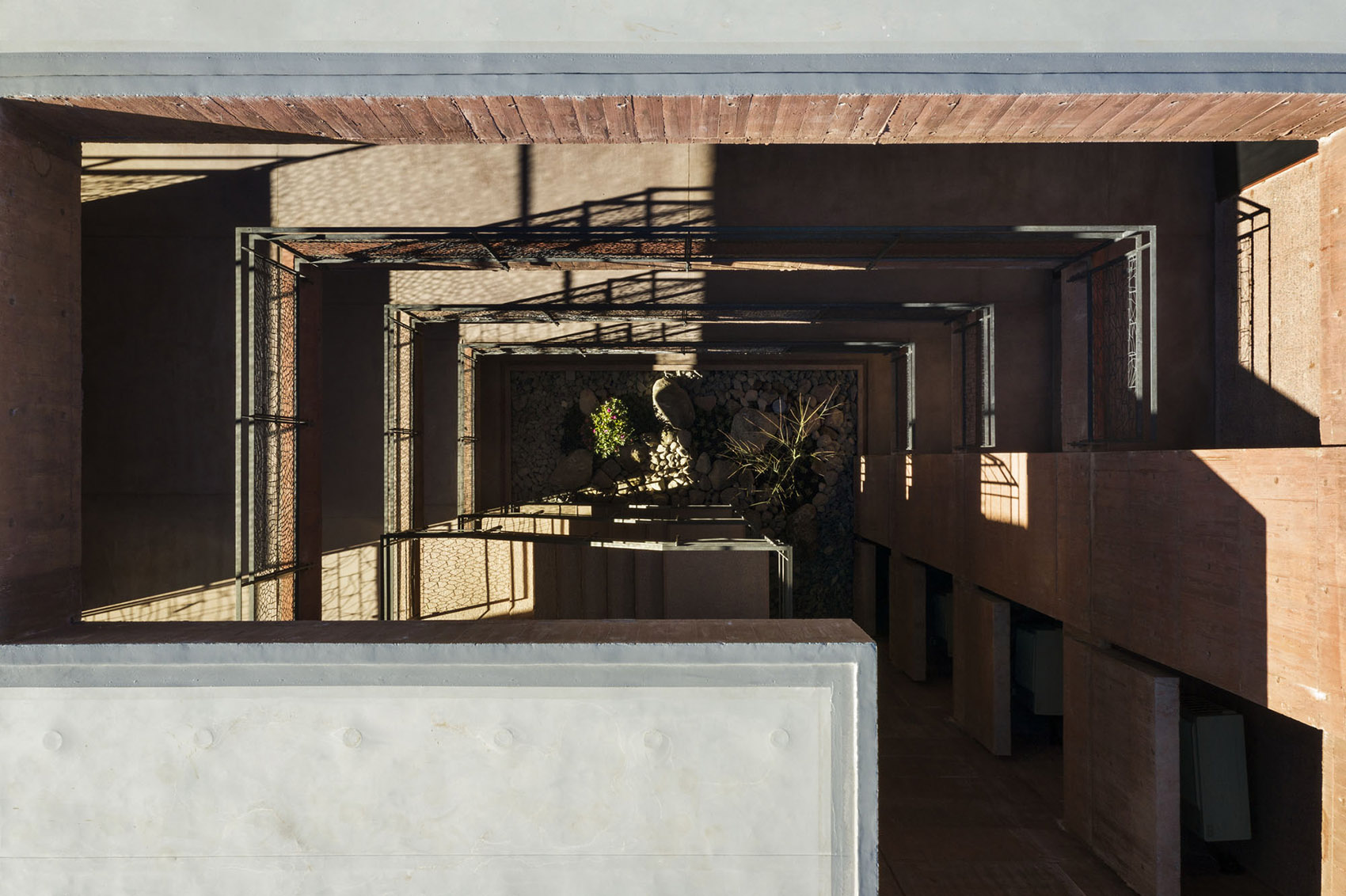
▼仰视天井,looking up through the patio © Nacasa & Partners Inc.

Beppu’s most valuable resource is hot spring, and its origins can be traced back to the orogeny. We wanted to realize a new characteristic architecture of the region by starting to think about the design from the unique terrain of this area that was born in the geological time. Assuming walls carved from the ground of a fault scarp, holes were made in the flocking walls like digging a cave to create space where one space and another space or the inside and the outside are connected.
▼纵横交错的交通流线,the vertical and horizontal axes intersect intricately © Nacasa & Partners Inc.
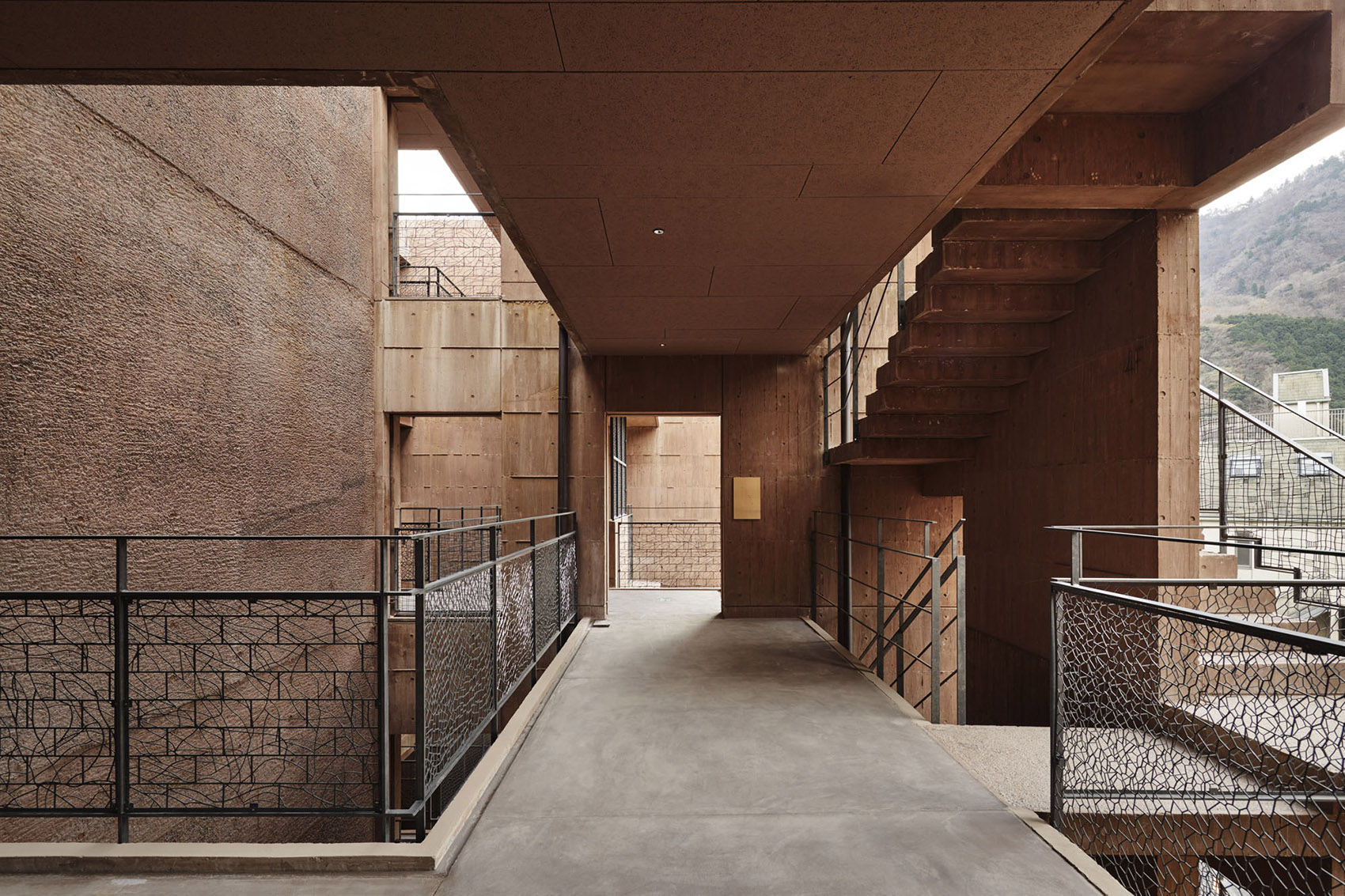

▼老城区“小巷”式的空间体验,experience of walking around the alleys of old downtown of Beppu © Nacasa & Partners Inc.

▼出其不意的水景空间,Surprise waterscape space © Nacasa & Partners Inc.

▼锈红色的墙面与自然景观引起人们对当地起源的联想,The rust-red walls and natural landscape are reminiscent of local origins © Nacasa & Partners Inc.
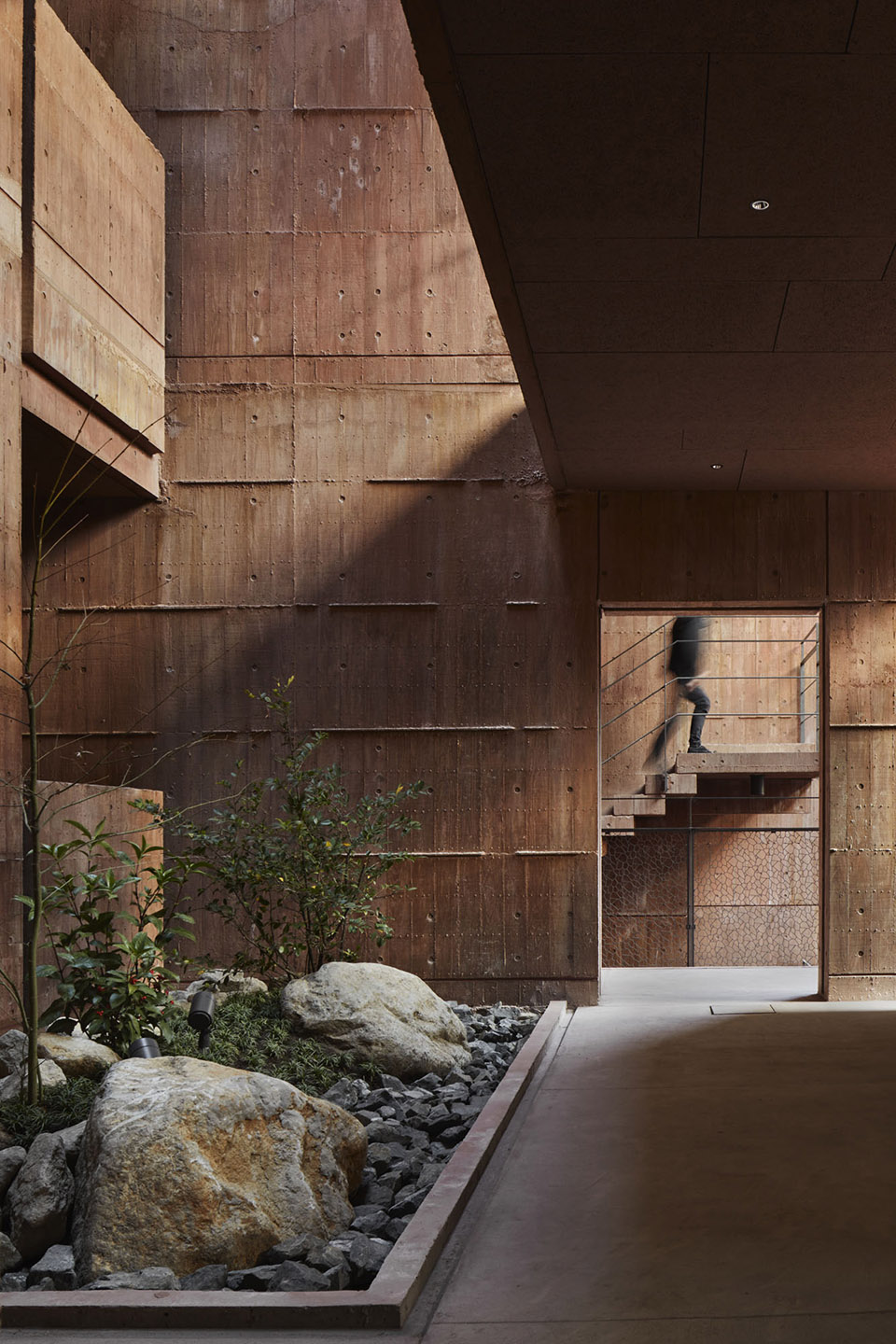
▼楼梯,staircase © Nacasa & Partners Inc.

酒店包括33间标准客房、2套复式套房、大堂、酒吧咖啡厅、多功能工作室与丰富的室外露台。这些功能空间由一系列半室外的“小巷”连接一起,竖向的交通流线与平面的交通流线也因此相互交织。漫步在这些“小巷”中,人们的视线穿过墙壁洞口形成的画框与周围的景观相接,身心沐浴在散落的日光中,聆听着渗透到空间中的自然之声。在这里,对地质年代的联想与别府老城区的小巷中的行走体验重叠在一起,营造出如梦似幻的空间氛围。
▼入口空间水景夜间灯光效果,light effect of the water landscape of the entrance porch © Nacasa & Partners Inc.
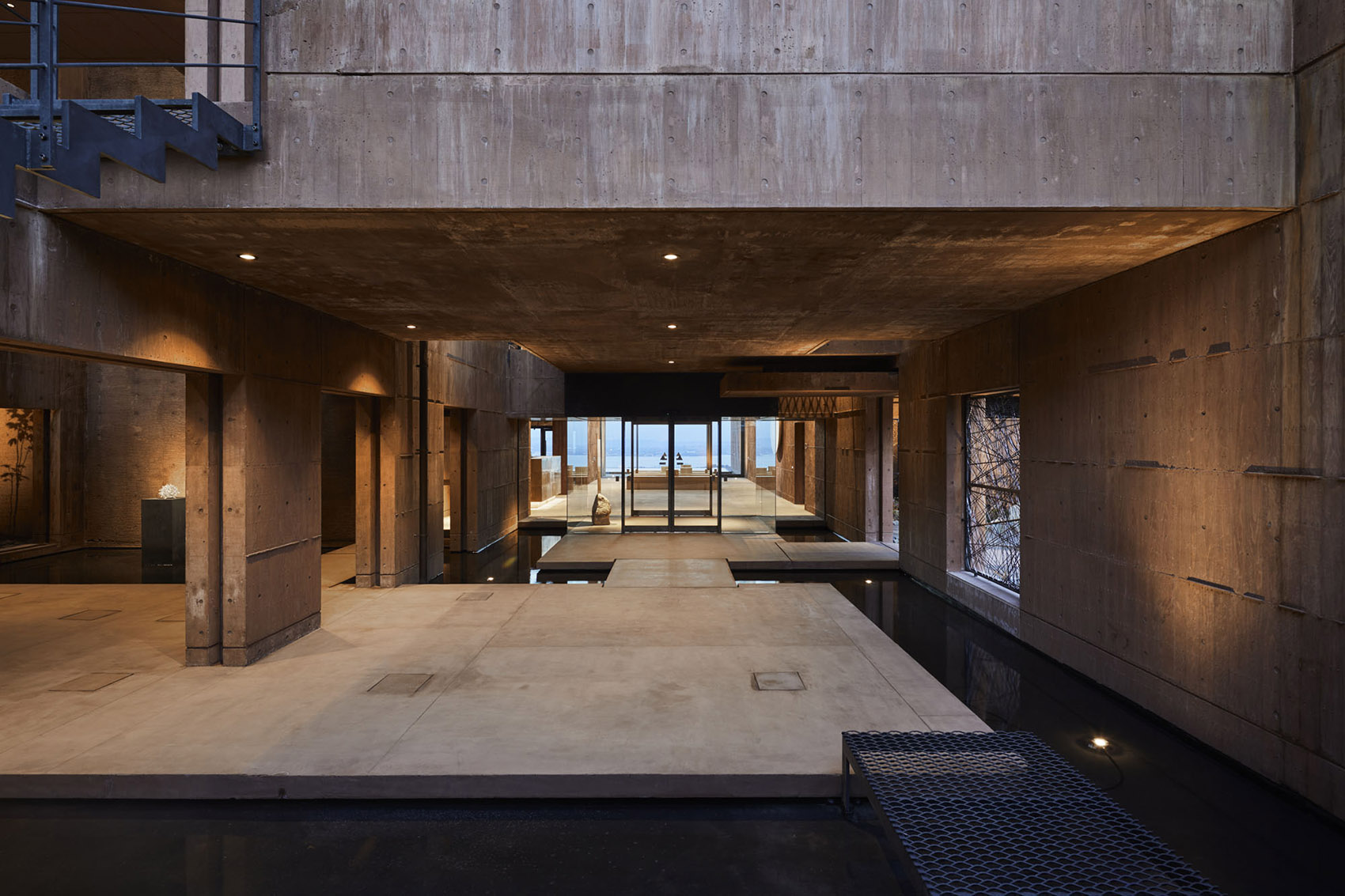
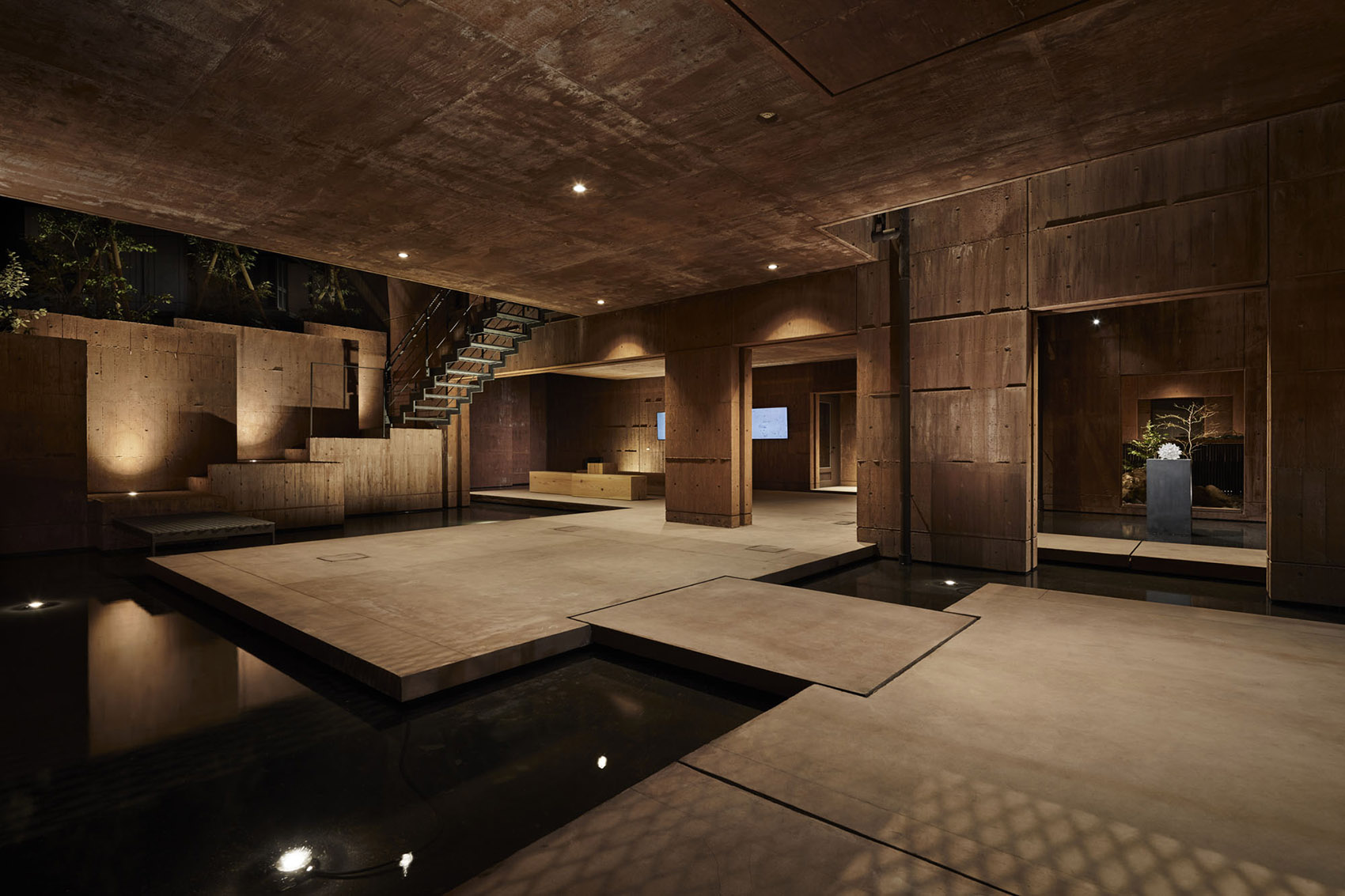
▼由入口空间看大堂,viewing the reception hall from the entrance porch © Nacasa & Partners Inc.
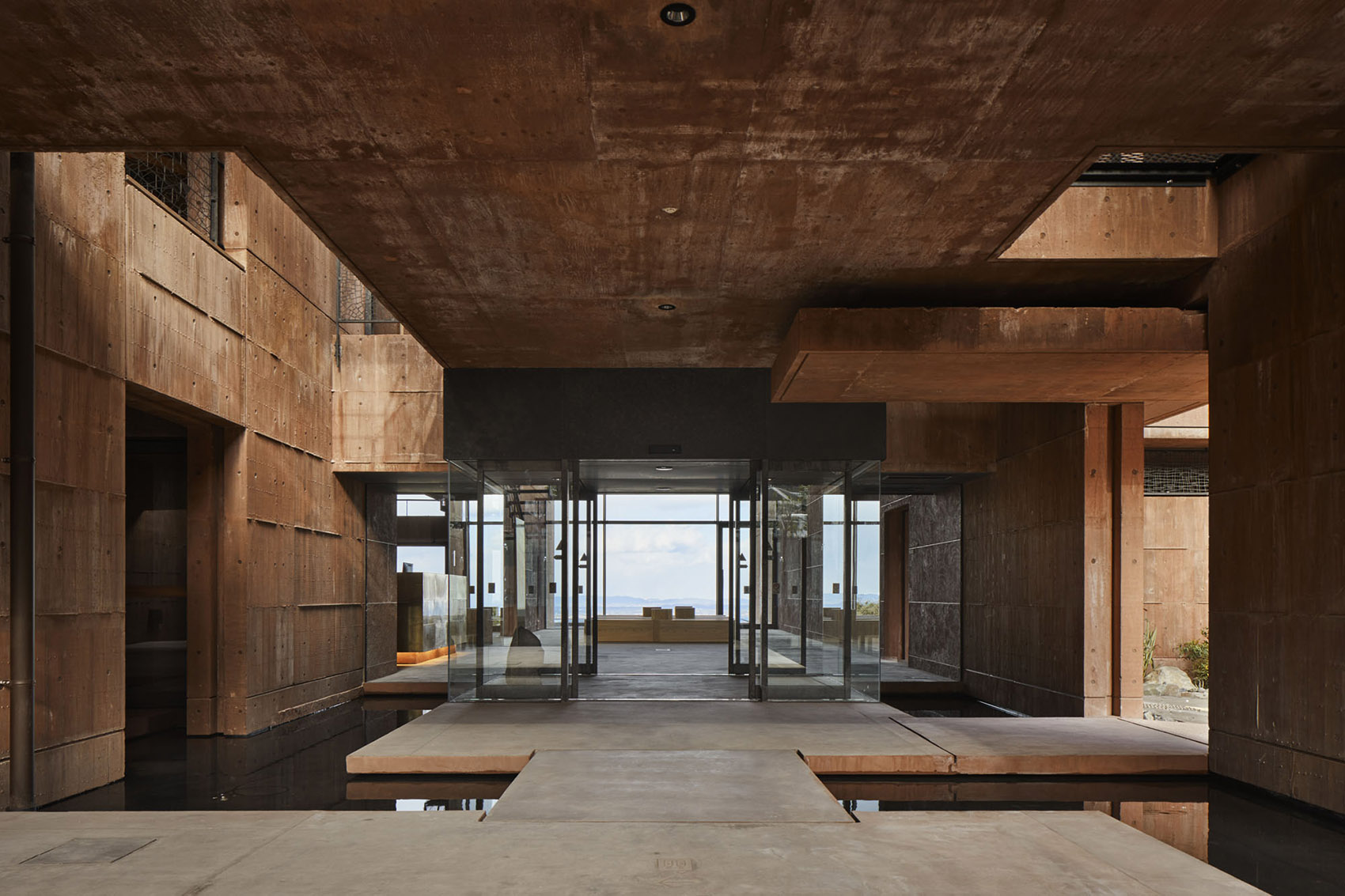
▼入口空间水景,water landscape of the entrance porch © Nacasa & Partners Inc.
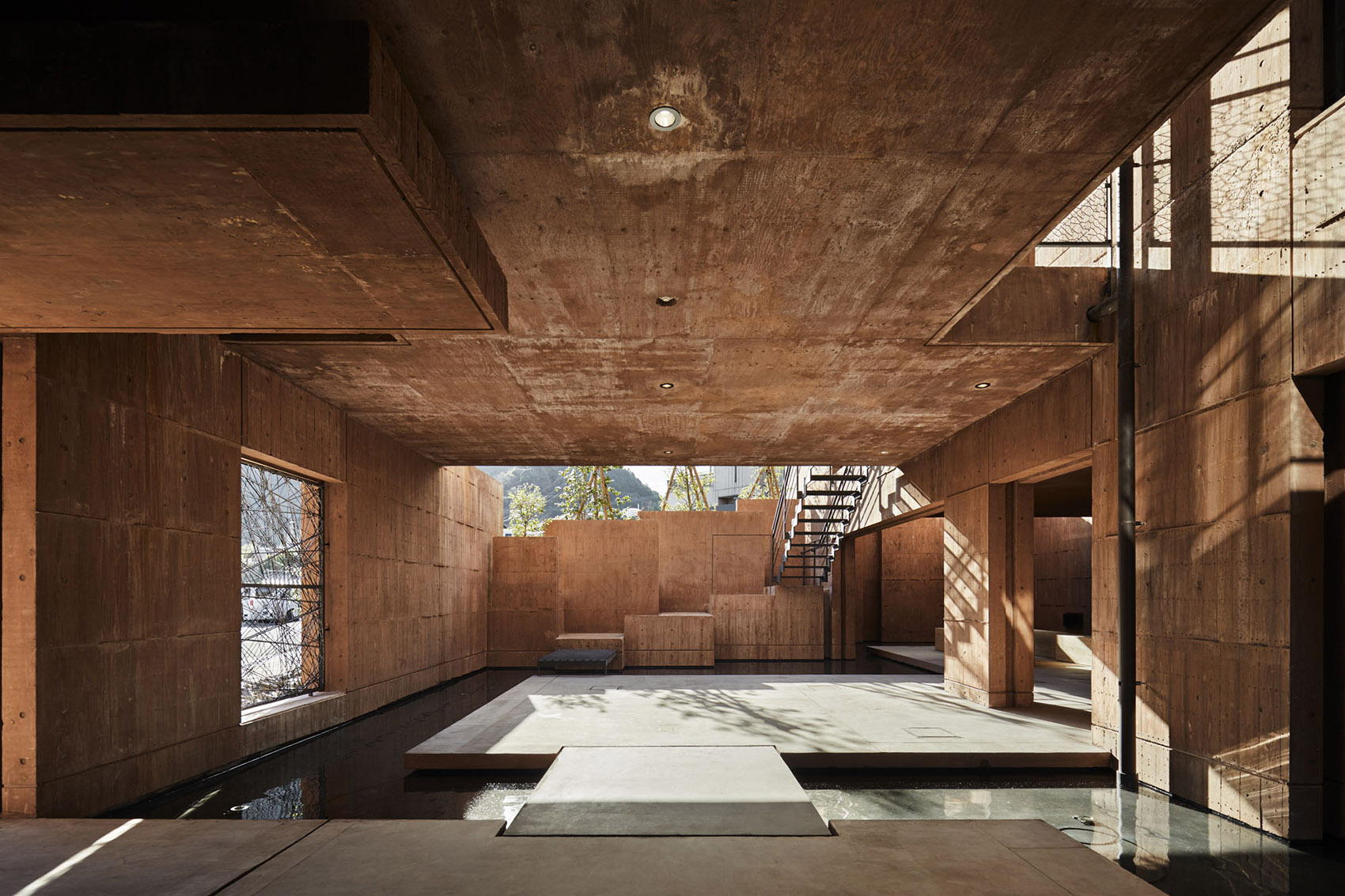

▼接待大堂,the reception hall © Nacasa & Partners Inc.

▼等待休息区,waiting area © Nacasa & Partners Inc.
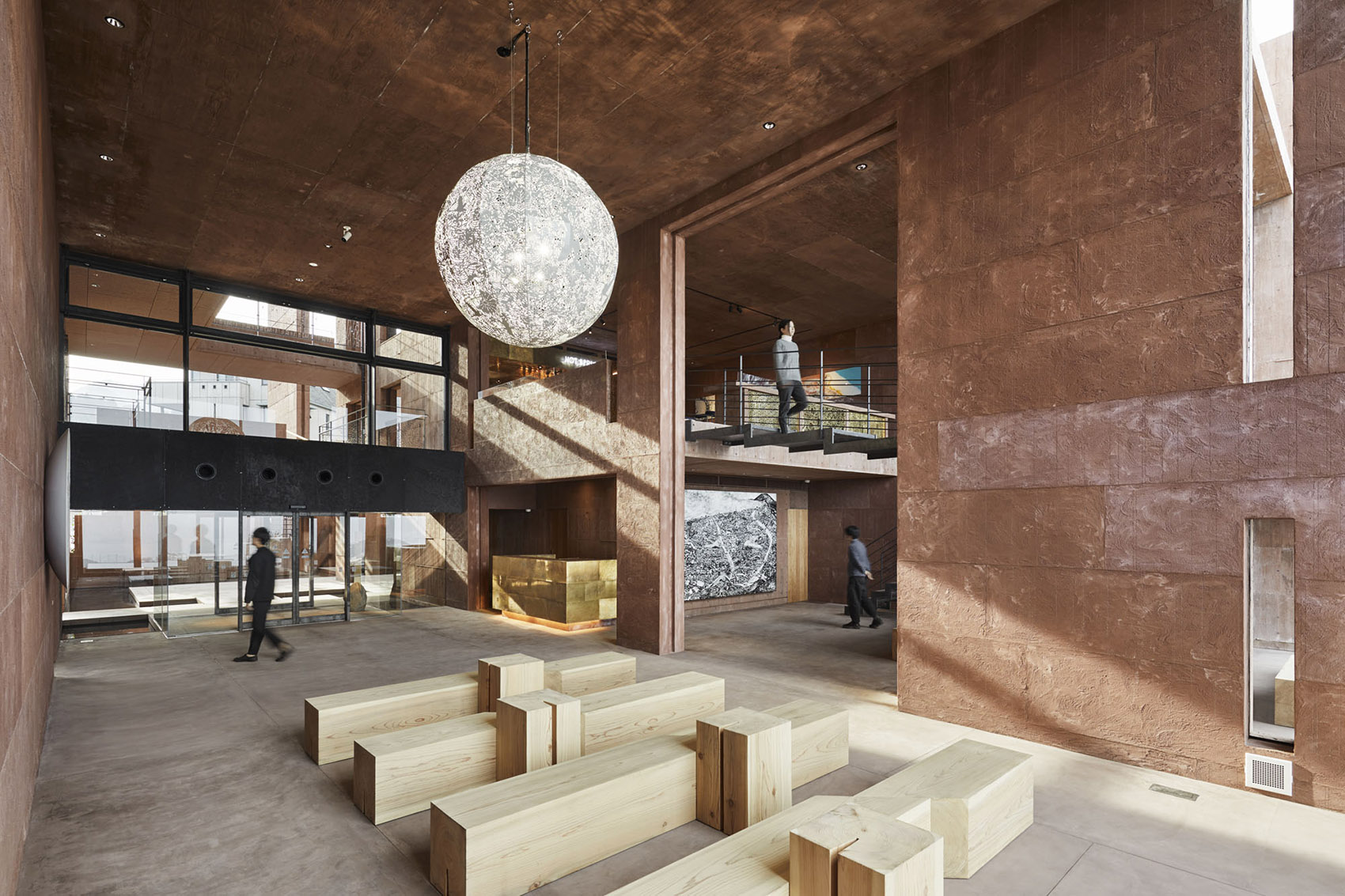
▼前台,the reception desk © Nacasa & Partners Inc.
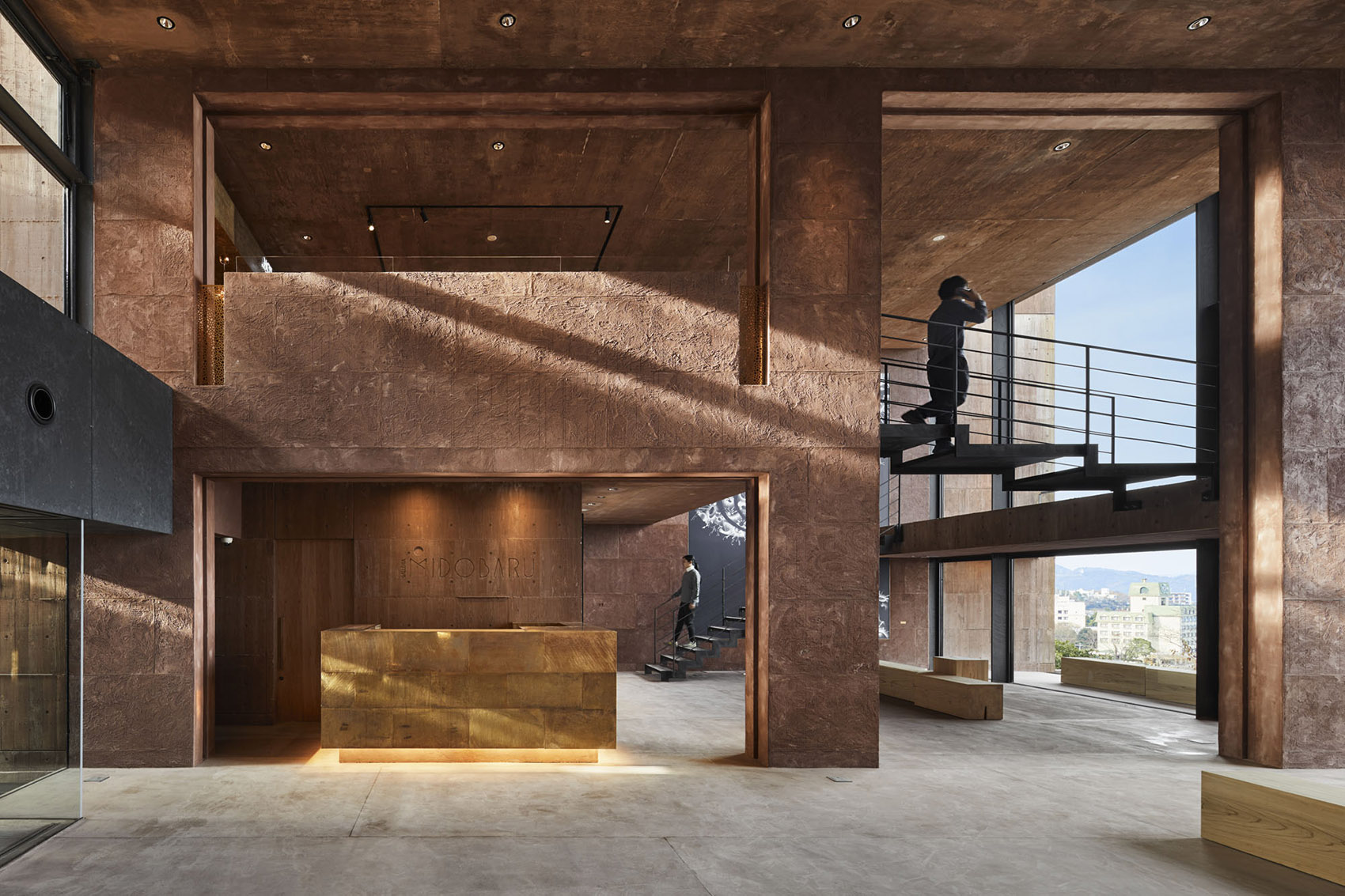
▼大面积的玻璃幕墙提供了良好的自然采光,Large area of glass curtain wall provides good natural lighting © Nacasa & Partners Inc.
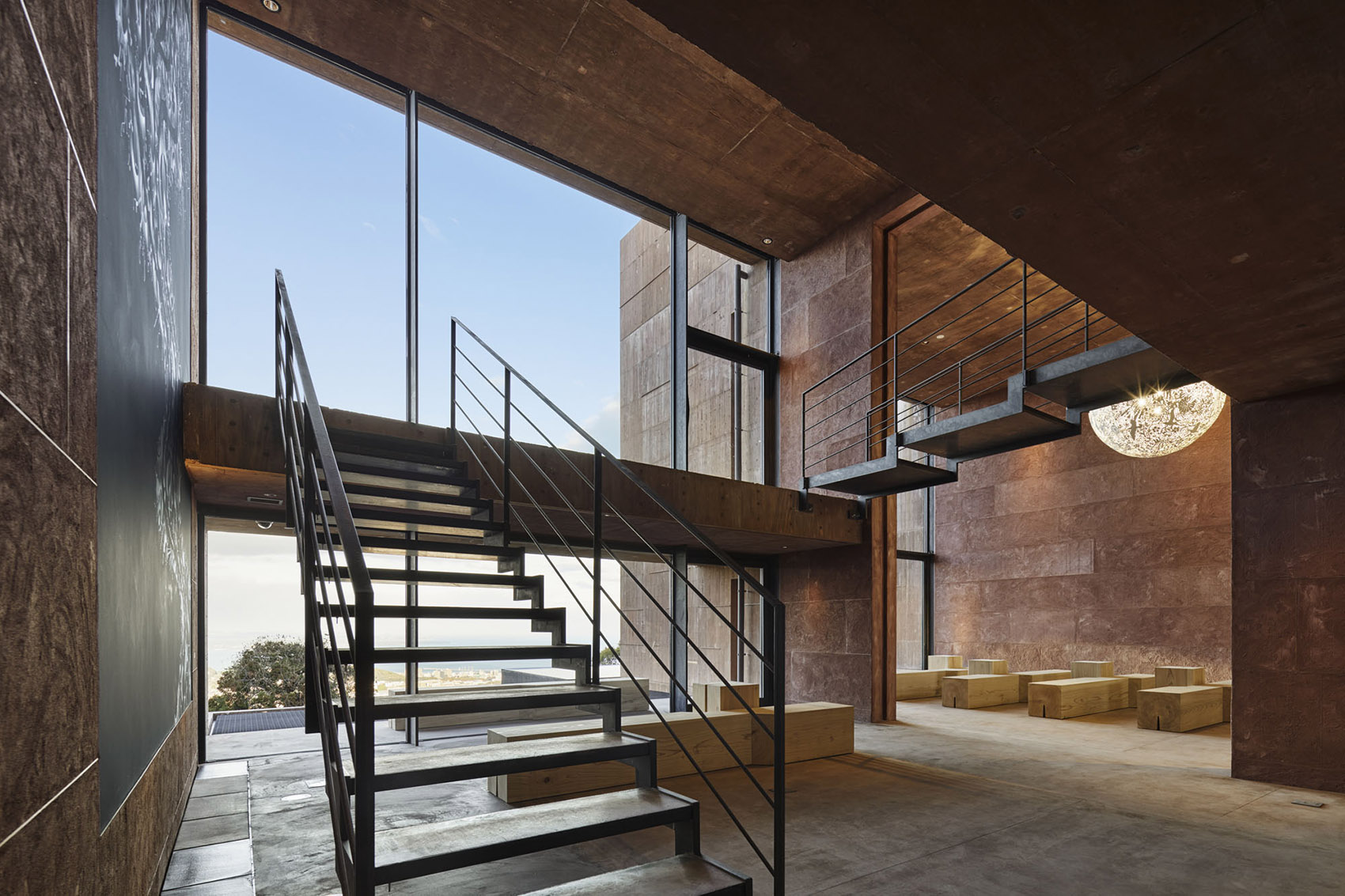
This hotel has 33 general guest rooms, 2 duplex suites, a lobby, a cafe & bar, a multipurpose studio and terrace spaces. They are connected by semi-outdoor “alley space” where the vertical and horizontal axes intersect intricately. In walking around, you will be connect to the framed landscape through holes in the walls and feel the lights and sounds that permeate. It is a spatial experience reminiscent of geological time, and it overlaps with an experience of walking around the alleys of old downtown of Beppu.
▼酒吧,bar © Nacasa & Partners Inc.
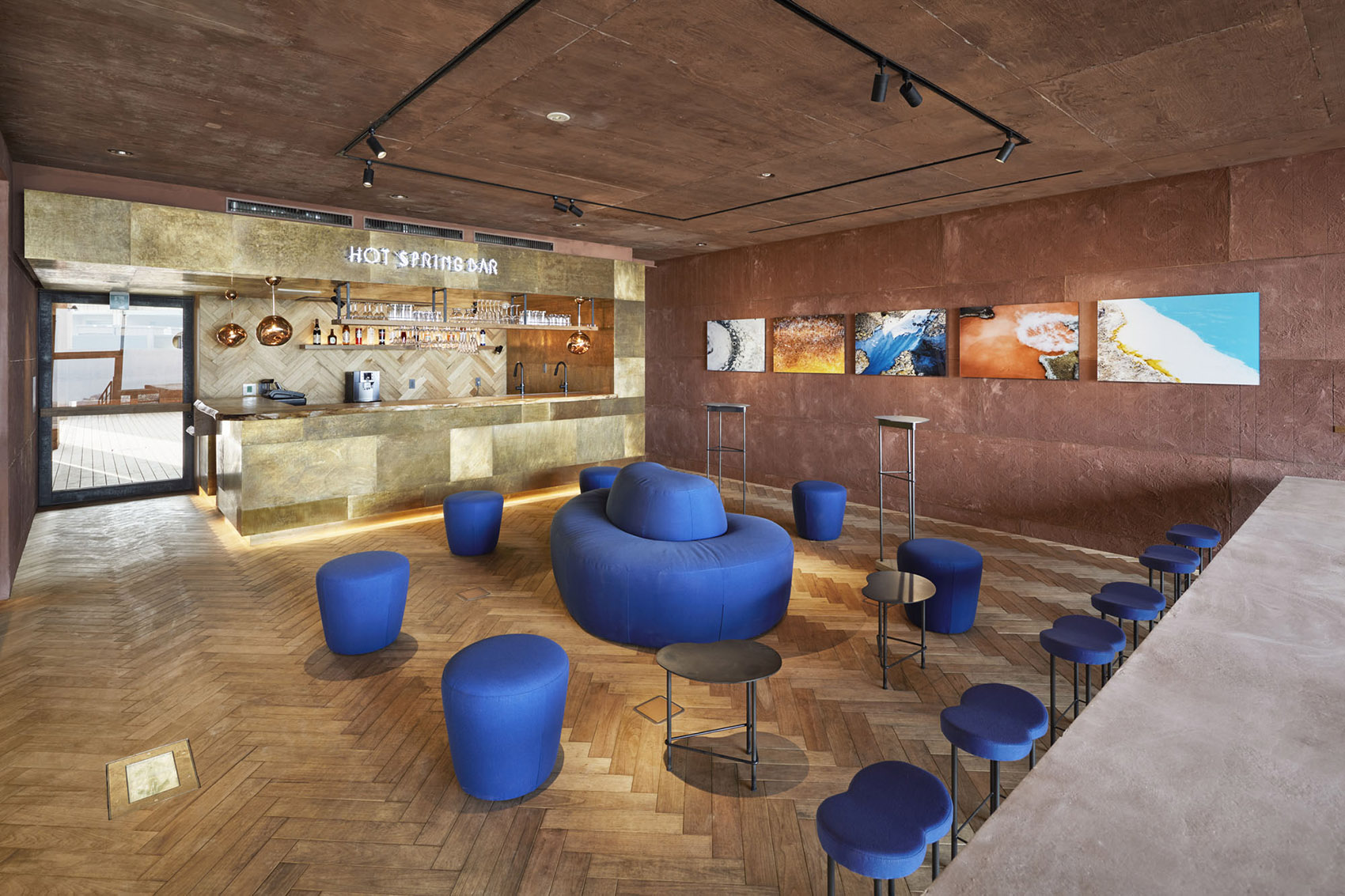
▼由酒吧座位区看大堂里的中庭空间,Viewing the lobby atrium from the bar seating area © Nacasa & Partners Inc.

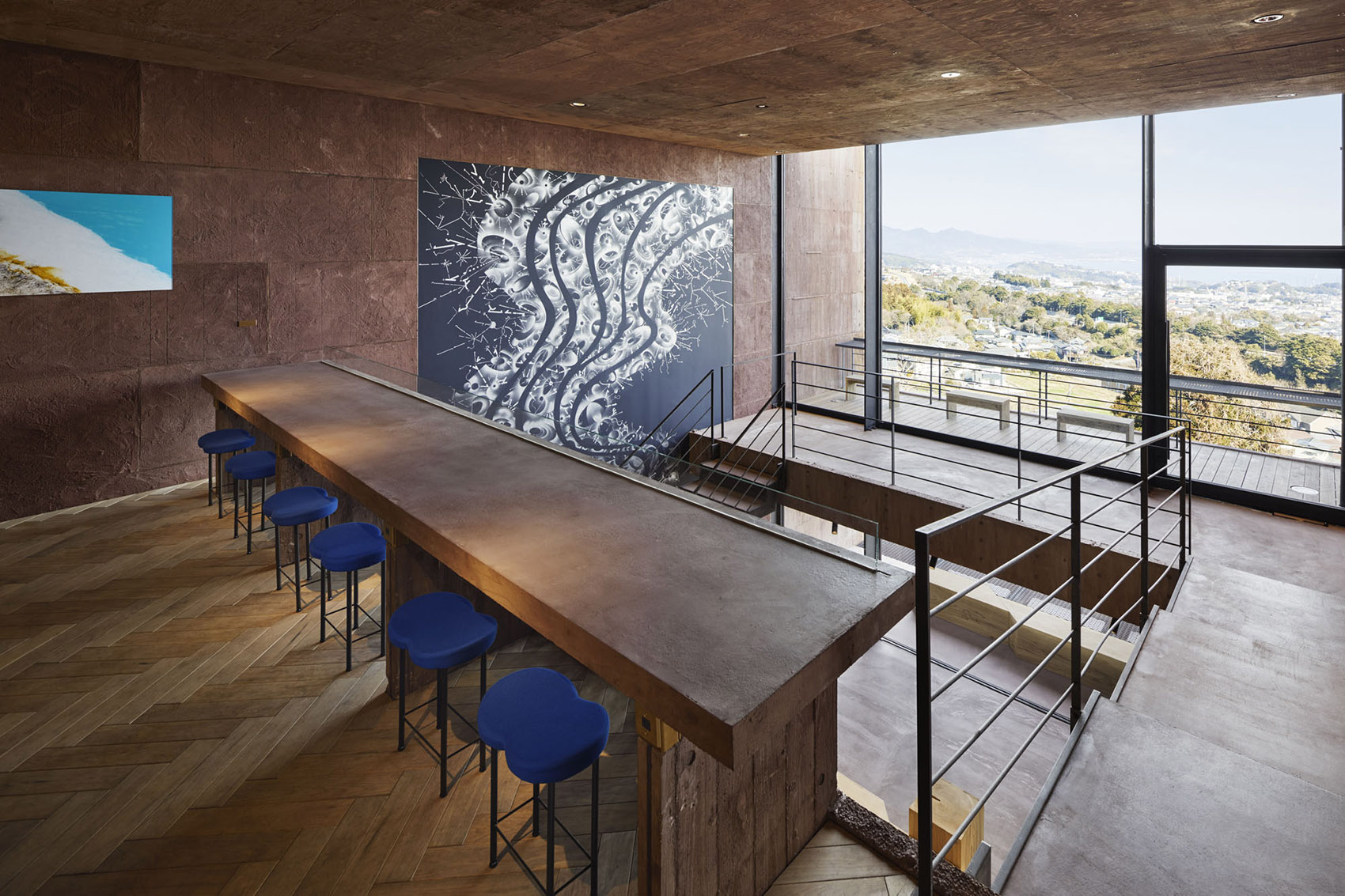
▼大堂中庭空间夜间灯光效果与墙面上的大型艺术作品,Lobby atrium space night light effect and the large art works on the wall © Nacasa & Partners Inc.
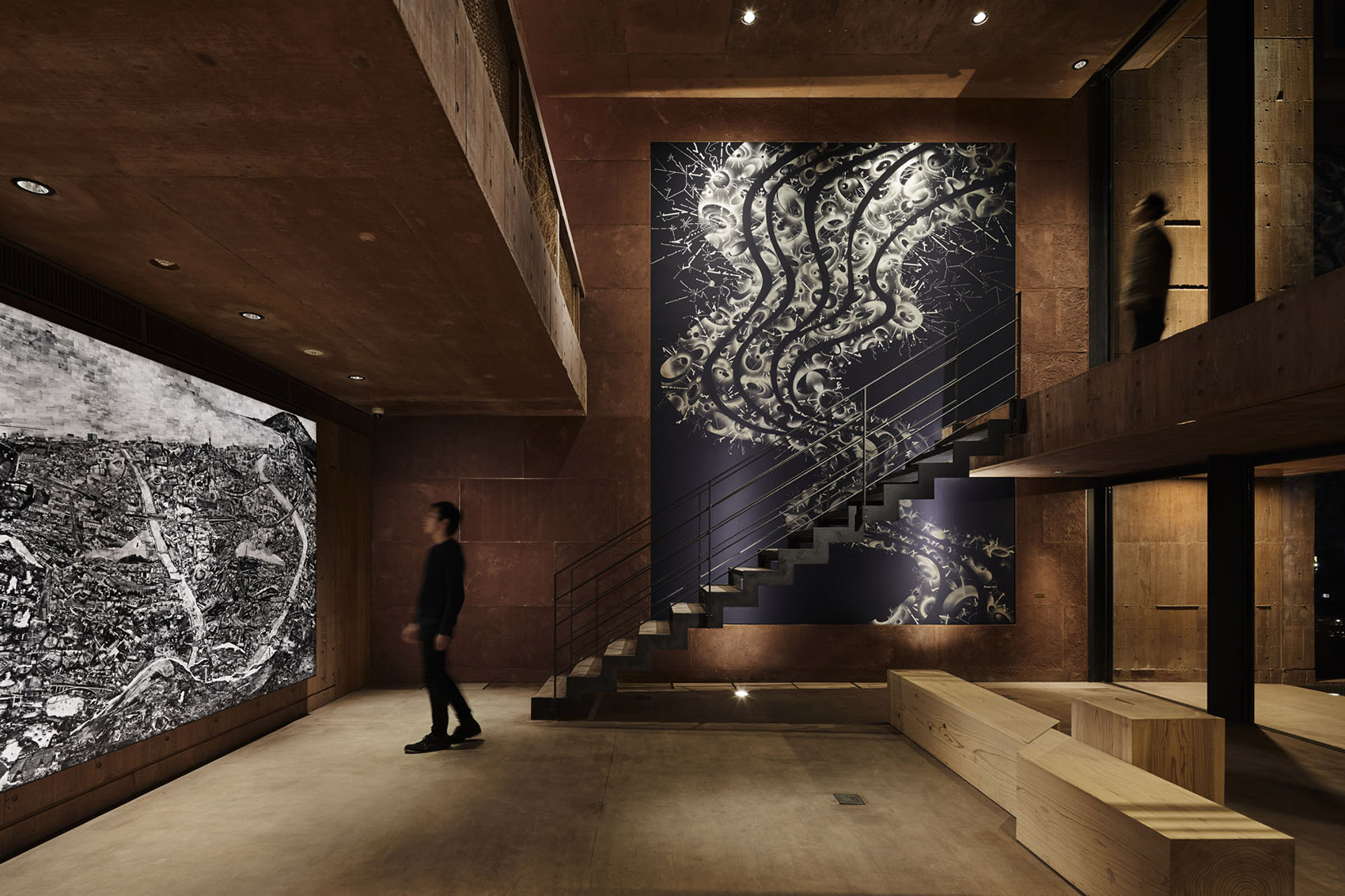
▼吧台细部,detail of the bar counter © Nacasa & Partners Inc.
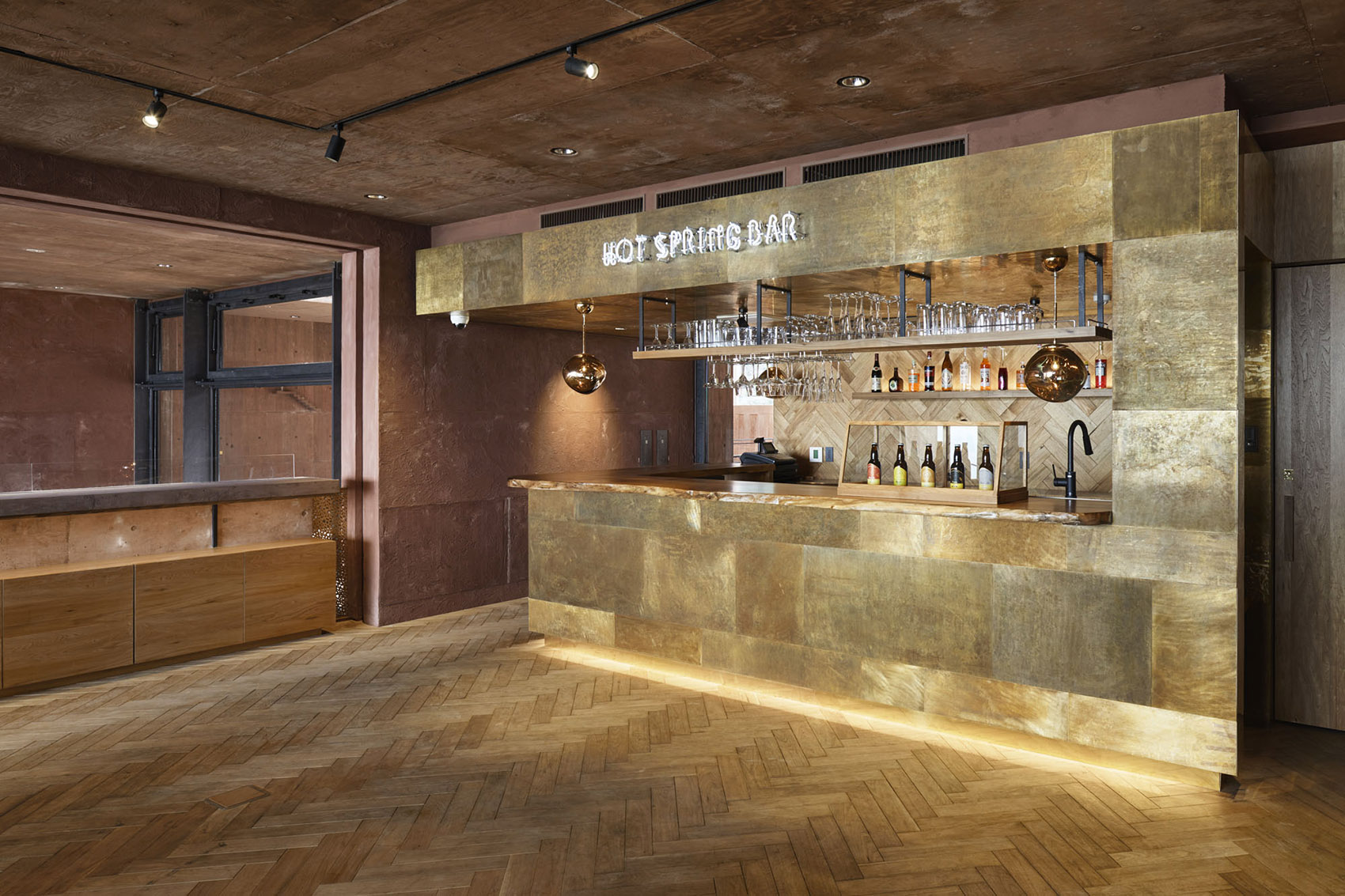
▼餐厅,restaurant © Nacasa & Partners Inc.
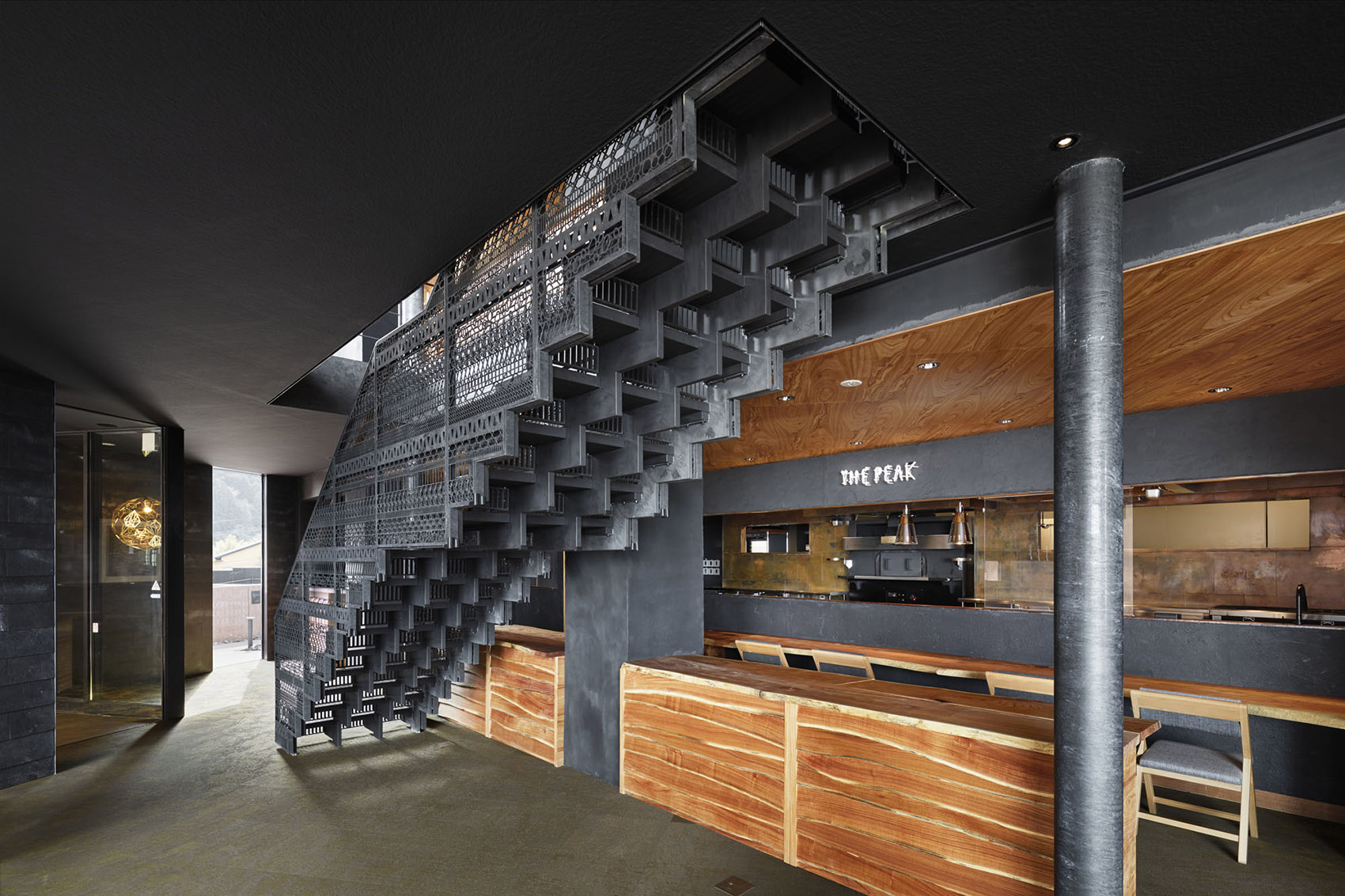

▼餐厅二层,upper floor of the restaurant © Nacasa & Partners Inc.
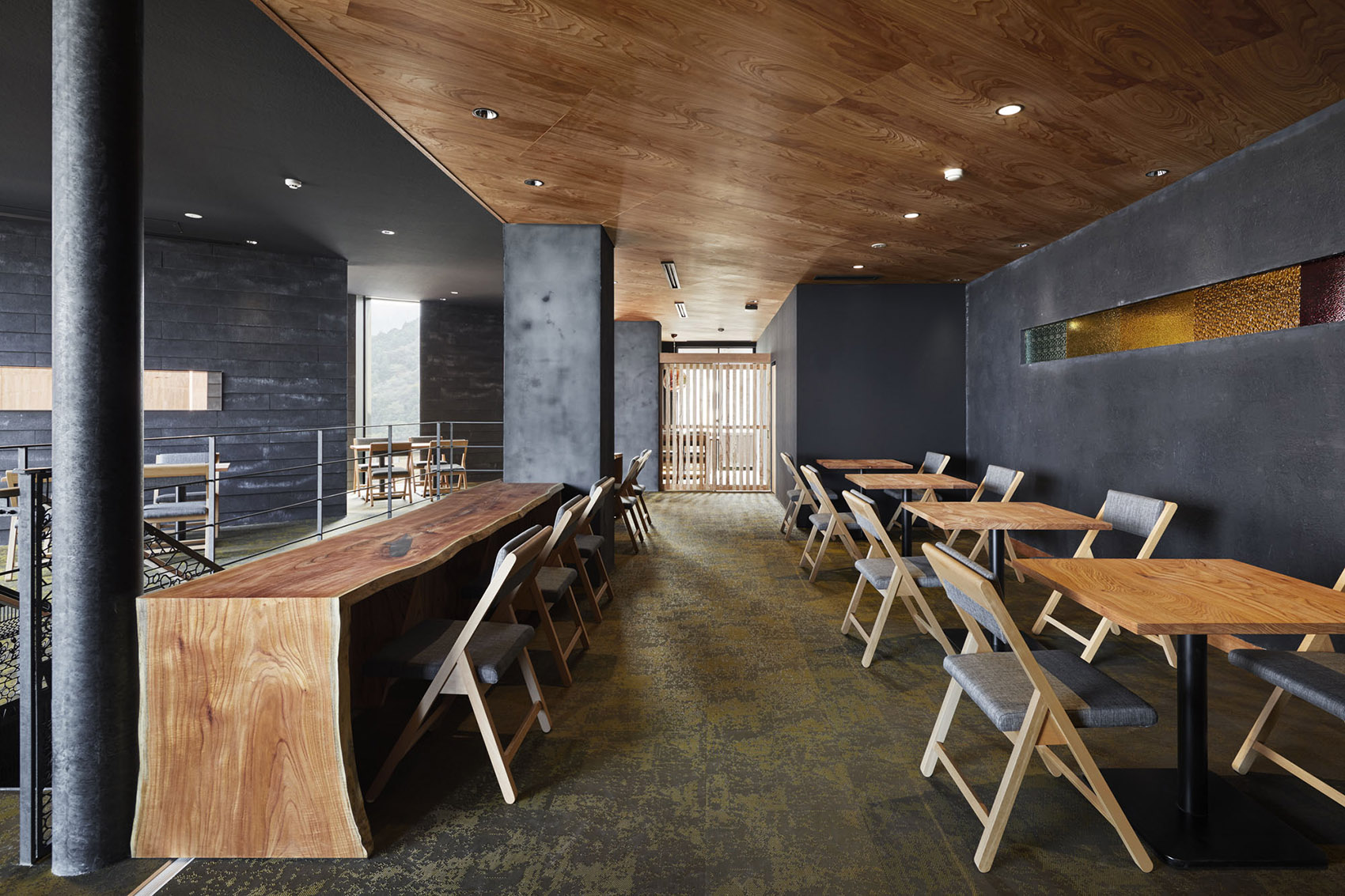
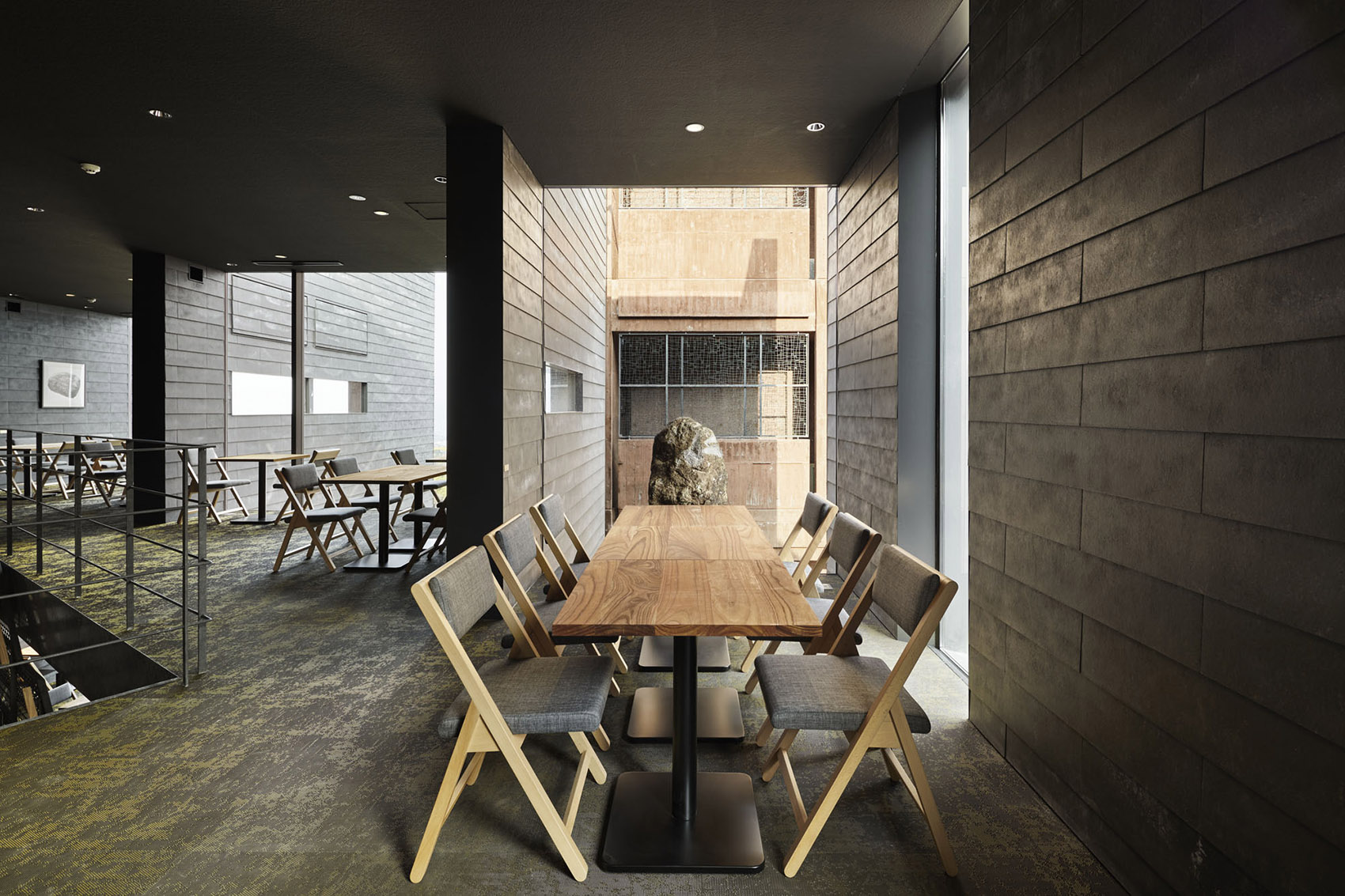
▼餐厅夜间效果,night view of the restaurant © Nacasa & Partners Inc.
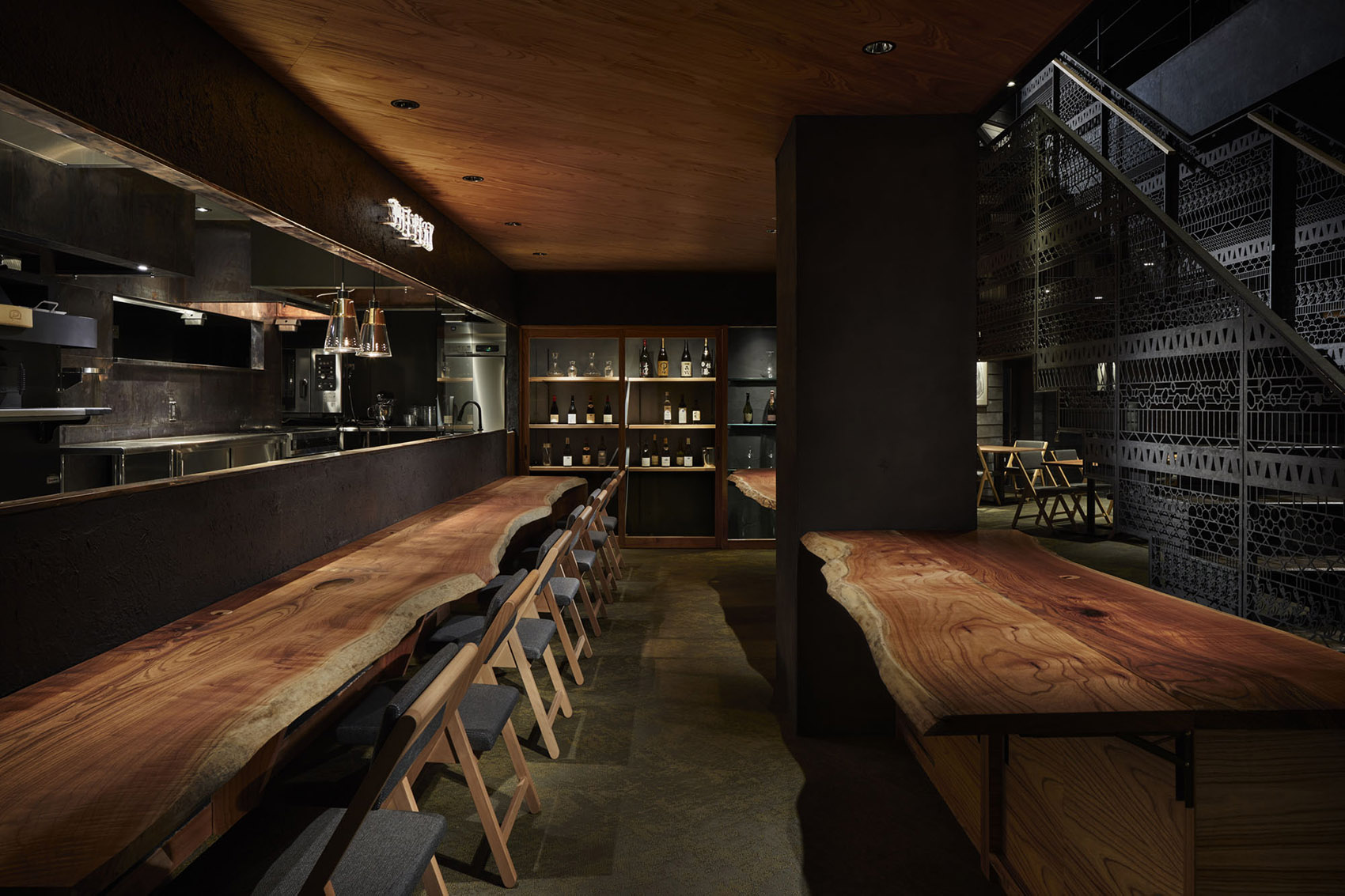
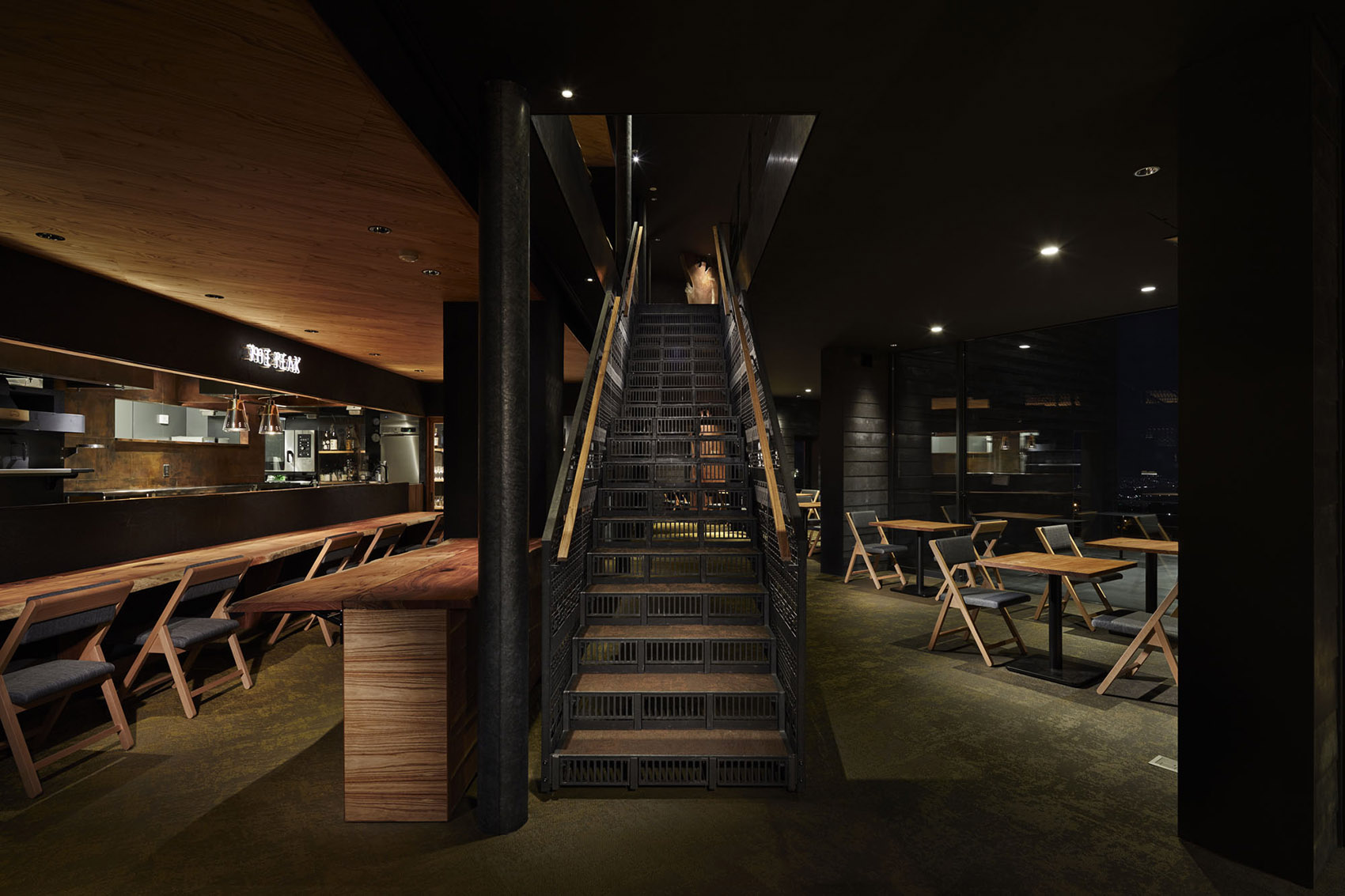
▼餐厅二层灯光效果,light effect of the upper floor of the restaurant © Nacasa & Partners Inc.

▼室外露台,terrace © Nacasa & Partners Inc.

锈红色的墙体是通过将掺有氧化铁的混凝土注入当地雪松木制成的特殊模板中浇筑而成的。其中,锈红的色调参考了当地的土壤与石材的颜色,并进行了细微的调整,诸如粉化、不均匀、接缝碎裂等现象都被欣然接受作为材料肌理的表达。项目建造过程中所用到的木材和抹灰等都尽可能地采用了距离场地最近的当地材料。金属表面的锈痕则是通过与温泉发生反应加工而成的。独特的建筑形式与精心的选材为Galleria Midobaru酒店赋予了独一无二的价值,为人们创造出必须亲身经历才能获得的独特体验。
▼复式套房客厅,living room of the duplex suite © Nacasa & Partners Inc.
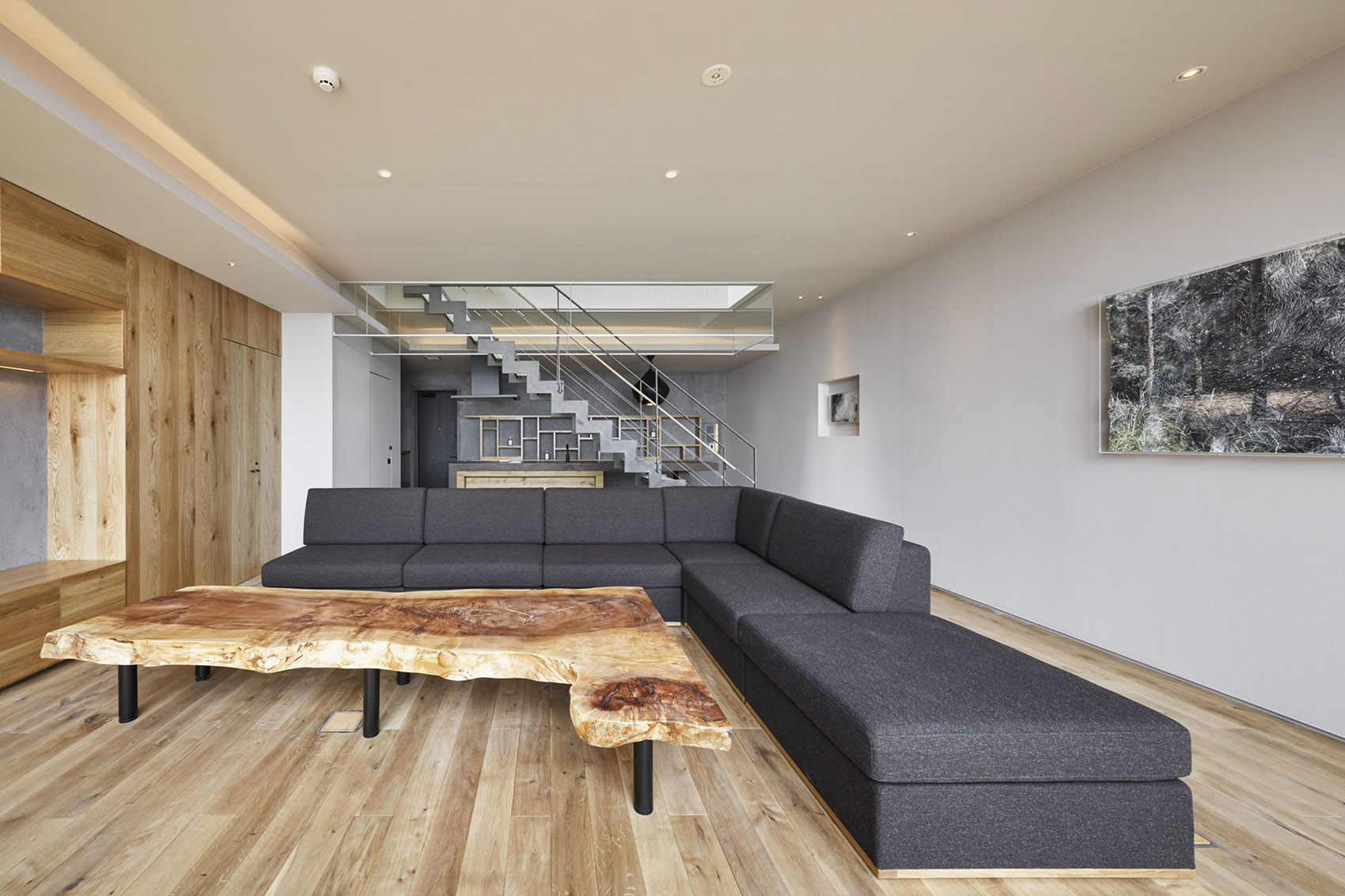
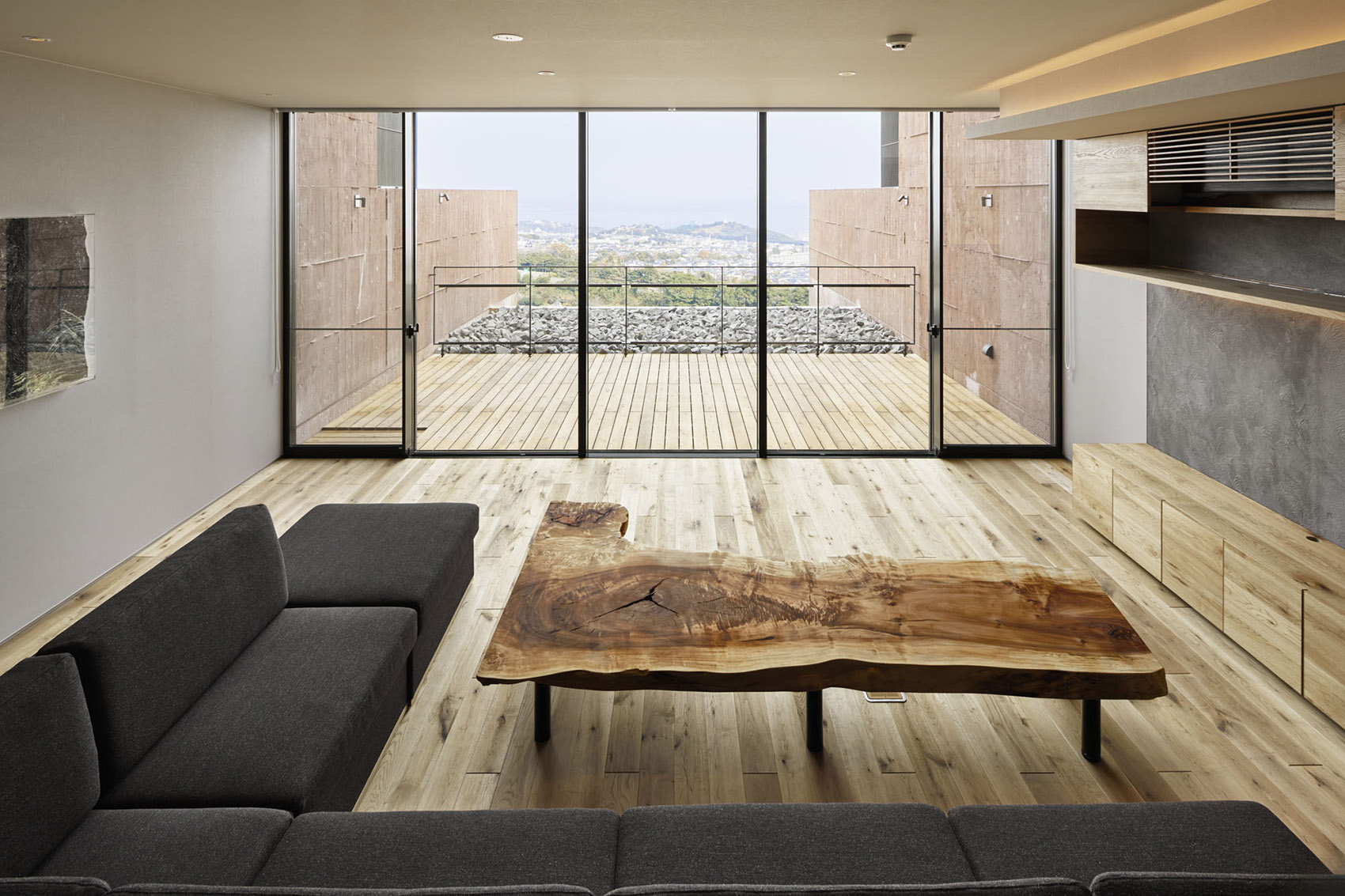
▼复式套房厨房,kitchen of the duplex suite © Nacasa & Partners Inc.
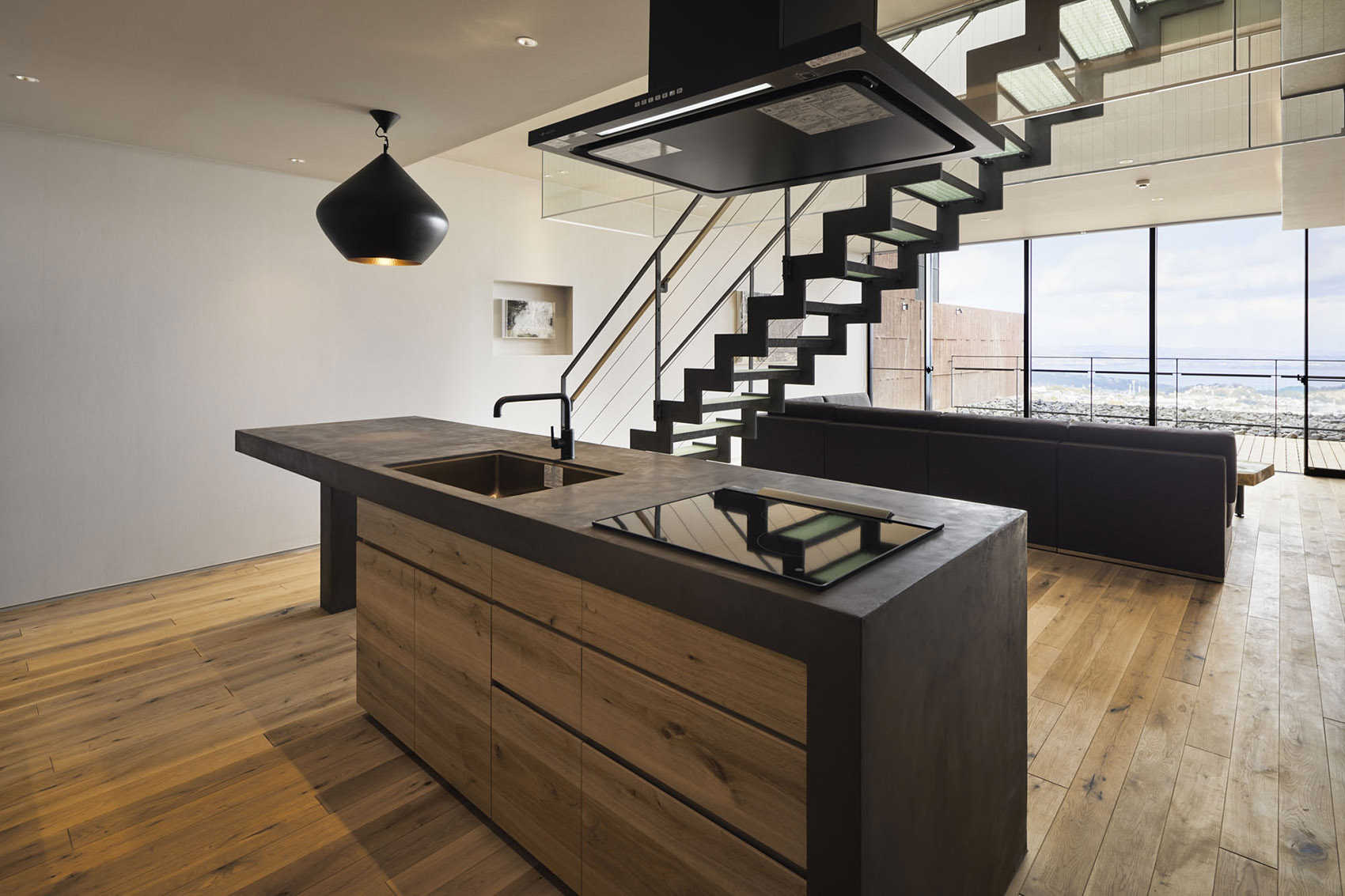
▼复式套房楼梯,staircase of the duplex suite © Nacasa & Partners Inc.
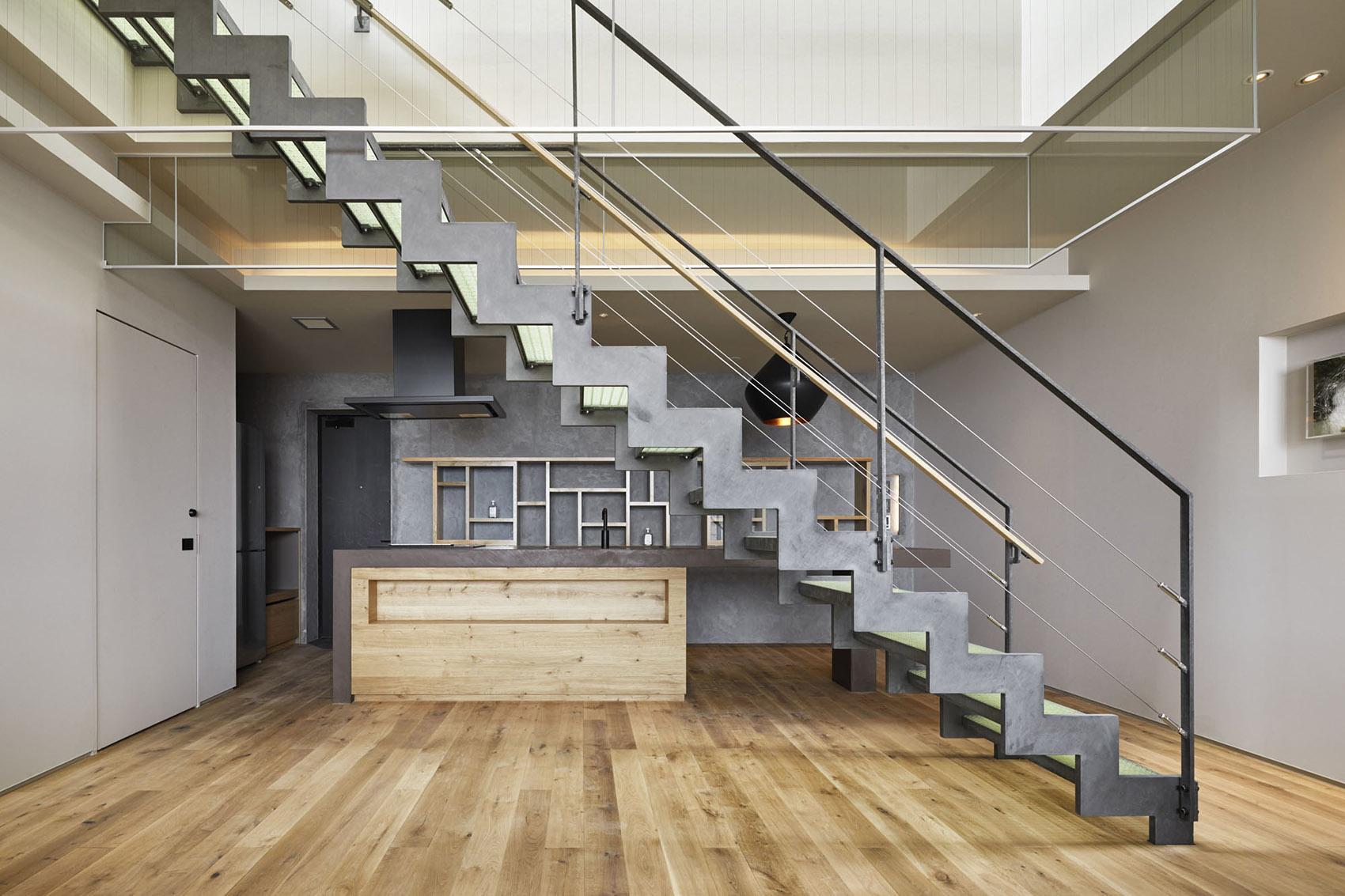

▼楼梯与楼廊细部,details of the staircase and hallway © Nacasa & Partners Inc.


▼复式套房卧室,bedroom of the duplex suite © Nacasa & Partners Inc.

▼浴室,bathroom © Nacasa & Partners Inc.

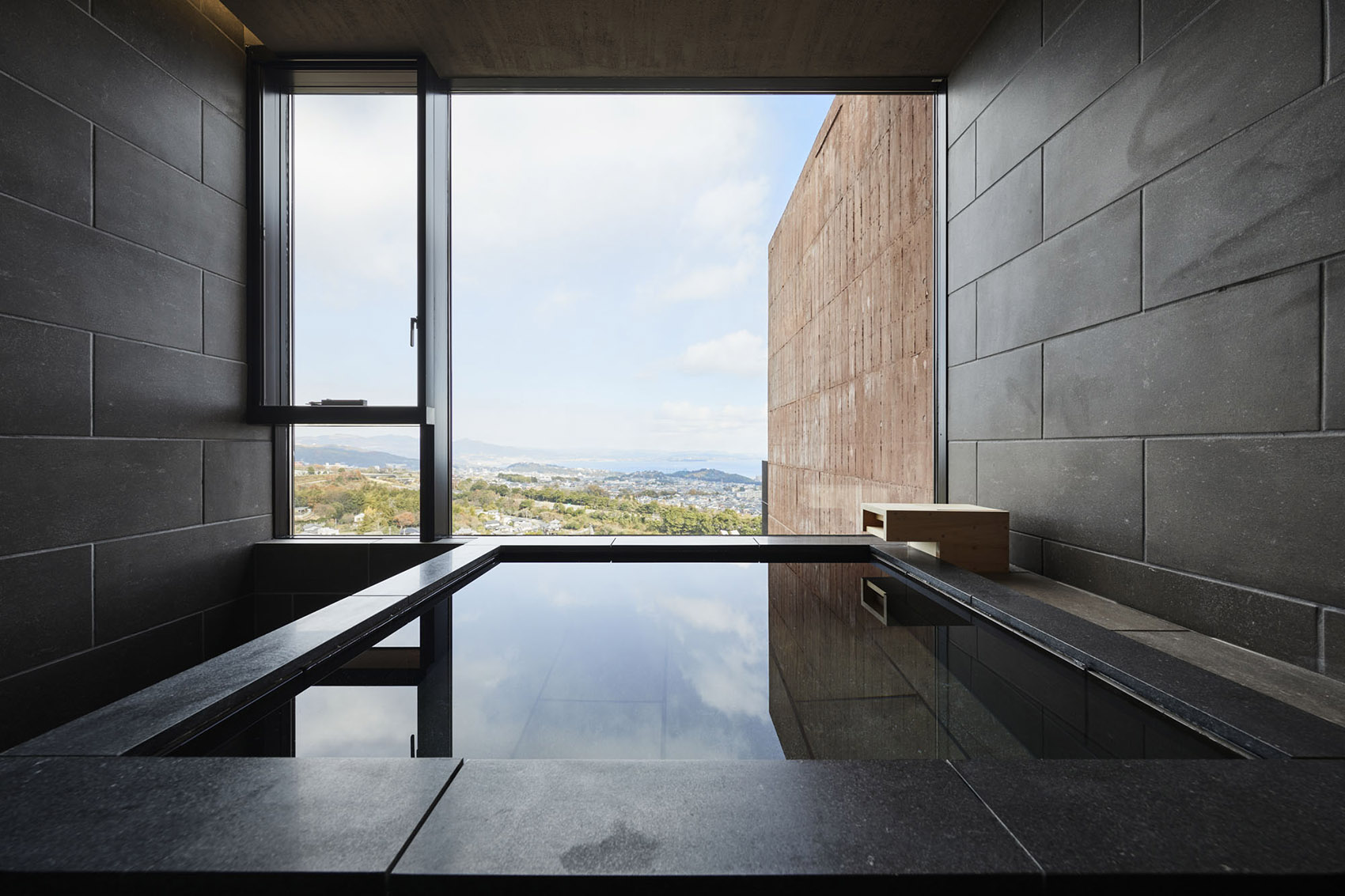
▼阳台,balcony © Nacasa & Partners Inc.
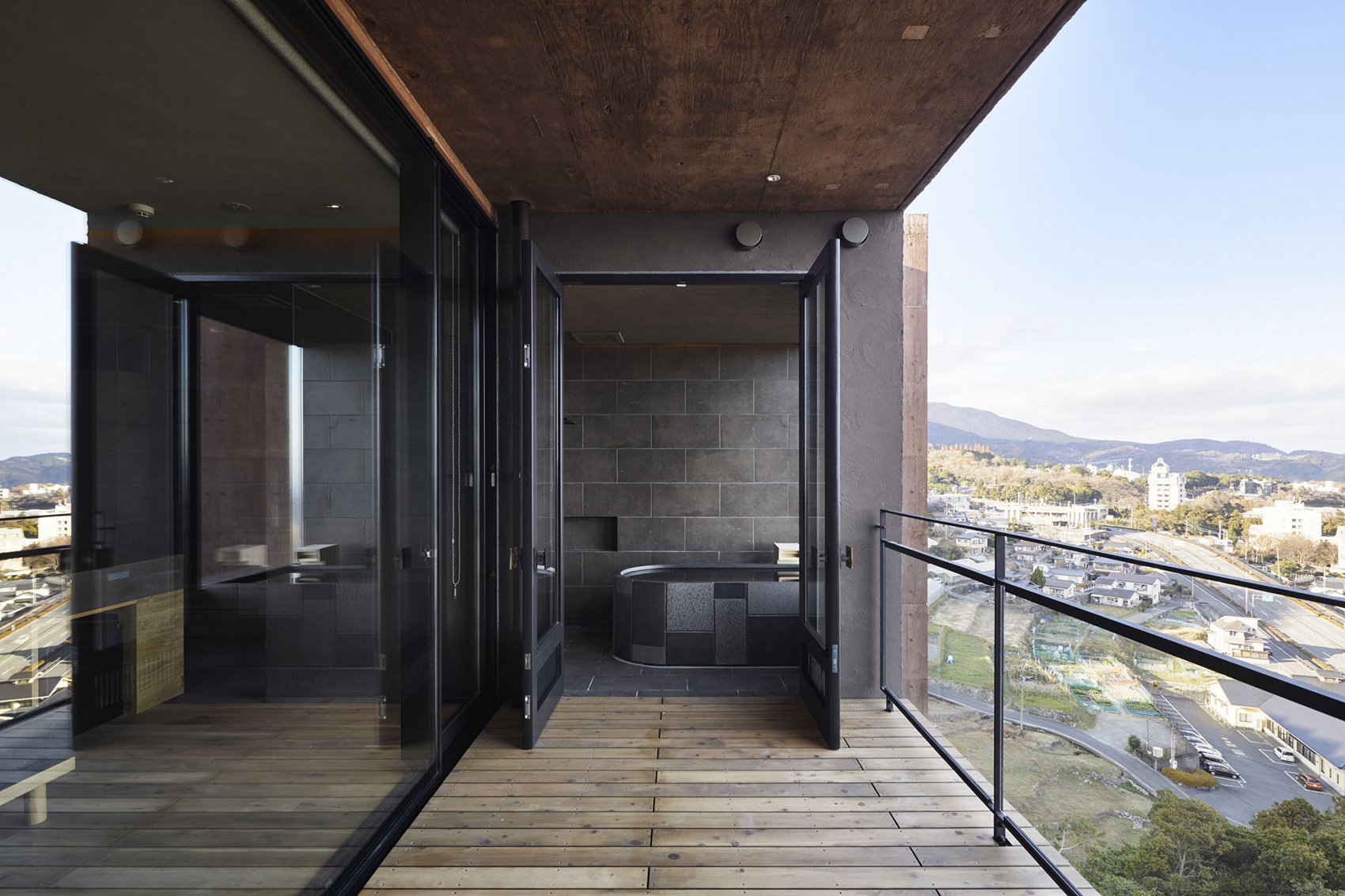
▼普通客房,general guest room © Nacasa & Partners Inc.

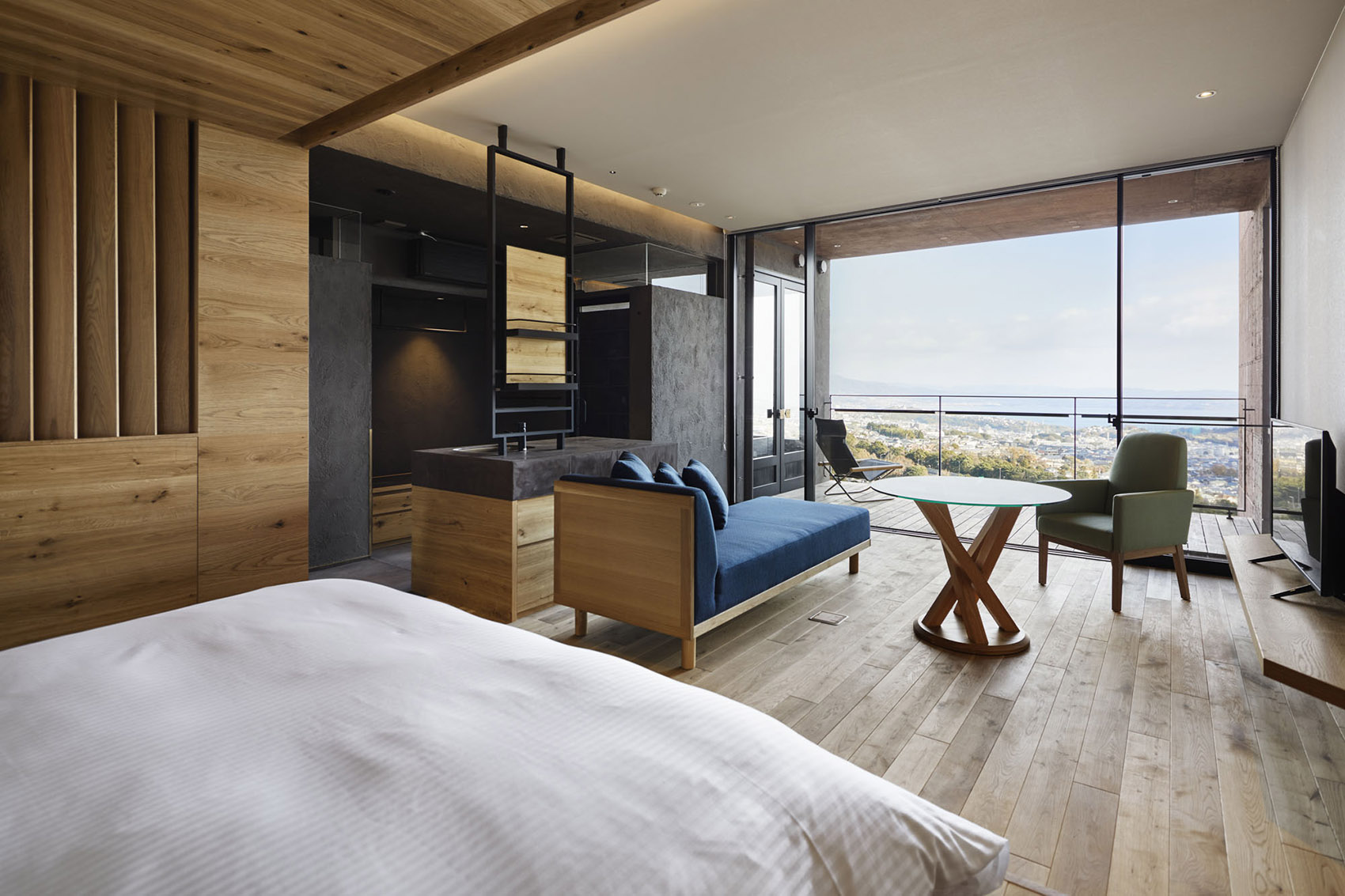
▼普通双人间客房,general double guest room © Nacasa & Partners Inc.

▼多功能活动室,Multifunctional activity room © Nacasa & Partners Inc.

The flocking walls were made by placing concrete toned with iron oxide in a special formwork made of locally produced cedar woods. The color tone was adjusted by referring to the strata and stones of the land. Phenomena such as efflorescence, unevenness, and chipping of joints was positively accepted as the expression. Materials such as woods and plasterer were chosen from as near as possible area. The metal was finished by reacting with the hot spring. By devising how to make architecture and selecting materials, we tried to create value that could not be experienced without going there.
▼夜景鸟瞰,aerial night view © Nacasa & Partners Inc.

▼夜景,night view © Nacasa & Partners Inc.

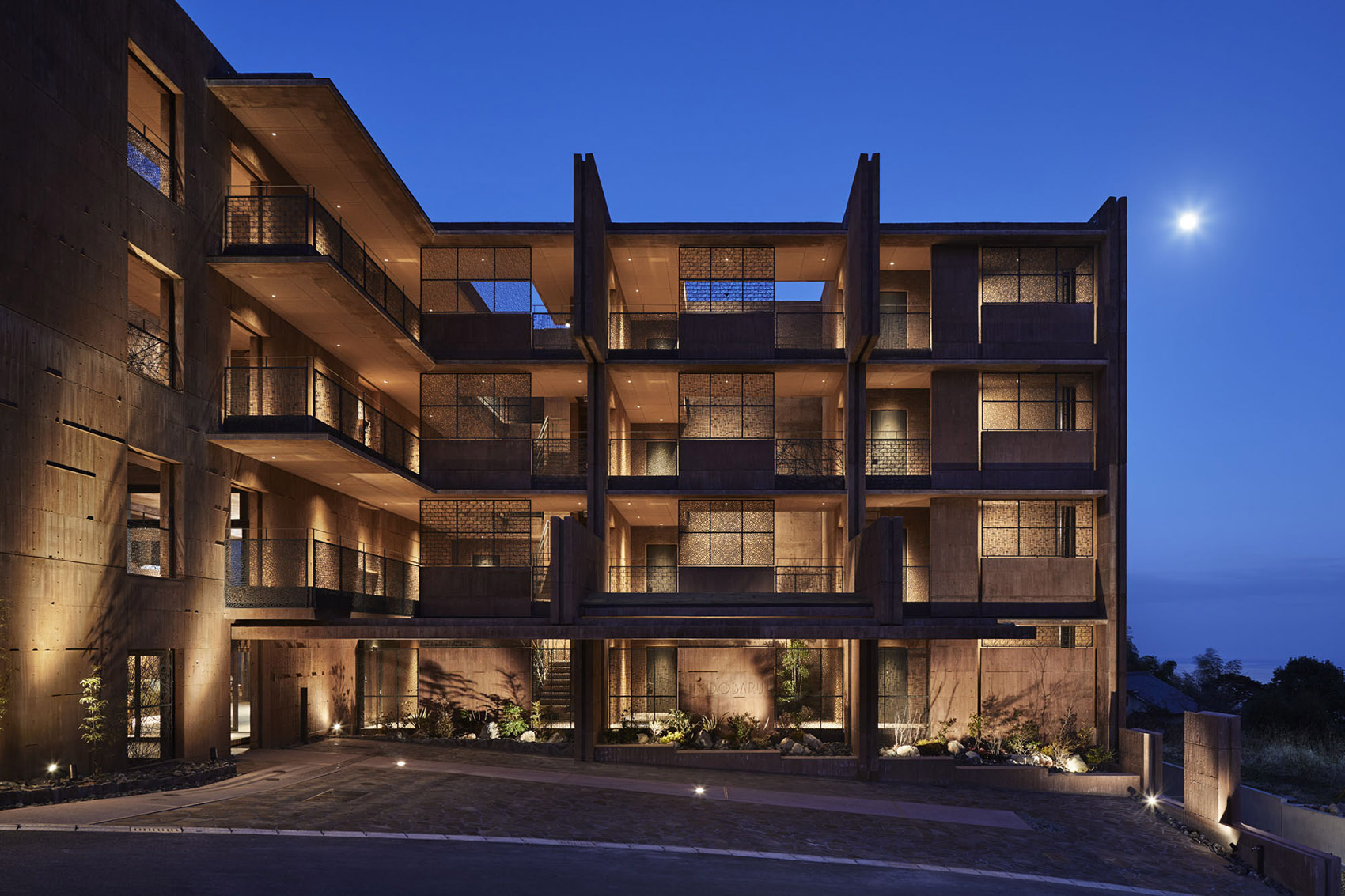
▼入口细部夜景,night view of the entrance © Nacasa & Partners Inc.
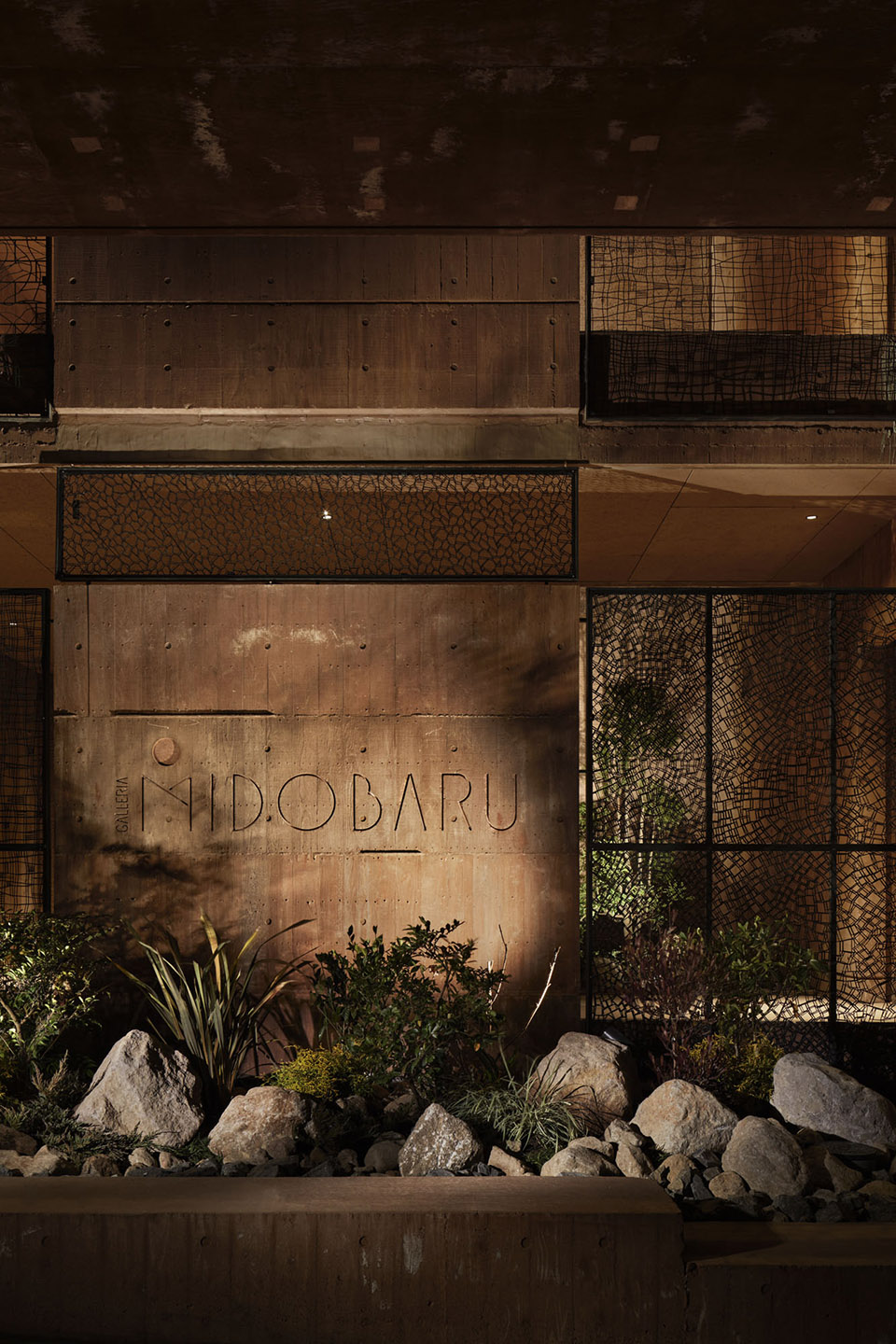
▼一层平面图,plan 1F © DABURA.m Inc.

▼二层平面图,plan 2F © DABURA.m Inc.

▼三层平面图,plan 3F © DABURA.m Inc.
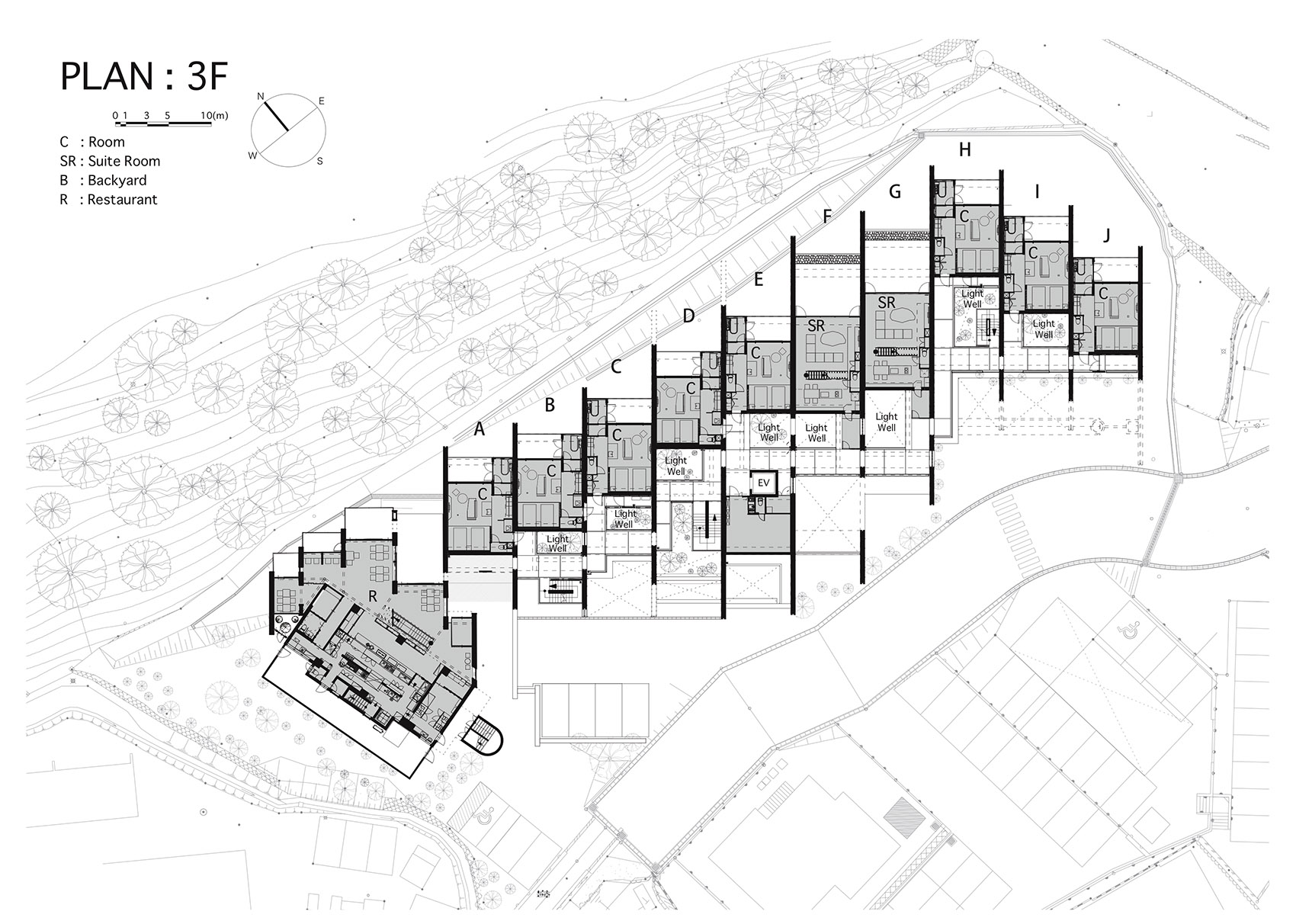
▼四层平面图,plan 4F © DABURA.m Inc.
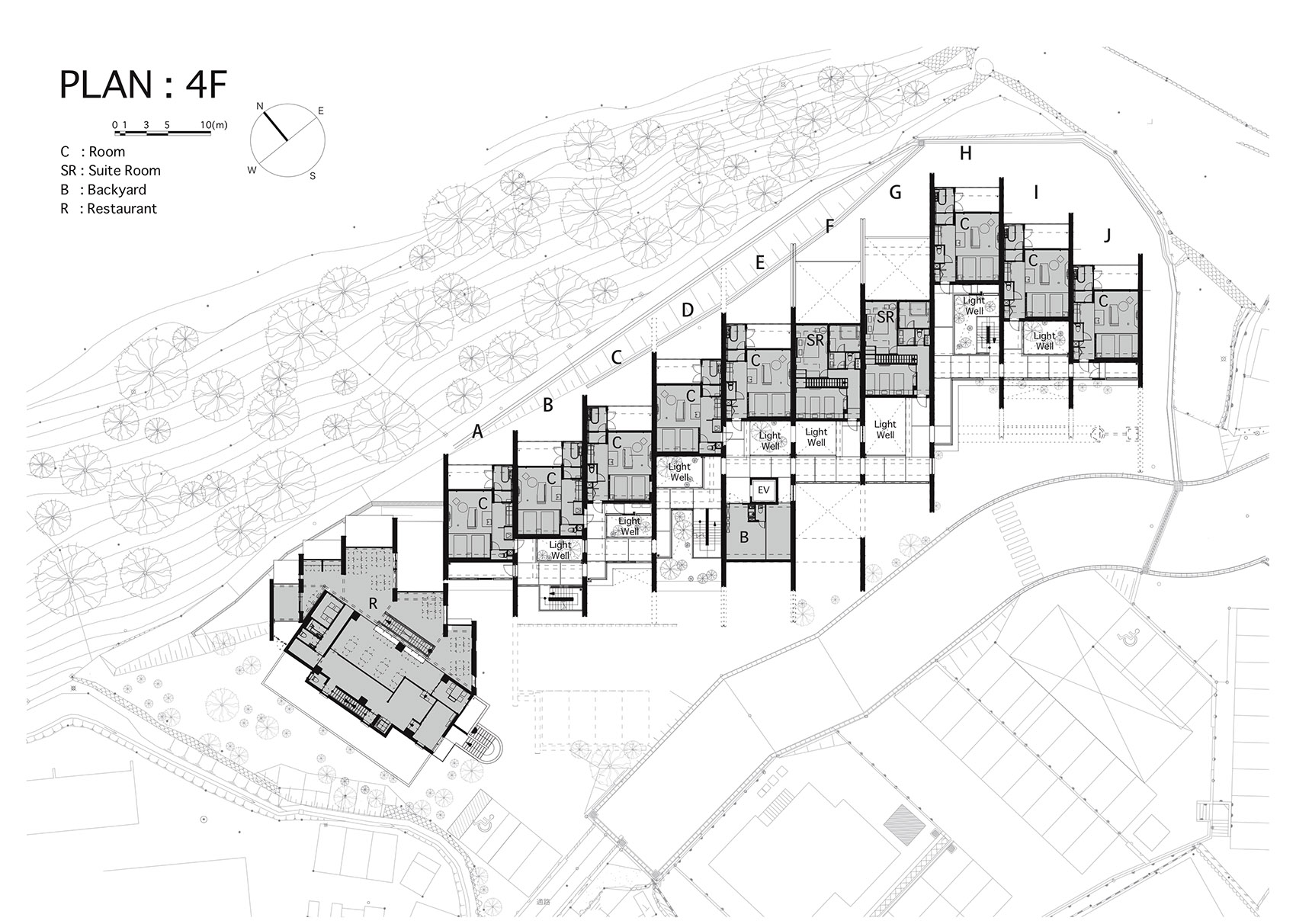
▼五层平面图,plan 5F © DABURA.m Inc.
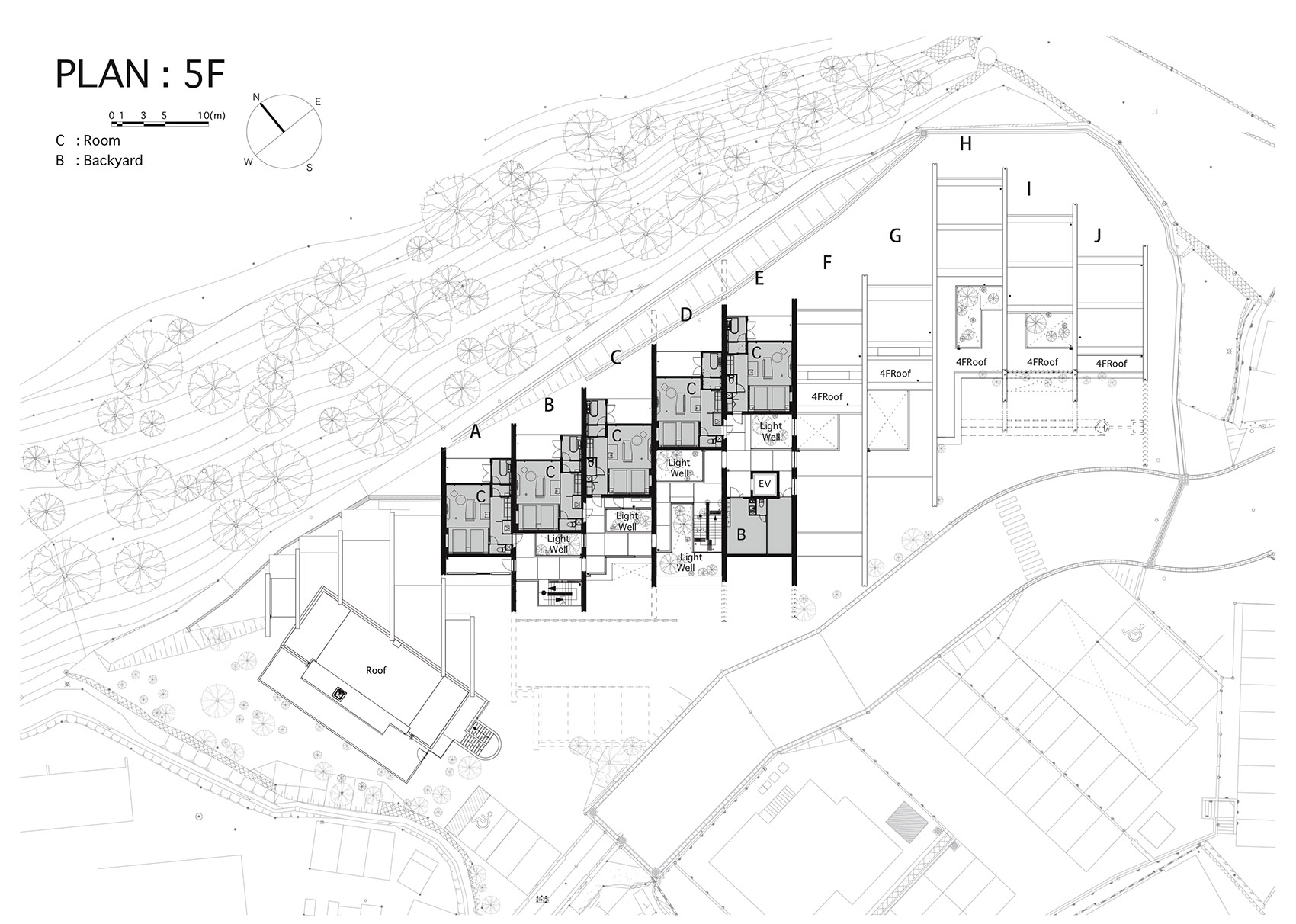
▼剖面图,section © DABURA.m Inc.

Name: GALLERIA MIDOBARU Purpose: Hotel Auxiliary facilities: Restraint “THE PEAK”, Cafe and Bar “HOT SPRING BAR”, Multipurpose Studio Address : 6 Horita, Beppu City, Oita, Japan Guest Rooms : 35 rooms Twin: 12 rooms (47.43m2+ Terrace 10.26m2) Deluxe Twin: 16 rooms (47.43m2+ Terrace 10.26m2) GALLERIA King: 5 rooms (47.43m2+ Terrace 10.26m2) Two Bed Room Suite: 2 rooms (116.88m2+ Terrace 29.55m2, Duplex Type) Site area : 4856.94m2 Total floor area : 2991.02m2 Completion date : 2020. Dec. 9 Client : Sekiya Resort Group Lead Architect : Takafumi Mitsuura Art Curation : BEPPU PROJECT Sign Design and Public Furniture : GRAF Concept : Site-specific hotel that enhances experience value Artists : Mika Aoki, Inne Izumi, Shinji Ohmaki, Olectronica, Masamitsu Katsu, Toshie Kusamoto, Michihiro Shimabuku, Hiraku Suzuki, Akiko Nakayama, Sohei Nishino, Nerhol,[目]Mé Photo credit:Nacasa & Partners Inc.

